military-industrial complex
description: concept in military and political science
463 results
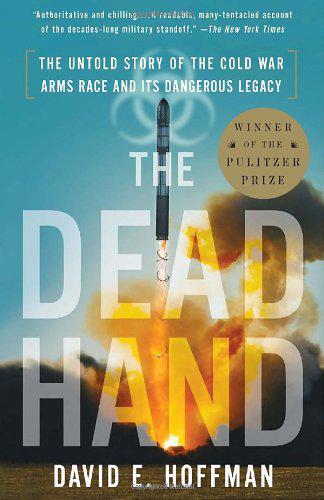
The Dead Hand: The Untold Story of the Cold War Arms Race and Its Dangerous Legacy
by
David Hoffman
Published 1 Jan 2009
"Over the previous five-year plans, military spending had been growing twice as fast as national income. This Moloch was devouring everything that hard labor and strain produced ... What made matters worse was the fact that it was impossible to analyze the problem. All the figures related to the military-industrial complex were classified. Even Politburo members didn't have access to them." 13 On the staff of the Central Committee, one man knew the secret inner workings of the military-industrial complex. Vitaly Katayev had the appearance of a thoughtful scientist or professor, with a long, angular face and wavy hair brushed straight back. As a teenager he loved to design model airplanes and ships.
…
There was a "permanent gap," he said, between the drawing boards and the factories. This was the underside of the Soviet military machine. Katayev's notes show that the military-industrial complex was indeed as large as Gorbachev feared. In 1985, Katayev estimated, defense took up 20 percent of the Soviet economy.16 Of the 135 million adults working in the Soviet Union, Katayev said, 10.4 million worked directly in the military-industrial complex at 1,770 enterprises. Nine ministries served the military, although in a clumsy effort to mask its purpose, the nuclear ministry was given the name "Ministry of Medium Machine Building," and others were similarly disguised.
…
Defense factories were called upon to make the more advanced civilian products, too, including 100 percent of all Soviet televisions, tape recorders, movie and still cameras and sewing machines. 17 Taking into account all the ways the Soviet military-industrial complex functioned and all the raw materials it consumed and all the tentacles that spread into civilian life, the true size of the defense burden on the economy may well have been even greater than Katayev estimated. Gorbachev would need deep reserves of strength and cunning to challenge this leviathan. At one Politburo meeting, he lamented, "This country produced more tanks than people." The military-industrial complex was its own army of vested interests: generals and officers in the services, designers and builders of weapons, ministers and planners in the government, propaganda organs, and party bosses everywhere, all united by the need, unquestioned, to meet the invisible Cold War threat.

Marx at the Arcade: Consoles, Controllers, and Class Struggle
by
Jamie Woodcock
Published 17 Jun 2019
They were early curiosities and experiments, technical demonstrations rather than something fun to play around with. The technological basis for videogames was laid by the US military. As Dyer-Witheford and de Peuter have argued, “They originated in the U.S. military-industrial complex, the nuclear-armed core of capital’s global domination, to which they remain umbilically connected.”26 The military-industrial complex was enlisting the “first draft of immaterial labor, the highly educated techno-scientific personnel recruited to prepare, directly or indirectly, for nuclear war with the Soviet Union.” This preparation meant establishing academic research centers with military funding and developing “the massive defense-contracting system, in which the giants of U.S. corporate power, including information and telecommunication companies,” including IBM, “prepared for doomsday.”27 The expertise put to work in academic, military, and corporate laboratories was also applied to early games.
…
This would later involve Sony, a much larger Japanese company, entering the stage too.57 The rise of Japanese videogames is also linked to the military-industrial complex. The irony is that Japan, defeated by the military and nuclear forces of the US, later “excelled in adopting the victors’ techno-cultural innovations.”58 The state-led policies in Japan pushed for a postindustrial reconstruction after the Second World War, laying the technical basis for the videogames industry. (This is analogous, in part, to the later experience of South Korea with online gaming.)59 While the military-industrial complex remained a key part of Japan’s development of videogames, so too was there a subversive element drawn into the industry.
…
Douglas created a noughts and crosses game (more commonly known as “tic-tac-toe” in the US) on Cambridge’s EDSAC computer for research. Two years later, at the Los Alamos laboratory (infamous for the Manhattan Project and the atomic bomb), programmers in their spare time developed the first blackjack game for the IBM 701.28 These early videogame links to the military-industrial complex were further solidified in 1955 with the introduction of the military war game Hutspiel, which simulated a war between NATO and the Soviet Union, represented, respectively, by blue and red characters. The similarities between these simulations and later videogames was riffed on in the 1983 film WarGames, in which Matthew Broderick’s character hacks into a military supercomputer.
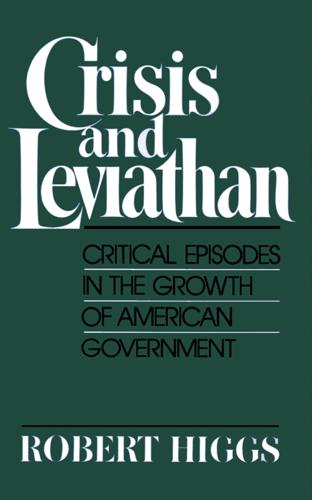
Crisis and Leviathan: Critical Episodes in the Growth of American Government
by
Robert Higgs
and
Arthur A. Ekirch, Jr.
Published 15 Jan 1987
Graham, Jr., Toward a Planned Society: From Roosevelt to Nixon (New York: Oxford University Press, 1976), esp. pp. 79-82. 2. The literature on the military-industrial complex is voluminous. See, for example, James L. Clayton, ed., The Economic Impact of the Cold U'tzr: Sources and Readings (New York: Harcourt, Brace & World, 1970); Steven Rosen, ed., Testing the Theory of the Military-Industrial Complex (Lexington, Mass.: Lexington Books, 1973); Paul A. C. Koistinen, The Military-Industrial Complex: A Historical Perspective (New York: Praeger, 1980); Jacques S. Gansler, The Defense Industry (Cambridge, Mass.: MIT Press, 1980); J.
…
The ensuing "war within a war," the scene of "continuous conflict, acrimony, and bureaucratic infighting as civilian and military agencies clashed in the forwarding of their opposing interests," affords many lessons for students of public administration and politics. 37 My focus, however, is on another aspect of this experience. The great military-industrial mobilization of 1940-1945 created a new institution (or set of connected institutions), the military-industrial complex, pregnant with implications for the character of the postwar political economy. The origins and nature of that complex in World War II are at issue here. The military-industrial complex denotes the institutionalized arrangements whereby the military procurement authorities, certain large corporations, and certain executive and legislative officials of the federal government cooperate in an enormous, ongoing program to develop, produce, and deploy weapons and related products.
…
"Labor for the Picking: The New Deal in the South." Journal of -Economic History 43 (Dec. 1983). Wilbur, Ray Layman, and Arthur Mastick Hyde. The Hoover Policies. New York: Charles Scribner's Sons, 1937. WORLD WAR II Beaumont, Roger A. "Quantum Increase: The MIC [military-industrial complex] in the Second World War." In U'tlr, Business, and American Society: Historical Perspectives on the Military-Industrial Complex, ed, Benjamin Franklin Cooling. Port Washington, N.Y.: Kennikat Press, 1977. Blum, Albert A. "Birth and Death of the M-Day Plan." In American Civil-Military Decisions, ed. Harold Stein. Birmingham: University of Alabama Press, 1962.

The New Rules of War: Victory in the Age of Durable Disorder
by
Sean McFate
Published 22 Jan 2019
Ultimately, the deep state of the military-industrial complex encourages the militarization of foreign policy, forming a challenge to world peace. A favorite tactic of deep state doubters is to deride the idea as fringe kooky, but Eisenhower’s credibility is beyond reproach. He was a two-term president, a retired five-star general, and a hero of World War II—he had unparalleled authority in the matter. The language he used to describe the military-industrial complex mirrors how we think about deep states today. “We must guard against the acquisition of unwarranted influence . . . by the military-industrial complex,” he said, adding, “The potential for the disastrous rise of misplaced power exists and will persist.”17 For his sins, the military, with congressional approval, renamed its top war college for arms procurement after him.18 At least the deep state has a sense of humor.
…
The plutocrats met their match with the new president, Theodore Roosevelt, who was the first White House occupant to say it aloud: “Behind the ostensible government sits enthroned an invisible government, owing no allegiance and acknowledging no responsibility to the people.”16 The secret marriage of corporate and political agendas birthing an American deep state may shock some, but it shouldn’t. President Eisenhower famously warned the nation against the corrupting influence of what he termed the “military-industrial complex” in his farewell address. The military-industrial complex is a deep state alliance among the military, the arms industry that supplies it, and Congress, which oversees it. It’s an infinity loop fueled by corporate contributions to politicians, congressional approval for military spending, lobbying to support bureaucracies, and pliant government oversight of the industry.
…
“I’m telling you right now,” Work said, “ten years from now if the first person through a breach isn’t a friggin’ robot, shame on us.” 11 The colonel was sharing his iPhone with his neighbors, who were equally impressed. The presentation ended with a shout-out to the defense industry, whose representatives nearly stood up and whooped. The Third Offset Strategy bestows a multibillion-dollar shopping list to the military-industrial complex. To push matters along, the Department of Defense set aside $18 billion as seed money.12 It also took the unprecedented step of establishing its own venture capital fund in California’s Silicon Valley, courtesy of US taxpayers. It need not be profitable, just supply the warfighter with gee-whiz technology.

The Code: Silicon Valley and the Remaking of America
by
Margaret O'Mara
Published 8 Jul 2019
Academic scientists, not politicians and bureaucrats, spurred the funding for and shaped the design of more-powerful computers, breakthroughs in artificial intelligence, and the Internet—a marvelous communication network of many nodes but no single command center. Government largesse extended beyond the military-industrial complex, too. Deregulation and tech-friendly tax policies, lobbied for and especially benefiting computer hardware and software companies and their investors, helped the Valley grow large; ongoing public investments in research and education trained and subsidized the next generation of high-tech innovators.
…
Supersonic planes demanded sophisticated electronics to help their human pilots, because “the airplanes simply blast through space faster than the human mind can think,” as one aerospace executive put it. By 1955, thanks to the money being shoveled in the electronics industry’s direction, it had revenue of $8 billion a year—the third largest in the United States, behind only autos and steel.20 THE YOUNG AND TECHNICAL The military-industrial complex ran on people power too. Ramping up R&D required thousands of physicists, engineers, mathematicians, and chemists with cutting-edge skills and a Terman-esque work ethic. Need far outpaced supply. Altogether, the nation’s universities had produced only 416 physicists and 378 mathematicians between 1946 and 1948.
…
The university was also quite young—in business for barely sixty years by the start of the Korean War—and had relatively few traditions or entrenched practices that might resist the machinations of an engineer-administrator determined to turn Stanford into the perfect laboratory for the military-industrial complex. Such license allowed Terman to not only build up basic research capacity but also move his university into even more applied work, bringing together star faculty and lab resources into the new Stanford Electronics Laboratories. The facility quickly became one of the military’s most important hubs of reconnaissance and radar R&D.
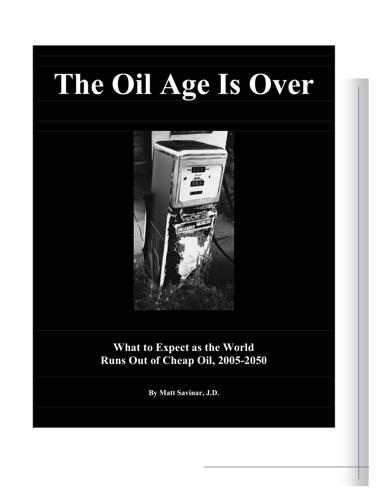
The Oil Age Is Over: What to Expect as the World Runs Out of Cheap Oil, 2005-2050
by
Matt Savinar
Published 2 Jan 2004
Cheney's house is equipped with state-of-the-art energy-conservation devices installed by Al Gore. Think they know something we don't? 104. How am I supposed to help stop the military-industrial complex that seems to have taken over the world? Are you ready to be a truly revolutionary American and put down your wallet? The military-industrial complex has taken over because we've given it our money, mostly for useless items that we don't need. Limit your consumer purchasing as much as you can and you will do more to slow down, and perhaps stop, the military-industrial complex than you will ever do by attending a peace march. Marching for peace does nothing to address our situation.
…
What are some steps that I can personally take in the next few days to begin addressing this situation?............................................................................................ 105 103. Would it be a good time to look into buying a solar-powered home, if I have the financial resource to do so? ........................................................................................ 106 104. How am I supposed to help stop the military-industrial complex that seems to have taken over the world?.................................................................................................. 106 105. How am I supposed to maintain a positive mental attitude now that I know industrial civilization is about to collapse? How should I prepare emotionally?
…
Corporations have been enthroned and an era of corruption in high places will follow, and the money power of the county will endeavor to prolong its reign by working upon the prejudices of the people until all wealth is aggregated in a few hands and the Republic is destroyed.” -Abraham Lincoln (1864) “Fascism should more properly be called corporatism because it is the merger of state and corporate power.” -Benito Mussolini “Beware of the military-industrial complex.” -Dwight D. Eisenhower 72 The Oil Age is Over 71. Does Peak Oil have anything to do with September 11th and the war in Afghanistan? The standard story regarding 9-11 is that Osama Bin Laden and his followers were angry at the US because we have military bases located near Muslim holy sites in Saudi Arabia.

The Contrarian: Peter Thiel and Silicon Valley's Pursuit of Power
by
Max Chafkin
Published 14 Sep 2021
“We owe it all to the hippies,” as the futurist (and countercultural activist) Stewart Brand famously put it, positing that the “real legacy of the sixties generation is the computer revolution.” But Silicon Valley—the real Silicon Valley—had never been about subverting the military-industrial complex. Silicon Valley, in its purest form, was the military-industrial complex. Its founders weren’t dropping LSD. They were proud squares, with politics that were closer to those of David Starr Jordan than to the radicals of Stewart Brand’s imagination. The man who’d coined the phrase “traitorous eight” (and the boss whom those eight men rebelled against) was William Shockley, a physicist who worked on radar for B-29 bombers during World War II, then invented a new kind of transistor, and then, after closing his company and taking a job as a professor of electrical engineering at Stanford, picked up Jordan’s mantle to become the campus eugenicist.
…
. | Power (Social sciences) Classification: LCC HG172.T46 C43 2021 (print) | LCC HG172.T46 (ebook) |DDC 332.092 [B]—dc23 LC record available at https://lccn.loc.gov/2021007920 LC ebook record available at https://lccn.loc.gov/2021007921 designed by meighan cavanaugh, adapted for ebook by shayan saalabi pid_prh_5.8.0_c0_r1 CONTENTS Introduction 1. Fuck You, World 2. A Strange, Strange Boy 3. Hope You Die 4. World Domination Index 5. Heinous Activity 6. Gray Areas 7. Hedging 8. Inception 9. R.I.P. Good Times 10. The New Military-Industrial Complex 11. The Absolute Taboo 12. Building the Base 13. Public Intellectual, Private Reactionary 14. Backup Plans 15. Out for Trump 16. The Thiel Theory of Government 17. Deportation Force 18. Evil List 19. To the Mat 20. Back to the Future Epilogue: You Will Live Forever Photographs Acknowledgments Notes Image Credits Index About the Author INTRODUCTION It may seem hard to remember, but there was a time when the world seemed ready to put Silicon Valley in charge of everything.
…
He didn’t just want to break into government contracting; he wanted to take it over. He didn’t just want to persuade college administrators to root out campus political correctness; he wanted to turn fears about political correctness into an issue that could swing an American election. 10 THE NEW MILITARY-INDUSTRIAL COMPLEX Most histories of the American tech industry begin in September 1957, at a laboratory in Mountain View, California, when a group of the country’s best young engineers at Shockley Semiconductor announced that they had decided to quit. The Traitorous Eight, as they would become known, would go on to start Fairchild Semiconductor.
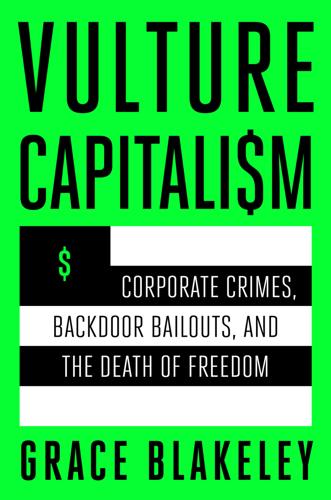
Vulture Capitalism: Corporate Crimes, Backdoor Bailouts, and the Death of Freedom
by
Grace Blakeley
Published 11 Mar 2024
Ultimately, Boeing ended up issuing $25 billion in new bonds, making its bond sale the largest of 2020 and the sixth largest on record at the time.60 The now-useless $17 billion slush fund created for Boeing and other businesses by the Treasury was hastily distributed to a wide assortment of other questionable companies, bringing them into the orbit of the US’s already sizable military-industrial complex.61 These included a company hoping to develop facial recognition software to track immigrants; a firm that relies on minimum-wage prison labor to make products for the military; and an “experimental spaceflight technology firm” already backed by wealthy venture capitalists.62 How were these decisions made?
…
The failure of Fordlândia may have been a personal disappointment for Ford, but it didn’t dent the Ford Motor Company’s growth in subsequent years, growth that rested upon the company’s close links with the US state. By the Second World War, Ford had become one of the largest and most powerful corporations in the world—and an integral part of the US military-industrial complex. By 1944, Ford was making 50 percent of all B-24 planes produced in the US, and by 1945, 70 percent, many of which were constructed at a new plant built by the company in Willow Run, Michigan.31 When the factory was constructed in 1941 it was thought to be the largest war factory in the world; and the US government had contributed $200 million to its construction.32 Ford was also, of course, helping the other side.
…
In the prewar period of “laissez-faire” capitalism, Ford was able to exercise its corporate sovereignty largely unrestrained by competition or organized labor and supported by the state—at home and abroad. During the war, the line between Ford and the states in which it operated—particularly the US and Germany—became even blurrier, as the company was absorbed into the Allied and Axis military-industrial complexes, guaranteeing significant profits. But, as I’ll show in the next section, after the war Ford was forced to confront a much more powerful labor movement and a state that encouraged the company to cooperate with labor unions. The leadership of Ford executives was perennially frustrated by the limitations this placed on the company’s formerly much less constrained sovereignty.

@War: The Rise of the Military-Internet Complex
by
Shane Harris
Published 14 Sep 2014
When the employee opened such an e-mail, it installed a digital backdoor and allowed the Chinese to monitor every keystroke the employee typed, every website visited, every file downloaded, created, or sent. Their networks had been infiltrated. Their computers compromised and monitored. America’s military-industrial complex had, in the language of hackers, been owned. And the spies were still inside these companies’ networks, mining for secrets and eavesdropping on employees’ communications. Maybe they were monitoring the executives’ private e-mails right now. “A lot of people went into that room with dark hair, and when they came out, it was white,” says James Lewis, a prominent cyber security expert and a fellow at the Center for Strategic and International Studies, a think tank in Washington, who knows the details of the meeting.
…
The government cannot possibly protect or patrol all of them. But most of the world’s communications travel through equipment located in the United States. The government has a privileged position to exploit those networks, and an urgent need to protect them. To those ends, a military-Internet complex has emerged. Like the military-industrial complex before it, this new cooperative includes the makers of tanks and airplanes, missiles and satellites. But it includes tech giants, financial institutions, and communications companies as well. The United States has enlisted, persuaded, cajoled, and in some cases compelled companies into helping it fend off foreign and domestic foes who have probed the American electrical grid and looked for other weaknesses in critical infrastructures.
…
Indeed, his embrace of the historic importance of intelligence to warfare underscored his desire to protect the NSA and keep its mission intact. The timing of Obama’s speech was fitting, if unintentionally so. On January 17, 1961, exactly fifty-three years earlier, President Dwight Eisenhower had warned in his farewell address to the nation of a “military industrial complex,” whose “total influence—economic, political, even spiritual—is felt in every city, every state house, every office of the federal government.” Eisenhower said the military of the day bore little resemblance to the one in which he served during World War II or that his predecessors in the White House had commanded.
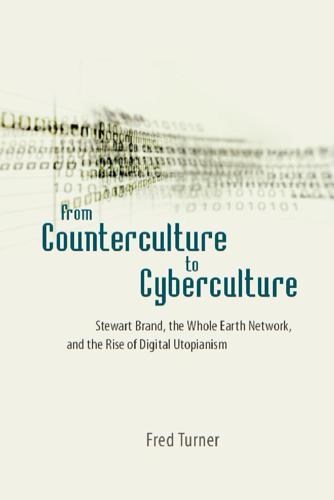
From Counterculture to Cyberculture: Stewart Brand, the Whole Earth Network, and the Rise of Digital Utopianism
by
Fred Turner
Published 31 Aug 2006
The 1960s seem to explode onto the scene in a Technicolor swirl of personal exploration and political protest, much of it aimed at bringing down the cold war military-industrial bureaucracy. Those who accept this version of events [ 4 ] Introduction tend to account for the persistence of the military-industrial complex today, and for the continuing growth of corporate capitalism and consumer culture as well, by arguing that the authentically revolutionary ideals of the generation of 1968 were somehow co-opted by the forces they opposed. There is some truth to this story. Yet, as it has hardened into legend, this version of the past has obscured the fact the same military-industrial research world that brought forth nuclear weapons—and computers—also gave rise to a free-wheeling, interdisciplinary, and highly entrepreneurial style of work.
…
Finally, if the bureaucracies of industry and government demanded that men and women become psychologically fragmented specialists, the technology-induced experience of togetherness would allow them to become both self-sufficient and whole once again. For this wing of the counterculture, the technological and intellectual output of American research culture held enormous appeal. Although they rejected the military-industrial complex as a whole, as well as the political process that brought it into being, hippies from Manhattan to HaightAshbury read Norbert Wiener, Buckminster Fuller, and Marshall McLuhan. Introduction [ 5 ] Through their writings, young Americans encountered a cybernetic vision of the world, one in which material reality could be imagined as an information system.
…
In that sense, both he and his students agreed that the university was an information machine. Second, he suggested that this machine had a particular role to play in the ongoing cold war. “Intellect has . . . become an instrument of national purpose,” he wrote, “a component part of the ‘military-industrial complex.’ . . . In the war of ideological worlds, a great deal depends on the use of this instrument.”4 For the students of the Free Speech Movement, the university’s role as knowledge producer could not be separated from its engagement with cold war politics. Moreover, the entanglement threatened many at a deeply personal level.
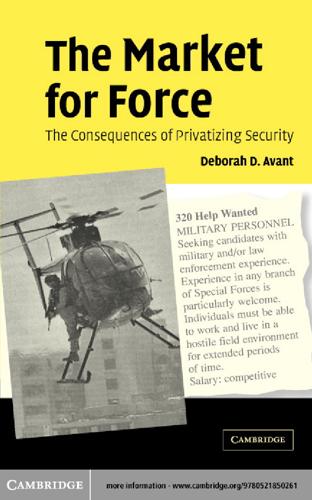
The Market for Force: The Consequences of Privatizing Security
by
Deborah D. Avant
Published 17 Oct 2010
Lashman, Paul, “Spicer’s Security Firm in Battle with DynCorp over $290m Deal,” Independent (4 July 2004). Lee, Dwight R., “Public Goods, Politics, and Two Cheers for the Military Industrial Complex,” in R. Higgs, ed., Arms, Politics, and the Economy: Historical and Contemporary Perspectives (New York: Homes and Meier, 1990). Legro, Jeffrey, Cooperation Under Fire (Ithaca: Cornell University Press, 1995). Lens, Sidney, The Military Industrial Complex (Philadelphia: Pilgrim Press, 1970). Leppard, David and Nicholas Rufford, “Arms to Africa: ‘no prosecution’” Sunday Times (17 May 98). Levi, Margaret Of Rule and Revenue (University of California Press, 1989).
…
The Pan-Am contract allowed the US to build airstrips on some bases in the British West Indies (acquired through the Lend-lease Program) without violating its neutral status, and the contract with TWA allowed the army to quickly train new pilots. After Pearl Harbor, President Roosevelt nationalized the airline industry. Ibid., pp. 454–55. Sidney Lens, The Military Industrial Complex (Philadelphia: Pilgrim Press, 1970), pp. 129–30; James Collins Jr., The Development and Training of the South Vietnamese Army, 1950–1972 (Washington, DC: Department of the Army, 1975), pp. 111–12; William Proxmire, Report From the Wasteland (New York: Praeger, 1970), pp. 9–10. State capacity and contracting for security 115 the US forces could not do for legal reasons or lack of resources.171 In the wake of Vietnam and the concerns it engendered over US intervention, the 1980s brought an increased focus on military training as a substitute to direct US involvement and private firms played a role here as well.
…
.: How a US Company Props up the House of Saud,” Progressive Vol. 60 (April 1996). Cynthia Arnson, Crossroads: Congress, the President, and Central America, 1976–1993 (University Park, PA: Pennsylvania State Press, 1993); Jonathan Feldman, Universities in the Business of Repression: the Academic–Military–Industrial Complex and Central America (Boston: South End Press, 1989). Most of these programs were in concert with established institutions, community colleges, technical institutes, or proprietary schools. Lawrence Hanser, Joyce Davidson, and Cathleen Stasz, Who Should Train? Substituting Civilian Provided Training for Military Training (Santa Monica: RAND, 1991), ch. 2. http://www.whitehouse.gov/omb/circulars/a076.pdf.

The Profiteers
by
Sally Denton
In the end, McCone’s legacy in both government and industry would be one of global saber rattling, covert intervention, war profiteering, and billion-dollar energy and defense contracts for his associate on the West Coast. McCone was “the greatest organizer in the United States,” Steve told Jack Anderson. CHAPTER TEN Weaving Spiders “In the councils of government, we must guard against the acquisition of unwarranted influence whether sought or unsought, by the military-industrial complex,” President Eisenhower had warned in his 1961 farewell address to the nation. “The potential for the disastrous rise of misplaced power exists and will persist.” He cautioned against the unhealthy alliance between defense contractors, the Pentagon, and their friends on Capitol Hill. “We must never let the weight of this combination endanger our liberties or democratic processes,” he continued.
…
Yet even Eisenhower could not have foreseen the near-total influence the defense industry would have over American foreign policy in the coming decades. Among the inherent ironies of Eisenhower’s grim prescience is how two of his associates—John McCone and Steve Bechtel—would become iconic figures of his envisioned military-industrial complex. “Rarely does a big Pentagon construction project surface that doesn’t have a role set aside especially for Bechtel,” a press account said of Bechtel’s twenty-first-century position as one of the country’s top defense contractors. Eisenhower had long worried about a post–World War II Japan turning toward China and Russia, sounding an alarm as early as 1954 that the shift of Indochina toward Communism would usher in such a tilt and declaring that the “possible consequences of the loss of Japan to the free world are just incalculable.”
…
Once described by President Hoover as “the greatest men’s party on earth” (a non sequitur apparently lost on Hoover, who was once described as “that swinging Bohemian . . . who was running for the presidency on a ‘dry’ platform”), the Grove is where emerging geopolitical trends are discussed in the privacy of 127 primitive camps. The most esteemed of these camps is Mandalay—named for the Kipling poem—where Steve Jr., like his father before him and his father’s partner, McCone, had been a member his entire adult life, following the patrilineal formation of the Grove. A “virtual personification of Eisenhower’s military-industrial complex,” author Joan Didion once pronounced Mandalay’s roster of members and guests. “Here, shielded from intrusion by a chain-link fence and the forces of the California Highway Patrol,” wrote Laton McCartney, “men like Justin W. Dart, William F. Buckley, George Bush, Edgar Kaiser, Jr., and Tom Watson could walk in the woods, skinny-dip in the Russian River, toast marshmallows over a fire, dress in drag for a ‘low jinks’ dramatic production, and, for a few days at least, hew to The Grove’s motto: ‘Spiders Weave Not Here.’ ” Its edict, taken from Shakespeare’s A Midsummer Night’s Dream, refers to a strict directive that prohibits Bohemians from explicitly conducting business at the Grove.

American Secession: The Looming Threat of a National Breakup
by
F. H. Buckley
Published 14 Jan 2020
How did America abandon its happy isolation to become the world’s dominant military power, with an empire of influence and strength of a kind never before seen in world history? There are three possible answers: interest-group corruption, a presidential constitution and the country’s bigness. The Military-Industrial Complex The first explanation is the form of interest-group corruption that President Eisenhower called the “military-industrial complex” in his Farewell Address.5 He warned against a defense industry that teams up with the military to shape policy decisions about spending and diplomacy. As if to evidence this, defense industry stock prices fell when Trump signaled that a meeting with North Korea’s President Kim had been a success.6 By itself, the influence of the defense industry doesn’t explain why we spend more per capita on our military than other countries.
…
As if to evidence this, defense industry stock prices fell when Trump signaled that a meeting with North Korea’s President Kim had been a success.6 By itself, the influence of the defense industry doesn’t explain why we spend more per capita on our military than other countries. Every First World country has a military-industrial complex, and if our defense industry is bigger, the reason might be that our military and our defense budget are bigger. We have a military budget of over $600 billion, and about half of this is awarded to defense contractors. Like bears to honey, lobbyists are drawn to that money. The size of our defense industry is arguably not just a consequence of a large military, since causation can also work in the other direction.
…
Eisenhower, Public Papers of the Presidents: Dwight D. Eisenhower, 1960–61 (Washington, D.C.: Office of the Federal Register, 1961), p. 1038. Gillian Rich, “Defense Stocks Fall As Trump Makes This Concession at North Korea Summit,” Investors Business Daily, June 12, 2018. William D. Hartung, “How the Military-Industrial Complex Preys on the Troops,” Common Dreams, October 10, 2017. Clay Dillow, “Defense Contractors Outgun Other Industries in Corporate PAC Donations,” Fortune, July 15, 2015. Charles W. Ostrom and Brian Job, “The President and the Political Use of Force,” American Political Science Review, vol. 80, no. 2 (June 1986): 541–66; Patrick James and John R.
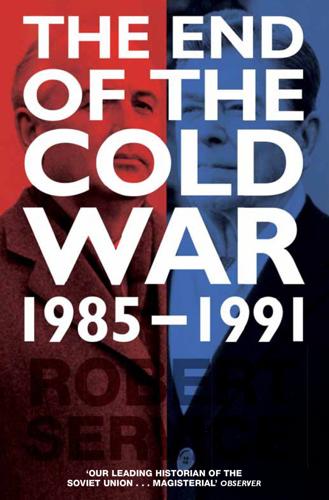
The End of the Cold War: 1985-1991
by
Robert Service
Published 7 Oct 2015
The result is an incomparable record of deliberations and decisions in Soviet foreign policy; it is a pleasure to bring them to attention for the first time.2 Vitali Kataev of the Party Secretariat’s Defence Department assiduously documented the discussions inside the Soviet leadership on arms reduction. This material is unusually helpful in elucidating the links between the politicians and the ‘military-industrial complex’. Anatoli Adamishin, who headed the First European Department in the Foreign Affairs Ministry before his appointment as Deputy Foreign Affairs Minister, kept a diary through the 1980s and beyond. His observations offer an enthralling and largely unexamined source on the USSR’s internal politics and international relations.
…
Only a fool in the Kremlin or the White House could expect to emerge unscathed from any conflict involving nuclear ballistic missiles. Yet no serious attempt was made to end the Cold War. At best, the leaders strove to lessen the dangers. Their policies were conditioned by influential lobbies that promoted the interests of national defence. For decades the Soviet ‘military-industrial complex’ had imposed its priorities on state economic policy, and the Western economic recession that arose from the rise in the price of oil in 1973 encouraged American administrations to issue contracts for improved military technology to stimulate recovery.1 The Cold War therefore seemed a permanent feature of global politics, and pacifists and anti-nuclear campaigners seemed entirely lacking in realism.
…
Reagan’s trust in Gorbachëv grew at the summits in Geneva, Reykjavik, Washington and Moscow in 1985–1988. Bush was Gorbachëv’s friend from the Malta summit of 1989 onwards. The leaders in Moscow and Washington had to find ways to carry their political establishments along with them. For years before the mid-1980s it had been argued that the American military-industrial complex had no interest in moves towards global peace. The heavy industry ministries and army high command in the USSR were similarly regarded as eternally attached to militarist objectives.9 Reagan and Bush were conscious of the scepticism among American conservatives about the agreements that they wanted to finalize with the Kremlin.

Servant Economy: Where America's Elite Is Sending the Middle Class
by
Jeff Faux
Published 16 May 2012
Cold War strategy, reminded the foreign policy elite of the importance of U.S. economic power: “One of the most significant lessons of our World War II experience was that the American economy, when it operates at a level approaching full efficiency, can provide enormous resources for purposes other than civilian consumption while simultaneously providing a high standard of living.”19. For Paul Nitze, the principal author, “purposes other than civilian consumption” meant the defense budget. This “military Keynesianism” was the perfect economic engine to fuel the ambitions of U.S. policy makers. Inasmuch as a large part of the budget of the military-industrial complex was secret, even from government auditors, decisions were hidden under a cloak of national security. Military spending was no less politically motivated than civilian spending was. Bases and contracts were allocated to keep congressional support for the big Department of Defense budget.
…
Like Kotkin and Slaughter, he believes that the U.S. tolerance for immigration will keep the country supplied with workers and low labor costs. For the nation-state, he says, per capita income is not what is important. He is indifferent to the fate of the U.S. standard of living. The key, he believes, is to keep total income high enough to support the military-industrial complex. Friedman too is not worried about China. Like the other happy-face forecasters, he believes that China is permanently hooked on U.S. markets and will always need us. For the next few decades, at least, China’s navy is too weak and its military electronics too primitive to undercut our strategic position in the Pacific.
…
In its 2011 final report to Congress after three years of study, the Commission on Wartime Contracting made a conservative estimate that the waste, fraud, and abuse in the Iraq and Afghanistan Wars might come to sixty billion dollars, but the commission didn’t know for sure because it never could get a good accounting. There is no stomach in the political parties for a knock-down, drag-out fight with the military-industrial complex. Defense contractors are important employers in every state and in a majority of congressional districts. They hire legions of lobbyists armed with generous campaign contributions. The military reaches into virtually every nook and cranny of American consciousness. The Pentagon is a major financier of universities through research grants and scholarships.

Beyond: Our Future in Space
by
Chris Impey
Published 12 Apr 2015
With too much government and military control, technologies can’t reach their full potential. President Dwight Eisenhower used his farewell address to warn of the dangers of the “military-industrial complex.”22 It’s ironic that this five-star general and two-term president—the quintessential Washington insider—issued such a clarion call against concentration of influence within and around the government. He said: “We must guard against the acquisition of unwarranted influence, whether sought or unsought, by the military-industrial complex. The potential for disastrous use of misplaced power exists, and will persist.”23 The analogy between access to space and access to information seems to break down.
…
Amateur Computerist, vol. 2, no. 2, and “A Brief History of the Internet” by B. M. Leiner et al. 2009, online at http://www.internetsociety.org/internet/what-internet/history-internet/brief-history-internet. 22. “Eisenhower’s Warning: The Military-Industrial Complex Forty Years Later” by W. D. Hartung 2001. World Policy Journal, vol. 18, no. 1. 23. Unwarranted Influence: Dwight D. Eisenhower and the Military-Industrial Complex by J. Ledbetter 2011. New Haven, CT: Yale University Press. 5: Meet the Entrepreneurs 1. “Private Space Exploration a Long and Thriving Tradition” by M. Burgan 2012. In Bloomberg View, online at http://www.bloombergview.com/articles/2012-07-18/private-space-exploration-a-long-and-thriving-tradition. 2.
…
As they orbited the Earth, many commented on the seamlessness of a planet where no political or cultural boundaries were visible. The iconic image of the fragile Earth hanging in the blackness of space—a blue marble—helped spur the environmental movement in the late 1960s. It is indeed ironic that a supreme feat of the military-industrial complex was embraced by counterculture activists.10 When Frank Sinatra performed “Fly Me to the Moon” on his TV show in 1969, he dedicated it to the astronauts who had “made the impossible possible.” The song’s jaunty melody perfectly captured the lightness of the people who had slipped the bonds of Earth.

The Politics Industry: How Political Innovation Can Break Partisan Gridlock and Save Our Democracy
by
Katherine M. Gehl
and
Michael E. Porter
Published 14 Sep 2020
In the councils of government, we must guard against the acquisition of unwarranted influence, whether sought or unsought, by the military-industrial complex. The potential for the disastrous rise of misplaced power exists and will persist.”39 What Eisenhower foresaw was a powerful alliance between America’s military and the defense industry. He believed that if this alliance were to be left unchecked, it would perpetuate a build-buy defense-spending cycle that would outpace actual need and create products designed to serve the goals of the complex over the goals of the “customer” (which should be our national security interests). The military-industrial complex would create a supply of defense goods for supply’s sake and, like many other modern American sectors, become too big and too powerful to fail.
…
The need to reform our political system to create healthier competition and better outcomes remains unchanged. A Thriving Political-Industrial Complex In January 1961, in his farewell address, President Dwight D.Eisenhower, a Republican, warned the nation of the threat and misplaced influence of what he called the military-industrial complex: “This conjunction of an immense military establishment and a large arms industry is new in the American experience. The total influence—economic, political, even spiritual—is felt in every city, every State house, every office of the Federal government. We recognize the imperative need for this development.
…
See campaign contributions; donors consultants, 7, 31, 38, 42, 187n44 Coons, Chris, 47 Crane, David, 176 cross-partisan approach electoral innovation and, 157–158 Nebraska’s legislative reform with, 164–165 Curry, James M., 193n63 customers average voters as, 27 citizens’ lack of power as, in 1870s, 103 duopoly control and, 23 Final-Five Voting and power of, 130 Five Forces framework on, 20 healthy competition and, 21 military-industrial complex and, 38 nonvoters and, 27 partisan takeover of Congress and, 60 party-primary voters as, 24–25 politics industry and power of, 24–28, 25 special interests and donors as, 25–27 Cutler, Eliot, 50 Dana, Richard Henry III, 204n61 dark money, 26 data analytics, 31, 184n16 Davidson, Roger, 161 Davis, Gray, 149 Dean, Howard, 152 debates, in presidential campaigns, 31, 41–43, 63, 188nn3, 13 Debs, Eugene, 108–109 deficit financing, 67–69 Delaney, John, 209n2 Delaware election machinery in, 46–48 sore-loser law in, 48 Delaware way, 47 democracy African Americans’ participation in, after the Civil War, 101 belief in change and need for constant reinvention of, 95 citizens’ power to reform politics and restore, 96 Constitution with formal blueprint for, 95 duopoly control as problem in, 23 election of representatives in, 94, 95 plurality voting’s impact on, 51 as political innovation, 94–95 political parties’ role in, 19 politics industry and decline of, 39, 66 Progressive Era reforms and, 97–98, 110 public loss of faith in, 72, 196n10 Reconstruction and, 101 reengineered elections and legislative machinery and, 141 Democracy Found, 156, 174 Democratic Congressional Campaign Committee, 32 Democratic National Committee (DNC), 42 Democratic Party Affordable Care Act and, 85–86 California primary reform and, 149, 150–151 closed primaries and, 183n10 committee control of Congress and, 56, 61 congressional bill process and, 60, 61 congressional rules and, 136 cross-partisan approach to electoral innovation and, 157–158 declining percentage of moderates in, 67, 68 deficit financing used by, 69 division of voters by, in Gilded Age, 106–108 Federal Election Commission members from, 35 Gilded Age and, 96, 201nn33, 45 Hastert Rule and bill support by, 54 Hayes-Tilden 1876 election and, 101–102 immigration reform and, 73–74, 196nn11, 12, 14, 196n15, 196–197n18, 197n22 machinery of political system engineered by, 3 Maine’s ranked-choice voting and, 150, 152 newspapers backed by, 104, 109, 200n29 partisan takeover of Congress and, 55–59 as part of duopoly in politics industry, 7 percentage of voters’ identification with, 71, 71 political machines in, 104, 201n33, 213n60 Populist Party and, 104–105 presidential debate rules and, 42, 63 public disillusionment with, 70–71 rivalries between Republicans and, in 1870s, 103 rules written by, 18 Social Security Act passage and, 84 spoiler effect and, 51 top-five primaries and, 122, 123 Trump’s election and presidency and adjustments within, 37 volatile swings of voter sentiment and, 71–72 voters and competition in elections and, 119 See also duopoly; two-party system Democratic Party of Washington v.

The Age of Illusions: How America Squandered Its Cold War Victory
by
Andrew J. Bacevich
Published 7 Jan 2020
Applied to military affairs, traditional terms such as “deter,” “defend,” and “destroy” meant something concrete and specific. “Shaping,” by comparison, was amorphous. Requiring nothing in particular, it could permit just about anything. It promised to enlarge American freedom of action. As far as the national security apparatus and all those dependent upon the largesse of the military-industrial complex were concerned, this was its chief attribute. Here was a gift that promised to keep on giving. As it embarked upon the post–Cold War era, the United States faced few pressing dangers. Risks appeared manageable. In such circumstances, self-restraint seemed tantamount to timidity. So in national security circles, the collective mindset began tilting toward activism.
…
Yet he did little to curb American militarism. Global leadership remained largely synonymous with the use of force. The war machine churned on, with most citizens all but numb to its existence. In the year of Obama’s birth, President Dwight D. Eisenhower had decried the rise of what he called the military-industrial complex. In doing so, Ike performed a last great service for his countrymen. Yet a phrase coined in 1961 does not adequately describe the militarized mindset to which Washington had succumbed since the end of the Cold War. In contrast to Ike, Obama did next to nothing to educate Americans about the dangers this mindset poses.
…
First, Clinton’s something-for-everyone set of promises represented the functional equivalent of Donald Trump’s widely ridiculed claim, “Nobody knows the system better than me, which is why I alone can fix it.”48 Clinton’s campaign strategists assumed that testifying to her own mastery of that system held one key to electoral success. So whatever the problem, Clinton had readily at hand her own plan to “fix it”—a chorus of dog whistles designed to resonate with just about every group of potential supporters: workers, women, the elderly, vets, people of color, gays, Jews, the military-industrial complex, and even big business. Yet in marketing their competing “I alone” claims, both candidates were in effect endorsing the post–Cold War paradigm of the U.S. president as maximum leader and ultimate source of salvation. Second, if Clinton’s vision was stupefyingly grandiose, it was also strikingly banal, its contents carefully vetted by Democratic think tanks and pollsters.

Chernobyl: The History of a Nuclear Catastrophe
by
Serhii Plokhy
Published 1 Mar 2018
The continuing Cold War, which led the West to impose embargoes on the sale of advanced technologies to the Soviet Union, lent weight to their argument. The government-funded military-industrial complex was eager to move into the economic sphere while maintaining its monopoly on high-tech industries and products. Many, including Gorbachev, saw this as the most effective solution to the country’s economic troubles. THE DESIRES, fears, and aspirations of the Soviet military-industrial complex and its scientific wing were articulated to the congress by Anatolii Aleksandrov, the president of the Soviet Academy of Sciences. The fact that he was the first representative of the Soviet intelligentsia to address the congress underscored the symbolic importance of his position in the party hierarchy as well as the hopes that the new leaders were now placing in the scientific establishment.13 A tall man with a long face, a big nose, and a shaved, egg-shaped head, Aleksandrov had turned eighty-three earlier that month.
…
Nuclear power stations like the one in Chernobyl were no longer the responsibility of Yefim Slavsky, the all-powerful head of the Ministry of Medium Machine Building, which was the hub of the Soviet nuclear program and its military-industrial complex. Slavsky’s ministry was a virtual empire, a state within a state with its own manufacturing plants capable of producing most of the equipment needed for the nuclear industry. Those plants had been used to build the nuclear power station at the Sosnovyi Bor settlement near Leningrad, where the first reactor began producing electrical energy in December 1973. But soon after that the construction of nuclear power stations had become the responsibility of the Ministry of Energy and Electrification, which was not part of the military-industrial complex; it had a poor manufacturing base of its own and none of the political clout that came with Slavsky’s power and prestige.
…
Rumor had it that he went so far as to declare that his reactors were safe enough to be installed on Red Square.18 That never happened, but after the new reactor was tested, at a plant in Slavsky’s ministry, it was deemed safe enough to be transferred to the Ministry of Energy and Electrification, which had no experience with nuclear energy. Few doubted the positive effect that the fusion of science and technology would have on the country as a result of the military-industrial complex’s stewardship of the nuclear industry. Aleksandrov’s RBMK reactors were placed all over the European part of the Soviet Union, producing much-needed clean energy for the country. With a capacity of 1 million megawatts of electrical energy per unit, they were more powerful than their Soviet competitors, the VVERs (or Water-Water Energy Reactors, meaning water-cooled and water-moderated), which had been produced starting in the early 1970s.
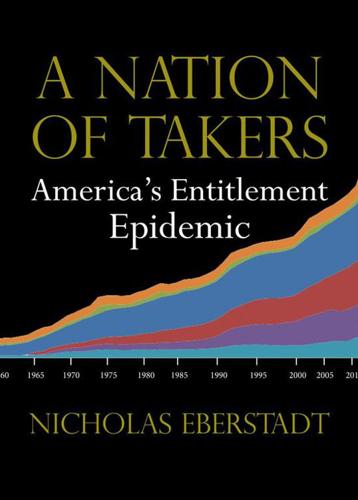
A Nation of Takers: America’s Entitlement Epidemic
by
Nicholas Eberstadt
and
Nick Eberstadt
Published 18 Oct 2012
Commentators on the right and left of the U.S. political spectrum decry what they call the American “national security state” (a term that has acquired a marked opprobrium in the decades since its early and decidedly more neutral Cold War coinage). And concern about excessive defense spending has hardly been a preserve of fringe extremists. No less a figure than Dwight Eisenhower, architect of the D-Day invasion and onetime supreme commander of NATO forces, warned of the dangers of a “military-industrial complex” in his famous 1961 farewell presidential address.62 A healthy measure of informed public skepticism toward any and all proposed military expenditures is not only suitable but essential for open democratic societies. A free people, after all, will jealously guard against impingements upon their liberties—including those arising from excessive, wasteful, or unwise outlays in the name of national defense.
…
U.S. government outlays on entitlements do not merely exceed those for defense nowadays, they completely overshadow defense outlays. Increasingly, moreover, our seemingly insatiable national hunger for government transfer payments to individual citizens stand to compromise our present and future capabilities for military readiness. In 1961, the year of Eisenhower’s admonition about the military-industrial complex, America was devoting close to two dollars on defense for every dollar it provided in domestic entitlement payments.63 Up to that point, defense expenditures had routinely exceeded any and all allocations for social insurance and social welfare throughout American history.64 But in 1961 a geometric growth of entitlement payments was just commencing.
…
But why, exactly, should America’s current and (heretofore) future military commitments be regarded as “unaffordable”? In 2010 the national defense budget amounted to 4.8 percent of current GDP (see Figure 28). As a fraction of U.S. national output, our military burden was thus lower in 2010 than in almost any year during the four-plus decades of the Cold War era. In 1961—the year of Eisenhower’s “military industrial complex” address—the ratio of defense spending to GDP was 9.4 percent68; in other words, almost twice as high as in 2010. Put another way: America’s overall military burden was nearly twice as high in 1961 as in 2010. Americans may have deemed our defense commitments in 2010 to be ill-advised, poorly purchased, or otherwise of questionable provenance—but as a pure question of affordability, the United States is in a better position to afford our current defense burden than at virtually any time during the Cold War era.

Stealth
by
Peter Westwick
Published 22 Nov 2019
Stealth was not just a product of the 1970s but rather drew on decades of R&D, which itself reflected a national willingness to make long-term investments in uncertain ventures. And those investments came from both the public and the private sectors. Stealth represented a vast integration of the state and private industry, what is commonly called the military-industrial complex. In order to demonstrate the superiority of an unfettered free market over a command economy in the Cold War, the US embraced a strong public-private partnership. The Cold War military-industrial complex often carries negative connotations, of a corrupting intrusion of the state into private enterprise and, in the other direction, of private interests into public policy. And indeed Stealth, as some observers argued, could seem like a waste of money and brainpower, enabled by official secrecy and encouraged by pork-barrel politics, all just to produce yet another weapon and a new lap of the arms race.
…
In his farewell address, in January 1961, he issued a dire warning about the emergence of “a permanent armaments industry of vast proportions,” which the old Army general viewed as a dangerous incursion both by the state into private enterprise and by private interests into public policy. Eisenhower gave it a name: the “military-industrial complex,” thereafter usually invoked in the pejorative sense Ike intended.9 More recent scholars have taken a more positive view of the military-industrial complex, framing the public-private partnership as a remarkable engine driving technological innovation. What has been called the “hidden developmental state,” “entrepreneurial state,” or “innovation hybrids” was every bit the match of Japan’s vaunted Ministry of International Trade and Industry, or MITI, which was heralded in the early 1980s, just when Stealth was emerging, as the reason for Japan’s high-tech lead over the US.10 Japan’s MITI, of course, promoted commercial consumer technologies, whereas Stealth projected military strength but did little for economic competitiveness.
…
One is the long-haired, tie-dyed hippie; the other is the aerospace engineer, in short-sleeved white button-down, skinny dark tie, and crew cut, with pocket protector and slide rule. The images seem orthogonal: the hippie a free spirit, flipping the bird to authority and denouncing the military-industrial complex; the aerospace engineer dedicated, conservative, and patriotic. On one side, romantic hedonism, turning on and dropping out; on the other, rocket-science rationality and can-do discipline. Norman Mailer saw it that way; after the moon landing, he mocked the hippies: “You’ve been drunk all summer… and they have taken the moon.”12 But the realms of the hippie and the engineer were not completely opposed.
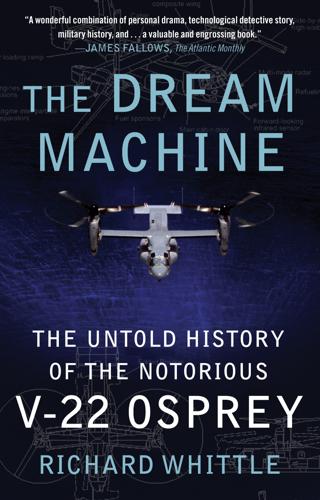
The Dream Machine: The Untold History of the Notorious V-22 Osprey
by
Richard Whittle
Published 26 Apr 2010
—Steve Weinberg, Dallas Morning News “Drawing on more than 200 interviews, Whittle reconstructs the Pentagon strategy sessions and covert Capitol Hill meetings that kept the Osprey going despite crashes, production delays, and billion-dollar cost overruns… . a fine book.” —Dale Eisman, The Virginian-Pilot “Whittle takes the reader behind the closed doors of the military-industrial complex and into the cockpits of the Ospreys that went down, telling a story as gripping as it is important.” —Aviation Maintenance Whittle “pulls no punches, but takes no cheap shots either. The result is a truly readable book that spins a fascinating yarn of science, politics, and intrigue.”
…
They were willing to put money into a program in order to advance technology that might be an advantage on the battlefield.” Since World War II, the military’s “patient capital” has led to innumerable, often stunning advances in technology. It also spawned and sustains what President Dwight D. Eisenhower called the “military-industrial complex.” Eisenhower was referring to the web of political and personal relationships between industry representatives and military officials that germinates when they do business or collaborate on projects. As institutions, defense companies and the government are often at odds over the costs and capabilities of weapons and other equipment; there is plenty of friction in the relationship.
…
Sometimes it can blur the line between the best interests of industry and the nation. Eisenhower, who as a five-star general had led the Allies in defeating Nazi Germany, warned of this larger danger in a farewell address as he left the White House in 1961. “We must guard against the acquisition of unwarranted influence, whether sought or unsought, by the military-industrial complex,” Eisenhower declared. He also noted that the “conjunction of an immense military establishment and a large arms industry is new in the American experience.” During the Great Depression, the U.S. military wasn’t immense and the aircraft industry was tiny. Both would grow rapidly with the approach of World War II, but for most of the decade preceding that conflict, America’s armed forces numbered around 250,000 active-duty personnel, compared to roughly 1.4 million today, and the entire military budget was under $1 billion—less than one five-hundredth of its size in recent years, without adjusting for inflation.
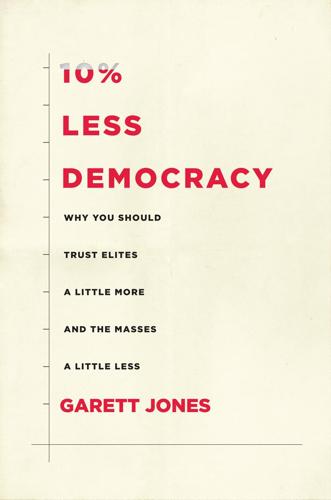
10% Less Democracy: Why You Should Trust Elites a Little More and the Masses a Little Less
by
Garett Jones
Published 4 Feb 2020
People need their phones and need their electricity, and there’s a lot of monopoly power there to exploit, so regulated businesses have a strong incentive to pressure any regulator for higher prices and lax quality requirements. The theory of regulator capture has some overlap with President Dwight Eisenhower’s worries about the military-industrial complex, which Ike discussed in a shocking and powerful speech toward the end of his presidency. He wanted to tell Americans that they needed to be vigilant about monitoring both the military and military contractors. He warned that in the post–World War II era, this conjunction of an immense military establishment and a large arms industry is new in the American experience.
…
The total influence—economic, political, even spiritual—is felt in every city, every State house, every office of the Federal government. We recognize the imperative need for this development. Yet we must not fail to comprehend its grave implications. . . . In the councils of government, we must guard against the acquisition of unwarranted influence, whether sought or unsought, by the military-industrial complex. The potential for the disastrous rise of misplaced power exists and will persist. We must never let the weight of this combination endanger our liberties or democratic processes. We should take nothing for granted. Only an alert and knowledgeable citizenry can compel the proper meshing of the huge industrial and military machinery of defense with our peaceful methods and goals, so that security and liberty may prosper together.¹⁶ Note that top military officials and top electricity regulators have something in common: they’re both interacting closely with the same small number of large businesses on a regular basis, and it’s often the government official’s job to give bad news to those large businesses.
…
The cynical, and thus plausible, case for electing electricity and telecom regulators is that the fear of looming elections will discourage regulators from selling out completely to the industries they regulate. The power of voters is a form of what Harvard economist John Kenneth Galbraith used to call “countervailing power”: power that has a chance to stand up to dangerous forces. But just because there’s a problem doesn’t mean there’s an easy solution. The risks of the military-industrial complex that Ike warned about are real, but that doesn’t mean we should be voting for our admirals. There are benefits and costs to democratic checks on insider power, and as we’ve already seen, it’s pretty likely that in the case of judges, central bankers, and city treasurers, we’re probably better off with the devil of insider influence than with the devil of democratic influence.
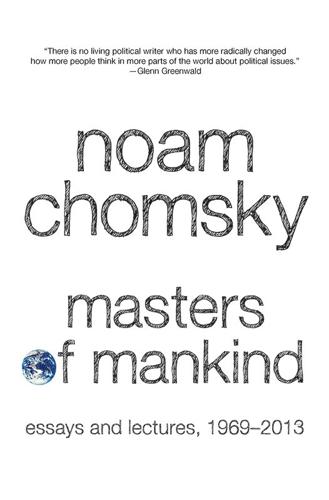
Masters of Mankind
by
Noam Chomsky
Published 1 Sep 2014
That a situation such as this is fraught with perils is obvious. From the point of view of the liberal technocrat the solution to the problem lies in strengthening the federal government (the “radical centralizer” goes further, insisting that all power be vested in the central state authorities and the “vanguard party”). Only thus can the military-industrial complex be tamed and controlled: “The filter-down process of pump-priming the civilian economy by fostering ever-greater economic concentration and income inequality must be replaced by a frank acceptance of federal responsibility to control the tide of economic bigness, and to plan the conservation and growth of all sectors of the economy and the society.”48 The hope lies in skilled managers such as Robert McNamara, who “has been the unflinching hero of the campaign to reform and control the ‘Contract State.’”49 It is probably correct to suppose that the technostructure offers no greater hope than McNamara, who has clearly explained his own views regarding social organization: “Vital decision-making, in policy matters as well as in business, must remain at the top.
…
The above prospect, Nossiter concludes from his study, is this: Powerful industrial giants eagerly pressing for more military business, Pentagon defense planners eager to get on with the new weapons production, Congressmen whose districts profit directly from the anticipated contracts, and millions of Americans from the blue collar aircraft worker to the university physicist drawing their paychecks from the production of arms. About to take over the White House is a new president whose campaign left little doubt of his inclination to support the ABM and other costly arms spending while tightening up on expenditures for civilian purposes. This is the military-industrial complex of 1969. Of course, any competent economist can sketch other methods by which government-induced production can serve to keep the economy functioning. “But capitalist reality is more intractable than planners’ pens and paper. For one thing too much productive expenditure by the state is ruled out.
…
Similarly, the American people “understand” the necessity for the grotesquerie of the space race, which is quite susceptible to Madison Avenue techniques and thus, along with the science-technology race in general, serves as “a transfigured, transmuted and theoretical substitute for an infinite strategic arms race; it is a continuation of the race by other means.”53 It is fashionable to decry such analyses—or even references to the “military-industrial complex”—as “unsophisticated.” It is interesting, therefore, to note that those who manipulate the process and stand directly to gain by it are much less coy about the matter. There are some perceptive analysts—J. K. Galbraith is the best example—who argue that the concern for growth and profit maximization has become only one of several motives for management and technostructure, that it is supplemented, perhaps dominated, by identification with and adaptation to the needs of the organization, the corporation, which serves as a basic planning unit for the economy.54 Perhaps this is true, but the consequences of this shift of motivation may nevertheless be slight, since the corporation as planning unit is geared to production of consumer goods55—the consumer, often, being the national state—rather than satisfaction of social needs, and to the extension of its dominion in the organized international economy.
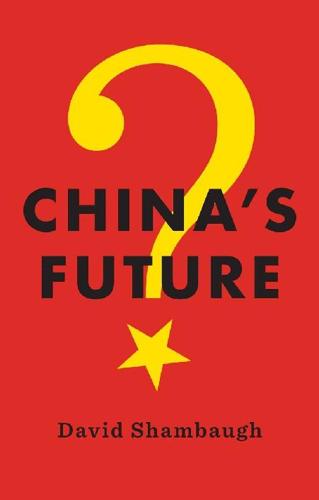
China's Future
by
David Shambaugh
Published 11 Mar 2016
At the current rate of accelerating growth in the state R&D budget (up from 1.6 to 2.1 percent since 2012), China could overtake the United States around 2022, when it will spend more than $600 billion annually. China has a huge R&D network in terms of personnel and institutions.53 The government has a sprawling bureaucracy of national laboratories under most of the State Council ministries and within the nation’s large military-industrial complex. For decades China’s military industries were chronically incapable of innovation (imitation even gave them severe problems), but that is changing rapidly. As the work of expert Tai Ming Cheung has demonstrated, China’s civil-military integration and defense technological innovation is really taking off.54 However, innovation requires much more than government investment in R&D—it fundamentally requires an educational system premised on critical thinking and freedom of exploration.
…
Politically, it would involve an even greater tightening and crackdown—Hard Authoritarianism morphing into restored totalitarianism. Coercion and control (already reinforced) would be stepped up. Social and ideological conformity would be enforced by a pervasive state security apparatus. In terms of the economy, privatization would give way to renationalization and collectivization by the state. The military-industrial complex would become the favored economic sector. Strict controls would be placed on the labor market. Nationalism would spike, with possible aggressive moves against Japan and other neighbors. While this possibility is not unimaginable, I judge it unfeasible given the already tremendous growth and dominance of the private sector of the economy and the relative freedoms that Chinese citizens do enjoy.
…
This was literally on display in massive military parades in Tiananmen Square on October 1, 2009 and September 3, 2015 (the former to commemorate the sixtieth anniversary of the PRC and the latter to commemorate the seventieth anniversary of the end of World War II). China’s military power is not a new phenomenon; it has steadily been built over the past quarter century. Fueled by a booming economy, China’s military-industrial complex has been the beneficiary of annual budget increases in excess of GDP growth. From 1998 to 2007 China’s GDP has averaged 12.5 percent growth, but its (official) defense spending grew at an average of 15.9 percent.44 Since then it has leveled off at between 10–12 percent annual increases.

The Global Minotaur
by
Yanis Varoufakis
and
Paul Mason
Published 4 Jul 2015
This is what happened in Argentina in the late 1990s, when, in the absence of a surplus recycling mechanism, the country’s deteriorating trade deficit eventually took its toll on the fixed exchange rate with the US dollar. The same negative dynamic is currently at play within the eurozone – see chapter 8. The two surplus recycling mechanisms characteristic of the United States since the Second World War have been the simple transfer union instituted by the New Deal in the late 1930s and the complicated military-industrial complex, which developed in the 1940s. The former works straightforwardly, by ensuring that the unemployment and health benefits of deficit states are paid for by Washington, dipping into taxes raised in surplus states, e.g. California and New York. The second mechanism, too, turns on a political arrangement: whenever a conglomerate like Boeing receives a large Pentagon contract to build a new fighter jet or missile system, it is stipulated that some of the production facilities must be located in depressed, deficit states.
…
Convinced that ‘free market capitalism’ had to be planned meticulously by Washington, and in a manner not too dissimilar to the successful running of the war economy, they sought to project onto a global canvas the successful recipe that had brought America out of the doldrums. Intent on winning the peace, they sought to empower US business through a combination of New Deal-inspired interventions and the technological advances achieved by the military-industrial complex. The four men were: • James Forrestal, secretary of defence (and previously secretary of the navy) • James Byrnes, secretary of state • George Kennan, director of policy planning staff at the State Department and renowned ‘prophet’ of Soviet containment • Dean Acheson, leading light in all major post-war designs (the Bretton Woods agreement, the Marshall Plan, the prosecution of the Cold War, etc.) and secretary of state from 1949 onwards.
…
Although most of the New Dealers had been influenced by the writings of John Maynard Keynes, and had taken note of his crucial advice not to trust markets to organize themselves in a manner that can bring about prosperity and stability, the Cold War, which they had to pursue at the same time as managing the Global Plan, and their closeness to the military-industrial complex prevented them from seeing as clearly as Keynes had the imperative of creating a formal, cooperative system for recycling surpluses. Many observers note the deep chasm separating the New Deal mindset from European, or British, Keynesianism. To begin with, whereas Keynes had become convinced that global capitalism required a cooperative, non-imperial global surplus recycling mechanism (GSRM), the New Dealers both wanted and were obliged to tailor their Global Plan in the context of Cold War imperatives and in clear pursuit of American hegemony.
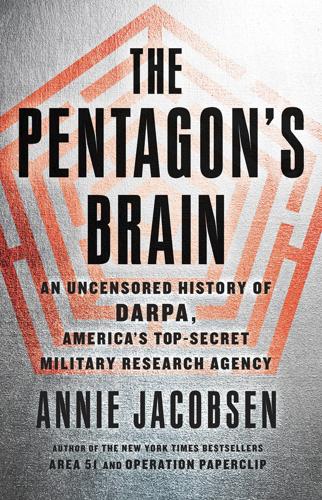
The Pentagon's Brain: An Uncensored History of DARPA, America's Top-Secret Military Research Agency
by
Annie Jacobsen
Published 14 Sep 2015
Today the agency maintains headquarters in an unmarked glass and steel building four miles from the Pentagon, in Arlington, Virginia. DARPA’s director reports to the Office of the Secretary of Defense. In its fifty-seven years, DARPA has never allowed the United States to be taken by scientific surprise. Admirers call DARPA the Pentagon’s brain. Critics call it the heart of the military-industrial complex. Is DARPA to be admired or feared? Does DARPA safeguard democracy, or does it stimulate America’s seemingly endless call to war? DARPA makes the future happen. Industry, public health, society, and culture all transform because of technology that DARPA pioneers. DARPA creates, DARPA dominates, and when sent to the battlefield, DARPA destroys.
…
The revelation that the university was working with the Defense Department on nuclear weapons work had an explosive effect on an already charged student body. “The University has proven that it is not a neutral institution,” declared the antiwar group Radical Union, “but is actively supporting the efforts of the military-industrial complex.” One article after the next alleged malevolent intentions on the part of Professor Slotnick and the dean of the Graduate College, Daniel Alpert, in having tried to conceal from the student body the true nature of the computer. “The horrors ILLIAC IV may loose on the world through [the] hands of military leaders of this nation” could not be underestimated, the Daily Illini editorialized.
…
Why is the Defense Science Board so focused on pushing robotic warfare on the Pentagon? Why force military personnel to learn to “trust” robots and to rely on autonomous robots in future warfare? Why is the erasure of fear a federal investment? The answer to it all, to every question in this book, lies at the heart of the military-industrial complex. Unlike the Jason scientists, the majority of whom were part-time defense scientists and full-time university professors, the majority of DSB members are defense contractors. DSB chairman Paul Kaminski, who also served on President Obama’s Intelligence Advisory Board from 2009 to 2013, is a director of General Dynamics, chairman of the board of the RAND Corporation, chairman of the board of HRL (the former Hughes Research Labs), chairman of the board of Exostar, chairman and CEO of Technovation, Inc., trustee and advisor to the Johns Hopkins Applied Physics Lab, and trustee and advisor to MIT’s Lincoln Laboratory—all companies and corporations that build robotic weapons systems for DARPA and for the Pentagon.
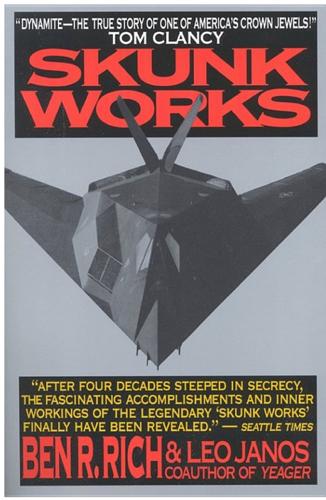
Skunk Works: A Personal Memoir of My Years of Lockheed
by
Ben R. Rich
and
Leo Janos
Published 1 Jan 1994
We’d delay an attack five minutes knowing they’d have to stop firing to cool down their guns—then we’d come in and hit them. We drew all the demanding high-precision bombing of the most heavily defended, highest-priority targets. The powers that be decided to use B-52s to pour down bombs on the big North Taji military industrial complex. But it was protected by surface-to-air missiles that could knock down our bombing armada. So we went in the night before and took out all fifteen missile sites using ten stealth airplanes. They never saw us coming. That mission won us a standing ovation from General Schwarzkopf and the other brass monitoring us back in the coalition war room.
…
Ultimately, he ran all the spy plane and satellite operations for the agency until the last months of the Eisenhower administration in late 1959, when Allen Dulles put him in charge of organizing a group of Cuban émigrés into a rag-tag battle brigade that would attempt to invade the island at the Bay of Pigs. But in the early days of the U-2, he was a mysterious figure to most of us, part of a complicated working arrangement involving the agency, Lockheed, and the Air Force that was unprecedented in the annals of the military-industrial complex. The operational plan for deploying our highly secret airplane was approved personally by President Eisenhower. Under this plan, the CIA was responsible for overseeing production of the airplane and its cameras, for choosing the bases and providing security, and for processing the film, no mean feat since the special, tightly wound film developed by Eastman Kodak would stretch from Washington halfway to Baltimore on each mission.
…
And at the end of the line we were actually able to refund about 15 percent of the total U-2 production cost back to the CIA and in the bargain build five extra airplanes from spare fuselages and parts we didn’t need because both the Skunk Works and the U-2 had functioned so beautifully. This was probably the only instance of a cost underrun in the history of the military-industrial complex. The first group of six U-2 pilots recruited from the SAC fighter squadrons showed up at the Skunk Works in the fall of 1955 wearing civilian clothes and carrying phony IDs. They spent three days getting a thorough briefing on the airplane before flying off to the secret base to begin training with our test pilots.
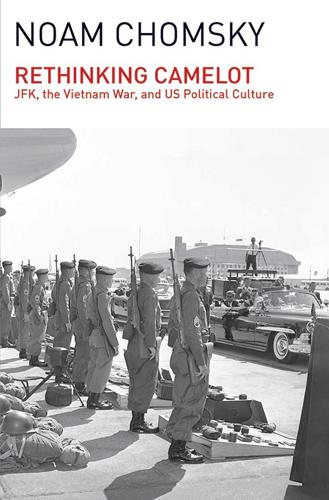
Rethinking Camelot
by
Noam Chomsky
Published 7 Apr 2015
Their attitudes toward the man who escalated the war from terror to aggression are perhaps more surprising, though it should be recalled that the picture of Kennedy as the leader who was about to lead us to a bright future of peace and justice was carefully nurtured during the Camelot years, with no little success, and has been regularly revived in the course of the critique of the Warren report and the attempts to construct a different picture, which have reached and influenced a wide audience over the years. Within both categories, some have taken the position that JFK truly departed from the political norm, and had become (or always was) committed to far-reaching policy changes: not only was he planning to withdraw from Vietnam (the core thesis), but also to break up the CIA and the military-industrial complex, to end the Cold War, and otherwise to pursue directions that would indeed have been highly unpopular in the corridors of power. Others reject these assessments, but argue that Kennedy was perceived as a dangerous reformer by right-wing elements (which is undoubtedly true, as it is true of virtually everyone in public life).
…
In this case, as noted earlier, it is largely grassroots elements (often called “the left”36) that have taken up the cudgels in the defense of President Kennedy, on the theory that he was assassinated by powerful groups that perceived him to be a dangerous “radical reformer.” These dark forces are variously identified as the CIA, the far right, militarists, etc. Many on the left accept this perception as accurate, holding that JFK was about to withdraw from Vietnam, end the Cold War and the arms race, smash the CIA to a thousand pieces, dismantle the military-industrial complex, and set the country on a course towards peace and justice. Others hold only that the assassins exaggerated his reformist zeal. Some popular variants bring in other assassinations, real and alleged. The plot also becomes intertwined with theories of a “secret team” that has “hijacked the state,” bringing us to our current sorry pass.
…
It is not even surprising to learn that when a faulty transmitter disrupted cable TV service in San Diego, delaying transmission of a film on “the JFK conspiracy,” dozens of viewers called the station denouncing this CIA plot. Books condemning the Warren Commission Report dominated the bestseller lists in early 1992, while its critics protested establishment suppression of their skepticism. Stone’s film traced the Kennedy assassination to a high-level conspiracy: CIA, military-industrial complex, and others, perhaps even LBJ. The film, Stone informed the National Press Club, suggests that Kennedy was assassinated “because he was determined to withdraw from and never send combat troops to Vietnam” (that he was “withdrawing from Vietnam” and “had committed himself firmly...to oppose the entry of U.S. combat troops” has been “unequivocally” demonstrated, Stone added, citing Arthur Schlesinger and John Newman).

Farewell
by
Sergei Kostin
and
Eric Raynaud
Published 14 Apr 2011
The two presidents are relaxed and already in connivance: the disclosure of the Farewell dossier changed entirely the attitude of the leader of the Western Bloc toward the Socialist president. The Farewell dossier should be presented in this context. Located at a strategic node within the system, this officer opened the eyes of the West to the scope, structure, and operations of technological espionage as practiced by the USSR, primarily in the military-industrial complex. The free world suddenly realized the vulnerability of those very defense systems vital to its survival. Furthermore, it became clear that it was impossible to have the upper hand in the arms race against the East because, through the efforts of Soviet intelligence, it did not take long for the West to “share” its most efficient weapons and devices with this formidable adversary.
…
Vetrov analyzed every step of the process; information research, gathering, processing, exploitation, distribution, and protection. The changes to be made to improve the system’s operation were far-reaching, targeting residencies abroad as well as Yasenevo personnel, and even the beneficiaries of intelligence data within the military-industrial complex. This task took Vetrov at least a month to complete. He did not hesitate to take his highly sensitive manuscript home. Svetlana, who remembers it too, read the document to proof it. Then Vetrov had the document typed and, with pride, submitted it to the department chief. As he told his wife, for once his work would not go unnoticed.
…
Finally, Reagan became directly involved in restarting the arms race with the implementation of new, but classic, military programs, including the famous stealth bomber. Above all was the elaboration of the SDI project (the Strategic Defense Initiative; better known under the name of Star Wars). SDI was a formidable technological challenge for the Soviets, since their economy was resting mostly on the military-industrial complex, dependent on stealing Western technology through the KGB Line X. Since Vetrov’s revelations, the Line X network had no secrets anymore for the Reagan Administration. Actually, even before the Farewell dossier, the American government knew about technological spying by the Soviets. With the easing of restrictions on East-West trade under Nixon and Ford, however, the boundary between theft and legal commerce became fuzzy, especially as the KGB could quite legally buy certain technologies that were sold freely during international trade shows.

Capitalism in America: A History
by
Adrian Wooldridge
and
Alan Greenspan
Published 15 Oct 2018
Some optimists talked of “military Keynesianism” boosting the economy and spinning off innovations. Pessimists worried that the military-industrial complex would smother the civilian economy. There was a bit of both. The military-industrial complex provided a dependable source of income for some of the country’s best-known companies, which were paid on a cost-plus basis. It also produced important innovations for the civilian economy: the budding computer industry in Silicon Valley owed as much to military spending as to Stanford University. The United States even turned its immigration policy into an arm of the military-industrial complex: a country that put a strict limit on immigration in general nevertheless made an exception for world-class scientists and engineers.
…
The United States led the rest of the world in its investment in “big science.” The man who did more than anybody else to convert the political establishment to the idea that science was a vital economic input rather than an expensive luxury was Vannevar Bush. Bush united the three worlds at the heart of what Eisenhower called the military-industrial complex: he was a sometime dean of engineering at MIT; the director of the Office of Scientific Research and Development, in charge of six thousand scientists, during the war; and the founder of a science company, Raytheon. He was also a confidant of Harry Truman and then of Dwight Eisenhower. A talented propagandist, his 1945 report “Science, the Endless Frontier,” which urged the government to fund basic research in partnership with academia and industry, captured the public imagination with its judicious mixture of references to America’s frontier past and its technological future.
…
Today most of the world’s great IT companies are American, with Apple and Google dominating the smartphone market, Google the search market, and Amazon the ecommerce and server markets. Why did the United States play such a dominant role in the IT revolution? The computer revolution had its roots in several different worlds—from the military-industrial complex to giant corporations to academia to computer hobby clubs. America excelled in three things: producing these different worlds in the first place; bringing them together in creative symbiosis; and then commercializing the ideas that they produced. We have already seen how Vannevar Bush played a central role in forging America’s unique military-industrial-academic complex.

Gaza in Crisis: Reflections on Israel's War Against the Palestinians
by
Ilan Pappé
,
Noam Chomsky
and
Frank Barat
Published 9 Nov 2010
Contrary to what its name suggests, it is an ancient arena of defeat—that of the Native American Montauketts, who were destroyed in the U.S. genocide. Like so many other locations in the United States, this, too, is named after the chief of the defeated tribe, Sacut. Since the end of colonization, the area has been a military-industrial complex, which armed U.S. forces in both world wars. In 1946, the fledgling United Nations addressed, quite unexpectedly, the mayor of the little town of Lake Success and asked to rent some of the industrial areas, including huge hangars, as a temporary home. In one of them, in November 1947, the UN General Assembly announced the establishment of a Jewish state.
…
No wonder Mearsheimer and Walt were so deeply frustrated when they saw such a front, with its own impressive think tanks and presence in the Ivy League, retreating helplessly in the face of AIPAC’s charge forward. No wonder they attributed, in their London Review of Books piece, such mystical powers and forces to the Jewish lobby. This frustration only grew after the election of George Bush Jr. The Bush family and the influence of the military-industrial complex should have led to a greater say for those who represented oil, cement, and weapons. At first, indeed, it looked as if these were the leading considerations. Bush Jr. showed no inclination to be involved where his predecessor had failed. Even the outbreak of the second intifada was described as the fruit of Clinton’s failed policies and did not bother the agenda of the new president.
…
Truman considered retreat from the partition plan in March 1948 and Eisenhower seriously contemplated a peace plan that included the return of the refugees. So we should not take a teleological stance on this. Second, the triangle of the U.S.-Israeli relationship has three equal legs—AIPAC, the military-industrial complex, and the Christian Zionists—and if one of them collapses, the whole structure crumbles. Chomsky: To answer that, we have to consider the sources of the support. The corporate sector in the United States, which dominates policy formation, appears to be quite satisfied with the current situation.

Predator: The Secret Origins of the Drone Revolution
by
Richard Whittle
Published 15 Sep 2014
He also did several tours behind a desk in the Pentagon, including one year as an “action officer” and a second stint as director of the Navy’s Aircraft Weapons Requirements Branch, followed by three years running the Tactical Readiness Division for the chief of naval operations. Cassidy knew how the sausage was made in the military-industrial complex—how defense equipment got marketed, sold, developed, tested, and put into service. He knew what aircraft the armed services owned, what aircraft they wanted, how they decided what they needed for the future, and how hard it was to get a new program started. Privately, Cassidy thought Neal Blue’s flying bomb drone idea was dumb, though naturally he didn’t say so in his initial conversations with Blue about working for him.
…
No one would have guessed that the organizers would wind up owing the City of San Diego and other creditors more than four million dollars, bankrupting the Air/Space America organization and making its first edition its last. The show was a critical success but a financial belly flop. The hidebound mentality of the military-industrial complex was responsible for the failure. Sandwiched between the weekends of aerial wonders were five professional trade days devoid of flying, during which aviation industry executives and marketers hawked their wares to potential military and commercial customers. Four massive white tents arrayed in a quadrant along Brown Field’s 7,972-foot main runway served as pavilions for 350 exhibitors.
…
He was designing, calculating, negotiating, researching, budgeting, buying, leasing, hiring—seemingly every day, seemingly all at once. Some nights he got by on only two hours of sleep. Weekends were workdays. He was going full throttle because at last he was living his dream. He was determined to build a company—a team, to be precise—that would defy the norms of the military-industrial complex, whose bloated bureaucracy, corporate mentality, and corrupting politics had made cost overruns, schedule delays, and outright failure in defense programs commonplace since World War II. Above all, Karem dreamed of leading the way into a new era of unmanned aviation the way pioneers of the early twentieth century led the way into the air—people such as Glenn Curtiss, Donald Douglas, Jack Northrop, Igor Sikorsky.

Gorbachev: His Life and Times
by
William Taubman
During Brezhnev’s funeral, Arbatov whispered to Chernyaev and Bovin his “program for Andropov.” It would begin by replacing Prime Minister Tikhonov with Gorbachev, firing other Brezhnev favorites, and replacing them with liberals like themselves. Chernyaev’s “Andropov program” included pulling out of Afghanistan, ceasing to dictate to East European allies, curbing the military-industrial complex, freeing dissidents from prison, and allowing free emigration. Chernyaev’s dream was just that, a dream, he concedes in retrospect. What Andropov wanted most of all was power, Chernyaev later admitted. Even if he aimed “to make the people happy,” there was no way he could do so under the current regime.68 According to former East German spy chief Markus Wolf, Andropov talked frankly about the “decline” of the Soviet Union, tracing its beginning to the Czech intervention in 1968.69 Arbatov told Brutents that Andropov mocked Brezhnev’s boast that the USSR was now practicing “developed socialism,” insisting it was a long way from any socialism at all.70 But during his fifteen months in office, Andropov’s program emphasized style more than substance, and personnel shifts, far from all of them for the better, rather than structural reforms.
…
Ukrainian party leader Shcherbitsky, whose late arrival from California on March 11 spared him the need to hold his nose and vote for Gorbachev, lasted until September 1989. Other Politburo members appointed in the early 1980s (such as Aliev, Vorotnikov, and Mikhail Solomentsev) were only marginally more progressive. Lev Zaikov, whom Gorbachev picked to join the Politburo in 1985, played a useful role as buffer between Gorbachev and the military-industrial complex. Viktor Nikonov, chosen to oversee agriculture, failed (like most of his predecessors) to galvanize the countryside. This roster underlines again how different Gorbachev was from his peers. That absence of like-minded leaders was a fact of Soviet political life. But his capacity to take the measure of those he favored left a lot to be desired.
…
It wasn’t the Eurocommunists who liberated our thinking, adds Shakhnazarov; “we were ripe for new thinking, and came to it on our own.”9 All these constituted, as Grachev puts it, “a kind of professional army awaiting its leader,” along with scientists who wanted more access to foreign colleagues, economic managers, and local party officials jealous of resources gobbled up by the defense budget, even high KGB officials like Nikolai Leonov, who thought, “The people from the military-industrial complex . . . didn’t take economics into account at all. They thought our resources were unlimited—as if they had not been informed as to the country’s real situation.” “We could write a lot of memos,” recalled Shakhnazarov, “but it didn’t matter until a [new] leader appeared in the General Secretary’s chair. . . .”10 However, some of Gorbachev’s early pronouncements after taking office sounded as if they had been prepared under Brezhnev.

Barefoot Into Cyberspace: Adventures in Search of Techno-Utopia
by
Becky Hogge
,
Damien Morris
and
Christopher Scally
Published 26 Jul 2011
But the party itself was a blast, and what’s more, it grossed over $12,000. He may have been a hippy, but Stewart Brand was good at making money. I’m not quite sure how I inspired the anti-anti-corporate rant Brand has just finished, but it serves to illustrate the time that stretches between his generation and mine. Whereas Brand’s generation had the military-industrial complex of the Cold War to haunt their nightmares, the politically conscious and privileged young hipsters of today are more likely to be found protesting Big Oil, Big Coal and Big Pharma. If there is a movement as obviously exuberant as the hippy movement today, you’ll probably find it incubating at Arms Trade demos, tooling-up at Climate Camp, and bursting onto the streets of whichever city the global leaders of the capitalist world choose to meet in each year.
…
At about the same time, James Lovelock was engaged in similar thinking, thinking that would eventually lead him to formulate his famous Gaia Theory. For Brand, and for the hippies who bought into his “Whole Earth” enthusiasm, the idea of the earth as a system was a powerful one. And it was also seductive: it certainly looked like a better system than the military industrial complex they had fled back to the land from. Later in 1968, back in Menlo Park, Brand began preparations for the first print run of the Whole Earth Catalog, a Sears catalogue for hippy communards that juxtaposed practical advice and tools for back-to-the-landers with intellectual stimulation in the form of reviews of books Brand and his fellow editors thought should be informing the ideals of their peers.
…
In the comfort of my study in a pretty English village, I poured myself a coffee, logged on, and tuned out, happy simply to blow my mind with the acceleration and scale of events. What I find most shocking about all this is how two stories – the Collateral Murder video, and the Afghan War Logs – which each had the power to rock the US military-industrial complex to its very foundations, were instead defused with such relative ease. And I, as one member of the international audience, am complicit in that scandal. There’s a reason this book isn’t about the shocking abuse of military power by the US and UK against states and citizens in the Middle East, about the “fiscalisation” of power, the privatisation of authority and the whole geopolitical chess game.

Drone Warfare: Killing by Remote Control
by
Medea Benjamin
Published 8 Apr 2013
Large swaths of Detroit, once a bustling city home to the country’s largest employers, now resemble a ghost town. But there’s one manufacturing sector that’s not hurting: the companies that profit from building the high-tech tools of modern warfare, America’s last great export. Indeed, what former President Dwight D. Eisenhower called the “military-industrial complex” has made it through this age of austerity largely unscathed. And when it comes to drones, the complex is booming. “It’s a growth market,” crowed the Defense Department’s chief weapons buyer, Ashton B. Carter.37 And he should know, with the Pentagon’s $5 billion war chest for drones. Global spending on the research and manufacture of drones is expected to total more than $94 billion between 2011–2020, according to one analyst who monitors the aerospace industry.
…
Overall, the company has spent more than $21 million lobbying public officials since 1998, according to the Center for Responsive Politics.44 But by 2008 this little company made it into the Defense News list of top one hundred defense firms. One would be hard pressed to find such an enormous return on investment outside the military-industrial complex. General Atomics is not the only little military contractor that could. While it may sound like a gentle air freshener—and it did start out consulting on air quality—AeroVironment has been gobbling up a giant-size piece of the drone pie. Like General Atomics, the company is relatively small.
…
“There’s nothing special about Indiana in this field,” said Quigley, “so I presume that if you did the research, you’d find significant drone activities going on in universities, small factories and research parks all across the country.” “Our state needs jobs, but I hate the fact that people of good conscience may be sucked into the military-industrial complex process of creating machines that contribute to the death of innocent civilians,” said Lori Perdue, an Air Force veteran and Indiana member of CODEPINK. “If we could create green jobs instead of war jobs, I bet the guy working the line making jet turbines would rather be building a wind turbine.”
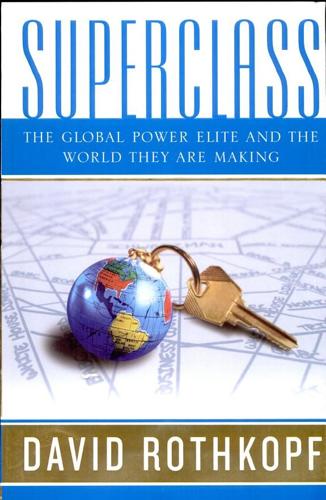
Superclass: The Global Power Elite and the World They Are Making
by
David Rothkopf
Published 18 Mar 2008
Our toil, resources and livelihood are all involved; so is the very structure of our society. In the councils of government, we must guard against the acquisition of unwarranted influence, whether sought or unsought, by the military-industrial complex. The potential for the disastrous rise of misplaced power exists and will persist. One little-remembered aspect of Eisenhower’s speech is that it contained not one but two central warnings. While the first, concerning the military-industrial complex, is more often cited, he also expressed equivalent concerns about the emergence of what he called the “scientific-technological elite.” His concerns, like Mills’s, reflect the zeitgeist of the 1950s, in which the predominant historical memory was of World War II and the subjugation of all U.S. political, financial, and industrial efforts to the goal of military victory.
…
Schwarzman is not unique in his role as a connector, linking several domains of power. The power elite contains interlocking directorships, not only of companies but of society as a whole. Leadership communities connect across all the important power clusters: business and finance, politics, the military-industrial complex, and the arts and the world of ideas. In fact, such linkages are as distinguishing a characteristic of members of the superclass as wealth or individual position. Trace them and you will find a daisy chain of connections linking remarkably diverse groups. Such connections reduce the degrees of separation between individuals, enabling them to get to the people they need directly, when they need them, to operate at the highest level as efficiently as possible, and in so doing to maintain their status—because access to that level is so jealously guarded by those who have it.
…
First, given that the U.S. political system at the time of the 9/11 attacks was in the hands of a government with the ideological views the Bush administration had toward the Middle East, the history it had with key regimes in that region, and its close ties to the oil industry and key defense contractors, no one should have been too shocked by the result: All the vectors of force from the relevant power players were pointing in the direction of the kind of militarized, unilateral adventure that materialized. In part, it was the consequence of a system where the incentive structure for politicians made adopting a war footing advantageous—and where the incentive structure of the military-industrial complex made supporting such a war footing profitable. It was also the consequence of the political mood in a wounded country, which made the United States open to such an approach, disinclined to lengthy debate, and eager for the appearance of action and strength. Furthermore, as bad as the Bush team has been at managing the war in Iraq and maintaining international alliances, it has proved exceptionally adept at managing the levers of American public opinion.

The New Digital Age: Transforming Nations, Businesses, and Our Lives
by
Eric Schmidt
and
Jared Cohen
Published 22 Apr 2013
Crawford, “When We Wage Cyberwar, the Whole Web Suffers,” Bloomberg, April 25, 2012, http://www.bloomberg.com/news/2012-04-25/when-we-wage-cyberwar-the-whole-web-suffers.html. new “cyber-industrial complex” somewhere between $80 billion and $150 billion annually: Ron Deibert and Rafal Rohozinski, “The New Cyber Military-Industrial Complex,” Globe and Mail (Toronto), March 28, 2011, http://www.theglobeandmail.com/commentary/the-new-cyber-military-industrial-complex/article573990. A raid on the Egyptian state security building after the country’s: Ibid.; Eli Lake, “British Firm Offered Spy Software to Egypt,” Washington Times, April 25, 2011, http://www.washingtontimes.com/news/2011/apr/25/british-firm-offered-spy-software-to-egypt/?
…
What Lockheed Martin was to the twentieth century, technology and cyber-security companies will be to the twenty-first. Indeed, traditional defense-industry leaders like Northrop Grumman and Raytheon are already working with the U.S. government to develop cyber-capacity. Weapons manufacturers, airplane builders and other parts of the military-industrial complex might not lessen—conventional militaries will always require guns, tanks and helicopters—but big military operations, already heavily privatized, will carve out space in their budgets for technical assistance. Development assistance and foreign aid will take on a digital dimension too, buoyed by these new multilateral alliances.
…
And, of course, wrapping all of this together will be a hefty layer of cybersecurity—more than any civilian would use—that enables instant data transmission within a cocoon of electronic protection. Without security, none of the advantages above will be worth the considerable cost that will be required to develop and deploy them. Alas, military contractors’ procedures will hold back many of these developments. In the United States, the military-industrial complex is working on some of the initiatives mentioned above—DARPA has led the development of many of the robots now in operation—but it is by nature ill-equipped to handle innovation. Even DARPA, while relatively well funded, is predictably stalled by elaborate contracting structures and its position in the Department of Defense bureaucracy.

1983: Reagan, Andropov, and a World on the Brink
by
Taylor Downing
Published 23 Apr 2018
Like most in the Soviet leadership he had no understanding of how the American political system worked, with its different parts of government and its checks and balances. So, for instance, Nixon’s forced resignation over Watergate totally bemused a man like Kryuchkov. The KGB view was that he had not been forced out by public indignation but by a conspiracy of the enemies of détente, probably the Zionists and the military-industrial complex who wanted to maintain arms sales. Accustomed to a command economy controlled from the centre, most Soviets could not imagine a system that operated successfully without regulation and control. As one senior Soviet diplomat put it, many of his colleagues were ‘inclined to the fantastic notion that there must be a secret control room somewhere in the United States.
…
The two world leaders talked for another half an hour, and when they emerged, after overrunning by nearly an hour, both men were smiling. Shultz could see that Reagan and Gorbachev had ‘hit it off well’.23 They had broken the ice. Then, with their experts and advisers around them, the two leaders began the first plenary session. Now the plain talking began. Gorbachev opened with an attack on the power of the military-industrial complex over US politics that stirred up hostility to Soviet Russia, he claimed, in order simply to sell more weapons. Reagan attacked the Soviet Union for its position on human rights and related a long history of Soviet aggression from 1917 onwards, especially in regional affairs over recent years.
…
In Afghanistan, the US increased its secret military aid to the Mujahideen in their struggle against Soviet forces, arming them with hand-held Stinger anti-aircraft missiles that had the capacity to shoot down a helicopter. And in the Nevada desert the US tested a 19-kiloton nuclear bomb. To Moscow, all this, along with the lack of support for the peace offensive, came across as unexpectedly belligerent. Gorbachev imagined various scenarios. He suspected that the military-industrial complex had become alarmed at the progress in Geneva and had got at the President. He wondered if the hawks felt the President had already made too many concessions to the Soviets and had put him under pressure. Or perhaps there was fear in Washington of a renewed, dynamic Soviet Union talking peace on the world stage.

Transcending the Cold War: Summits, Statecraft, and the Dissolution of Bipolarity in Europe, 1970–1990
by
Kristina Spohr
and
David Reynolds
Published 24 Aug 2016
Washington: Doing the Unprecedented Once again, however, coming down from the summit proved an anti-climax—and an occasion for second thoughts. Gorbachev increasingly believed that Reagan ‘was not free in making his decisions’, opining that he and Shultz ‘have their hands and feet tied by the military-industrial complex’.65 The Soviet leader was also acutely conscious of the growing budget crisis in the USSR. So although remaining obdurate about his ‘package’ approach to arms control negotiations, he now shifted ground on restricting SDI R&D to the ‘laboratory’. On 30 October, undeterred by dyspeptic comments from Gromyko, the Politburo agreed that it would accept testing anywhere except in space.
…
A return to economic autarky was, however, not an option because the Soviet bloc needed continued access to the West in order to keep up technologically, especially in the dawning computer age, and also to placate ordinary people with more sophisticated consumer goods. The socio-economic malaise was exacerbated by imperial overstretch. With roughly a quarter of GDP being channelled into the armed forces and the military-industrial complex, manpower and resources were not available for the rejuvenation of the civilian economy. But breaking the mould of Soviet defence and foreign policy was enormously difficult because of the military’s stranglehold over political life. Such systemic conservatism could only be transformed by innovative leadership.
…
But the sluggishness of reform forced him into more radical measures—perestroika (restructuring) and glasnost (openness, or frankness)—and then to accept that socio-economic change required political reform as well, by giving people a greater stake in the system through controlled democratization and devolution of power to the individual republics. Each of these steps entailed protracted battles with the conservatives, especially the military-industrial complex. In order to reduce the burden of defence spending on the economy, Gorbachev became increasingly interested in arms control with the West. This pushed him into summitry. In the ensuing transformation of superpower relations, Gorbachev was the crucial change-agent but he could not have acted alone.
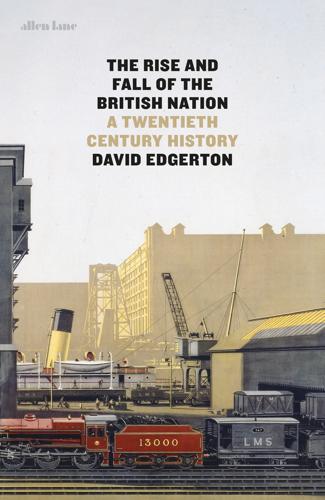
The Rise and Fall of the British Nation: A Twentieth-Century History
by
David Edgerton
Published 27 Jun 2018
The biggest ships in the future navy looked like being nuclear submarines.10 In 1961 President Eisenhower lamented the power of the military-industrial complex, a state dominated by a ‘scientific-technological elite’ and the encroachment of the state on the world of scholarship. There was barely any equivalent criticism in the United Kingdom, which appeared to many not even to have a state-centred scientific technological elite or indeed a military-industrial complex. Yet it had both, and there was some criticism, though of a different sort. It was in fact central to the politics of the left, though that bit of the left considered to be on the fringes.
…
For them it was impossible, it seems, to think of the British state as a warfare state, even though it might have occasionally succumbed to foreign pressure to become so. The two world wars have not, remarkably enough, been generally thought of as involving an expanded warfare state. MILITARY-INDUSTRIAL COMPLEX Into the late 1950s a future war was thought probable, and it was anticipated that it was likely to be a war of production much like the Second World War. After the Second World War a great deal of military factory capacity was kept in being in case it was needed. ‘War potential’, an important concept, was understood to include the ability to produce all sorts of specialized equipment that was needed in warfare.
…
Conscription would go, as had already been announced. It went in stages from 1957, with the last draft (of previously deferred men) entering in 1960. The United Kingdom was the first power to put the nuclear deterrent at the heart of its strategy, to abolish conscription and to run down the military-industrial complex. It was returning to liberal militarism, to professional capital-intensive forces in order to reduce expenditure to more manageable levels. It was doing so with a new enthusiasm for new machines. The ‘central aim of military policy must be to prevent war rather than to prepare for it’ was the doctrine of the 1957 White Paper, which meant an end to the whole doctrine of war potential.

The Streets Were Paved With Gold
by
Ken Auletta
Published 14 Jul 1980
“Well, Frank,” LBJ retorted, feigning sorrow, “the next time you need money to build a dam in your state, you better go to Mr. Lippmann.” That’s how the game often works. Ed Koch, like Jimmy Carter, is called a confrontationist if he speaks out and threatens to take his case to the public; if he doesn’t heed the counsel of the domestic equivalent of the military/industrial complex—the banks, unions, landlords and other organized-interest groups who profit from government. Government spending grows. Conservatives like Nixon and Ford didn’t stop it, and liberals don’t try. As spending rises, so do expectations. Parents demand tuition tax credits. Teachers demand more school aid.
…
So, too, when the labor settlement was reached, the business/banking establishment, and the editorial pages of the Times and News, swallowed hard and chimed their support. That was preferable to tarnishing the Big Apple’s image in Washington. Thus there grew, over the first three years of the crisis, the local equivalent of a military/industrial complex—what one might call a public/profit complex. The same absence of opposition, of rigorous checks and balances, which helped cause the fiscal crisis now rendered it nearly impossible to cure. Former adversaries were now on a first-name basis. Labor leader Victor Gotbaum hosted a dinner party at his Brooklyn Heights home for Ellmore C.
…
It was not hard for those covering the story to grow too close to the people involved; to assume they were all trying to save New York, forgetting they were also desperately trying to save their own ass. What happened to City Comptroller Goldin is pregnant with meaning both about the role of the press and about the workings of the local version of the military/industrial complex. In the summer of 1977, an agreement was reached between MAC, the city, the unions and the banks to trade in their shorter-term securities for longer-term MAC bonds. This stretch eased the city’s immediate debt service payments, but it also ballooned the city’s long-term costs because a higher rate of interest over a longer period of time was called for.
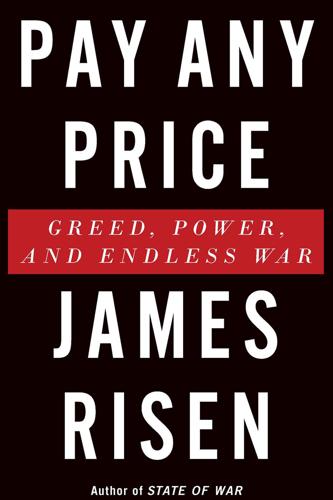
Pay Any Price: Greed, Power, and Endless War
by
James Risen
Published 15 Feb 2014
In the process, Obama normalized the post-9/11 measures that Bush had implemented on a haphazard, emergency basis. Obama’s great achievement—or great sin—was to make the national security state permanent. Half a century earlier, President Dwight Eisenhower had warned of a new “military-industrial complex”; under Bush and Obama, a parallel “homeland security–industrial complex” has been born. The rise of the military-industrial complex had been fueled by fears of Communism. Now, another abstract fear was driving hundreds of billions of dollars a year into building the infrastructure necessary to wage a permanent war on terror, and it had grown like kudzu around the CIA, FBI, Department of Homeland Security, Treasury Department, Pentagon, and dozens of other smaller offices and federal agencies.
…
One 2012 estimate concluded that the decade of war had cost Americans nearly $4 trillion. Greed and power are always a dangerous combination. In wartime, power expands and greed can easily follow. The more our counterterrorism infrastructure has grown, the harder it has become to control. The traditional military-industrial complex was at least partly visible to outsiders; it comprised mammoth defense contractors that built airplanes, ships, and rockets, as well as high-tech firms that pioneered computers and advanced electronics. There were often public, aggressive congressional debates about spending on big new weapons systems, and major defense contractors frequently felt compelled to take out advertisements in newspapers and on television to generate support for their projects.
…
In Harvard Law School’s National Security Journal, Jerry Brito and Tate Watkins, technology experts at George Mason University, warned that the cyber threat is being hyped by government officials seeking greater power and by outside contractors seeking more money. “A cyber-industrial complex is emerging, much like the military-industrial complex of the Cold War,” they wrote. “This complex may serve not only to supply cyber security solutions to the federal government, but to drum up demand for those solutions as well.” Mike McConnell, the former director of national intelligence at the end of the Bush administration, provides a case in point.

Free Money for All: A Basic Income Guarantee Solution for the Twenty-First Century
by
Mark Walker
Published 29 Nov 2015
But it is hardly a subtle distinction to say: “I support the men and women in arms but not the agenda of the military-industrial complex.” Indeed, since it is the agenda of the military-industrial complex that gets so many soldiers needlessly killed overseas, to effectively support the former requires being against the latter. Any action that requires the sacrifice of American men and women in combat should have proper representation from all strata of society: 1 percent of the US military should be made up of folks from the 1 percent wealthiest portion of the population. Until then, there is a serious worry that the poor are being used as cannon fodder for the military-industrial complex. As with any junkie, the first step to recovery is admitting there is a problem.
…
We propose to cut $400 billion from the budget. This will still leave $60 billion for those not covered by BIG and those who may need additional assistance. 34 FREE MONEY FOR ALL End the Empire: Cut the Military President Eisenhower was incredibly prescient in proclaiming the dangers of the rise of the military industrial complex. Consider that much of the current budget shortfall is due to the huge expansion of the US military budget. It went from $265 billion to $700 billion in just over a decade. It has recently inched down to $640 billion. BIG will be paid for, in part, by cutting back the budget by $300 billion to the year 2000’s level of funding.25 It may be objected that such a drastic cut would leave the country vulnerable to attack.

Artificial Whiteness
by
Yarden Katz
What are the continuities and divergences between invocations of AI across the decades—or in Rota’s words, what were the “cataclysms and reconstructions” on this concept’s path? And who and what is served by AI’s iterations? Answering these questions requires looking at AI’s formation in the American military-industrial complex—and not from the perspective of awe. Many accounts of AI’s history, written by practitioners and invested onlookers, present it as a march of progress. AI is often treated as a philosophically charged but autonomous technical pursuit, a product of great men’s imaginations.11 My point of departure, by contrast, is one that many scholars of science and technology have argued for: that developments in computing are shaped by, and in turn shape, social conditions.
…
Part 3 examines alternatives to AI’s dominant visions and epistemologies. Chapter 6 considers the prospect of an alternative science of the mind and body. In search for alternative formulations, it revisits dissident voices and streams within AI’s orbit and analyzes their relation to imperial projects and the military-industrial complex. Finally, Chapter 7 discusses ways to resist and refuse the troubling phenomena outlined in this book. Before continuing, a few clarifications. This book is not a detailed intellectual history of the academic field of AI and the computing practices found within it. My concern here is with the concept of AI and how it functions politically.
…
Social movements, however, have drawn enough attention to injustices that operate across race, gender, and class lines to make these cheerful capitalist visions less tenable. The expert industry eventually had to adjust. AI’S PROGRESSIVE VENEER AND A WEB OF PARTNERSHIPS Although AI formed in the depths of the military-industrial complex, the rebranded AI of the 2010s spills far outside that world. Present-day discourse includes not only voices from the military-industrial sphere that speak in futuristic imperial tones but also commentators who present themselves as critics of corporate power and advocates for social justice.
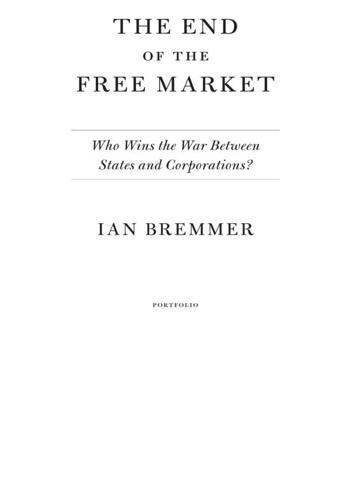
The End of the Free Market: Who Wins the War Between States and Corporations?
by
Ian Bremmer
Published 12 May 2010
Many leading German, French, and British companies remained in private hands at the outbreak of World War I, but as a conflict many expected would end quickly settled into a costly stalemate, governments were forced to adopt a high degree of central economic planning. The mobilization of national resources during World War II benefited what outgoing President Dwight Eisenhower christened the military-industrial complex in 1961.9 All governments, including those presiding over a relatively free market, provide for the defense of the country’s territorial integrity. b In the process, they create space for a state-guaranteed market in which privately owned defense companies can develop a privileged position, distorting the competitive playing field.
…
Max Eastman (New York: Dover, 2004), ch. 9, http://www.marxists.org/archive/trotsky/1936/rev-bet/ch09.htm. 8 Murray N. Rothbard, “A Future of Peace and Capitalism,” in Modern Political Economy, ed. James H. Weaver (Boston: Allyn & Bacon, 1973), ch. 28, pp. 419-30, http://mises.org/story/1559. 9 “Military-Industrial Complex Speech, Dwight D. Eisenhower, 1961,” http://coursesa.matrix.msu.edu/~hst306/documents/indust.html. 10 A definition offered by Laura LaHaye, Concise Encyclopedia of Economics, Library of Economics and Liberty, http://www.econlib.org/library/Enc/Mercantilism.html. 11 The Anglo-Spanish wars of 1585-1604 were clashes not only in English and Spanish ports or on the sea between them (most notably Sir Francis Drake’s defeat of the Spanish Armada in 1588) but also in and around the present-day territories of Florida, Puerto Rico, the Dominican Republic, and Panama, where Drake died. 12 Mercantilism was an inherently protectionist system, but individual loyalty was an eminently tradable commodity.
…
Emergency Economic Stabilization Act (2008) emerging-markets see also specific countries Emerging Markets Century, The (Agtmael) Endiama “End of History, The” (Fukuyama) Equatorial Guinea Erdoğan, Recep Tayyip Eskom European Commission European Union Common Agricultural Policy (CAP) Excess Crude Account ExxonMobil Exxon Valdez Ezz, Ahmed Facebook Farouk I, king of Egypt Federal Anti-Monopoly Agency Fernández de Kirchner, Cristina financial crisis (2008) Financial Times Finland Formosa Plastic Group France Freedom House free-trade zone Fukuyama, Francis G20 Gandhi, Indira Gao Xiqing García Linera, Álvaro gas Gazprom General Agreement on Tariffs and Trade (GATT) General Motors Georgia Germany Giuliani, Rudolph Glass-Steagall Act (1933) global foreign direct investment in China, see China, foreign direct investment in globalization Goldman Sachs Gorbachev, Mikhail Government Investment Corporation Government Pension Fund (NGPF) Great Britain Great Depression Great Firewall Growth, Employment, and Redistribution (GEAR) program Gulf Cooperation Council Gulf of Mexico Gulf War Hamilton, Alexander Hanna, Don Harper, Stephen Hastings, Warren hedge funds He Yafei HIV/AIDS Hoover, Herbert Hormats, Robert HSBC Hudson Bay Company Hu Jintao Hume, David Hurricane Katrina Hussein, Saddam Hutchison Whampoa Hu Yaobang hypercapitalism Hyundai Iceland immigration import quotas India five-year plans of oil demand in Indonesia Industrial and Commercial Bank of China (ICBC) Industrial Revolution Institutional Revolutionary Party (PRI) intellectual-property rights (IPR) International Arbitration Center International Criminal Court International Energy Agency International Monetary Fund (IMF) Internet Iran Iran-Iraq war Iraq Ireland Israel Italy Ivanov, Sergei Japan post-World War II economic growth in Jasser, Muhammad al- Jiang Zemin Jianlong Group Jilin, China Jiwei, Lou Kant, Immanuel Kazakhstan Kazatomprom KazMunaiGas keiretsu Kemerovo Keynes, John Maynard Keynsianism Khalifa bin Zayed al Nahyan, Sheikh Khazanah Nasional Khodorkovsky, Mikhail Khrushchev, Nikita King Abdullah Economic City Kingdom Holding Company Klein, Naomi Kobaladze, Yuri Kovykta gas field Kuchma, Leonid Kudrin, Alexei Kuwait Kuwait Investment Authority Kuwait Petroleum Corporation Labour Party, British Latin America Lee Hsien Loong Lee Myung-bak Lehman Brothers Lenin, Vladimir Libya Liebknecht, Wilhelm Lincoln, Abraham Li Peng Louisiana Company Lula da Silva, Luiz Inácio McCain, John McDonald’s Maersk Magnitogorsk Metallurgical Combine Mahathir Mohammad Maktoum, Mohammed bin Rashid al- Malaysia Mali Mandela, Nelson Mao Zedong Marx, Karl Marxism Medvedev, Dmitry mercantilism end of and state capitalism Merkel, Angela Merrill Lynch Mexico military-industrial complex Ministry of International Trade and Industry (MITI) Ministry of Petroleum and Mineral Resources, Saudi Arabia Minogue, Kenneth Mississippi Bubble MITI Mitsubishi Mitsui Mitterrand, François Mohieldin, Mahmoud monopolies Morgan Stanley Mozambique Mubadala Development Company Mubarak, Gamal Mubarak, Hosni multinational corporations mutually assured economic destruction Nahyan, Khalifa bin Zayed al- Nahyan, Mohammed bin Zayed al- Nasser, Gamal Abdel National Development and Reform Commission National Development Bank (BNDES) nationalizations national oil and gas corporations (NOCs) see also specific NOCs National Petroleum Company National Petroleum Corporation (CNPC) National Savings Bank nation-state NATO Nazif, Ahmed Nehru, Jawaharlal Netherlands Network (film) New Economic Policy New World Development Co.

Empire of Guns
by
Priya Satia
Published 10 Apr 2018
It understood that arms manufacture was triggering revolutionary change at home, and so it helped create the “great divergence” between East and West. Galton felt he participated in a wider military-industrial society, a collective of interdependent economic actors tied in varying ways to the state, in which there was no economic space not in some way connected to war. This was different from the “military-industrial complex” of the twentieth century—the cozy, almost conspiratorial “iron triangle” of relationships among governments, the military, and industry, including political approval of industrial research, industrial support for military training, and the arms industry’s interest in promoting belligerent policies.
…
The eighteenth-century state spurned such coziness as dangerously susceptible to manipulation by enemies within and without. Its objective was a much less exclusive relationship with arms suppliers; it actively encouraged newcomers and intervened in the private market to keep the trade attractive to amateurs even in peacetime. A military-industrial “complex” began to emerge only in the second half of the nineteenth century, when introduction of machine manufacture forced greater concentration in the industry, although wider participation in the prosecution of war remained a fact of economic life. How did sincere Quakers tolerate their participation in a military-industrial society for so long?
…
And so it worked to multiply the number of domestic producers and to reduce the political leverage of individual gunmakers—not as an explicit grand plan but as a guiding principle in ad hoc decisions. The effort to diffuse arms-making skill was about preventing arms from falling into rebel hands. The resulting competition among gunmakers meant security for the state but low profits for them. The object was not a military-industrial complex, but a steadily expanding military-industrial society. To encourage competition, the state also supported the trade’s sales to chartered companies and other customers, particularly those involved in the slave trade. By the 1750s, gunmakers were dependent on the state, though the state had reduced its dependence on any one of them

The Scientist as Rebel
by
Freeman Dyson
Published 1 Jan 2006
Here in wartime Germany we see the first full flowering of the military-industrial complex in its modern style, soldiers and politicians sharing their dreams of glory with scientists and mathematicians. The Prussian minister of education responds to Klein with a generous grant of money for the foundation of a Mathematical Institute in Göttingen. Less than five months later, the dreams of glory have collapsed, the German Empire is utterly defeated, the Mathematical Institute indefinitely postponed. In the new era of defeat and misery that begins in November 1918, the exact sciences are discredited together with the military-industrial complex that had sustained them.
…
Now, fifty years later, the wheel has come full circle. The physics of quantum devices and the mathematics of effective computability have become everyday tools for engineers and industrialists to exploit. The new physics and the new mathematics are as friendly to the military-industrial complex of modern America as the old physics and the old mathematics were to the military-industrial complex of Germany in the days of Felix Klein. And once again we hear voices preaching revolution, a return to holistic thinking, a spiritualization of science. “Physics of Consciousness” is a fashionable slogan today, like the Lebensphilosophie of the 1920s.

The Industries of the Future
by
Alec Ross
Published 2 Feb 2016
“There is a gravy train going of people making money off this, and it sometimes aligns with government bureaucracies that are interested in heightening the perceptions of the threat to drive budget dollars for them.” The development of a cyber-industrial complex that mimics the military-industrial complex in terms of its dominance would reach into the computers, tablets, and mobile phones of every Internet user. Singer is justified in being vigilant, but I think the development of a cyber-industrial complex is unlikely for several reasons. First, the development of multibillion-dollar weapon systems characteristic of the military-industrial complex does not match up well with the nature of the weapons and conflict in cybersecurity. The ability to be fast, dexterous, and effective will matter more than which member of Congress you have a relationship with when it comes to winning a contract.
…
It’s the beginning of the next big shift for the militaries, and it’s going to be different because . . . it’s much more accessible. You have only less than ten countries in the world which have nuclear arms. Every single country, in theory, can have cyber arms.” With such a big shift under way, Peter Singer cautions that there’s a danger of cybersecurity becoming the next military-industrial complex. If handled wrong, the massive growth in the cybersecurity industry could hinge on cybersecurity experts capitalizing on our lack of technical knowledge just as hackers do. “We’ve got this proto-cybersecurity industrial complex, I call it the cyber-industrial complex, that may parallel the broader defense-industrial complex, who are equally kind of taking advantage of our ignorance and fear,” he says.
…
There will be a lot of money to be made from government growth in cybersecurity, but the companies that government will want to work with will be those that are innovating quickly—which puts the lumbering bureaucracies of the military-industrial giants at a disadvantage. Bronk has a hybrid view, expecting dexterous start-ups to be rolled up into large companies much as the defense giants of the military-industrial complex were, but with a modern, Silicon Valley twist. “What I’ve noticed,” he says, “is that good cybersecurity comes from smart researchers, and smart researchers tend to agglomerate with one another in small groups and start-ups.” Eventually, Bronk thinks, a big company or a big defense firm bulking up their respective cyberdefenses could buy up or invest in these smart researchers.
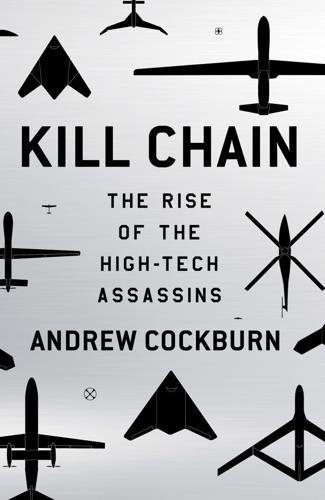
Kill Chain: The Rise of the High-Tech Assassins
by
Andrew Cockburn
Published 10 Mar 2015
This alliance mounted serial campaigns against costly weapons programs of dubious utility, and the customs and practices of the weapons-buying culture that produced and nurtured them, exposing which involved revelations from whistle-blowers prepared, in many cases, to risk or sacrifice their careers for the greater good. For the most part these efforts were eventually defeated by entrenched interests in the military-industrial complex, but the movement, which for a time enjoyed potent support in Congress, did succeed in creating the post of Director, Office of Operational Test and Evaluation, mandated by law to test new weapons systems as a corrective to the services’ sorry record of buying systems that worked badly or not at all when deployed.
…
But the ominous trend soon resumed, ticking up in a saw-toothed pattern, month after month, peaking at Ramadan in the fall, then dropping sharply as the Iraqi weather turned unpleasant before starting another upward climb in the spring. “Apart from when we first put armor on the vehicles,” recalled Rivolo, “nothing else we were doing was making much difference.” This was certainly not for want of effort by the burgeoning anti-IED military-industrial complex, now lavishly nurtured by JIEDDO’s multibillion-dollar budget, as well as a host of other centers and task forces across the military bureaucracy. Multiple initiatives funded by the organization included the training of bees to detect homemade bombs (soldiers had to watch screens with magnified images to see if the insects stuck their tongues out when close to explosives), sniffer dogs, and “Fido,” a $25,000 “molecular sniffer” designed to duplicate canine detection capabilities.
…
Fortunately, as of 2014 the Border Patrol had not been required to buy and operate the most expensive drone of them all. “Northrop took billions and billions of dollars off us, and gave us a piece of junk,” said a high-ranking Pentagon weapons acquisition official as we breakfasted at the Ritz-Carlton Hotel, Pentagon City (the social ground zero of the military-industrial complex). Our topic was Global Hawk, manufactured by the Northrop Grumman Corporation, the largest drone ever developed, lauded for its reach and endurance, touted as a giant step toward total situational awareness. A best-selling 2009 book on drones enthusiastically summarized its salient attributes, including the ability to “stay in the air up to 32 hours.
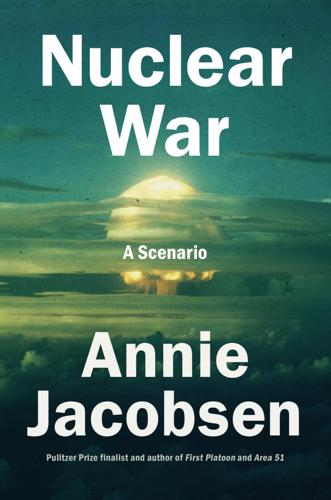
Nuclear War: A Scenario
by
Annie Jacobsen
Published 25 Mar 2024
Operation Crossroads injected the atomic bomb program with new life. By mid-1946, the American nuclear stockpile grew to nine atomic bombs. After the test, the Joint Chiefs of Staff requested an evaluation of the “atomic bomb as a military weapon” to determine its next move. The report—classified until 1975—set the burgeoning military-industrial complex alight. The details were alarming. Atomic bombs were “a threat to mankind and to civilization,” warned the group of admirals, generals, and scientists who authored the report, “weapons of mass destruction” able to “depopulate vast areas of the Earth’s surface.” But they could also be very useful, the group told the Joint Chiefs of Staff.
…
What came next was a mad, mad rush to stockpile thermonuclear weapons, first by the hundreds and then by the thousands. In 1952 there were 841 nuclear bombs. The next year there were 1,169. “The process became industrialized,” Los Alamos historian Glen McDuff explains. “These were not science projects anymore.” By 1954, there were 1,703 nuclear weapons in the stockpile. The U.S. military-industrial complex was now churning out (on average) 1.5 nuclear weapons per day. 1955: 2,422. Almost two bombs per day, and with ten new systems introduced including three new styles of thermonuclear bombs. 1956: 3,692 bombs. The numbers continued to escalate to the point of dizziness. With production levels soaring, these mass-destruction weapons were now coming off literal assembly lines at an average pace of 3.5 nuclear bombs per day.
…
Army) Twelve miles south of the Pentagon, at Fort Belvoir in Virginia, personnel at the Missile Defense Agency’s headquarters command center are freaking out. There is a myth among Americans that the U.S. can easily shoot down an incoming, attacking ICBM. Presidents, congresspeople, defense officials, and countless others in the military-industrial complex have all said as much. This is simply not true. The U.S. Missile Defense Agency is the organization responsible for shooting down incoming missiles in mid-flight. Its flagship system, the Ground-Based Midcourse Defense system, was built in the wake of North Korea’s accelerated ICBM program that began in the early 2000s.
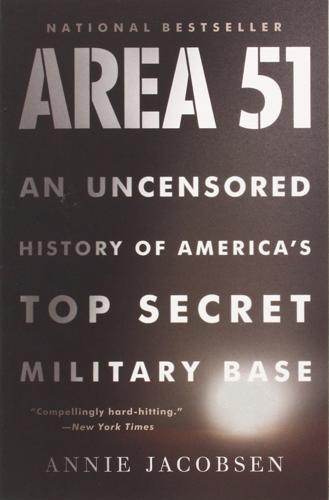
Area 51: An Uncensored History of America's Top Secret Military Base
by
Annie Jacobsen
Published 16 May 2011
Before the Communists took over, Sverdlovsk was called Yekaterinburg. It was there in 1918 that Czar Nicholas II and his family were lined up against a kitchen wall and shot, setting off the Communist Revolution that had made the Cold War a reality. To the Communists, the city of Sverdlovsk played an important role in the Soviet military-industrial complex, a place where tanks and rockets were built. It was also home to the Soviets’ secret bioweapons program, which on the date of Powers’s flight was not yet known to the CIA. Nearing Sverdlovsk, Powers made a ninety-degree turn. He headed toward what appeared to be an airfield not marked on his map.
…
During Powers’s trial, Soviet procurator-general Rudenko asked his comrade judges if they were familiar with “the deposition of the accused Powers which he gave in the preliminary investigations and here in court on the preparations for flights in the U-2 aircraft at the Las Vegas firing range (poligon) in the Nevada desert,” and then he fingered the base as being used by the CIA for “the training in the use of special reconnaissance aircraft.” Not before the publication of this book has it been understood that the KGB clearly knew about Area 51 during the Powers trial. Further, the trial revealed that the Soviets also had a much clearer picture of the inner workings of the American military-industrial complex and its defense-contracting system than the CIA had previously known. Rudenko was able to name “Lockheed company” as the manufacturer of the U-2. He argued that the existence of the “Las Vegas firing range,” aka Area 51, and the Lockheed spy plane exemplified what he called a “criminal conspiracy” between “a major American capitalist company, an espionage and reconnaissance center, and the military of America.”
…
Motivated by the public’s alarm, Senator Lyndon Johnson provided a foil to Eisenhower’s nonconfrontation, demanding a “full and exhaustive inquiry” from Congress to learn how the Russians had beaten the Americans into space. In doing so, Johnson cemented his persona as being tough on Communists. In turn, this made him an inadvertent advocate for missile defense and the military-industrial complex. Ultimately, it forced him to be a proponent for the Vietnam War. Now, six years and one month after Sputnik, Lyndon Johnson was president. Seven days after Kennedy was shot dead, Johnson sat in the Oval Office with CIA director John McCone being briefed on Oxcart and Area 51. Johnson loved the idea of the Agency’s secret spy plane, but not for the reasons anyone expected.

Multitude: War and Democracy in the Age of Empire
by
Michael Hardt
and
Antonio Negri
Published 1 Jan 2004
Not only have traditional, modern efforts of nonproliferation failed, but in fact the new productive technologies have provided the basis for what Laurent Murawiec calls “a proliferating proliferation”—an irresistible increase throughout the world of all kinds of weapons.56 When we are posing the relationship between warfare and economic production, we should be careful not to fall into the simplifications that often come under the label “military-industrial complex.” This term was created to name a confluence of interests in the imperialist phase of capitalist development between the major industrial enterprises and the state military and policy apparatus: between the Krupp steel works and the German army, for instance, Lloyds insurance and British imperialist projects, Dassault aviation manufacturing and Gaullist military policies, or Boeing and the Pentagon. Beginning in the 1960s the notion of a “military-industrial complex” became a mythical emblem for the control exerted by the war industries over human destiny as a whole.
…
Beginning in the 1960s the notion of a “military-industrial complex” became a mythical emblem for the control exerted by the war industries over human destiny as a whole. It came to be considered, in other words, as the subject of history rather than the result of the complex relations among industry, warfare, and institutions in response to resistance and liberation movements.57 The acritical reference to a “military-industrial complex” in populist terms (which sometimes smacks of anti-Semitism, recalling the old stereotypes of “Jewish bankers” as “war profiteers”) has thus become a form of historical oversimplification that serves to eliminate any real considerations of class conflict, insurgency, and, today, the movements of the multitude from political and theoretical analyses of war, its causes, and its social determinations.
…
These are movements that sovereign power must respond to and control in the entire range of their vital expressions, because, as we have seen, a war that seeks only to destroy the enemy is unable today to support a new form of command; it must not only destroy life but also create it. Perhaps rather than “military-industrial complex” we should start speaking of a “military-vital complex.” It is important to recognize how intimately biopower and war are connected in reality and at every level of our analysis. REVOLUTION IN MILITARY AFFAIRS The close relationship between the evolving technologies of economic production and those of military destruction is not only recognized by critics of the war machine.
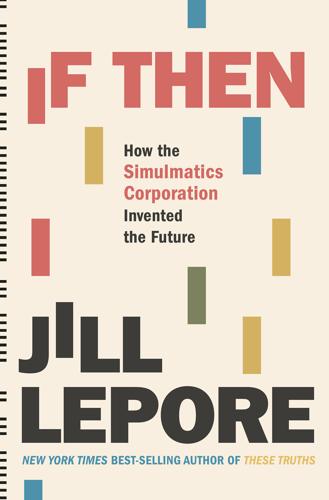
If Then: How Simulmatics Corporation Invented the Future
by
Jill Lepore
Published 14 Sep 2020
Citing the scale and influence of the arms industry, the three and a half million men and women working for the “defense establishment,” and the unprecedented scale of military spending, he told Americans, “we must guard against the acquisition of unwarranted influence, whether sought or unsought, by the military-industrial complex.” Even the “free university” had become beholden to the defense industry. “A government contract becomes virtually a substitute for intellectual curiosity,” he observed, noting, too, that “for every old blackboard there are now hundreds of new electronic computers.” What would be the consequences of the intellectuals of the nation being directed at nothing but defense?
…
Kerr, an economist much admired for his fortitude in the 1950s in the face of McCarthyism, had recently given a series of notable public addresses in which he’d described the modern research university as a corporation, part of the “knowledge industry,” a place where not education but “the production, distribution, and consumption of knowledge” happened, for the sake of economic growth.69 From the students’ vantage, Kerr had aligned the University of California with the military-industrial complex warned of by Eisenhower. He had elevated engineering and computers above art and poetry. He had abandoned long-held intellectual principles, as well as principles of university and civic life: academic freedom, the freedom of expression, the vitality of dissent, the importance of individuals and of the humanities.
…
William Fulbright indicted the Johnson administration for dedicating new and ever greater resources to an unwinnable, immoral war and argued that American universities funded by the Department of Defense had abandoned the role of the university in a democracy. “The universities might have formed an effective counterweight to the military-industrial complex by strengthening their emphasis on the traditional values of our democracy,” Fulbright said, “but many of our leading institutions have instead joined the monolith, adding greatly to its power and influence.” He denounced any university that had made “itself an appendage to the Government,” a description that fit no American university better than MIT.37 Meanwhile, the Johnson administration and its supporters sought to calm the student protest movement.

Kitten Clone: Inside Alcatel-Lucent
by
Douglas Coupland
Published 29 Sep 2014
But I’m actually standing in front of Bell Laboratories—Bell Labs—a sprawling industrial research campus built of brick the colour of a wet golden Labrador, in the centre of suburban New Jersey’s belt of once-utopian corporate campuses that began springing up here in the 1950s, the acme of the military industrial complex era. A pyramid-capped core building, maybe eight stories high, has two symmetrical wings that flank the central area and absorb what is clearly an older, 1940s utilitarian structure, visible at the complex’s rear side, to the east. The oak trees here are big; maybe they were planted back then.
…
Bell Labs’ job throughout that century was to research and perfect a near-indestructible American telephone system. And to their credit, they did. They accomplished this task beneath a protective monopolistic cloak provided by the U.S. government, who deemed communications research too valuable to be left to the free-market research and development system. Thus the military industrial complex! When the Internet began, remember, it used phone lines, not the remarkable optical fibres we can no longer live without, which were invented … here at Bell Labs. So a discussion of the Internet and twenty-first-century communications starts here. To be extremely specific, the Internet was born at 10:30 p.m. on the evening of October 29, 1969, when a computer at the University of California, Los Angeles, used the telephone system devised at Bell Labs to connect with another computer at the Stanford Research Institute in what had yet to become Silicon Valley.
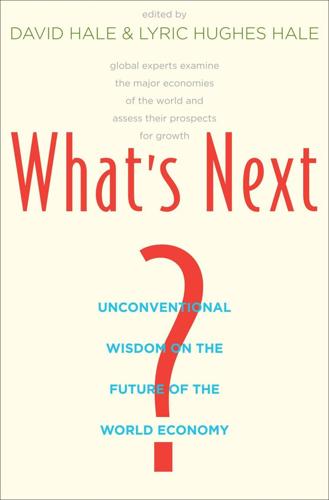
What's Next?: Unconventional Wisdom on the Future of the World Economy
by
David Hale
and
Lyric Hughes Hale
Published 23 May 2011
The Guard is now drawing up elaborate plans for creating revenue streams from less expensive defense alternatives for developing nations. Robert Baer, a former CIA officer specializing in the Middle East, calls the Guard “the masters of asymmetrical warfare.” In short, the IRI now has its own military-industrial complex. Upon their return from the front lines in 1988, the privileged members of the Revolutionary Guard were able to negotiate commercial favors from then-President Rafsanjani. Two decades after the war, they now own ports on both Iranian coasts: the Persian Gulf and the Caspian Sea. These enterprises receive billions in transit fees from the newly independent landlocked countries of Central Asia with a voracious appetite for goods from abroad.
…
This is a nation that has existed for twenty-five centuries on more or less the same plot of land, and whose people have a very strong sense of themselves and their nationhood.”3 In his 2010 book Reset, Kinzer advocates a more Iran-Turkey–anchored US policy in the Middle East.4 Clearly, the outside world’s sanctions-and-nuclear-tech-oriented approach to Iran since the 1980s has not worked. To paraphrase award-winning scholar Trita Parsi, author of Treacherous Alliance—The Secret Dealings of Iran, Israel and the United States,5 it has most likely hurt the Iranian people more than the regime. It has created incentives for the development of a nascent military-industrial complex. Normalized relations with Iran, which closely monitor human rights, will probably do more to propel the country along the one-hundred-year-old path of democratization than isolation by the great powers. Any assessment of Iranian politics has to go beyond the chess game of personalities and take into account the role of Iranian civil society and Reformist Islam, which will likely redefine the Islamic world’s language of politics and liberate religion from the pitfalls of statecraft and its new political economy.
…
Its stock exchange suffers from serious transparency and governance issues that preclude it from attracting significant international capital, despite the fact that it was one of the best performing exchanges in the world in the early 2000s and 2008. The arrest of two IRGC members by Nigerian authorities for smuggling massive amounts of armaments destined for other West African countries, through a private-sector entity, indicates that the Iranian military-industrial complex intends to reach new markets, regardless of legality and international conventions. Critical to the peaceful evolution of Iranian society will be the ability to convince the new Iranian military-business elite that their long-term interests, including the attraction of international capital, lie with the transition to a rule-of-law-based capitalism rather than a version of crony/gangster capitalism.

Nomad Citizenship: Free-Market Communism and the Slow-Motion General Strike
by
Eugene W. Holland
Published 1 Jan 2009
The broad outlines of the Death-State, and especially its amalgamation of the State and the capitalist economy in a total war-machine, were already legible in the aftermath of World War II and were noted by figures as di verse as Georges Bataille, George Orwell, and Dwight Eisenhower—the general-turned-president who, in his final presidential address, coined the term military-industrial complex to designate two important components of the lethal synergy or resonance between economics and politics char acterizing the Death-State. Schizoanalysis completes the characterization by adding a psychological register to the economic and the political, as we shall see in chapter 2. Yet the Problems to which nomad citizenship and free-market commu nism respond lie deeper still.
…
The object of the global-capitalist war-machine, according to Deleuze and Guattari, is no longer hot war (as means to an end furnished by the State) but capital accumulation itself, which, at the time they wrote, took the form of a cold war of deterrence in which the State-administered welfare system and military-industrial complex were no more than political means serving ultimately economic ends (capital accumulation).101 But it has taken a variety of different forms since. Of course, this neat conceptual categorization inevitably belies the complexity of actual historical states of affairs, particularly regarding the relations between the State and global capitalism, between politics and economics as ends and means, and between war-machines and war itself.
…
The death that was refused within the bounds of a State now devoted not to glorious expenditure but merely to furthering capital accumulation gets projected and inflicted outside the bounds of the State through military expenditure in the service of what Eisenhower famously called the military-industrial complex. These are two very powerful accounts of the state of death in the psy chic and social registers, but each assigns causal priority to a different register. So how are we to understand the relation between them? Clearly an obsessive psychological future orientation in search of an impossible state of complete gratification gets captured by—or does it foster?
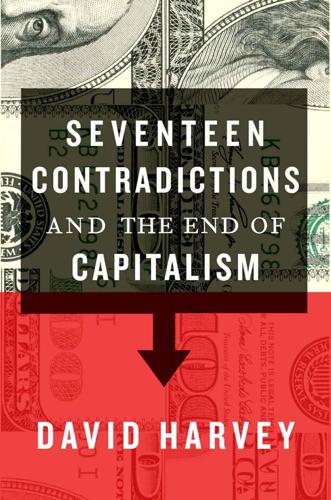
Seventeen Contradictions and the End of Capitalism
by
David Harvey
Published 3 Apr 2014
Government planning at a variety of scales (macroeconomic, urban, regional and local) takes centre stage sometimes in competition with but more often in partnership with private and corporate activities. A large segment of capital accumulation then passes through the state in ways that are not necessarily directed to profit-maximising but to social or geopolitical ends. Even in states most devoted to the principles of privatisation and neoliberalisation, the military-industrial complex is set apart from the rest of the economy as a lucrative trough at which private subcontracted interests freely feed. From the other end of the political spectrum, the manner of organising state finances is something libertarians clearly see as profoundly contradictory to individual liberties and freedoms.
…
EU regulations have, to take one example, forced small shopkeepers and restaurants to adopt electronic machines for cash transactions for tax and record-keeping purposes, putting them at a cost disadvantage relative to chain stores. The diffusion of new technologies occurs through a mix of consent and coercion. The development of military technologies, on the other hand, has become nothing short of a scandalous racket, whereby a vast military industrial complex feeds endlessly at the trough of public finance while innovating for innovation’s sake. The path of technological evolution has not been random or accidental. As Brian Arthur points out in The Nature of Technology, new technologies become building blocks ‘for the construction of further new technologies.
…
They are all too easily subverted, co-opted and corrupted by moneyed interests. Conversely, the foundational interests of the state in, for example, the case of national security can be subverted by capital and turned into a permanent feeding trough for capitalist ambitions – hence the historical role of the infamous ‘military–industrial complex’ in the development of capital. States can use their powers to orchestrate economic life not only through their command over infrastructural investments but also through their powers to create or reform basic institutions. When, for example, local banking was supplanted by national banks in Britain and France in the nineteenth century, the free flow of money capital across the national space altered regional dynamics.
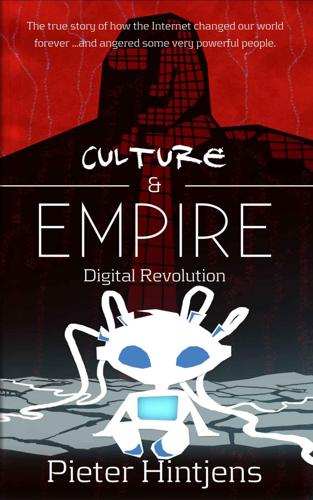
Culture & Empire: Digital Revolution
by
Pieter Hintjens
Published 11 Mar 2013
These men had made phony war their business for decades, and ran the largest budgets in the world, so when their era of "mutually assured destruction" ended, they were presumably looking for new work. I would, in their place. I think that by the end of the last century, Islam was selected as the best candidate for a Bad Guy to replace the crumbling East-West divide with its slowing profits for the military-industrial complex. We have the mass immigration of North Africans and Turks into Europe as the basis for anti-Islamic public policies in Europe. We have the conflicts in Chechnya, Indonesia, India, Afghanistan, ex-Yugoslavia, and of course, Palestine, to prove how Islam is the religion of hate. We had at least $600 million of American money going to Gulbuddin Hekmatyar, the founder of the Hezb-e Islami radical Islamic militant faction.
…
Be born into a life of privilege, where luxury hotels are for the poor and outcast, and you will know to the core of your being that you are a god walking among mortals. And gods answer to no one, except perhaps higher gods. Follow the money. On the one hand, you have a political elite who are convinced the world is about to end if they don't take drastic action soon. On the other hand, you have a military-industrial complex not so keen on retirement and a 75% cut in income. And on the third hand, you have a compliant public with savings, pensions, and a shockingly innocent trust in their rulers. So a terrorist threat created and pumped up entirely to satisfy a paranoid elite's need for an external threat is not far-fetched.
…
Our current web architecture, built on centralized servers, accessed through commercial broadband links, is trivial to tap. I've explained how the cost of storing everything interesting about us is falling down to zero. As to the "why," we see the Para-state -- a paranoid global political elite fighting to hold onto power -- prodded by a military-industrial complex that was running out of enemies before the terrorists, drug cartels, and on-line pedophiles conveniently came along. It doesn't even require a conspiracy. The collapsing cost of storage and computing power, combined with the centralized Web, makes global surveillance an inevitable outcome.
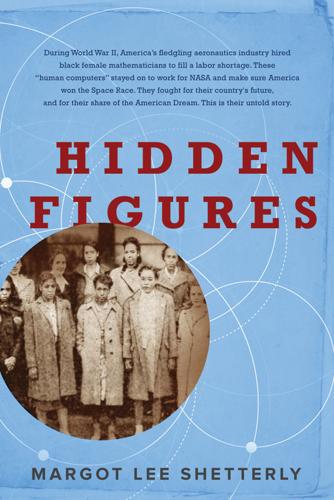
Hidden Figures
by
Margot Lee Shetterly
Published 11 Aug 2016
The defense establishment’s grip on the economy of southeastern Virginia had become so strong during the war, its influence so critical to the material well-being of the local residents, that just as Hampton Roads was once the very model of the war boomtown, so too had it become a warfare state, dependent on the defense industry dollars that lapped into the region like waves on the shores of its beaches. Hampton Roads had become the embodiment of what Cold War president Dwight D. Eisenhower would a decade later dub the “military-industrial complex.” The inevitable reduction in force that visited Langley—the staff had peaked at more than three thousand employees just before V-J Day—was short-lived and shallow, mostly accomplished through the natural attrition of those who decided it was time to move on from their life at Langley.
…
The launch date for Project Mercury’s first manned mission slipped into 1961, a year that announced itself as unpredictable from the start: on January 3, the United States cut diplomatic relations with Cuba, another step down the road in the Cold War with the Soviet Union. President Dwight Eisenhower, in his farewell speech in January 1961, railed against the United States’ growing military-industrial complex. On March 6, 1961, President John F. Kennedy, newly inaugurated, announced Executive Order 10925, ordering the federal government and its contractors to take “affirmative action” to ensure equal opportunity for all of their employees and applicants, regardless of race, creed, color, or national origin.
…
Collins, “The Wage Gains of African-American Women in the 1940s,” Journal of Economic History 66, no. 3 (September 2006): 737–77. 79 took a walk around the block: Michelle Webb, personal interview, February 10, 2016. 79 headquarters of its Tactical Air Command: “Gen. Devers Takes Command of Fort Monroe, New AGF Base,” Washington Post, October 2, 1946. 80 “military-industrial complex”: Dwight D. Eisenhower, “Farewell Address,” January 17, 1961, https://www.ourdocuments.gov/doc.php?doc=90&page=transcript. 80 more than three thousand employees: Hansen, Engineer in Charge, 413. 80 tendered their resignations: Golemba, “Human Computers,” 90. 81 top-ranked managers: Ibid., 90–91. 81 “excellent” ratings: Ibid. 81 had been appointed shift supervisors: Fitchett Personnel File. 81 had swelled to twenty-five women: Ibid. 81 often worked the 3:00 p.m.
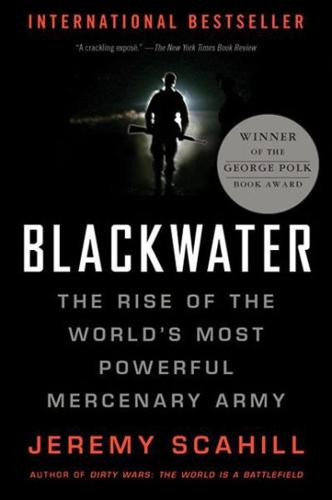
Blackwater: The Rise of the World's Most Powerful Mercenary Army
by
Jeremy Scahill
Published 1 Jan 2007
—Courier-Journal “At Blackwater USA, Jeremy Scahill’s is the face they love to hate . . . [He is] perhaps the private military company’s most dogged critic.” —Virginian-Pilot “Jeremy Scahill’s exhaustive Blackwater appears with perfect timing . . . Dwight Eisenhower warned decades ago against the emergence of a military-industrial complex. Scahill sees in the rise of Blackwater the fulfillment of that dark prophecy.”—Weekend Australian “Blackwater being rarely out of the news lately, this is a very useful survey of modern mercenaries—or, as they prefer to be called, ‘private security contractors’ in the ‘peace and stability industry’ . . .
…
Coming as it did in the midst of an open-ended, loosely defined global war, this formal designation represented a radical rebuke of the ominous warnings laid out by President Eisenhower in his farewell address to the nation decades earlier during which he envisioned the “grave implications” of the rise of “the military-industrial complex.” In 1961, Eisenhower declared, “The potential for the disastrous rise of misplaced power exists and will persist. We must never let the weight of this combination endanger our liberties or democratic processes. We should take nothing for granted. Only an alert and knowledgeable citizenry can compel the proper meshing of the huge industrial and military machinery of defense with our peaceful methods and goals, so that security and liberty may prosper together.”
…
Three months later, the company was handed one of the U.S. government’s most valuable international security contracts: to protect diplomats and U.S. facilities. The highly publicized deaths of four of its private soldiers would prove to be the spark that set Blackwater on a path to success for years to come. The story of Blackwater’s rise is an epic one in the history of the military-industrial complex. The company is the living embodiment of the changes wrought by the revolution in military affairs and the privatization agenda radically expanded by the Bush administration under the guise of the war on terror. But more fundamentally, it is a story about the future of war, democracy, and governance.

A Theory of the Drone
by
Gregoire Chamayou
Published 23 Apr 2013
The old model of an army of citizens gave way to a “market army.”18 The key to this mutation was fundamentally economic, for “by making conscription and casualties less likely, capitalization turns arming and war into exercises of fiscal, rather then social, mobilization.”19 However, this dynamic of capitalization was not independent of political choices, which themselves were deeply intertwined with the interests of the military-industrial complex. Niklas Schörnig and Alexander Lembcke have shown, in this regard, how the ethical and political discourse of “zero losses” has been very effectively promoted by industrialists producing armaments.20 In 2002, one advertisement for the Boeing X-45A drone proclaimed, “Aircrews won’t have to be put at risk to complete the most dangerous of missions.”21 The two preoccupations—that of the industrialists wanting to sell new weapons, and that of politicians seeking to preserve their electoral capital—converged and interacted, each overdetermining the other.
…
See Michel Pastoureau, Une histoire symbolique du Moyen Age occidental (Paris: Seuil, 2004), 33. 17. Kenneth Anderson and Matthew Waxman, “Law and Ethics for Robot Soldiers,” Policy Review, no. 176 (December 2012). 18. Ibid. 19. For years, Ronald Arkin has been working on their development, thanks to generous financial aid from the military-industrial complex, which includes DARPA, the US Army, the Savannah River Technology Center, Honda R & D, Samsung, CS Draper Laboratory, SAIC, NAVAIR, and the Office of Naval Research, www.cc.gatech.edu/-arkin. 20. In September 2009, the physicist Jürgen Altmann, the philosopher Peter Asaro, the roboticist Noel Sharkey, and the philosopher Robert Sparrow founded the International Committee for the control of robotic weapons, the Committee for Robot Arms Control (ICRAC), which calls for the prohibition of robotic killers.
…
Predator, 114 martyrdom, 86–88 Marx, Karl, 203 Mastiff drones, 27–28 Mathewson, Eric, 102 Matulich, Peter, 69 McChrystal, Stanley A., 60 McMahan, Jeff, 164 McNair, Rachel, 112–13 mechanical superego, 208 Mehsud, Baitullah, 70 Meilinger, Phillip, 63–64 Melzer, Yehuda, 269–70n10 metadata, 40–41 Mexico, 33 Miasnikov, Eugene, 78 Middle Ages, 74, 94 Milgram, Stanley, 118–19, 255n17 militants, suspected, 145 militarism, 184 democratic, 185–94 military atrocities, legalism of, 216–17 See also war crimes military ethics, 97, 146, 198, 216 applied, 162–63 robots and, 208 See also military ethos; necroethics “Military Ethics of Fighting Terror” (Yadlin), 131–32 military ethos, 17, 97, 107, 121 citizenship and, 132–34, 154–56 crisis in, 96–105 endangerment of civilians and, 133–34 of IDF, 131 nationalism and, 132–33 preservation of life and, 100–101, 131–33, 136–37 warfare without risk and, 129–30 military-industrial complex, 192 military law enforcement, 163, 165–66, 168, 169 military psychology, 106–24, 123 military vision, technology of, 114 See also surveillance Minima Moralia (Adorno), 205 “minimum carnage,” 216 Minsky, Marvin, 214 missiles cruise, 232n3 surface-to-air, 27–28 mission intelligence coordinators, 2, 5, 7–9 Mitchell, Pete “Maverick,” 99 mobilization, delegation of, 187–88 Mogadishu, 128 Monahan, Torin, 235n21 Monroe, Marilyn, 25, 26 Montgomery County, Texas, sheriff’s office, 203 “moral buffering” effect, 119, 255n21 moral hazard, 188–89, 190 morality technology and, 135–39 See also ethics; military ethics; military ethos; necroethics nano-drones, 56 National Geospatial-Intelligence Agency, 49 nationalism, military ethos and, 132–33 National Public Radio (NPR), 103 National Rifle Association, 31 Native Americans, genocide of, 202 Nazis, 205, 207 necroethics, 17, 146–48, 153–56, 163, 189 Nef, John Ulric, 254–55n12 Nellis Air Force Base, 29 network-centric warfare, 34, 215 The New York Times, 46, 64, 74–75, 107–8, 146 Nexus Topography, 34 Niciases, 102 nodes, 34 noncombatants.

Americana: A 400-Year History of American Capitalism
by
Bhu Srinivasan
Published 25 Sep 2017
We must guard against the acquisition of unwarranted influence, whether sought or unsought, by the military-industrial complex. . . . We must never let the weight of this combination endanger our liberties or democratic processes. We should take nothing for granted. Only an alert and knowledgeable citizenry can compel the proper meshing of the huge industrial and military machinery of defense with our peaceful methods and goals, so that security and liberty may prosper together. • • • YET IN ENTERING “military-industrial complex” firmly into the national lexicon, Eisenhower pointed to a “technological revolution” in the business of cold-war defense, with modern research and development now requiring “hundreds of new electronic computers” at immense cost.
…
The group was known as the Whiz Kids, young men with no specific industry training but who embodied the supreme technocratic idea that all organizations were simply vast collections of quantifiable information that changed minute by minute, day to day—if it could be measured, it could be managed. Of this talented group, McNamara was seen as the most brilliant, a rational man among rational men. Senator Barry Goldwater would call him “an IBM machine with legs.” It was only fitting that such a man should be entrusted with overseeing the “military-industrial complex.” • • • OF ALL COMPANIES, IBM had been the primary beneficiary of the military’s growing investment in computing research. Its 1960 revenues had grown to just a notch under $2 billion, a staggering increase from ten years earlier. Yet the company’s roots, and in a sense computing itself, could be traced back to a constitutional function as basic as national defense.
…
Indeed, the once-celebrated Robert McNamara learned firsthand the tragic limits of objective facts and figures, the danger of data failing to tell the whole story or, worse, obfuscating the most basic insights of human judgment. Here was America with satellites, computers, jet fighters, and billions of dollars dedicated to defense, yet the conduct of the Vietnam War itself looked far less modern than the terms such as “military-industrial complex,” “space race,” or “electronic brains” would seem to imply. A simple count of money and weapons pointed to victory. But the intransigent North Vietnamese, with barely one foot removed from their rice paddies and agrarian roots in terms of economic development, refused to open their hearts and minds to the twin virtues of democracy and capitalism and were somehow fighting a superpower to a stalemate.

Americana
by
Bhu Srinivasan
We must guard against the acquisition of unwarranted influence, whether sought or unsought, by the military-industrial complex. . . . We must never let the weight of this combination endanger our liberties or democratic processes. We should take nothing for granted. Only an alert and knowledgeable citizenry can compel the proper meshing of the huge industrial and military machinery of defense with our peaceful methods and goals, so that security and liberty may prosper together. • • • YET IN ENTERING “military-industrial complex” firmly into the national lexicon, Eisenhower pointed to a “technological revolution” in the business of cold-war defense, with modern research and development now requiring “hundreds of new electronic computers” at immense cost.
…
The group was known as the Whiz Kids, young men with no specific industry training but who embodied the supreme technocratic idea that all organizations were simply vast collections of quantifiable information that changed minute by minute, day to day—if it could be measured, it could be managed. Of this talented group, McNamara was seen as the most brilliant, a rational man among rational men. Senator Barry Goldwater would call him “an IBM machine with legs.” It was only fitting that such a man should be entrusted with overseeing the “military-industrial complex.” • • • OF ALL COMPANIES, IBM had been the primary beneficiary of the military’s growing investment in computing research. Its 1960 revenues had grown to just a notch under $2 billion, a staggering increase from ten years earlier. Yet the company’s roots, and in a sense computing itself, could be traced back to a constitutional function as basic as national defense.
…
Indeed, the once-celebrated Robert McNamara learned firsthand the tragic limits of objective facts and figures, the danger of data failing to tell the whole story or, worse, obfuscating the most basic insights of human judgment. Here was America with satellites, computers, jet fighters, and billions of dollars dedicated to defense, yet the conduct of the Vietnam War itself looked far less modern than the terms such as “military-industrial complex,” “space race,” or “electronic brains” would seem to imply. A simple count of money and weapons pointed to victory. But the intransigent North Vietnamese, with barely one foot removed from their rice paddies and agrarian roots in terms of economic development, refused to open their hearts and minds to the twin virtues of democracy and capitalism and were somehow fighting a superpower to a stalemate.

Distrust That Particular Flavor
by
William Gibson
Published 3 Jan 2012
At which point it would start to resemble…. But it’s not Steam Engine Time yet, so you can’t do that. Although you would, or anyway you’d think about it, if you were a man named Vannevar Bush, but we’ll come back to him later. Vannevar Bush almost single-handedly invented what we now think of as the military-industrial complex. He did that for Franklin Roosevelt, but it isn’t what he’ll be remembered for. I can’t remember a robot ever scaring me that much, after Dr. Satan’s robots. They continued to be part of the cultural baggage of sci-fi, but generally seemed rather neutral, at least to me. Good or bad depending on who was employing them in a given narrative.
…
Vannevar Bush, whom I mentioned earlier, was not a science-fiction writer. In World War II he was chief scientific adviser to Franklin Roosevelt, and director of the Office of Scientific Research and Development, where he supervised the work that led to the creation of the atomic bomb. He more or less invented the military-industrial complex, as we call it today. In 1945, he published an article in The Atlantic Monthly titled, “As We May Think.” In this article he imagined a system he called the “memex,” short for “memory extender.” If there was a more eerily prescient piece of prose, fiction or otherwise, written in the first half the twentieth century, I don’t know it.
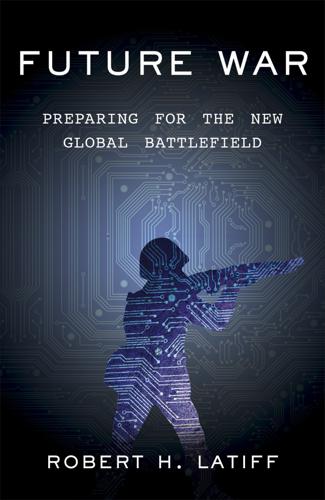
Future War: Preparing for the New Global Battlefield
by
Robert H. Latiff
Published 25 Sep 2017
More recently, the Defense Department inspector general found that improper grounding or faulty equipment in showers installed by a military contractor in Iraq caused soldiers’ deaths. The report concluded that multiple systems and organizations had failed the soldiers. While the weapons the military develops and buys have changed, the importance of the military-industrial complex has not. The goal is the acquisition of the best weapons possible for our soldiers, but the weapons-buying process has many interested stakeholders, who sometimes forget the primacy of that goal. Industry gets profits, members of Congress get jobs in their districts, universities get research support, and the military gets continuously updated capabilities.
…
If we continue to spend astronomical sums of money on weapons for which we get less and less in return, while ignoring or underfunding the basic human needs of our people, we may find we have a first-rate military and a second-rate society. President Eisenhower, in his oft-quoted final address to the nation, warned not only of undue influence of the military-industrial complex, but of the imperative to care for human needs, saying that “each proposal must be weighed in light of a broader consideration: the need to maintain balance.” Our leaders also must be honest with the public about the size of the military. The use of private contractors has gotten out of hand.
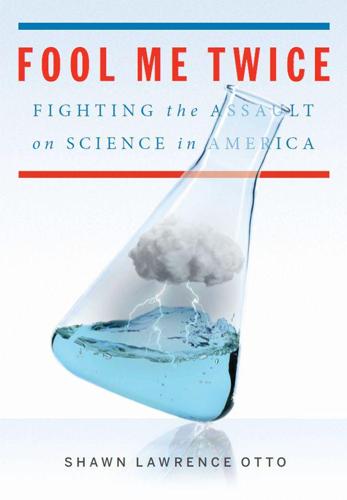
Fool Me Twice: Fighting the Assault on Science in America
by
Shawn Lawrence Otto
Published 10 Oct 2011
The twin threads of fear and resentment created a growing sense that science might be outpacing the ability of a democracy to govern itself. The situation was alarming enough that it compelled President Eisenhower to warn the American people about it. On January 17, 1961, in his farewell address to the nation, he famously warned of the dangers of the emerging “military-industrial complex.” Ike blamed the growing funding of science by the federal government as the primary cause of the rising behemoth and complained that the solitary inventor was being overshadowed by teams of scientists in cloistered labs hidden from the watchful eye of the public and awash in taxpayer money.
…
Advances in government- and industry-funded science were viewed with increasing skepticism, and the baby boomers found their power by questioning the authority of the government and, by extension, government science. Parents didn’t have any good answers. This was new territory. The social order was being upended. Scientists and engineers as a whole were suddenly seen as vaguely jingoistic and associated with the military-industrial complex, as were traditional organized religion and other sources of authority. The general culture began moving more toward nature, hedonism, and spiritualism. And why not? Faced with what seemed like the collapse of the mainstream culture’s moral authority but lacking the power to change it, many baby boomers over the next decade either railed with rage in anarchistic riots or tuned in, turned on, and dropped out, setting the twin paths of anarchy and spiritualism that have come to define the generation.
…
It was in some senses an example of the third culture C. P. Snow had hoped for—a marriage of literary resonance with “doing the big things,” as Kennedy had urged in his United Nations address. The remainder of the 1960s and 1970s, however, brought increasing disillusionment with the authority of the mainstream culture and the military-industrial complex that science had become closely aligned with. NASA battled this growing antiscience backlash with an increasingly powerful narrative that culminated in the dramatic 1968 Apollo 8 mission, in which humans left Earth’s orbit for the first time and traveled to orbit the Moon in a capsule named the Beagle 2, after Darwin’s vessel.

Surveillance Valley: The Rise of the Military-Digital Complex
by
Yasha Levine
Published 6 Feb 2018
The book starts in the past, going back to the development of what we now call the Internet during the Vietnam War. But it quickly moves into the present, looking at the private surveillance business that powers much of Silicon Valley, investigating the ongoing overlap between the Internet and the military-industrial complex that spawned it half a century ago, and uncovering the close ties that exist between US intelligence agencies and the antigovernment privacy movement that has sprung up in the wake of Edward Snowden’s leaks. Surveillance Valley shows that little has changed over the years: the Internet was developed as a weapon and remains a weapon today.
…
At the University of Michigan, students attempted to block campus recruitment by Dow Chemical, which produced the napalm that rained down on Vietnam.86 Someone blew up the Army Mathematics Research Center at the University of Wisconsin.87 The Weather Underground set off a bomb inside Harvard’s Center for International Affairs.88 They wanted to stop the Vietnam War. They also wanted to halt the cooptation of academic research by the military-industrial complex. ARPA programs were a constant target. Students protested against the ILLIAC-IV, the massive ARPA supercomputer housed at the University of Illinois.89 They targeted the Stanford Research Institute, an important ARPA contractor involved in everything from chemical weapons research to counterinsurgency work and development of the ARPANET.
…
At the same time, he experimented with LSD and dosed other computer engineers with acid to see whether it made them more efficient and creative. He also went on a tour of various communes and was highly supportive of the movement’s attempt to create new forms of decentralized societies.28 The feeling was mutual. The Bay Area hippie counterculture scene lived and breathed the cybernetic ideas pumped out by America’s military-industrial complex. Richard Brautigan, a shaggy-haired writer with a droopy mustache who lived in San Francisco, composed an ode to the coming cybernetic utopia that demonstrates the spiritual closeness of these two seemingly contradictory worlds. Published in 1967 and titled “All Watched Over by Machines of Loving Grace,” the poem describes a world in which computers merge with nature to create a kind of altruistic god-like being that would take care of us all—a world “where mammals and computers / live together in mutually / programming harmony / like pure water / touching clear sky.”29 Brautigan handed his poem out on Height Street, the epicenter of the counterculture movement.

Palo Alto: A History of California, Capitalism, and the World
by
Malcolm Harris
Published 14 Feb 2023
Poniatoff moved into a different floor of the Dalmo Victor building, Dalmo Victor bought Ampex motors for its antennas, Ampex recruited from Stanford’s engineering graduates, and the Motorshavers had a second company. (Poniatoff’s first hire was a recent Stanford master’s graduate named Myron Stolaroff, who will play a larger role in the story once an LSD trip changes his career trajectory and perhaps world history.)9 By cleverly pursuing his self-interest, Tim Moseley made something with what the military-industrial complex made with him, and the Bay Area’s tech ecosystem benefited. In the Hoover tradition, self-interest became community interest. The Second World War allowed Moseley to make himself one of the region’s first successful electronics hustlers, but not everyone in the milieu pursued the antifascist cause with the same business zeal.
…
His son Fred took up the mantle, communicating among his students, colleagues, friends: Bill Hansen at Sperry, Charles Litton at ITT (then making magnetron tubes, a contract Fred made sure Litton got), Bill Hewlett at the U.S. Army Signal Corps.15 However, Fred Terman does not seem to have kept in touch with the one fellow genius test subject who was perhaps the closest thing to a peer he had in the military-industrial complex, another golden boy from Palo Alto who was forged into a powerful scientific instrument for the Allied war effort: William Shockley Jr. When war research took over the American scientific community in 1939, Shockley was working at Bell Labs, trying to figure out why his model of a semiconducting transistor wasn’t working in real life—more on that in the next section.
…
It’s important to remember that the 1960s left-wing milieu, on campus and off, was intellectual to a fault. Despite the critiques of the RAM and other “all talk” groups, research and even scholarship were key left-wing activities. The anti-napalm campaign was a model for the Palo Alto left going into the late ’60s: direct action backed up by detailed study of the military-industrial complex. This idea fits with Aaron Manganiello’s goal for Venceremos College—to produce “revolutionary technicians” who would turn their professional-caliber training into an anticapitalist weapon and put it at the community’s disposal.60 And these technicians were not just engineers; one example was the San Jose Chicano playwright Luis Valdez, who as a San Jose State University student in the early ’60s developed a new form of street theater that he then brought into the grape fields to support farmworker organizing.61 Teatro Campesino’s syncretic agitprop started a true artistic tradition, and Valdez’s successful play about the Zoot Suit Riots secured that story’s place in the history books.xxi Could white Stanford students learn from Third World revolutionaries (at home and abroad) and put their education to work for the revolution?
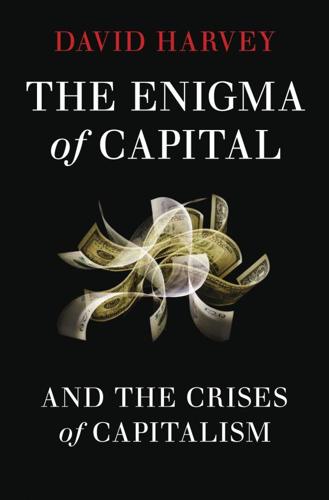
The Enigma of Capital: And the Crises of Capitalism
by
David Harvey
Published 1 Jan 2010
State-sponsored, though nominally autonomous ‘learned societies’ – for example, the Académie Française and the British Royal Society – started to sponsor research initiatives, such as the celebrated search for a chronometer that would work on the high seas and thereby facilitate navigation (the aristocratic orders that still held power refused, however, to recognise the achievement of a mere artisan, John Harrison, who actually solved the problem in 1772). What later on came to be called a ‘military–industrial complex’ emerged in shadowy form early on in the history of capitalist state development (the ‘Ponts et Chaussées’ organisation, founded in 1747, became legendary in France for its scientific and technological expertise on infrastructural and military construction problems). But it was only during and after the Second World War that this aspect of innovative behaviour became paramount as Cold War arms races, space races and all the rest of it involved the state directly in research and development activity along with capitalist firms in different sectors of the economy (everything from nuclear energy to satellite imaging and public health).
…
State formation and interterritorial competition sets the stage for conflicts of all sorts, with war the ultimate resort. Capital, as it were, creates some of the necessary conditions for the modern forms of warfare but the sufficient conditions lie elsewhere, within the state apparatus and with the interests that seek to use state power for their own narrow benefit (including, of course, the ‘military industrial complex’ that survives largely through promoting fear of conflict, if not the conflict itself). The coercive laws of interterritorial competition operate, however, with different effects at different geographical scales: between power blocs (such as Europe, North America, east Asia), between states, between regional entities (such as states in the United States or regional governments like Catalonia or Scotland in Europe), as well as between metropolitan regions, cities and even local townships and neighbourhoods.
…
.: Limits to Growth 72 meat-based diets 73, 74 Medicare 28–9, 224 Mellon, Andrew 11, 98 mercantilism 206 merchant capitalists 40 mergers 49, 50 forced 261 Merrill Lynch 12 Merton, Robert 100 methane gas 73 Mexico debt crisis (1982) 10, 19 northern Miexico’s proximity to the US market 36 peso rescue 261 privatisation of telecommunications 29 and remittances 38 standard of living 10 Mexico City 243 microcredit schemes 145–6 microeconomics 237 microenterprises 145–6 microfinance schemes 145–6 Middle East, and oil issue 77, 170, 210 militarisation 170 ‘military-industrial complex’ 91 minorities: colonisation of urban neighbourhoods 247, 248 Mitterrand, François 198 modelling of markets 262 modernism 171 monarchy 249 monetarism 237 monetisation 244 money centralised money power 49–50, 52 a form of social power 43, 44 limitlessness of 43, 47 loss of confidence in the symbols/quality of money 114 universality of 106 monoculture 186 Monopolies Commission 52 monopolisation 43, 68, 95, 113, 116, 221 Monsanto 186 Montreal Protocol (1989) 76, 187 Morgan Stanley 19 Morishima, Michio 70 Morris, William 160 mortgages annual rate of change in US mortgage debt 7 mortgage finance for housing 170 mortgage-backed bonds futures 262 mortgage-backed securities 4, 262 secondary mortgage market 173, 174 securitisation of local 42 securitisation of mortgage debt 85 subprime 49, 174 Moses, Robert 169, 171, 177 MST (Brazil) 257 multiculturalism 131, 176, 231, 238, 258 Mumbai, India anti-Muslim riots (early 1990s) 247 redevelopment 178–9 municipal budgets 5 Museum of Modern Art, New York 21 Myrdal, Gunnar 196 N Nandigram, West Bengal 180 Napoleon III, Emperor 167, 168 national debt 48 National Economic Council (US) 11, 236 national-origin quotas 14 nationalisation 2, 4, 8, 224 nationalism 55–6, 143, 194, 204 NATO 203 natural gas 188 ‘natural limits’ 47 natural resources 30, 71 natural scarcity 72, 73, 78, 80, 83, 84, 121 nature and capital 88 ‘first nature’ 184 relation to 121, 122 ‘the revenge of nature’ 185 ‘second nature’ 184, 185, 187 as a social product 188 neocolonialism 208, 212 neoliberal counter-revolution 113 neoliberalism 10, 11, 19, 66, 131, 132, 141, 172, 175, 197, 208, 218, 224, 225, 233, 237, 243, 255 Nepal: communist rule in 226 Nevada, foreclosure wave in 1 New Deal 71 ‘new economy’ (1990s) 97 New Labour 45, 255 ‘new urbanism’ movement 175 New York City 11 September 2001 attacks 41 fiscal crisis (1975) 10, 172, 261 investment banks 19, 28 New York metropolitan region 169, 196 Nicaragua 189 Niger delta 251 non-governmental organisations (NGOs) 35, 253–4 non-interventionism 10 North Africa, French import of labour from 14 North America, settlement in 145 North American Free Trade Association (NAFTA) 200 Northern Ireland emergency 247 Northern Rock 2 Norway: Nordic cris (1992) 8 nuclear power 188 O Obama, Barack 11, 27, 34, 210 Obama administration 78, 121 O’Connor, Jim 77, 78 offshoring 131 Ogoni people 251 oil cheap 76–7 differential rent on oil wells 83 futures 83, 84 a non-renewable resource 82 ‘peak oil’ 38, 73, 78, 79, 80 prices 77–8, 80, 82–3, 261 and raw materials prices 6 rents 83 United States and 76–7, 79, 121, 170, 210, 261 OPEC (Organisation of Oil-Producing Countries) 83, 84 options markets currency 262 equity values 262 unregulated 99, 100 Orange County, California bankruptcy 100, 261 Organisation for Economic Cooperation and Development (OECD) 51 organisational change 98, 101 organisational forms 47, 101, 121, 127, 134, 238 Ottoman Empire 194 ‘over the counter’ trading 24, 25 overaccumulation crises 45 ozone hole 74 ozone layer 187 P Pakistan: US involvement 210 Palley, Thomas 236 Paris ‘the city of light’ 168 epicentre of 1968 confrontations 177, 243 Haussmann’s rebuilding of 49, 167–8, 169, 171, 176 municipal budget crashes (1868) 54 Paris Commune (1871) 168, 171, 176, 225, 243, 244 Partnoy, Frank: Ubfectious Greed 25 patents 221 patent laws 95 patriarchy 104 pensions pension funds 4, 5, 245 reneging on obligations 49 Péreire brothers 49, 54, 98, 174 pesticides 185, 186, 187 petty bourgeois 56 pharmaceutical sector 129, 245 philanthropy 44 Philippines: excessive urban development 8 Phillips, Kevin 206 Pinochet, General Augusto 15, 64 plant 58 Poland, lending to 19 political parties, radical 255–6 politics capitalist 76 class 62 co-revolutionary 241 commodified 219 depoliticised 219 energy 77 identity 131 labour organizing 255 left 255 transformative 207 pollution air 77 oceanic 74 rights 21 ‘Ponts et Chaussées’ organisation 92 Ponzi schemes 21, 114, 245, 246 pop music 245–6 Pope, Alexander 156 population growth 59, 72, 74, 121, 167 and capital accumulation 144–7 populism 55–6 portfolio insurance 262 poverty and capitalism 72 criminalisation and incarceration of the poor 15 feminisation of 15, 258 ‘Great Society’ anti-poverty programmes 32 Prague 243 prices commodity 37, 73 energy 78 food grain 79–80 land 8, 9, 182–3 oil 8, 28, 37–8, 77–8, 80, 82–3, 261 property 4, 182–3 raw material 37 reserve price 81–2 rising 73 share 7 primitive accumulation 58, 63–4, 108, 249 private consortia 50 private equity groups 50 private property and radical egalitarianism 233, 234 see also property markets; property rights; property values privatisation 10, 28, 29, 49, 251, 256, 257 pro-natal policies 59 production expansion of 112, 113 inadequate means of 47 investment in 114 liberating the concept 87 low-profit 29 offshore 16 production of urbanisation 87 reorganisation and relocation of 33 revolutionising of 89 surplus 45 technologies 101 productivity agreements 14, 60, 96 agricultural 119 cotton industry 67 gains 88, 89 Japan and West Germany 33 rising 96, 186 products development 95 innovation 95 new lines 94, 95 niches 94 profit squeeze 65, 66, 116 profitability constrains 30 falling 94, 131 of the financial sector 51 and wages 60 profits easy 15 excess 81, 90 falling 29, 72, 94, 116, 117 privatising 10 rates 70, 94, 101 realisation of 108 proletarianisation 60, 62 property markets crash in US and UK (1973–75) 8, 171–2, 261 overextension in 85 property market-led Nordic and Japanese bank crises 261 property-led crises (2007–10) 10, 261 real estate bubble 261 recession in UK (after 1987) 261 property rights 69, 81–2, 90, 122, 179, 198, 233, 244, 245 Property Share Price Index (UK) 7 property values 171, 181, 197, 248 prostitution 15 protectionism 31, 33, 43, 211 punctuated equilibrium theory of natural evolution 130 Putin, Vladimir 29, 80 Q Q’ing dynasty 194 quotas 16 R R&D (research and development) 92, 95–6 race issues 104 racism 61, 258 radical egalitarianism 230–34 railroads 42, 49, 191 Railwan, rise of (1970s) 35 rare earth metals 188 raw materials 6, 16, 37, 58, 77, 101, 113, 140, 144, 234 RBS 20 Reagan, Ronald 15, 64, 131, 141 Reagan-Thatcher counter revolution (early 1980s) 71 Reagan administration 1, 19 Reagan recession (1980–82) 60, 261 Real Estate Investment Trusts (US) 7 recession 1970s 171–2 language of 27 Reagan (1980–82) 60, 261 Red Brigade 254 reforestation 184 refrigeration 74 reinvestment 43, 45, 66–7, 110–12, 116 religious fundamentalism 203 religious issues 104 remittances 38, 140, 147 rentiers 40 rents differential rent 81, 82, 83 on intellectual property rights 221 land 182 monetisation of 48, 109 monopoly 51, 81–2, 83 oil 83 on patents 221 rising 181 reproduction schemas 70 Republican Party (US) 11, 141 reserve price 81 resource values 234 Ricardo, David 72, 94 risks, socialising 10 robbery 44 Robinson, Joan 238 robotisation 14, 136 Rockefeller, John D. 98 Rockefeller brothers 131 Rockefeller foundation 44, 186 Roman Empire 194 Roosevelt, Franklin D. 71 Rothschild family 98, 163 Royal Society 91, 156 royalties 40 Rubin, Robert 98 ‘rule of experts’ 99, 100–101 Russia bankruptcy (1998) 246, 261 capital flight crisis 261 defaults on its debt (1998) 6 oil and natural gas flow to Ukraine 68 oil production 6 oligarchs 29 see also Soviet Union S Saddam Hussein 210 Saint-Simon, Claude Henri de Rouvroy, Comte de 49 Saint-Simonians 87, 168 Salomon Brothers 24 Samuelson, Robert 235, 239 Sandino, Augusto 189 Sanford, Charles 98 satellites 156 savings 140 Scholes, Myron 100 Schumer, Charles 11 Schumpeter, Joseph 46 Seattle battle of (1999) 38, 227 general strike (1918) 243 software development in 195 Second World War 32, 168–70, 214 sectarianism 252 securitisation 17, 36, 42 Sejong, South Korea 124–6 service industries 41 sexism 61 sexual preferences issues 104, 131, 176 Shanghai Commune (1967) 243 shark hunting 73, 76 Shell Oil 79, 251 Shenzhen, China 36 shop floor organisers (shop stewards) 103 Silicon Valley 162, 195, 216 Singapore follows Japanese model 92 industrialisation 68 rise of (1970s) 35 slavery 144 domestic 15 slums 16, 151–2, 176, 178–9 small operators, dispossession of 50 Smith, Adam 90, 164 The Wealth of Nations 35 social democracy 255 ‘social democratic’ consensus (1960s) 64 social inequality 224 social relations 101, 102, 104, 105, 119, 121, 122, 123, 126, 127, 135–9, 152, 240 loss of 246 social security 224 social services 256 social struggles 193 social welfarism 255 socialism 136, 223, 228, 242, 249 compared with communism 224 solidarity economy 151, 254 Soros, George 44, 98, 221 Soros foundation 44 South Korea Asian Currency Crisis 261 excessive urban development 8 falling exports 6 follows Japanese model 92 rise of (1970s) 35 south-east Asia: crash of 1997–8 6, 8, 49, 246 Soviet Union in alliance with US against fascism 169 break-up of 208, 217, 227 collapse of communism 16 collectivisation of agriculture 250 ‘space race’ (1960s and 1970s) 156 see also Russia space domination of 156–8, 207 fixed spaces 190 ‘space race’ (1960s and 1970s) 156 Spain property-led crisis (2007–10) 5–6, 261 unemployment 6 spatial monopoly 164–5 special drawing rights 32, 34 special economic zones 36 special investment vehicles 36, 262 special purpose entities 262 speculation 52–3 speculative binges 52 speed-up 41, 42 stagflation 113 stagnation 116 Stalin, Joseph 136, 250 Standard Oil 98 state formation 196, 197, 202 state-corporate nexus 204 ‘space race’ (1960s and 1970s) 156 state-finance nexus 204, 205, 237, 256 blind belief in its corrective powers 55 ‘central nervous system’ for capital accumulation 54 characteristics of a feudal institution 55 and the current crisis 118 defined 48 failure of 56–7 forms of 55 fusion of state and financial powers 115 innovation in 85 international version of 51 overwhelmed by centralised credit power 52 pressure on 54 radical reconstruction of 131 role of 51 and state-corporate research nexus 97 suburbanisation 171 tilts to favour particular interests 56 statistical arbitrage strategies 262 steam engine, invention of 78, 89 Stiglitz, Joseph 45 stimulus packages 261 stock markets crash (1929) 211, 217 crashes (2001–02) 261 massive liquidity injections (1987) 236, 261 Stockton, California 2 ’structural adjustment’ programmes vii, 19, 261 subcontracting 131 subprime loans 1 subprime mortgage crisis 2 substance abuse 151 suburbanisation 73, 74, 76–7, 106–7, 169, 170, 171, 181 Summers, Larry 11, 44–5, 236 supermarket chains 50 supply-side theory 237 surveillance 92, 204 swaps credit 21 Credit Default 24, 262 currency 262 equity index 262 interest rate 24, 262 Sweden banking system crash (1992) 8, 45 Nordic crisis 8 Yugoslav immigrants 14 Sweezey, Paul 52, 113 ‘switching crises’ 93 systematic ‘moral hazard’ 10 systemic risks vii T Taipei: computer chips and household technologies in 195 Taiwan falling exports 6 follows Japanese model 92 takeovers 49 Taliban 226 tariffs 16 taxation 244 favouring the rich 45 inheritance 44 progressive 44 and the state 48, 145 strong tax base 149 tax rebates 107 tax revenues 40 weak tax base 150 ‘Teamsters for Turtles’ logo 55 technological dynamism 134 technologies change/innovation/new 33, 34, 63, 67, 70, 96–7, 98, 101, 103, 121, 127, 134, 188, 193, 221, 249 electronic 131–2 ‘green’ 188, 221 inappropriate 47 labour fights new technologies 60 labour-saving 14–15, 60, 116 ‘rule of experts’ 99, 100–101 technological comparative edge 95 transport 62 tectonic movements 75 territorial associations 193–4, 195, 196 territorial logic 204–5 Thailand Asian Currency Crisis 261 excessive urban development 8 Thatcher, Margaret, Baroness 15, 38, 64, 131, 197, 255 Thatcherites 224 ‘Third Italy’, Bologna 162, 195 time-space compression 158 time-space configurations 190 Toys ‘R’ Us 17 trade barriers to 16 collapses in foreign trade (2007–10) 261 fall in global international trade 6 increase in volume of trading 262 trade wars 211 trade unions 63 productivity agreements 60 and US auto industry 56 trafficking human 44 illegal 43 training 59 transport costs 164 innovations 42, 93 systems 16, 67 technology 62 Treasury Bill futures 262 Treasury bond futures 262 Treasury instruments 262 TRIPS agreement 245 Tronti, Mario 102 Trotskyists 253, 255 Tucuman uprising (1969) 243 Turin: communal ‘houses of the people’ 243 Turin Workers Councils 243 U UBS 20 Ukraine, Russian oil and natural gas flow to 68 ultraviolet radiation 187 UN Declaration of Human Rights 234 UN development report (1996) 110 Un-American Activities Committee hearings 169 underconsumptionist traditions 116 unemployment 131, 150 benefits 60 creation of 15 in the European Union 140 job losses 93 lay-offs 60 mass 6, 66, 261 rising 15, 37, 113 and technological change 14, 60, 93 in US 5, 6, 60, 168, 215, 261 unionisation 103, 107 United Fruit Company 189 United Kingdom economy in serious difficulty 5 forced to nationalise Northern Rock 2 property market crash 261 real average earnings 13 train network 28 United Nations 31, 208 United States agricultural subsidies 79 in alliance with Soviet Union against fascism 169 anti-trust legislation 52 auto industry 56 blockbusting neighbourhoods 248 booming but debt-filled consumer markets 141 and capital surplus absorption 31–2 competition in labour markets 61 constraints to excessive concentration of money power 44–5 consumerism 109 conumer debt service ratio 18 cross-border leasing with Germany 142–3 debt 158, 206 debt bubble 18 fiscal crises of federal, state and local governments 261 health care 28–9 heavy losses in derivatives 261 home ownership 3 housing foreclosure crises 1–2, 4, 38, 166 industries dependent on trade seriously hit 141 interventionism in Iraq and Afghanistan 210 investment bankers rescued 261 investment failures in real estate 261 lack of belief in theory of evolution 129 land speculation scheme 187–8 oil issue 76–7, 79, 80, 121, 170, 210, 261 population growth 146 proletarianisation 60 property-led crisis (2007–10) 261 pursuit of science and technology 129 radical anti-authoritarianism 199 Reagan Recession 261 rescue of financial institutions 261 research universities 95 the reversing origins of US corporate profits (1950–2004) 22 the right to the city movement 257 ‘right to work’ states 65 savings and loan crisis (1984–92) 8 secondary mortgage market 173 ‘space race’ (1960s and 1970s) 156 suburbs 106–7, 149–50, 170 train network 28 unemployment 5, 6, 60, 168, 215, 261 unrestricted capitalist development 113 value of US stocks and homes, as a percentage of GDP 22 and Vietnam War 171 wages 13, 62 welfare provision 141 ‘urban crisis’ (1960s) 170 urban ‘heat islands’ 77 urban imagineering 193 urban social movements 180 urbanisation 74, 85, 87, 119, 131, 137, 166, 167, 172–3, 174, 240, 243 US Congress 5, 169, 187–8 US Declaration of Independence 199 US National Intelligence Council 34–5 US Senate 79 US Supreme Court 179 US Treasury and Goldman Sachs 11 rescue of Continental Illinois Bank 261 V Vanderbilt family 98 Vatican 44 Veblen, Thorstein 181–2 Venezuela 256 oil production 6 Vietnam War 32, 171 Volcker, Paul 2, 236 Volcker interest rate shock 261 W wage goods 70, 107, 112, 162 wages and living standards 89 a living wage 63 national minimum wage 63 rates 13, 14, 59–64, 66, 109 real 107 repression 12, 16, 21, 107, 110, 118, 131, 172 stagnation 15 wage bargaining 63 Wal-Mart 17, 29, 64, 89 Wall Street, New York 35, 162, 200, 219, 220 banking institutions 11 bonuses 2 ‘Party of Wall Street’ 11, 20, 200 ‘War on Terror’ 34, 92 warfare 202, 204 Wasserstein, Bruce 98 waste disposal 143 Watt, James 89 wealth accumulation by capitalist class interests 12 centralisation of 10 declining 131 flow of 35 wealth transfer 109–10 weather systems 153–4 Weather Underground 254 Weill, Sandy 98 Welch, Jack 98 Westphalia, Treaty of (1648) 91 Whitehead, Alfred North 75 Wilson, Harold 56 wind turbines 188 women domestic slavery 15 mobilisation of 59, 60 prostitution 15 rights 176, 251, 258 wages 62 workers’ collectives 234 working hours 59 World Bank 36, 51, 69, 192, 200, 251 ‘Fifty Years is Enough’ campaign 55 predicts negative growth in the global economy 6 World Bank Development Report (2009) 26 World Trade Organisation (WTO) 200, 227 agreements 69 street protests against (Seattle, 1999) 55 TRIPS agreement 245 and US agricultural subsidies 79 WorldCom 8, 100, 261 worldwide web 42 Wriston, Walter 19 X X-rays 99 Y Yugoslavia dissolution of 208 ethnic cleansings 247 Z Zapatista revolutionary movement 207, 226, 252 Zola, Émile 53 The Belly of Paris 168 The Ladies’ Paradise 168

I, Warbot: The Dawn of Artificially Intelligent Conflict
by
Kenneth Payne
Published 16 Jun 2021
A fertile ecosystem for AI research emerged, a blend of government money, university brains and private sector entrepreneurialism. Add in the political drive from Cold War Washington, DC, and the growing popular culture fascination with robots and the result was a uniquely potent American blend. It was a military-industrial complex, certainly, but far larger than that too. Half a century on, Shakey looks rather basic to modern eyes. But its achievements were hugely impressive, especially given the problems that were becoming apparent with mainstream approaches to AI. A paradox was emerging: tasks that humans struggled with—like statistical analysis, or probabilistic reasoning—could be crunched in moments, even by these early computers.
…
The innovations built on America’s growing dominance in information technologies, and the strong links between its university research community, the Pentagon, defence contractors, and even the more freewheeling high-tech community in Silicon Valley.1 Thirty years earlier, President Eisenhower had soberly warned of a ‘military industrial complex’ that might test the social contract in America. But its unique blend of finance, research and defence had also ensured America’s post-Cold War emergence as the world’s sole superpower. And here it was in a new guise, readying America for a new generation of war. If anyone wanted to emulate that technological revolution, perhaps they would have to draw on similar societal forces.
…
A-10 Warthog abacuses Abbottabad, Pakistan Able Archer (1983) acoustic decoys acoustic torpedoes Adams, Douglas Aegis combat system Aerostatic Corps affective empathy Affecto Afghanistan agency aircraft see also dogfighting; drones aircraft carriers algorithms algorithm creation Alpha biases choreography deep fakes DeepMind, see DeepMind emotion recognition F-117 Nighthawk facial recognition genetic selection imagery analysis meta-learning natural language processing object recognition predictive policing alien hand syndrome Aliens (1986 film) Alpha AlphaGo Altered Carbon (television series) Amazon Amnesty International amygdala Andropov, Yuri Anduril Ghost anti-personnel mines ants Apple Aristotle armour arms races Army Research Lab Army Signal Corps Arnalds, Ólafur ARPA Art of War, The (Sun Tzu) art Artificial Intelligence agency and architecture autonomy and as ‘brittle’ connectionism definition of decision-making technology expert systems and feedback loops fuzzy logic innateness intelligence analysis meta-learning as ‘narrow’ needle-in-a-haystack problems neural networks reinforcement learning ‘strong AI’ symbolic logic and unsupervised learning ‘winters’ artificial neural networks Ashby, William Ross Asimov, Isaac Asperger syndrome Astute class boats Atari Breakout (1976) Montezuma’s Revenge (1984) Space Invaders (1978) Athens ATLAS robots augmented intelligence Austin Powers (1997 film) Australia authoritarianism autonomous vehicles see also drones autonomy B-21 Raider B-52 Stratofortress B2 Spirit Baby X BAE Systems Baghdad, Iraq Baidu balloons ban, campaigns for Banks, Iain Battle of Britain (1940) Battle of Fleurus (1794) Battle of Midway (1942) Battle of Sedan (1940) batwing design BBN Beautiful Mind, A (2001 film) beetles Bell Laboratories Bengio, Yoshua Berlin Crisis (1961) biases big data Bin Laden, Osama binary code biological weapons biotechnology bipolarity bits Black Lives Matter Black Mirror (television series) Blade Runner (1982 film) Blade Runner 2049 (2017 film) Bletchley Park, Buckinghamshire blindness Blunt, Emily board games, see under games boats Boden, Margaret bodies Boeing MQ-25 Stingray Orca submarines Boolean logic Boston Dynamics Bostrom, Nick Boyd, John brain amygdala bodies and chunking dopamine emotion and genetic engineering and language and mind merge and morality and plasticity prediction and subroutines umwelts and Breakout (1976 game) breathing control brittleness brute force Buck Rogers (television series) Campaign against Killer Robots Carlsen, Magnus Carnegie Mellon University Casino Royale (2006 film) Castro, Fidel cat detector centaur combination Central Intelligence Agency (CIA) centre of gravity chaff Challenger Space Shuttle disaster (1986) Chauvet cave, France chemical weapons Chernobyl nuclear disaster (1986) chess centaur teams combinatorial explosion and creativity in Deep Blue game theory and MuZero as toy universe chicken (game) chimeras chimpanzees China aircraft carriers Baidu COVID-19 pandemic (2019–21) D-21 in genetic engineering in GJ-11 Sharp Sword nuclear weapons surveillance in Thucydides trap and US Navy drone seizure (2016) China Lake, California Chomsky, Noam choreography chunking Cicero civilians Clarke, Arthur Charles von Clausewitz, Carl on character on culmination on defence on genius on grammar of war on materiel on nature on poker on willpower on wrestling codebreaking cognitive empathy Cold War (1947–9) arms race Berlin Crisis (1961) Cuban Missile Crisis (1962) F-117 Nighthawk Iran-Iraq War (1980–88) joint action Korean War (1950–53) nuclear weapons research and SR-71 Blackbird U2 incident (1960) Vienna Summit (1961) Vietnam War (1955–75) VRYAN Cole, August combinatorial creativity combinatorial explosion combined arms common sense computers creativity cyber security games graphics processing unit (GPU) mice Moore’s Law symbolic logic viruses VRYAN confirmation bias connectionism consequentialism conservatism Convention on Conventional Weapons ConvNets copying Cormorant cortical interfaces cost-benefit analysis counterfactual regret minimization counterinsurgency doctrine courageous restraint COVID-19 pandemic (2019–21) creativity combinatorial exploratory genetic engineering and mental disorders and transformational criminal law CRISPR, crows Cruise, Thomas Cuban Missile Crisis (1962) culmination Culture novels (Banks) cyber security cybernetics cyborgs Cyc cystic fibrosis D-21 drones Damasio, Antonio dance DARPA autonomous vehicle research battlespace manager codebreaking research cortical interface research cyborg beetle Deep Green expert system programme funding game theory research LongShot programme Mayhem Ng’s helicopter Shakey understanding and reason research unmanned aerial combat research Dartmouth workshop (1956) Dassault data DDoS (distributed denial-of-service) dead hand system decision-making technology Deep Blue deep fakes Deep Green DeepMind AlphaGo Atari playing meta-learning research MuZero object recognition research Quake III competition (2019) deep networks defence industrial complex Defence Innovation Unit Defence Science and Technology Laboratory defence delayed gratification demons deontological approach depth charges Dionysus DNA (deoxyribonucleic acid) dodos dogfighting Alpha domains dot-matrix tongue Dota II (2013 game) double effect drones Cormorant D-21 GJ-11 Sharp Sword Global Hawk Gorgon Stare kamikaze loitering munitions nEUROn operators Predator Reaper reconnaissance RQ-170 Sentinel S-70 Okhotnik surveillance swarms Taranis wingman role X-37 X-47b dual use technology Eagleman, David early warning systems Echelon economics Edge of Tomorrow (2014 film) Eisenhower, Dwight Ellsberg, Daniel embodied cognition emotion empathy encryption entropy environmental niches epilepsy epistemic community escalation ethics Asimov’s rules brain and consequentialism deep brain stimulation and deontological approach facial recognition and genetic engineering and golden rule honour hunter-gatherer bands and identity just war post-conflict reciprocity regulation surveillance and European Union (EU) Ex Machina (2014 film) expert systems exploratory creativity extra limbs Eye in the Sky (2015 film) F-105 Thunderchief F-117 Nighthawk F-16 Fighting Falcon F-22 Raptor F-35 Lightning F/A-18 Hornet Facebook facial recognition feedback loops fighting power fire and forget firmware 5G cellular networks flow fog of war Ford forever wars FOXP2 gene Frahm, Nils frame problem France Fukushima nuclear disaster (2011) Future of Life Institute fuzzy logic gait recognition game theory games Breakout (1976) chess, see chess chicken Dota II (2013) Go, see Go Montezuma’s Revenge (1984) poker Quake III (1999) Space Invaders (1978) StarCraft II (2010) toy universes zero sum games gannets ‘garbage in, garbage out’ Garland, Alexander Gates, William ‘Bill’ Gattaca (1997 film) Gavotti, Giulio Geertz, Clifford generalised intelligence measure Generative Adversarial Networks genetic engineering genetic selection algorithms genetically modified crops genius Germany Berlin Crisis (1961) Nuremburg Trials (1945–6) Russian hacking operation (2015) World War I (1914–18) World War II (1939–45) Ghost in the Shell (comic book) GJ-11 Sharp Sword Gladwell, Malcolm Global Hawk drone global positioning system (GPS) global workspace Go (game) AlphaGo Gödel, Kurt von Goethe, Johann golden rule golf Good Judgment Project Google BERT Brain codebreaking research DeepMind, see DeepMind Project Maven (2017–) Gordievsky, Oleg Gorgon Stare GPT series grammar of war Grand Challenge aerial combat autonomous vehicles codebreaking graphics processing unit (GPU) Greece, ancient grooming standard Groundhog Day (1993 film) groupthink guerilla warfare Gulf War First (1990–91) Second (2003–11) hacking hallucinogenic drugs handwriting recognition haptic vest hardware Harpy Hawke, Ethan Hawking, Stephen heat-seeking missiles Hebrew Testament helicopters Hellfire missiles Her (2013 film) Hero-30 loitering munitions Heron Systems Hinton, Geoffrey Hitchhiker’s Guide to the Galaxy, The (Adams) HIV (human immunodeficiency viruses) Hoffman, Frank ‘Holeshot’ (Cole) Hollywood homeostasis Homer homosexuality Hongdu GJ-11 Sharp Sword honour Hughes human in the loop human resources human-machine teaming art cyborgs emotion games King Midas problem prediction strategy hunter-gatherer bands Huntingdon’s disease Hurricane fighter aircraft hydraulics hypersonic engines I Robot (Asimov) IARPA IBM identity Iliad (Homer) image analysis image recognition cat detector imagination Improbotics nformation dominance information warfare innateness intelligence analysts International Atomic Energy Agency International Criminal Court international humanitarian law internet of things Internet IQ (intelligence quotient) Iran Aegis attack (1988) Iraq War (1980–88) nuclear weapons Stuxnet attack (2010) Iraq Gulf War I (1990–91) Gulf War II (2003–11) Iran War (1980–88) Iron Dome Israel Italo-Turkish War (1911–12) Jaguar Land Rover Japan jazz JDAM (joint directed attack munition) Jeopardy Jobs, Steven Johansson, Scarlett Johnson, Lyndon Joint Artificial Intelligence Center (JAIC) de Jomini, Antoine jus ad bellum jus in bello jus post bellum just war Kalibr cruise missiles kamikaze drones Kasparov, Garry Kellogg Briand Pact (1928) Kennedy, John Fitzgerald KGB (Komitet Gosudarstvennoy Bezopasnosti) Khrushchev, Nikita kill chain King Midas problem Kissinger, Henry Kittyhawk Knight Rider (television series) know your enemy know yourself Korean War (1950–53) Kratos XQ-58 Valkyrie Kubrick, Stanley Kumar, Vijay Kuwait language connectionism and genetic engineering and natural language processing pattern recognition and semantic webs translation universal grammar Law, Jude LeCun, Yann Lenat, Douglas Les, Jason Libratus lip reading Litvinenko, Alexander locked-in patients Lockheed dogfighting trials F-117 Nighthawk F-22 Raptor F-35 Lightning SR-71 Blackbird logic loitering munitions LongShot programme Lord of the Rings (2001–3 film trilogy) LSD (lysergic acid diethylamide) Luftwaffe madman theory Main Battle Tanks malum in se Manhattan Project (1942–6) Marcus, Gary Maslow, Abraham Massachusetts Institute of Technology (MIT) Matrix, The (1999 film) Mayhem McCulloch, Warren McGregor, Wayne McNamara, Robert McNaughton, John Me109 fighter aircraft medical field memory Merkel, Angela Microsoft military industrial complex Mill, John Stuart Milrem mimicry mind merge mind-shifting minimax regret strategy Minority Report (2002 film) Minsky, Marvin Miramar air base, San Diego missiles Aegis combat system agency and anti-missile gunnery heat-seeking Hellfire missiles intercontinental Kalibr cruise missiles nuclear warheads Patriot missile interceptor Pershing II missiles Scud missiles Tomahawk cruise missiles V1 rockets V2 rockets mission command mixed strategy Montezuma’s Revenge (1984 game) Moore’s Law mosaic warfare Mueller inquiry (2017–19) music Musk, Elon Mutually Assured Destruction (MAD) MuZero Nagel, Thomas Napoleon I, Emperor of the French Napoleonic France (1804–15) narrowness Nash equilibrium Nash, John National Aeronautics and Space Administration (NASA) National Security Agency (NSA) National War College natural language processing natural selection Nature navigation computers Nazi Germany (1933–45) needle-in-a-haystack problems Netflix network enabled warfare von Neumann, John neural networks neurodiversity nEUROn drone neuroplasticity Ng, Andrew Nixon, Richard normal accident theory North Atlantic Treaty Organization (NATO) North Korea nuclear weapons Cuban Missile Crisis (1962) dead hand system early warning systems F-105 Thunderchief and game theory and Hiroshima and Nagasaki bombings (1945) Manhattan Project (1942–6) missiles Mutually Assured Destruction (MAD) second strike capability submarines and VRYAN and in WarGames (1983 film) Nuremburg Trials (1945–6) Obama, Barack object recognition Observe Orient Decide and Act (OODA) offence-defence balance Office for Naval Research Olympic Games On War (Clausewitz), see Clausewitz, Carl OpenAI optogenetics Orca submarines Ottoman Empire (1299–1922) pain Pakistan Palantir Palmer, Arnold Pandemonium Panoramic Research Papert, Seymour Parkinson’s disease Patriot missile interceptors pattern recognition Pearl Harbor attack (1941) Peloponnesian War (431–404 BCE) Pentagon autonomous vehicle research codebreaking research computer mouse development Deep Green Defence Innovation Unit Ellsberg leaks (1971) expert system programme funding ‘garbage in, garbage out’ story intelligence analysts Project Maven (2017–) Shakey unmanned aerial combat research Vietnam War (1955–75) perceptrons Perdix Pershing II missiles Petrov, Stanislav Phalanx system phrenology pilot’s associate Pitts, Walter platform neutrality Pluribus poker policing polygeneity Portsmouth, Hampshire Portuguese Man o’ War post-traumatic stress disorder (PTSD) Predator drones prediction centaur teams ‘garbage in, garbage out’ story policing toy universes VRYAN Prescience principles of war prisoners Project Improbable Project Maven (2017–) prosthetic arms proximity fuses Prussia (1701–1918) psychology psychopathy punishment Putin, Vladimir Pyeongchang Olympics (2018) Qinetiq Quake III (1999 game) radar Rafael RAND Corporation rational actor model Rawls, John Re:member (Arnalds) Ready Player One (Cline) Reagan, Ronald Reaper drones reciprocal punishment reciprocity reconnaissance regulation ban, campaigns for defection self-regulation reinforcement learning remotely piloted air vehicles (RPAVs) revenge porn revolution in military affairs Rid, Thomas Robinson, William Heath Robocop (1987 film) Robotics Challenge robots Asimov’s rules ATLAS Boston Dynamics homeostatic Shakey symbolic logic and Rome Air Defense Center Rome, ancient Rosenblatt, Frank Royal Air Force (RAF) Royal Navy RQ-170 Sentinel Russell, Stuart Russian Federation German hacking operation (2015) Litvinenko murder (2006) S-70 Okhotnik Skripal poisoning (2018) Ukraine War (2014–) US election interference (2016) S-70 Okhotnik SAGE Said and Done’ (Frahm) satellite navigation satellites Saudi Arabia Schelling, Thomas schizophrenia Schwartz, Jack Sea Hunter security dilemma Sedol, Lee self-actualisation self-awareness self-driving cars Selfridge, Oliver semantic webs Shakey Shanahan, Murray Shannon, Claude Shogi Silicon Valley Simon, Herbert Single Integrated Operations Plan (SIOP) singularity Siri situational awareness situationalist intelligence Skripal, Sergei and Yulia Slaughterbots (2017 video) Slovic, Paul smartphones Smith, Willard social environments software Sophia Sorcerer’s Apprentice, The (Goethe) South China Sea Soviet Union (1922–91) aircraft Berlin Crisis (1961) Chernobyl nuclear disaster (1986) Cold War (1947–9), see Cold War collapse (1991) Cuban Missile Crisis (1962) early warning systems Iran-Iraq War (1980–88) Korean War (1950–53) nuclear weapons radar technology U2 incident (1960) Vienna Summit (1961) Vietnam War (1955–75) VRYAN World War II (1939–45) Space Invaders (1978 game) SpaceX Sparta Spike Firefly loitering munitions Spitfire fighter aircraft Spotify Stanford University Stanley Star Trek (television series) StarCraft II (2010 game) stealth strategic bombing strategic computing programme strategic culture Strategy Robot strategy Strava Stuxnet sub-units submarines acoustic decoys nuclear Orca South China Sea incident (2016) subroutines Sukhoi Sun Tzu superforecasting surveillance swarms symbolic logic synaesthesia synthetic operation environment Syria Taliban tanks Taranis drone technological determinism Tempest Terminator franchise Tesla Tetlock, Philip theory of mind Threshold Logic Unit Thucydides TikTok Tomahawk cruise missiles tongue Top Gun (1986 film) Top Gun: Maverick (2021 film) torpedoes toy universes trade-offs transformational creativity translation Trivers, Robert Trump, Donald tumours Turing, Alan Twitter 2001: A Space Odyssey (1968 film) Type-X Robotic Combat Vehicle U2 incident (1960) Uber Uexküll, Jacob Ukraine ultraviolet light spectrum umwelts uncanny valley unidentified flying objects (UFOs) United Kingdom AI weapons policy armed force, size of Battle of Britain (1940) Bletchley Park codebreaking Blitz (1940–41) Cold War (1947–9) COVID-19 pandemic (2019–21) DeepMind, see DeepMind F-35 programme fighting power human rights legislation in Litvinenko murder (2006) nuclear weapons principles of war Project Improbable Qinetiq radar technology Royal Air Force Royal Navy Skripal poisoning (2018) swarm research wingman concept World War I (1914–18) United Nations United States Afghanistan War (2001–14) Air Force Army Research Lab Army Signal Corps Battle of Midway (1942) Berlin Crisis (1961) Bin Laden assassination (2011) Black Lives Matter protests (2020) centaur team research Central Intelligence Agency (CIA) Challenger Space Shuttle disaster (1986) Cold War (1947–9), see Cold War COVID-19 pandemic (2019–21) Cuban Missile Crisis (1962) culture cyber security DARPA, see DARPA Defense Department drones early warning systems F-35 programme Gulf War I (1990–91) Gulf War II (2003–11) IARPA Iran Air shoot-down (1988) Korean War (1950–53) Manhattan Project (1942–6) Marines Mueller inquiry (2017–19) National Security Agency National War College Navy nuclear weapons Office for Naval Research Patriot missile interceptor Pearl Harbor attack (1941) Pentagon, see Pentagon Project Maven (2017–) Rome Air Defense Center Silicon Valley strategic computing programme U2 incident (1960) Vienna Summit (1961) Vietnam War (1955–75) universal grammar Universal Schelling Machine (USM) unmanned aerial vehicles (UAVs), see drones unsupervised learning utilitarianism UVision V1 rockets V2 rockets Vacanti mouse Valkyries Van Gogh, Vincent Vietnam War (1955–75) Vigen, Tyler Vincennes, USS voice assistants VRYAN Wall-e (2008 film) WannaCry ransomware War College, see National War College WarGames (1983 film) warrior ethos Watson weapon systems WhatsApp Wiener, Norbert Wikipedia wingman role Wittgenstein, Ludwig World War I (1914–18) World War II (1939–45) Battle of Britain (1940) Battle of Midway (1942) Battle of Sedan (1940) Bletchley Park codebreaking Blitz (1940–41) Hiroshima and Nagasaki bombings (1945) Pearl Harbor attack (1941) radar technology V1 rockets V2 rockets VRYAN and Wrangham, Richard Wright brothers WS-43 loitering munitions Wuhan, China X-37 drone X-drone X-rays YouTube zero sum games

Noam Chomsky: A Life of Dissent
by
Robert F. Barsky
Published 2 Feb 1997
Some remarkable people became involved, including Kurt Blumenfeld, a spokesperson for many German Jewish intellectuals, and a confidant of Hannah Arendt's. Arthur Rosenberg, the German historian, also joined forces with the group, as did Seymour Melman, who later produced extremely forward-looking work on the military-industrial complex and social responsibility as well as on worker self-management. Documentation concerning Avukah and its activities has all but disappeared (except for that contained in the Jewish section of the New York Public Library, a gift from Seymour Melman), and even those who have chronicled American Zionism or libertarian movements have apparently forgotten its existence, so I have relied heavily upon firsthand accounts.
…
The third one is economic relations of capitalism (ERC), which includes activities undertaken because we live in a peculiar society; in other words, transcendental activities." Defining tasks according to utility helped those involved in the project understand where the emphasis could be placed in the distribution of resources: If war is not absolutely necessary, then armies and the military-industrial complex become a component of the ERCthe economic relations of capitalism. Insurance companies are ERC. If you build automobiles, then that is output. If you produce food, it is output. Things that are neutral were considered outputlike restaurants, for example. Other things are there only because we live in this type of society.
…
In 1969, the Pentagon and NASA were financing two MIT laboratories; one (now called Draper) was working on inertial guidance systems, while the other (Lincoln) was (to the best of Chomsky's recollection) "engaged in some things that involved ongoing counterinsurgency" (13 Feb. 1996). Chomsky maintains that it was impossible at that time for MIT and its researchers to sever ties with the military-industrial complex and continue to function. What he proposed then he stands by even today: universities with departments that work on bacterial warfare should do so openly, by developing departments of death. His intention was to inform the general population of what was going on so that individuals could make informed and unencumbered decisions about their actions.

Hiding in Plain Sight: The Invention of Donald Trump and the Erosion of America
by
Sarah Kendzior
Published 6 Apr 2020
It was an era when President Dwight Eisenhower could rail against the military-industrial complex and say things like “This world in arms is not spending money alone; it is spending the sweat of its laborers, the genius of its scientists, the hopes of its children” and be thought of as a patriotic, sensible member of the Republican Party.27 It was an era of morality in plans and in speeches, and immorality in laws and practice. The civil rights movement combatted laws denying black Americans their basic rights as whites pursued their precious ambitions. The antiwar movement exposed the rapacious military-industrial complex about which Eisenhower warned.
…
See Italian mafia; organized crime; Russian mafia “Make America Great Again” (MAGA) Manafort, Paul access to classified intelligence announcement of cooperation with special counsel bail deal on battleground states Chalupas’ suspicions of and Cohn, Roy and Deripaska, Oleg first meeting with Trump hired by Trump and June 2016 Trump Tower meeting media inattention and denial Mueller’s indictment of and Party of Regions (Ukraine) as political operative and RNC platform 666 Fifth Avenue polling data meeting with Gates and Kilimnik and Stone, Roger “torturers’ lobby” run with Stone trial and conviction of Trump Tower residence of Maples, Marla Marcos family (Philippines) Marcus, David Martin, Trayvon Masri, Bassem Maxwell, Ghislaine Maxwell, Robert Mayer, Jane McCabe, Andrew McCarthy, Joseph McCaskill, Claire McConnell, Mitch McCulloch, Bob McGaughey, Tyler memory under authoritarianism of Ferguson uprising and inoculation against authoritarianism national memory of 9/11 Orwell, George, on Merkel, Angela #MeToo movement Midwest distance in as home of “real Americans” media coverage of narrative hijacking of and popular culture “Rust Belt” military-industrial complex Milosevic, Slobodan misogyny Missouri abortion law “Cave State” and Citizens United v. FEC Clean Missouri initiative and corruption and dark money divisions within and economic crash of 2008 Greitens, Eric (former governor) gun issues and laws history of voting for presidential winners influence of GOP donors Kansas City Lovejoy, Elijah, murder of Missouri Compromise New Madrid earthquake of 1811 A New Missouri “Show Me State” “stand your ground” gun law state park system and Tea Party movement as “the bellwether state” 2008 presidential election 2012 presidential election 2018 midterm elections See also Ferguson uprising; St.
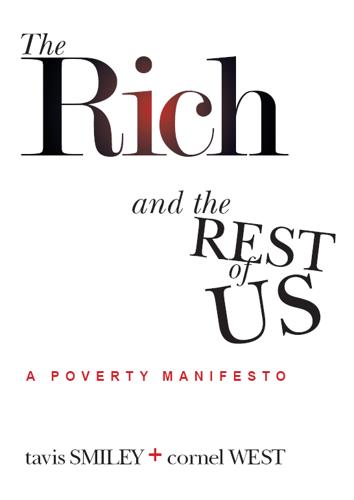
The Rich and the Rest of Us
by
Tavis Smiley
Published 15 Feb 2012
Then, King said, came the buildup in Vietnam: “I watched this program broken and eviscerated, as if it was some idle political plaything of a society gone mad on war, and I knew that America would never invest the necessary funds or energies in rehabilitation of its poor so long as adventures like Vietnam continued to draw men and skills and money like some demonic destructive suction tube.”66 Anytime you seriously dissect the issue of poverty, you have to talk about wealth and income inequality. A productive discussion about poverty must lead to common-sense conversations about wise investments in education, housing, health care, job training, and other efforts that increase poor people’s access to resources of all kinds. We have no choice but to talk about the military industrial complex and its ties to huge private-sector monopolies and war barons who produce weaponry and employ privatized security personnel at salaries that far exceed what we pay government military personnel for the same services. We think most Americans now agree with us that the more than a trillion dollars (and counting) it has cost the American taxpayer to execute and maintain our military adventures in Afghanistan and Iraq was a monumental mistake.
…
We’re not economists, but we believe that such lofty predictions are based on 20th-century thinking. First, our history of bouncing back is no indication that we will come back more vibrant after this unprecedented Great Recession. Second, relying on our military muscle to change the economic equation will fatten the purses only of the military industrial complex, waste more resources and lives, and wind up costing the American taxpayer more. Last, it’s a sad commentary when our economy’s resurrection is based on lower wages and fewer benefits for workers already stripped of the basic necessities as they attempt to dig themselves out of debt and raise their families.

Chokepoints: American Power in the Age of Economic Warfare
by
Edward Fishman
Published 25 Feb 2025
The Russian economy was big but not all that complicated. At the top was the state, which owned the only sectors that were globally competitive: natural resource extraction first and foremost and, to a lesser extent, weapons and nuclear equipment (the product of decades of massive Soviet investment in the military-industrial complex). The country’s vast landmass, covering eleven time zones, was rich in all manner of natural resources, but none rivaled the abundance of fossil fuels. The oil and gas industries, controlled by the state through Rosneft and Gazprom, respectively, were the cash cows of Russia’s economy. They alone accounted for half of Russia’s federal budget and two-thirds of its export revenues.
…
The China policies being advanced by American economic officials were increasingly working at cross purposes with those of their colleagues at the Pentagon. The problem was that there was no clean way to separate U.S.-China economic relations from the realm of military competition. For one thing, Silicon Valley was becoming more and more important to both America’s and China’s military-industrial complexes. Complicating matters further was the Chinese government’s relationship to its country’s private sector: under an approach known as “military-civil fusion,” Beijing broke down barriers between the military and commercial domains. Just as intellectual property theft and forced technology transfer helped Chinese companies conquer world markets, they also accelerated China’s military modernization.
…
Why not impose similar restrictions on Russia? Like China, Russia was highly dependent on chips and other Western technology. Sweeping export controls, perhaps in the form of a scaled-up version of the FDPR that had been imposed on Huawei, would both hurt Russia’s economy and disrupt its military-industrial complex. The outlines of a strategy were emerging. Finance and technology would be the central sanctions targets. Energy would be excluded for now. Limiting as it was, the directive to avoid oil and gas at least had the benefit of aligning America’s interests with those of the EU, which deemed energy sanctions a total nonstarter.
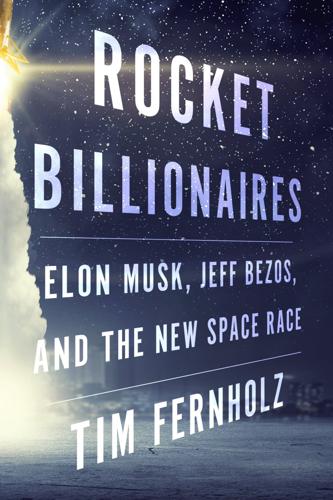
Rocket Billionaires: Elon Musk, Jeff Bezos, and the New Space Race
by
Tim Fernholz
Published 20 Mar 2018
After just eighteen successful flights, six of them for NASA, SpaceX’s relentless president and chief operating officer, Gwynne Shotwell, had built a launch manifest worth $10 billion for the vehicle, winning contracts from major satellite operators from around the world. All this despite the fact that its main competitors were national champions, those heavily subsidized technology contractors embedded in the military-industrial complexes of the United States, Europe, and Russia. No longer scoffing, the aerospace establishment began to look at SpaceX in a new light. Rockets that can launch many tons into orbit are usually enormously expensive—on the order of hundreds of millions of dollars—and typically entirely disposable.
…
So when the Falcon 9 exploded on June 28, 2015, two minutes and eighteen seconds into its nineteenth flight, it didn’t just signify a problem with that one contract, or even for SpaceX alone. It was a threat to the entire concept of private space business that Musk and the other entrepreneurs were trying to reinvent and to pry out of the hands of the military-industrial complex. SpaceX was in the middle of an effort to win the right to bid for launch contracts offered by the US government, not as civil exploration missions, but for national security purposes—launching spy and communications satellites on behalf of the US Air Force and the intelligence community.
…
The Air Force official who had okayed the block buy at the center of the legal dispute, Roger “Scott” Correll, retired from the Pentagon shortly after making the decision. He would emerge as the vice president of government relations at Aerojet Rocketdyne, the engine maker that worked closely with ULA. It was undoubtedly a case of the revolving door at work in the military-industrial complex, but Musk suggested something worse in a series of tweets. “V[ery] likely AF official Correll was told by ULA/Rocketdyne that a rich VP job was his if he gave them a sole source contract,” Musk wrote. “Reason I believe this is likely is that Correll first tried to work at SpaceX, but we turned him down.

The Jasons: The Secret History of Science's Postwar Elite
by
Ann Finkbeiner
Published 26 Mar 2007
Gomer’s disapproving student and Garwin’s overheated colleague were part of an increasingly ugly national mood. With each fresh escalation since the mid-1960s, the country’s outlook had hardened, crystallizing into anger first against the war, then against the Johnson administration; and after that against the military, the military-industrial complex, the military-industrial-university complex; and finally against institutions in general, authority, restrictions, and rules of any kind. In the United States even now, over thirty years later, “Vietnam” is less likely to refer to the Southeast Asian country than to the mood swing in this one.
…
Italian physicists circulated what they called the “Trieste letter,” saying that Jasons had helped develop plastic fragmentation bombs “aimed at producing cripples” and laser-guided bombs “used to destroy North Vietnamese dikes”; the letter demanded a discussion at a scientific meeting of “the ‘neutrality’ of science and the role of institutional science in the military-industrial complex of the big powers.” Several Jasons wrote back saying that Jason had helped develop neither plastic fragmentation bombs nor laser-guided bombs. A French physicist replied, “Imagine a discussion on the chemists who advised the Nazis as to which gas to use in the gas-chambers,” arguing about the distinction “between those who work on ‘cyclon A’; and those who work on ‘cyclon B.’”
…
The Philadelphia Inquirer ran an article…“moral crisis he felt from his role in Jason”: Joel Shurkin, “The Secret War Over Bombing,” Philadelphia Inquirer, February 4, 1973, 1. When he insisted on giving his lecture…“bodily expelled from the Institute”: Vitale, War Physicists, 112. A French poster…“the American war crimes.”: Ibid., 86. Italian physicists circulated what they called the “Trieste letter”…“military-industrial complex of the big powers”: Ibid., 115. “Imagine a discussion…and those who work on ‘cyclon B’”: Ibid., 122. “If you sincerely want…but they have no effect on the war”: Ibid., 119. Schwartz had done his doctoral work…“if not overtake them”: Charles Schwartz, interview by Finn Aaserud, AIP, May 15, 1987, 9.

Why Orwell Matters
by
Christopher Hitchens
Published 1 Jan 2002
Thus, in parallel with his decided view that the Soviet Union deserved to collapse and would collapse, he felt the premonitory menace of the arms race, which was the horse running in tandem with the ideological Cold War, and of the ‘military-industrial complex’ to which President Eisenhower gave a memorable name in 1961. But of the Cold War as an ideology, the arms race as a practice, and the military-industrial complex as an entity, James Burnham remained a devotee to the end of his days, fulfilling some of his own darkest predictions about the fate of intellectuals. In the haunted and febrile years of the late 1940s, when new fears about nuclear fission competed with fears of Stalinism and were superimposed upon the other disillusionments of the 1930s, a number of formerly pacifistic intellectuals actually proposed a preventive nuclear war with the USSR.

End the Fed
by
Ron Paul
Published 5 Feb 2011
In the presidential campaign, Barack Obama raised more than $750 million, breaking all records. This candidate was seen as a man of the people, caring for the poor, the disenfranchised. He is a man who once promised he would limit his spending by accepting public funds. By the end, Wall Street, the banks, the military-industrial complex, and the medical-industrial complex all got a piece of the action. Once it was known—very early on—that the media’s candidate was picked, the fix was in and the spigots were on. The downward spiral of the economy did nothing to slow the influence buying. As a matter of fact, the records in campaign funding were set because the government portion of the GDP is rapidly expanding and is expected to do so for years to come.
…
Whether it’s fighting illegal wars or financing them with fiat money, lack of respect for the Constitution and congressional apathy for its responsibility got us into the crises in which we find ourselves. There’s strong support for the current system, especially when the boom part of the cycle is still in place. The beneficiaries are numerous and well represented in Washington. Military spending is said to be needed to make us safe. The result is that the military-industrial complex thrives—and we’re made far less safe and much poorer. Spending on housing programs and Federal Reserve–driven low interest rates are designed to get more people into homes of their own. The result is that government bureaucrats and politicians benefit. Builders, bankers, mortgage companies, insurers, and developers thrive, and when the bubble bursts, the poor for whom the programs were designed lose their homes and their jobs.
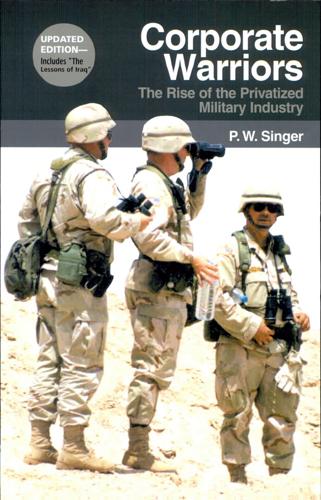
Corporate Warriors: The Rise of the Privatized Military Industry
by
Peter Warren Singer
Published 1 Jan 2003
(Peter Warren) Corporate warriors : the rise of the privatized military industry / P. W. Singer. p. cm. — (Cornell studies in security affairs) Includes bibliographical references (p. ) and index. ISBN-13: 978-0-8014-7436-1 (pbk. : alk. paper) 1. Defense industries. 2. Military-industrial complex. 3. Privatization. 4. Defense industries—United States. 5. Military-industrial complex—United States. 6. Privatization— United States. 7. United States—Military policy. I. Title. II. Scries. HD9743.A2S56 2003 338-4#7355—dc2! 2003000456 Cornell University Press strives to use environmentally responsible suppliers and materials to the fullest extent possible in the publishing of its books.
…
For example, during the 1990s an investor who bought stock in Armor Hold- THE GLOBAL INDUSTRY OF MILITARY SERVICFS ings would have had a rate of return roughlv 10 times better than if thev had put their money in the Standard and Poor's 500 index.14 The result is that although much of the military-industrial complex on the production side suffered from downsizing and consolidation at the end of the Cold War, the military services industry' blossomed. In fact, it has offered a means for large military-oriented companies, such as TRW or Northrop Grumman (with its Logicon services division), to maintain profitability in time of shrinking public contracts.
…
So oddly enough, the emergence of the private military industry often brings me to some deep questions over the health and vitality of our democracy. Thinking about private military firms doing jobs once held by soldiers evokes the memory of former President Dwight Eisenhower, who is likely spinning in his grave at this embodiment of his worst fears of a "military industrial complex.** Yet, I actually think that the guidance of the very first American conservatives is more helpful. The authors of the Federalist Papers, John Jay, Alexander Hamilton, and James Madison, who helped guide our Constitution, warned about the role of anv private interests not responsive to the general interests of a broadly defined citizenry.
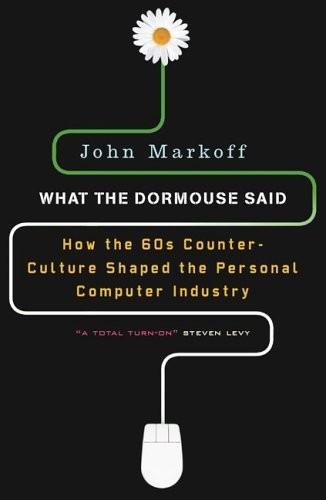
What the Dormouse Said: How the Sixties Counterculture Shaped the Personal Computer Industry
by
John Markoff
Published 1 Jan 2005
There had long been a bohemian fringe in the Bay Area, dating far back to the immigrant culture that created California, and even in the fifties and early sixties there was an undercurrent that ran at cross-purposes to the middle-class mainstream. On the surface, the area’s economy was driven by the rise of the military-industrial complex. Early on, Stanford University spun off electronics companies such as Varian, Ampex, and Hewlett-Packard, and after World War II the Midpeninsula had become a center for high-technology military manufacturing and research and development. To the south, the Midpeninsula was bounded by Lockheed Missiles and Space Corporation, which was building the Polaris nuclear missile; to the north was the Stanford Research Institute, serving as a think tank for both military and industrial concerns.
…
The Stanford Students for a Democratic Society had organized a colorful fair on the lawn that separated the old student union from the student bookstore. They had erected a geodesic dome and a humorous display that asserted that the Stanford faculty members were the lackeys of the board of trustees, who in turn were the lackeys of the military-industrial complex. The montage included a goofy wheel of fortune, which attacked the faculty’s integrity. Walking across campus, McCarthy spied the display and stopped and examined it. He was so enraged at its insinuations that he stepped up to the wheel and tore it down. The SDSers were equally outraged.
…
One of the first Free U regulars Warren met was Larry Tesler, who had closed down his independent programming business and taken a job at SAIL. By now, the Free University was speaking to a growing movement of people who were frustrated with the mainstream university system, which seemed to be increasingly in the thrall of the military-industrial complex. Thousands were attracted to the idea of education beyond the walls of the traditional classroom, and both Tesler and Warren became committed participants, with Warren serving at one point as chairman and Tesler as treasurer. In the evenings, the two frequently worked at the Free University store on El Camino Real, producing the Free University newspaper in the back room with one of the ubiquitous IBM Selectric typewriters.

The Raging 2020s: Companies, Countries, People - and the Fight for Our Future
by
Alec Ross
Published 13 Sep 2021
While the United States can best any other country in the four physical domains—land, sea, air, and space—it faces a much more level playing field in cyberspace. The Pentagon has been slower to adopt national security technologies like artificial intelligence than certain other countries including China. One major reason is that the leading developers of these new digital tools are not members of the traditional military-industrial complex—companies like Lockheed Martin, Raytheon, and Northrop Grumman. Instead, they are in the technology industry. This is a major difference. Traditional military contractors have worked for decades in lockstep with the Pentagon. But the leaders in the tech industry were people like Chris Lynch, skeptical of government bloat and bureaucracy, whose hackles were raised by the ways in which the same technology they were making could be turned toward destructive ends.
…
As we have discussed, today’s geopolitical landscape is not as binary as it was during the Cold War, and countries cannot be classified as either “allies of democracy” or “allies of communism.” Political and economic models fall on a spectrum from open to closed, and national alliances are not as fixed as they once were. The members of the new cyber-military-industrial complex are navigating this new world largely on their own. This puts them in a unique position where they need to formulate clear principles for the types of technology they are willing to develop, and what goes too far. This is a lot to ask of a company, and they cannot handle it wholly on their own.
…
See also corporate power; specific corporations anti-union behavior of cybersecurity and foreign policy and government bailouts for philanthropy and principles of regulations and social contract and social responsibility and tax havens and wartime and worker equity in COVID-19 Cowper-Coles, Sherard Cucinelli, Brunello cyber-military-industrial complex cybersecurity cyber war Daimler-Benz data Daws, Gavan Defense Digital Service De Grisogono Delaware Delmarva Peninsula Deloitte Delta Air Lines democracy vs. authoritarianism generational attitudes toward inefficiency of social contract and surveillance and Democrats De Niro, Robert Denmark developing nations.

The Space Barons: Elon Musk, Jeff Bezos, and the Quest to Colonize the Cosmos
by
Christian Davenport
Published 20 Mar 2018
And now they were betting vast swaths of their enormous fortunes that they could make space available to the masses, and push human space travel past where governments had gone. The story of their dramatic struggle to open the frontier was an improbable one, full of risk and high adventure, a crash that cost the life of a test pilot, a rocket explosion, and suspicions of sabotage. There were lawsuits pitting an underdog upstart against the nation’s military-industrial complex, a political fight that went all the way to the White House, visions to put humans on the moon and Mars, and, of course, the historic landings that heralded what Bezos was calling a new “golden age of space exploration.” At its heart, the story was fueled by a budding rivalry between the two leaders of this new space movement.
…
National security launches paid big money—the multiyear program could be worth as much as $70 billion—and SpaceX knew it could undercut Lockheed’s and Boeing’s prices, disrupting the market, giving it a stream of revenue that could sustain it for years and help it get to Mars. But the clock was ticking. If the company was going to protest the contract, it had to act quickly. “Suing the military industrial complex is something you do not take lightly,” Musk recalled. During a visit to Washington, DC, while sitting in the back of a sedan after a speech, a pair of his advisors asked him what he wanted to do. Musk went quiet, closed his eyes, and put his head back. He stayed that way for two minutes, then three.
…
… “Can you imagine if you went back forty years ago and told people that in 2014 the United States would be at the mercy of Russia for access to low Earth orbit, let alone the moon or anything else? People would have thought you were insane. It’s just incredible that we’re in this position. Something needs to be done to get us out of this.” In response to a question about the wisdom of going up against the Alliance, he said that “Eisenhower warned about the military-industrial complex, and he ought to know. Has it gotten better or worse since Eisenhower? It hasn’t gotten better.… Lockheed and Boeing are used to stomping on new companies, and they certainly tried to stomp on us. I think we’ve got a shot at prevailing. We’re certainly a small up-and-comer going against giants.”

Reset
by
Ronald J. Deibert
Published 14 Aug 2020
Retrieved from https://www.criticalfrequency.org/drilled; Bernays, E. L. (Ed.). (1955). The engineering of consent. University of Oklahoma Press. “Much of the classic, foundational research … was funded during the cold war”: Shaw, T. (2018, March 21). The new military-industrial complex of big data psy-ops. Retrieved from https://www.nybooks.com/daily/2018/03/21/the-digital-military-industrial-complex/; Krishnan, A. (2014, November). From Psyops to Neurowar: What Are the Dangers?. In ISAC-ISSS 2014 Annual Conference; Giordano, J., & Wurzman, R. (2011). Neurotechnologies as weapons in national intelligence and defense–An overview.
…
Most agree that republican-inspired restraint experiments reached their apex and had their fullest articulation around the founding of the United States of America. (Sadly, those founding principles have been gradually eroded by the steady concentration of power and authority in the executive branch, and the massive military-industrial complex president Dwight Eisenhower warned about at the height of the Cold War.) Republican principles of restraint also inspired such innovations in international relations as the League of Nations, the United Nations, and later the European Union, which were explicitly conceptualized as systems of mutual restraint accomplished through co-binding arrangements entered into by sovereign states.
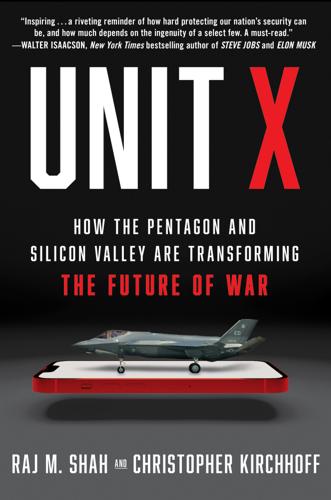
Unit X: How the Pentagon and Silicon Valley Are Transforming the Future of War
by
Raj M. Shah
and
Christopher Kirchhoff
Published 8 Jul 2024
See Heather Kelly, “Jeff Bezos: Amazon will keep working with the DoD,” CNN Business, October 15, 2018, https://www.cnn.com/2018/10/15/tech/jeff-bezos-wired/index.html. See also: Margaret O’Mara, “Silicon Valley Can’t Escape the Business of War: Many in the tech industry don’t want to be part of the military-industrial complex. But defense work is already part of Silicon Valley’s DNA,” op-ed, New York Times, October 26, 2018, https://www.nytimes.com/2018/10/26/opinion/amazon-bezos-pentagon-hq2.html. “The fact that it happened when it did”: “NSCAI Conference—Lunch Keynote: AI, National Security and the Public-Private Partnership,” National Security Commission on Artificial Intelligence, November 15, 2019, https://www.youtube.com/watch?
…
“the war answers a central question”: Eric Schmidt, “Trip Report from Ukraine,” Special Competitive Studies Project, September 2022, https://scsp222.substack.com/p/the-first-networked-war-eric-schmidts. “If you go into battle with old school technology”: Eric Lipton, “Start-Ups Bring Silicon Valley Ethos to a Lumbering Military-Industrial Complex,” New York Times, May 21, 2023, https://www.nytimes.com/2023/05/21/us/politics/start-ups-weapons-pentagon-procurement.html. there was strong continuity with the past: The analyst Stephen Biddle has made a fascinating and important comparison between the historical continuities of classic land warfare attrition in the twentieth century and what’s happening in Ukraine.
…
March 2023, https://www.nscai.gov/wp-content/uploads/2021/03/Full-Report-Digital-1.pdf. O’Mara, Margaret. The Code: Silicon Valley and the Remaking of America. Penguin Books, 2020. ———. “Silicon Valley Can’t Escape the Business of War: Many in the tech industry don’t want to be part of the military-industrial complex. But defense work is already part of Silicon Valley’s DNA.” Op-ed, New York Times, October 26, 2018, https://www.nytimes.com/2018/10/26/opinion/amazon-bezos-pentagon-hq2.html. Osama, Athar. “Washington Goes to Sand Hill Road: The Federal Government’s Forays into the Venture Capital Industry.”
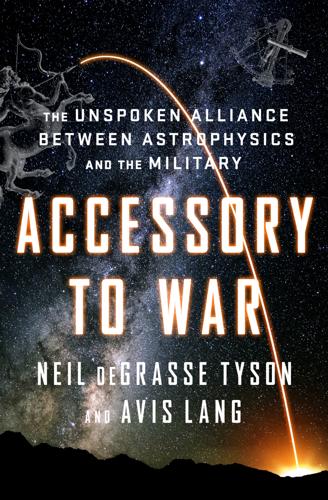
Accessory to War: The Unspoken Alliance Between Astrophysics and the Military
by
Neil Degrasse Tyson
and
Avis Lang
Published 10 Sep 2018
By late 2005 China was regarded as the likeliest imminent superpower by two-thirds of the American electorate.41 And during the National Space Symposium of April 2006 at the Broadmoor, Griffin’s counterpart at the China National Space Administration delivered a quite stunning list of his agency’s achievements, projects, and goals to a huge and extremely attentive crowd that looked like the very embodiment of “industry unity”—lots of blue uniforms and good suits, with a scattering of low-fashion engineers—except that this crowd seemed to be radiating consternation rather than excitement. “Industry unity,” by the way, is simply a suaver way of referring to the emergent space-industrial complex, akin to the oft-referenced military-industrial complex named by General Dwight D. Eisenhower in his presidential exit speech. Consider, then, the second of my April 2006 emails. In this one, Michael Griffin announces the appointment of Simon P. “Pete” Worden, a retired US Air Force brigadier general and research professor of astronomy at the University of Arizona, as the next director of NASA’s Ames Research Center in California.42 Worden is pedigreed: a PhD in astronomy; a past director of the Air Force Space Command; a commander of the 50th Space Wing of the Air Force Space Command; an official with the Strategic Defense Initiative Organization, home of “Star Wars” missile defense; and director of the 1994 Clementine lunar probe, a collaboration between NASA and the Department of Defense.
…
The novelist John Dos Passos had already memorably warned America about the military-financial complex, with a pointed reference to the wealth of J. P. Morgan: “Wars and panics on the stock exchange, machinegunfire and arson, bankruptcies, warloans . . . good growing weather for the House of Morgan.”125 Now Eisenhower warned America about the military-industrial complex: the underbelly of necessary cooperation among political, scientific, defense, and productive forces. Not the first to issue such warnings but certainly the highest-profile person to do so, he referred to “unwarranted influence, whether sought or unsought” and to the “prospect of domination of the nation’s scholars by Federal employment, project allocations, and the power of money.”
…
Secrecy and lies—“small lies for a noble cause”—were customary (not that the USSR invented the tactic) and continued into the Gorbachev era. Sagdeev does not mince words, calling the managers of his nation’s space program “the corrupt barons of the Soviet space mafia” and “men from the stone age.” Near the end of the memoir, he distinguishes between the agenda of science and the agenda of the military-industrial complex, a phrase he embraces, even using it as the title of one of his chapters: The difference between the space science community and the space industry community rests on the fact that while industry instinctively prefers contracts that repeat projects and models already in existence, scientists need novelty.

The omnivore's dilemma: a natural history of four meals
by
Michael Pollan
Published 15 Dec 2006
The 129 people who depend on George Naylor for their sustenance are all strangers, living at the far end of a food chain so long, intricate, and obscure that neither producer nor consumer has any reason to know the first thing about the other. Ask one of those eaters where their steak THE FARM * 3 5 or soda comes from and she'll tell you "the supermarket." Ask George Naylor whom he's growing all that corn for and he'll tell you "the military-industrial complex." Both are partly right. I came to George Naylor's farm as an unelected representative of the Group of 129, curious to learn whom, and what, I'd find at the far end of the food chain that keeps me alive. There's no way of knowing whether George Naylor is literally growing the corn that feeds the steer that becomes my steak, or that sweetened my son's soft drink, or supplied the dozen or so corn-derived ingredients from which his chicken nugget is constructed.
…
Watching a pile of corn stream over the lip of a hopper car painted with Cargill's blue-and-yellow logo, a car destined to join a train more than a mile long and holding 440,000 bushels of corn, I began to see what George Naylor was getting at when he'd told me whom it was he grew his corn for: "the military-industrial complex." The immense pyramid of corn I stood before in Jefferson is of course only a tiny part of an infinitely more immense mountain of corn dispersed over thousands of grain elevators across the American Corn Belt every autumn. That mountain is the product of the astounding efficiency of American corn farmers, who—with their technology, machinery, chemicals, hybrid genetics, and sheer skill—can coax five tons of corn from an acre of Iowa soil.
…
Rodale, a health-food fanatic from New York City's Lower East Side, the magazine devoted its pages to the agricultural methods and health benefits of growing food without synthetic chemicals—"organically." Joel Salatin's grandfather was a charter subscriber. Organic Gardening and Farming struggled along in obscurity until 1969, when an ecstatic review in the Whole Earth Catalog brought it to the attention of hippies trying to figure out how to grow vegetables without patronizing the military-industrial complex. "If I were a dictator determined to control the national press," the Whole Earth correspondent wrote, Organic Gardening would be the first publication I'd squash, because it's the most subversive. I believe that organic gardeners are in the forefront of a serious effort to save the world by changing man's orientation to it, to move away from the collective, centrist, superindustrial state, toward a simpler, realer one-to-one relationship with the earth itself.

The Billion Dollar Spy: A True Story of Cold War Espionage and Betrayal
by
David E. Hoffman
Published 9 May 2016
The United States had used the same methods against the Soviet Union.9 At the same time, the United States was eager for insight and intelligence about Soviet military plans and intentions. If Tolkachev’s access was real and his documents genuine, the payoff could be handsome: blueprints and research files from the most advanced laboratories in the Soviet military-industrial complex. The United States enjoyed an advantage over the Soviet Union in weapons technology, but there was always a fear of surprise by the other side. The spy could provide early warning about Soviet weapons development years in the future. After the seminar was over, a brief summary was cabled by headquarters to Guilsher and Hathaway in Moscow.
…
There were three other storage areas in the apartment, all of which he had built. Adik was thirty years old when he married, late for a young Russian man of his generation. His wife was then twenty-two years old. Tolkachev wrote to the CIA, “I apparently belong to those who love once.”4 Adik and Natasha lived and worked in the closed cocoon of the military-industrial complex, a sprawling archipelago of ministries, institutes, factories, and testing ranges. Tolkachev had the highest-level access to state secrets. Their way of thinking and their public behavior were governed by survival in the Soviet party-state system, which dictated conformity. By day, they played by the rules.
…
Once in the city, Howard’s wife dropped him off at the UN office.4 But that was just a cover story; Howard had earlier called the United Nations and canceled his interview.5 He apparently met with the Soviet officers again at this time. Howard later wrote that he also went to Zurich, Switzerland, and “indulged a long-time fantasy of mine and spent $600 on a Rolex watch.”6 Howard had much to offer the KGB. He knew of the presence of a spy for the United States deep in the Soviet military-industrial complex, and he knew of the presence of a wiretap on one of the Soviet Union’s most sensitive underground communications lines. Howard was trained at the CIA for both operations. He knew much of the CIA’s operational tradecraft and technology, such as the use of the tiny radios, disguises, surveillance detection runs, and the Jack-in-the-Box.
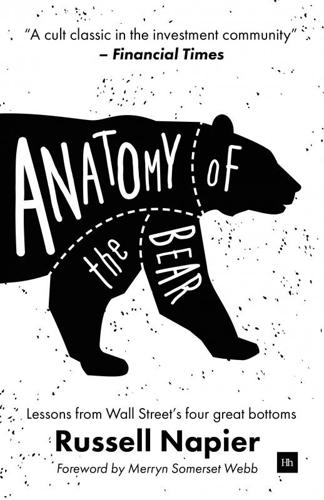
Anatomy of the Bear: Lessons From Wall Street's Four Great Bottoms
by
Russell Napier
Published 18 Jan 2016
The US began to build its first permanent armaments business separate from wartime exigencies, and this promised great profits for investors in selected stocks. The rise of the industry was rapid, so much so that outgoing President Dwight D Eisenhower’s final public address in January 1961 warned of ‘unwarranted influence’ by this ‘military-industrial complex’. Investors in this ‘military-industrial complex’ had been reaping financial rewards throughout the second half of the 1950s. The high growth levels of some of these companies were rewarded with high valuations by Wall Street and, with listed equities trading at discounts to replacement value throughout the 1950s, there was growing takeover activity.
…
His fateful purchase almost coincided with gold’s all-time high. Can it be coincidence that the four years covered in this book - 1921, 1932, 1949, 1982 - also mark momentous change in American society. There was the birth of the consumer society (1921), the birth of big government (1932), the birth of the military-industrial complex (1949) and the rebirth of free markets (1982). Each of the fictional characters in this book struggles with a particular societal transition, all the while wrestling with the impact of that change on their financial future. I had lunch with a man who has come across quite a few bears in his time, polar explorer and mountaineer David Hempleman-Adams.

Cows, Pigs, Wars, and Witches: The Riddles of Culture
by
Marvin Harris
Published 1 Dec 1974
They rap, encounter, or chant in order to “freak out” with Jesus, Buddha, Mao Tse-tung. The aim is to express consciousness, demonstrate consciousness, alter consciousness, raise consciousness, expand consciousness—anything but objectify consciousness. To the Aquarian, mind-blown, stoned, freaked-out partisans of Consciousness III, reason is an invention of the military-industrial complex. It should be “offed” like any other “pig.” Psychedelic drugs are useful because they allow “illogical” relationships to seem “perfectly natural.” They are good because, in Reich’s words, they make “unreal what society takes most seriously: time schedules, rational connections, competition, anger, excellence, authority, private property, law, status, the primacy of the state.”
…
Theodore Roszak says the primary goal of counter-culture is to proclaim “a new heaven and a new earth,” and in its formative phase, Consciousness III brought crowds of dissenting youth together at rock concerts and antiwar protests. But even at the peak of its organizational efficiency, counter-culture lacked the fundamentals of messianism. It had no charismatic leaders and it lacked a vision of a well-defined moral order. In Consciousness III, leadership is another trick of the military-industrial complex, and as I indicated a moment ago, a set of well-defined moral goals cannot be reconciled with the amoral relativism of shamans like Don Juan. The flight from objectivity, amoral relativism, and acceptance of the omnipotence of thought speak of the witch and not the savior. Consciousness III has all the classic symptoms of a lifestyle dreamwork whose social function is to dissolve and fragment the energies of dissent.
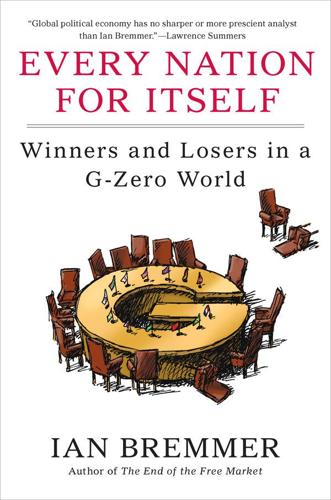
Every Nation for Itself: Winners and Losers in a G-Zero World
by
Ian Bremmer
Published 30 Apr 2012
“No Exception; Apple ‘Must’ Install Chinese ‘Green Dam Youth Escort’ Filtering Software,” International Business Times, June 12, 2009, http://au.ibtimes.com/articles/20090612/no-exception-apple-039-must-039-install-chinese-039-green-dam-youth-escort-039-filtering-software.htm. 17. Quoted in Ron Deibert and Rafal Rohozinski, “The New Cyber Military-Industrial Complex,” Globe and Mail, March 28, 2011, http://www.theglobeandmail.com/news/opinions/opinion/the-new-cyber-military-industrial-complex/article1957159/. 18. David Bosco, “A Looming Turf War over Internet Governance?,” Foreign Policy, August 17, 2011, http://bosco.foreignpolicy.com/posts/2011/08/17/a_looming_turf_war_over_internet_governance. 19. Schott’s Vocab, “Splinternet,” New York Times, February 9, 2010, http://schott.blogs.nytimes.com/2010/02/09/splinternet/. 20.

Stories Are Weapons: Psychological Warfare and the American Mind
by
Annalee Newitz
Published 3 Jun 2024
At the height of the Cold War, psyops held a contradictory position in the public mind: on one hand, they were associated with the terrifying myth of brainwashing where humans became robots, while on the other, they were a sought-after specialty in legitimate military and policy circles. A whole new field had grown out of psychology, public relations, advertising, and storytelling. Wedded to the military-industrial complex and the Bomb, it was a powerful weapon. Put another way, battlefield subterfuge became an office job, and its practitioners normalized the process of threatening people in the name of democratic freedom. At the same time, psyops were associated with fantastical ideas like brainwashing and Scientology’s engrams, which meant Americans were never sure what to believe about the mind-control powers their government really had.
…
M., 29 mental hygiene campaigns, 144–50, 156, 159 Men Who Stare at Goats, The (2009), 32 Mercer, Rebekah, 71, 92 Mercer, Robert, 71, 92 Meta, 91–92 #MeToo movement, 156 Mexican-American War, 49 Middle Class Values Index (MCV), 111 Miles, Nelson, 55 military-industrial complex, 32 military information support operations (MISO), xx, 77–78 See also psyops Military Information Support Operations (MISO) Process, 77 military psyops adversarial threat of violence and, 131 advertising and, xxi, 30, 77, 78–79 ban on US citizens as targets, 75–76 confusion as goal of, xviii culture and, 78–79 culture wars as bleedover from, xvi–xvii humanitarian aid as, 80–81 mental hygiene and, 144 as MISO, xx, 77–78 modern right-wing psyops and, 95 nuclear threat as, 10–11, 25–26 Office of Psychological Warfare and, 9, 10 Office of War Information and, 14–15, 21, 23, 144 persuasion as goal of, xv, 77 social media and, 81–82 threats of violence/imprisonment and, 131 torment as goal of, 79–80 training approach, xv, 75–76, 77–79 World War I, xix, 15, 65, 122 See also Cold War psyops; Indian Wars; World War II psyops Mimicking of Known Successes, The (Older), 193 Mindf*ck (Wylie), 71 Minority Report (Dick), 31 MK-Ultra program, 31–32 Mohamed, Ahmed, 136–37 Mohican Nation, 47 Mooney, James, 55, 56 Mosley, Oswald, 22 Mosse, Hilde, 150 “Mother Hitton’s Littul Kittons” (Smith), 25–26 Ms. magazine, 148 Mueller, Robert S., 83 Mulvaney, Dylan, 132–33 Mumbo Jumbo (Reed), 114 Murdoch, Rupert, 103 Murray, Charles, 117 See also Bell Curve, The Musk, Elon, xii, 92, 189 mythmaking, 15–16, 17, 35, 65 narcissism, 73 Narrative Warfare (Maan), 79 National Longitudinal Survey of Youth (NLSY), 103–4 National Mental Health Act (1946), 144 Native Land app, 170–71 Native Son (Wright), 146 Nazism, 21–23, 91, 94, 109 Niven, Larry, 17 Noble, Safiya Umoja, 188–89 NoDAPL movement, 65 Nubia: Queen of the Amazons, 152, 153–54, 157 nuclear weapons, 10–11, 15, 25–26 Oakes, Nigel, 70 Obama, Barack, 71, 137 O’Brien, Jean, 44–47, 48, 51, 61 Oceti Sakowin Nation, 54 Office of Psychological Warfare, 9, 10 Office of War Information (OWI), 14–15, 21, 23, 144 Older, Malka, 193 Oneida Nation, 36 On War (Clausewitz), xviii open conspiracies, 184 Osage Nation, 43 O’Sullivan, John L., 61–62 othering.

Red Moon Rising
by
Matthew Brzezinski
Published 2 Jan 2007
The jobs of five thousand skilled workers and much of the local economy had hung in limbo since Wilson’s November 1956 edict had effectively robbed the army of the big missile brief, and the uncertainty had devastated morale and depressed the once-booming real estate market. Huntsville, which had dubbed itself “Rocket City, USA,” was learning the harsh reality of the military-industrial complex: with the stroke of a pen in Washington, entire communities could be wiped out as quickly as they were created. To keep his company town afloat and his rocket team intact, Medaris had waged increasingly inventive bureaucratic guerrilla campaigns that were beginning to take their toll on his standing with the power brokers at the Pentagon.
…
It was the dichotomy that Richard Bissell had noticed, when he first assumed that John Foster Dulles ran the show, but after careful observation concluded that Ike was very much his own man. In hindsight, Ike’s subdued response to Sputnik probably owed as much to his instinctive fear of the rise of the “military-industrial complex” as to his failing health and his longing for a peaceful retirement. His farewell address to the nation in January 1961 highlighted the danger of allowing the political and economic interests of military contractors and bureaucrats to hijack the national security agenda for their own gain.
…
I., 21, 31, 61, 72 Leningrad, siege of, 35 Life, 173, 216, 222 Lionel Corp., 277 Lippmann, Walter, 182 Little Rock school crisis, 139–41, 150, 168–69, 174, 177, 182, 201 Lockheed company, 119 London, 4–6, 36 London Daily Herald, 241 London Sunday Times, 208 Lubell, Samuel, 173–74 Luce, Clare Boothe, 216–17 Luftwaffe, 4, 235 MacArthur, Douglas, 46 Maksimov, Alexander, 98 Malenkov, Georgi, 109, 149 Malinovsky, Rodion, 101, 193–95 Manchester Guardian, 199 Manhattan Project, 166 Mann, Woodrow W., 140 manned space missions plans for, 185, 211–12, 247–49 USSR achieves first, 268–69 Mao Zedong, 89, 208–9 Marchetti, Victor, 58 Margerison, Tom, 207–8 Markel, Hazel, 181 Mars, 87–88, 234–35 “Mars and Beyond” (TV segment), 234 Marshall Plan, 37, 118 Martin, Glenn L., Co., 226–27, 242, 258 Marx, Karl, 21 “massive retaliation” doctrine, 24 Mazur, Dan, 225, 227 McCarthy, Joseph, 57, 67, 88–89 McDougall, Walter, 186, 222 McElroy, Neil H., 164–68, 219, 244, 247–48, 250, 265, 276 Medaris, Jessie, 163 Medaris, John Bruce, 224 ABMA satellite and Jupiter C programs kept alive by, 129, 134, 161–68, 178, 186–87, 218–20 background of, 45–47, 51, 162–63 Explorer launch and, 248–50, 253–56, 258–59, 261, 263–67 heads ABMA and resists spending cuts, 46–48, 50–52, 54–55, 79–83 later career and death of, 276–77 Meet the Press (TV show), 132, 242 Meisenheimer, John, 264 Mexico, 200 MiG-19 and MiG-21 jets, 124, 130 Mikoyan, Anastas, 207, 209 military-industrial complex, 276 military spending U.S. 50, 52, 57–59, 79, 170, 174, 219, 223–24, 226–27, 274–76 USSR, 38, 71, 191 Miller, Herbert I., 127–28 Milwaukee Sentinel, 173 missiles and rockets. See also intercontinental ballistic missile (ICBM); intermediate range ballistic missile (IRBM); and specific agencies, individuals, missiles, and nations accelerometer calibrators and, 7 accuracy of targeting, 35 aluminum alloys and, 52 apex predictor for, 262, 266 boosters for, 99 combustion chambers of, 13–14, 34, 69 engines of, 34–35, 69–72, 102–3, 150, 158, 225–28, 271 escape velocity and, 146, 158 fuel or propellant for, 12–14, 34, 69–72, 101, 150–51, 154–56, 205, 233–34, 247–48, 254, 260, 263–64 “gap,” 131–32, 221–22, 247–48, 251–53, 274 guidance and steering systems of, 3, 5, 13, 30, 70, 82, 95–97, 101–2, 151, 254 heat shield and nose cone of, 34–35, 70, 96, 113–14, 129–30, 144, 147–50, 163, 166, 211, 218, 220, 246, 249 pressurized with nitrogen, 151, 155, 156 range of, 35–36, 40 reentry problem of, 96 “spinning bucket” on, 254, 262, 265 “sweet” point and, 96 transmitters, 151, 159, 255 weight of satellites and, 167–68, 172–73, 185, 214–15 Mittelwerk factory, 11–13, 87, 277 Moldovans, 63 Molotov, Vyacheslav, 18, 27, 30, 32, 38, 41–42, 44, 62–64, 72, 74, 76, 109, 111–12, 149 Molotov-Ribbentrop nonaggression pact (1939), 8, 27 Mongolia, 189 moon flight, 185, 215, 247, 249, 273–75, 277 Moscow Higher Technical School, 107 Moscow Institute of Power Engineering, 22 Mosley, Leonard, 230 Mozzhorin, Yuri, 144 Mrykin, Aleksander, 143 Murrow, Edward R., 4–7 Mzhavanadze, Vasil, 61 N-1 lunar rocket, 273 NAACP, 139 Nagy, Imre, 75–76 Napoleon, 22, 190 Nashville Tennessean, 177 Nasser, Gamal Abdel, 76 National Academy of Sciences, U.S., 92 National Advisory Committee on Aeronautics (NACA), 223 National Aeronautics and Space Administration (NASA), 223, 248–49, 274, 277 National Defense Education Act (1958), 274 National Guard, U.S., 50–93 National Intelligence Estimate (September 15, 1954), 23 National Science Foundation, 227 National Security Agency (NSA), 59, 129 National Security Council (NSC), 53, 78, 117, 132, 180, 184, 221, 240, 244, 254 document NSC 162/2, 50 National Space Establishment (NSE), proposed, 223 Naval Political Department, USSR, 111 Naval Research Center, U.S., 134 Naval Research Laboratory, U.S., 179 Navy, U.S., 47, 79, 166 Vanguard and, 133–34, 162–63, 225–28 Nazi Germany, 1–15, 26, 30, 39, 83–88, 166, 234–38, 258, 261, 277 USSR invaded by, 189–90 NBC, 132, 171, 181, 242 Nedelin, Mitrofan, 102–3, 147, 153–55, 205, 246–47, 271 Nesmeyanov, A.

This Machine Kills Secrets: Julian Assange, the Cypherpunks, and Their Fight to Empower Whistleblowers
by
Andy Greenberg
Published 12 Sep 2012
The security firm went into damage control mode. Barr canceled his talk at the BSides conference and stopped giving press interviews. Hoglund canceled a talk of his own at the simultaneous RSA conference in San Francisco. As the company went silent, Glenn Greenwald and others wrote excoriating essays on the military-industrial complex’s dirty tactics in the digital realm. The Colbert Report aired a segment mocking Barr. A few days later, he resigned from his position at HBGary Federal. (A year later, the small company would persist in name alone, without employees or customers. And in February 2012, its parent firm, HBGary, would be swallowed up by the larger defense contractor ManTech for an undisclosed price.)
…
I spend my first two hours at the Chaos Communication Camp wandering in the dusk around the surreal ruins: past a statue of Lenin with headphones and turntables added to convert him into a socialist DJ, a rusting fighter jet with elaborate rainbow-knitted caps for its pointed engines and nose. Hackers have bivouacked in the shelter of defunct missiles and helicopter engines, like survivors of the apocalypse who have rebuilt a simpler digital society amid the remains of the military-industrial complex. It’s only after nightfall that I find Daniel Domscheit-Berg standing in the dark at the edge of the airfield, wearing a long reflective yellow coat, his face looking rather forlorn as it’s lit by another hacker’s headlamp. I call out his name and he turns and greets me with a wide-eyed smile and a handshake.
…
ITWorld.com, February 16, 2011. severing relations with HBGary Federal Robert McMillan. “Hacked and now vandalized, HBGary pulls out of RSA,” IDG News, February 16, 2011. Hoglund canceled a talk of his own at the simultaneous RSA conference in San Francisco Ibid. excoriating essays on the military-industrial complex’s dirty tactics in the digital realm Glenn Greenwald. “The leaked campaign to attack WikiLeaks and its supporters.” Salon.com, February 11, 2011. The Colbert Report aired a segment mocking Barr. “Corporate Hacker Tries to Take Down WikiLeaks.” ColbertNation.com, February 24, 2011. he resigned from his position at HBGary Federal Andy Greenberg.

The Last Empire: The Final Days of the Soviet Union
by
Serhii Plokhy
Published 12 May 2014
Finally, the minister of defense, Marshal Dmitrii Yazov, was also absent, having sent his deputy to represent him.13 Gorbachev’s road to the summit was anything but easy. What he saw as a moment of triumph for his new foreign policy was regarded by some of the most powerful members of the ruling elite as a sellout of Soviet interests. While the Soviet military brass had always grumbled about budget reductions, Gorbachev was more out of tune with his military-industrial complex than any of his predecessors, including Nikita Khrushchev, who was still remembered with hatred by the military for his huge reduction of conventional forces in the early 1960s. But it was not only the Soviet military who believed that the Americans had gotten their way on almost every major issue pertaining to the nuclear arms treaty.
…
Talbott offered an answer: “The U.S.S.R. has conceded so much and the U.S. reciprocated so little for a simple reason: the Gorbachev revolution is history’s greatest fire sale. In such transactions, prices are always very low.”14 Gorbachev had charged his defense minister with the difficult if not impossible task of convincing the General Staff and the military-industrial complex to accept treaty conditions that cut the number of missiles on both sides but excluded aviation, giving the Americans clear superiority in means of delivering nuclear warheads—they indeed had a preponderance of heavy bombers. The Soviet military eventually gave its consent.15 The last sticky issue of the treaty was resolved less than two weeks before the start of the Moscow summit.
…
Born in the Urals in 1931 to a family of blue-collar workers, Yeltsin was a self-made man who attained the highest levels of power thanks to, among other things, his boundless energy. An engineer by education, he first made a name for himself in the construction industry, arguably the toughest sector of the Soviet economy. Always underfunded and understaffed, unlike the military-industrial complex, construction companies fulfilled their five-year plans by relying on the work of recent convicts and riffraff sent to building sites by party officials. Much depended on the individual construction chief’s sheer strength of personality, of which Yeltsin had no shortage. He began his career in 1955 as a foreman in the city of Sverdlovsk in the Urals and bulldozed his way to the top by showing better-than-average results.

Wars, Guns, and Votes: Democracy in Dangerous Places
by
Paul Collier
Published 9 Feb 2010
Somehow we have to be able to sort out the chicken-and-egg causality problem: the risk of violence affects military spending, and military spending affects the risk of violence. If military spending keeps a society safe it is worth every cent. But before slipping into such easy thought patterns I decided to investigate what has actually been driving it. By this I do not mean answers such as “the military-industrial complex” about which the Marxists of my youth used to fantasize. During the Cold War there used to be an academic industry that studied the arms race between NATO and the Warsaw Pact. But with the end of the Cold War, that collapsed, and nothing has replaced it. There were scarcely any recent studies on military spending in developing countries, so Anke and I decided to do it ourselves.
…
Anke and I developed a model of the risk of rebellion and used the estimates to see whether governments responded to a heightened risk of rebellion with increased spending. We found a large effect: governments tried to buy security from the threat of rebellion by building a big army. This is a case of out of the frying pan into the fire. A big army is not just a source of defense, it is an interest group. The nearest we got to the military-industrial complex was to investigate whether the military was concerned to look after itself. Quite commonly, professions tend to lobby in their own interests. Plato had the brilliant idea that the ideal government would be composed of philosopher kings: government by professors. Unfortunately, Plato’s splendid idea has not been implemented with sufficient frequency for it to be amenable to statistical testing, but I hazard that a government of professors would spend significantly more on universities.

How to Run the World: Charting a Course to the Next Renaissance
by
Parag Khanna
Published 11 Jan 2011
For the United States to even conceivably regain a global leadership role, it needs to think along three dimensions in all its foreign activities: which agencies to bring together (the “whole of government” approach), which nations to cooperate and coordinate with (the “multi-partner” approach), and how to leverage private sector and NGO resources and talent (the “public-private” approach). Combining public and private resources can generate a sophisticated diplomatic-industrial complex. America already has a military-industrial complex: the “iron triangle” of industry, politicians, and the military assailed by President Dwight D. Eisenhower in his 1961 farewell address. Now it must do the same for diplomacy. From oil companies to chambers of commerce to environmental activists, America’s corporations, civic organizations, universities, churches, youth groups, and charities already have their own foreign policies—and Americans are expressing their diplomatic voice through these channels more than any other.
…
They debated whether war originates in the human mind or if it is inherent in social existence, but agreed that war has been a permanent feature of human activity because communities naturally struggle to assert their identities and control territory. Intergenerational, cross-border political disputes fuel the world’s exploding military-industrial complex—even in countries that can’t afford their militaries and have little industry. Today, any enemy, near or far, real or imagined, justifies stockpiling more nuclear weapons, warplanes, ballistic missiles, tanks, and surface-to-air rockets. More often than not, conflicts are over borders—either within or between countries.
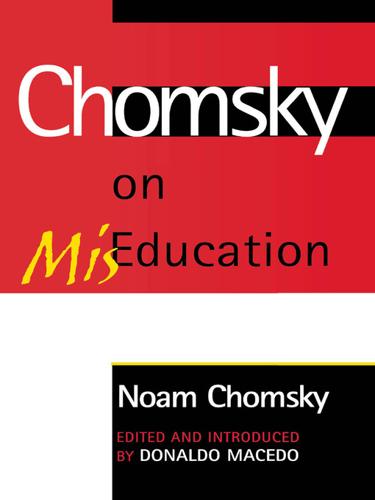
Chomsky on Mis-Education
by
Noam Chomsky
Published 24 Mar 2000
As Gorbachev stepped onto American soil at the Washington airport before the TV cameras, CBS anchorman Dan Rather commented that Gorbachev will focus on arms reduction, but “Reagan will press the Soviet Union on broader issues such as human rights, Afghanistan, and Nicaragua.”40 Few were so gauche as to raise questions about Reagan’s stellar human rights record (in Central America, for example), though not everyone went as far as Dan Rather, often denounced for his “ultraliberalism,” in interpreting what has happened to Nicaragua as a Soviet transgression.41 In a front-page news story in the New York Times, Philip Taubman observed from Moscow that despite his promise, Gorbachev still has a good deal to learn. He continues to “articulate the orthodox Soviet view of life in the United States: A ruling class, dominated by a military-industrial complex, controls the Government and exploits the vast majority of Americans, creating a society of economic inequity and injustice.” This “ideologically slanted” view is inconsistent with the “more sophisticated outlook of Soviet analysts and senior colleagues who are familiar with the United States” and therefore understand how remote this conception is from reality.
…
Bayly, The New Cambridge History of India (Cambridge: Cambridge University Press, 1988); Dietmar Rothermund, An Economic History of India (London: Croom Helm, 1993); Bairoch, op. cit. 52. Hutton, The State We’re In (London: Jonathan Cape, 1995), 128f. On the wartime revival of the U.S. economy, laying the basis for postwar economic growth, see Gregory Hooks, Forging the Military-Industrial Complex (Urbana: University of Illinois Press, 1991). 53. See, inter alia, Gerald Haines, The Americanization of Brazil (Wilmington, Del.: Scholarly Resources, 1989); Nathan Godfried, Bridging the Gap between Rich and Poor (Westport, Conn.: Greenwood, 1987); Michael Weis, Cold Warriors and Coups d’Etat (Albuquerque: University of New Mexico Press, 1993); David Rock, Argentina (Berkeley: University of California Press, 1987), 269, 292f. 54.
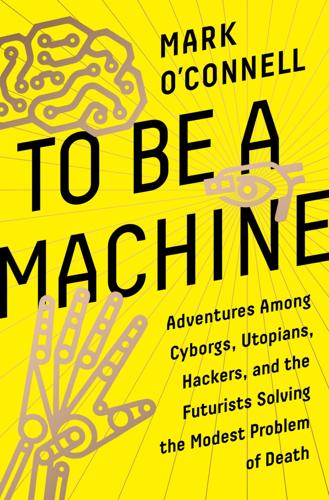
To Be a Machine: Adventures Among Cyborgs, Utopians, Hackers, and the Futurists Solving the Modest Problem of Death
by
Mark O'Connell
Published 28 Feb 2017
A few hundred yards from the racetrack, in the massive hangarlike building from which the robots were directed by their engineers, a squad of Boston Dynamics technicians was also on hand to tend to the contusions and malfunctions of the Atlas humanoids. Boston Dynamics, with its weird techno-fauna, was itself a hybrid specimen of the relationship between the Pentagon and Silicon Valley; its machines were the unnatural creatures of a new military-industrial complex. Google’s links with DARPA were numerous and far-reaching. DARPA’s previous director, Regina Dugan, for instance, had left her government job to work at Google’s headquarters in Mountain View, where she now leads something called the Advanced Technology and Projects Team. For a while now, I had been fascinated by the creatures produced by this robotics firm, founded in the early 1990s by Marc Raibert (a former colleague of Hans Moravec at Carnegie Mellon’s Robotics Institute).
…
DARPA’s interest in technology was, it seemed clear, always an interest in the methodology of efficient violence. — The grinder movement is characterized by both an internalization and a subversion of this cybernetic ideal. Grinders want the same things as DARPA, but for individualistic reasons; the aim, in this sense, is a kind of personalized military-industrial complex. “The main trouble with cyborgs,” as Haraway puts it, “is that they are the illegitimate offspring of militarism and patriarchal capitalism, not to mention state socialism. But illegitimate offspring are often extremely unfaithful to their origins. Their fathers, after all, are inessential.”
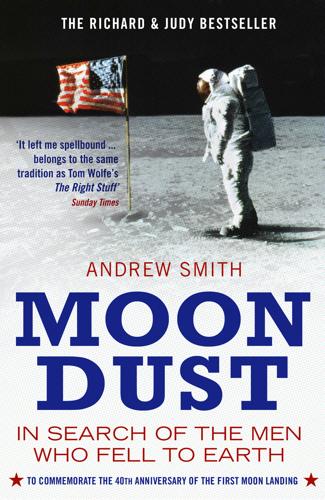
Moondust: In Search of the Men Who Fell to Earth
by
Andrew Smith
Published 3 Apr 2006
A noble sentiment, but he couldn’t do it, and when the time came to leave office, he delivered a farewell address which stands as one of the most bizarre in his country’s history. In it, he warned of the creeping influence of a “military-industrial complex” – a phrase that would have sounded easier on the lips of Noam Chomsky or Marshall McLuhan, or for that matter Chairman Mao, than coming from this Republican ex-military man with little apparent taste for drama. The thing I love about this story, though, is how badly the agitators underestimated Ike. His public image was of a nice guy who was no good at politics, but people close to him say the opposite was true. To him, this military-industrial complex appeared to be less a conspiracy than a condition arising spontaneously from the U.S. economy, rather as class does from the English education system.
…
You have giant corporations working with a very elite insider group that has a quasi-militaristic leaning. You have to bear in mind that, in the beginning at least, NASA was a partial fig leaf to cover the Cold War antagonisms of the Fifties and Sixties. There was all that ‘We came in peace for all mankind’ stuff, but they literally were part of the military-industrial complex – it was the same companies designing and making the military hardware and all that. If you were an antiwar hippy protester, they looked like the same group of people.” So I seemed to have happened upon a space Country Joe McDonald, who went on to tell me about the Foundation’s recent “Return to the Moon” conference and their sophisticated “jujitsu” lobbying model (an idea I first heard being used by environmental groups in Naomi Klein’s antiglobalization tract No Logo); about being part of MirCorp, the private, Amsterdam-based company partly run by people who’d marched against the war in their youth, which actually managed to lease the Mir space station from the Russian government for a brief period, only to be brutally “taken out” by the dark forces of the space establishment; about testifying before Congress and meeting high-level Russian officials in Moscow; about the various flashpoints within the organization, and all in a language that I understood.
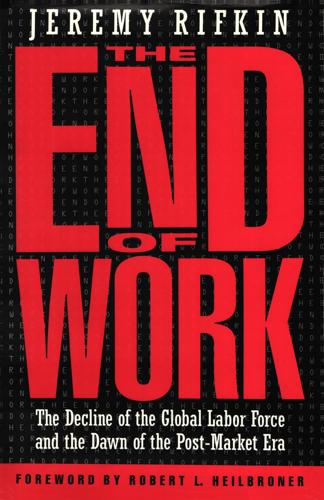
The End of Work
by
Jeremy Rifkin
Published 28 Dec 1994
By the late 1980s, over 20,000 major defense contracting corporations and an additional 100,000 subcontractors were working on Pentagon projects. 54 The military share of total goods consumption was more than 10 percent during the Reagan-Bush years. The military-industrial complex had swelled to such monstrous proportions that if it were a separate nation, it would rank as the world's thirteenth-largest power. In the 1980s the United States spent more than $2.3 trillion on military security. Nearly $46 out of every $100 of new capital went to the military economy.55 Even with the addition of a permanent military-industrial complex, the postwar boom was threatened by continued technological unemployment in the 1950S and 1960s resulting from breakthroughs in automation.
…
Concerns over deficit spending and mushrooming debt are being heard in other countries as well. Allover the world, nations are 38 THE TWO F ACE S 0 F TEe H N 0 LOG Y beginning to cut their budgets in order to address the problem of deficits and national debts. In the United States many of the cuts are occurring in defense. The military-industrial complex, which played a critical role in maintaining the economic prosperity of the country for more than half a century, is now being downsized in the aftermath of the Cold War. The dismantling has occurred suddenly, largely in response to the dissolution of the Soviet Union. In the 1980s the Pentagon budget was still growing by 5 percent a year, reaching a high of $371 billion in 1986.
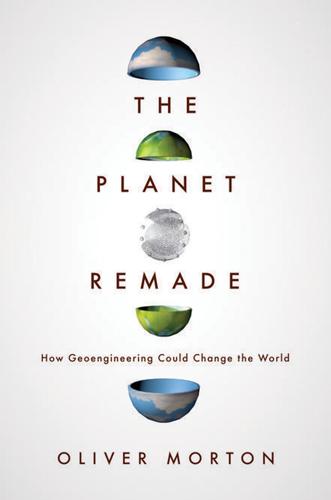
The Planet Remade: How Geoengineering Could Change the World
by
Oliver Morton
Published 26 Sep 2015
Many environmentalists focused instead on the technology’s environmental benefits; in terms of cleaning up the air people breathed nuclear plants promised to be a great step forward from coal plants. In the 1970s, though, the original fear of nuclear business-as-usual was at first reinforced, and then displaced, by a fear of nuclear accidents. The notion of the meltdown focused nuclear anxiety on specific events, and relied on increasingly widespread concerns about the military-industrial complex and the technocratic hubris of governments. At the same time, it maintained the underlying sense of an invisible, intangible and global threat that makes all concerns about radiation so unsettling and prone to irrational exaggeration. The double vision in which specific accidents were also global threats reflected the sheer scope of the effects imagined: a ball of radioactive slag produced in a meltdown passing right through the Earth (the ‘China Syndrome’); a meltdown poisoning its surroundings for geological periods of time.
…
It has not experienced anything quite like the flaps over newly discovered asteroids, but it has from time to time had its internal divisions thrown into focus by bursts of media attention – not, in itself, at all a bad thing. In both cases a particular source of worry to many outsiders – and to some insiders, too – was the closeness of the clique to the military–industrial complex, and in particular to the part of that complex centred on Livermore. It was hard to look at analyses of the impact risk from the lab (some of which greatly overstated it) without thinking that this was some sort of an attempt to find a partial replacement for the lab’s original cold-war mission.
…
It’s hard to imagine that that work did not feed his later interest in making sure that humans didn’t set off one of von Neumann’s supernovae. Sagan’s main contribution to the asteroid-deflection debate, though, was rooted not in aesthetics or the impropriety of playing God, but in a later-developed distrust of the military–industrial complex. There are, he argued in the 1990s, many more asteroids on courses that just miss the Earth than there are on courses that hit it – the outer ring of a target is necessarily bigger than the bull’s-eye. If people could nudge away the rare asteroids that would otherwise hit the Earth, they could just as easily nudge the more common asteroids that miss it on to trajectories that would hit.
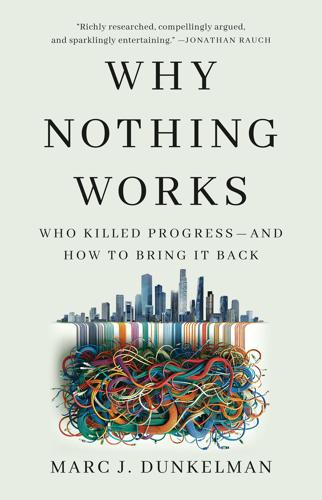
Why Nothing Works: Who Killed Progress--And How to Bring It Back
by
Marc J Dunkelman
Published 17 Feb 2025
In the creation of school boards to expand the promise of public education. It was evident in the founding of big bureaucracies like the Social Security Administration and the National Labor Relations Board, and in the standing up of a whole series of public and private bureaucracies that would come to be called the military-industrial complex. Progressivism’s Hamiltonian bent fueled the creation of America’s expressways, its space program, and the Peace Corps, as well as many of the programs that comprised Lyndon Johnson’s Great Society. The movement generally conceived the core problem facing America as a lack of centralized control.
…
New Dealers who had presumed that dispassionate experts would sit atop the growing administrative state were horrified when Republicans installed political hacks in positions of vast responsibility—a reality pointedly illustrated when President Eisenhower’s chief of staff, Sherman Adams, was exposed for having accepted an expensive fur coat from a businessman being investigated by the FTC.43 Even the Georgetown Set came under scrutiny when, during the late 1950s, hawks in both parties fanned concerns, however spurious, that a “missile gap” had opened between the United States and the Soviet Union. But if the Establishment’s competence was coming into question, progressives reacted initially not by attacking it, but by proposing to improve it.44 Washington, after all, wouldn’t solve the missile gap by deconstructing the Pentagon—it would need to augment the military-industrial complex’s vast power. Cities wouldn’t solve their problems by denuding the mayoral authority, but by strengthening pluralism’s ability to overcome hackish opposition. The year after Eisenhower signed the bill funding the interstate system, the prominent critic Lewis Mumford excoriated the nation’s highway planners for not having “the slightest notion of what they were doing.
…
This was an archetypical Hamiltonian project—an effort to centralize power such that Americans would be able to “drive from Maine to California without hitting a traffic light.”44 It was a distilled example of government solving a tragedy of the commons by pulling power up from down below. And what emerged in the decades that followed was, to both its champions and detractors, nothing short of remarkable. America would go to the moon during the same period, and the military-industrial complex would emerge to counter communism’s global ambitions. But here, with the nation’s expressways, was an illustration of how government could alter life in ways that citizens could see and touch. The whole program, which would eventually grow from forty thousand to forty-nine thousand miles, took almost forty years to complete.45 By the late 1960s, interstates had come to occupy more than fifteen million acres of the nation’s landscape—a combined landmass roughly the size of West Virginia.

Rocket Dreams: Musk, Bezos and the Trillion-Dollar Space Race
by
Christian Davenport
Published 6 Sep 2025
Declare that competition is critical, so he wants at least two companies, and that each company needs to accomplish this for a total price of $5 billion or less.” The White House did not run with Gingrich’s idea to stage a made-for-television moon race. But if it had, SpaceX would have been a front-runner. The company had become a once-in-a-generation success that completely disrupted the rocket launch market, upended the military-industrial complex that had held a vice grip on it for decades, and ended government’s long-held monopoly on space exploration, all while innovating new technologies, like rockets that flew back to Earth so that they could be refueled and reused over and over. Most significantly, SpaceX had gone on an incredible winning streak, raking in billions of dollars in government contracts from both NASA and the Pentagon, and it was poised to win more.
…
In particular, the arrangement attracted the ire of the irascible chairman of the Senate Armed Services Committee, John McCain, who often used his perch to criticize Russian president Vladimir Putin and his “corrupt cronies.” The only target bigger than Russia, in McCain’s eyes, was the military-industrial complex that made billions off the government, and the Pentagon brass who did business with them. “It seems to me that we should be encouraging a capability to manufacture rocket motors here in the United States of America, rather than being dependent on Vladimir Putin,” McCain fumed from the dais during a hearing in 2014.
…
For nearly a decade, one of Shelby’s main pet projects had been the SLS, which had been headquartered in his home state of Alabama. The fact that it had never flown was of no concern. It provided thirteen thousand jobs and pumped $2.4 billion into the state’s economy. While Boeing was the SLS’s prime contractor, the rocket was also supported by other heavy hitters in the military-industrial complex. Aerojet Rocketdyne supplied the engines. Northrop Grumman built the side boosters. And the United Launch Alliance built the rocket’s upper stage. (Which also meant it would push back at attempts to have its Delta IV Heavy replace SLS.) Manufacturing was spread across several key congressional districts, from Alabama to Texas to Florida, so that it enjoyed widespread—and bipartisan—support in Congress, which every annual budget cycle pumped about another $2 billion into the program.
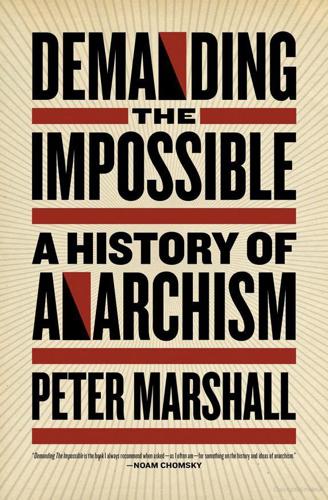
Demanding the Impossible: A History of Anarchism
by
Peter Marshall
Published 2 Jan 1992
Marxism’s apologists resorted to notions of ‘alienation’ and ‘false consciousness’ in order to try and explain away the lack of interest of the ‘proletariat’ in class struggle. At the cultural level, many new ideas were fermenting on the Left. The American sociologist C. Wright Mills called on academics and intellectuals to resist the System. He had revised Marxism by opposing the notion of a power elite to the class model and by stressing the role of the military-industrial complex in American society. His ‘Letter to the New Left’ in 1961 was strongly libertarian in spirit, reflecting a Utopian yearning for social justice and spontaneity. The work of the maverick psychoanalyst and Marxist Wilhelm Reich was rediscovered. His argument that the authoritarian personality is the sine qua non of authoritarian regimes and that a sexual revolution must accompany the next political revolution was taken to heart.
…
He went on to portray vividly the alienation of the One-Dimensional Man (1964) of Western society whose creativity and ability to dissent had been undermined. He concluded that only a non-repressive civilization would be able to give natural expression to unfettered human nature although he did not go so far as to reject the need for government. At the same time, social critics like Lewis Mumford were denouncing the ‘megamachine’ of the new military-industrial complex in the United States, while Paul Goodman was reminding people of the advantages of decentralized communities. During the early part of the 1960s the ideology of the New Left remained ambiguous. The reigning orthodoxies of Liberalism and Marxism seemed exhausted and irrelevant, but there was no clear alternative.
…
The military draft became terminally emblematic of the authoritarian State in the United States, for on signing one not only pledged service to a State which was killing mindlessly and pointlessly in Vietnam, but also signed oneself over to the System in all its poisonous finery. The counter-culture was also anarchist in its critique of the centralized and technological State and in its widespread desire to see a return to a simpler life closer to nature.10 Faced with the prospect of collusion with suburbia and the military-industrial complex, American youth set up communes and collectives in the city centres or in the country. In the midst of affluence and consumerism, they chose voluntary poverty, like Thoreau in Walden, like the monastics of old, preferring to go without, borrow, improvise or steal rather than work. The counter-culture was tolerant of diversity and eclecticism.

The Idea of Decline in Western History
by
Arthur Herman
Published 8 Jan 1997
Society must become one great “military factory,” Burckhardt predicted, with the masses conscripted into great and destructive armies and its rulers dealing out mass death in the same way as its industries deal out mass production and its press mass propaganda.15 Jacob Burckhardt was not only the first prophet of the totalitarian state and the military-industrial complex. He was also describing the triumph of a debased mass culture that comes to dominate all of society. That culture destabilizes the social order, with its traditional and organic balance of institutions and ideals. Modern democracy was destroying a European civilization that he believed was “decadent” and had lost its raison d’être .
…
He later welcomed America’s entry into World War I in 1917 precisely because he believed it would force America to make the hard choices involved in building the omnipotent administrative state, as Germany already had.79 In his novel Democracy, Henry Adams had evoked George Washington as the symbol of a graceful, aristocratic social and moral order that had vanished forever. By contrast, Brooks Adams evoked General Washington as an example of what the fusion of military and political power could accomplish in the future. And who would run the new leviathan, America’s military-industrial complex? It is not difficult to discern in Brooks Adams’s “powerful administrative minds” a postliberal version of America’s natural aristocracy, organizing and adjusting a relentlessly interventionist government in accordance with the dynamic social forces of the future. These best and brightest would not be cultivated gentlemen of letters, however.
…
Linked by wealth and old school ties (Harvard, Yale, Groton, and West Point), they effected America’s economic, political, and military decision-making through a single ruthless “political directorate.”32 What Brooks Adams had only dreamed of, “that one day we shall be reorganized by soldiers,” Mills claimed had already come about. This “military-industrial complex,” however, was not distinctively American. It reflected the modern nation’s industrial and therefore foreign character. Like Stalin’s Russia, the sins of Eisenhower’s United States formed part of a larger historical totality. “There is,” Mills wrote, “a fairly straight line running upward throughout the history of the West; that oppression and exploitation, violence and destruction, as well as the means of production, have been progressively enlarged and increasingly centralized.”
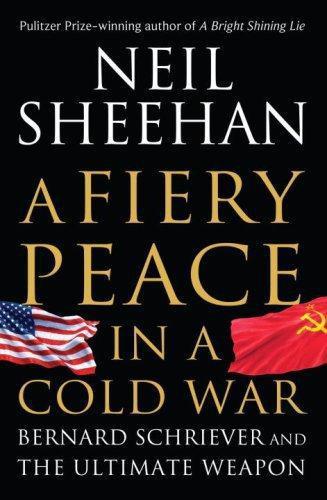
A Fiery Peace in a Cold War: Bernard Schriever and the Ultimate Weapon
by
Neil Sheehan
Published 21 Sep 2009
A number of the other leading physicists, engineers, and managers were similarly rewarded with the honor of Hero of Socialist Labor and with money, cars, and sundry other privileges in lesser degrees. Khariton was eventually also to be awarded his own private railway car. In time, through the remaining years of Stalin and during the rule of his successors, Arzamas-16, its sister sites in the atomic industry network, and research centers for other branches of the Soviet military-industrial complex were to grow into self-contained cities, with their own schools, concert halls, hospitals, and, by Russian standards, first-class shops for food and clothing. Although officially secret, they became known as the “white archipelago,” and their privileged inhabitants, the scientists and engineers and their families, were referred to as chocolatniki by less fortunate Russians.
…
The assumption behind his appointment was that a man who ran the largest private corporation in the world, which General Motors then was, could use his skills as an industrial manager to oversee and reform the biggest of government departments. That June, in one of his efforts to try to bring efficiency to the military-industrial complex, Wilson instructed Harold Talbott to form a committee to review the confused and confusing array of missile projects the Army, Navy, and Air Force had under way. These encompassed air-to-air, surface-to-air, and both short-range surface-to-surface tactical and long-range surface-to-surface strategic weapons.
…
He rarely appeared at his Culver City property, knew little of what went on there, and understood less. Hughes Aircraft had been transformed into something quite different from an ordinary aircraft company by two men, Simon Ramo and Dean Wooldridge, who were to become immensely wealthy princes of the American military-industrial complex as co-founders of one of its preeminent firms, TRW, Inc. And the ICBM project, for which Ramo was to serve as Bennie Schriever’s chief technical director and engineer, was to launch them. Simon Ramo was a technological entrepreneur. He had an eye for the main chance of the future and understood how to exploit it.

The Collapse of Western Civilization: A View From the Future
by
Naomi Oreskes
and
Erik M. Conway
Published 30 Jun 2014
It’s not just the fossil fuel companies— although obviously they lay the crucial foundation— but it’s also the automobile industry, the aerospace industry, the electrical utilities, the folks who supply asphalt for roads . . . you get the picture. At the same time we were writing this piece, Erik and I were also working on a volume on Cold War science. You can’t talk about the Cold War without talking about the military-industrial complex. The carbon-combustion complex was a natural analog. 68 I N t e r v I e w w I t h t h e A u t h O r s eC: The carbon-combustion complex, as Naomi describes, was a convenient formulation for deal- ing with the intersecting political and economic interests surrounding fossil energy production and use, though my own tendency is to refer to them as the fossil industry complex.
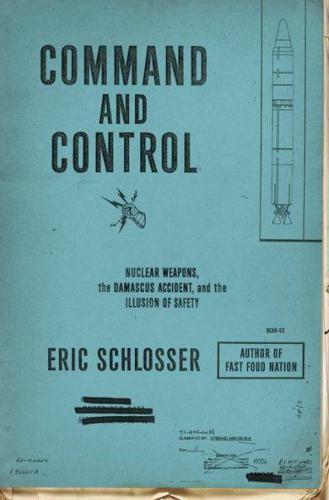
Command and Control: Nuclear Weapons, the Damascus Accident, and the Illusion ofSafety
by
Eric Schlosser
Published 16 Sep 2013
The nuclear test ban was voluntary, but he hoped to make it permanent. In the words of one adviser, Eisenhower had become “entirely preoccupied by the horror of nuclear war.” The harsh criticism of his policies—not just by Democrats but also by defense contractors—led Eisenhower to believe in the existence of a “military-industrial complex,” a set of powerful interest groups that threatened American democracy and sought new weapons regardless of the actual need. The Air Force was in a bind. The hydrogen bomb scheduled to become its workhorse, deployed at air bases throughout the United States and Europe, might be prone to detonate during a plane crash.
…
And yet they were both self-confident, transformational leaders, willing to defy expectations and challenge the status quo. During their first meeting, at a Geneva summit conference in November 1985, the two men established a personal rapport and discussed how to reduce the nuclear arsenals of both nations. Gorbachev left Geneva viewing Reagan not as a right-wing caricature, a puppet of the military-industrial complex, but as a human being who seemed eager to avoid a nuclear war. A year later, at a summit in Reykjavik, Iceland, the discussion strayed onto a topic that alarmed many of Reagan’s close advisers: huge reductions in the number of nuclear weapons. Secretary of State George P. Shultz was elated by the possibility.
…
An executive at the General Dynamics Corporation, manufacturer of the Atlas missile, accused Eisenhower of taking “a dangerous gamble with the survival of our people.” Among other sins, Eisenhower had not ordered enough Atlas missiles. See Bill Becker, “’Gamble’ Charged in Defense Policy,” New York Times, February 5, 1960. “military-industrial complex”: See “Transcript of President Eisenhower’s Farewell Message to Nation,” Washington Post and Times Herald, January 18, 1961. “hydronuclear experiments”: My account of these tests is based on my interview with Harold Agnew as well as this report: “Hydronuclear Experiments,” Robert N. Thorn, Donald R.

The Road Not Taken: Edward Lansdale and the American Tragedy in Vietnam
by
Max Boot
Published 9 Jan 2018
Fletcher Prouty, a retired Air Force colonel who had once worked for Lansdale at the Pentagon, went so far as to suggest that he was part of a right-wing conspiracy that was responsible for the murder of John F. Kennedy.6 These sinister animadversions were picked up by the director Oliver Stone in his conspiratorially themed 1991 film, JFK, which features a shadowy Lansdale stand-in referred to only as General Y running the assassination on behalf of the “military-industrial complex.” This is symptomatic of the long concatenation of misunderstanding and misinformation that still clouds Lansdale and his legacy. His was an epochal, if ultimately tragic, story—one that sheds considerable light not only on the course of the Vietnam War, a conflict whose bitter legacy still haunts American foreign policy, but also on such vital issues as how the United States can effectively fight insurgencies abroad, how it can deal with autocratic allies, and how it can most effectively dispense military and political advice to foreign partners of dubious reliability.
…
In the decades after Kennedy’s murder, phrases such as “grassy knoll” and “the Zapruder film” would enter the popular culture, thanks to an industry of conspiracy-mongers, their work culminating in 1991 with the release of the director Oliver Stone’s $40 million epic JFK. The film features a shadowy character, played by Donald Sutherland and identified only as X, who claims that Kennedy was killed by the “military industrial complex” in a plot orchestrated by “General Y.” The movie furnishes some telltale clues to Y’s identity. X says that Allen Dulles was Y’s benefactor and that Y was in charge of Operation Mongoose. In case there is any further doubt of Y’s identity, the camera briefly pans to his office desk. His nameplate is obscured but the visible part reads “M/GEN.
…
He claimed that Lansdale had concocted the entire Huk threat—that so-called Huk attacks were actually carried out by Philippine army special forces in order to elect Ramon Magsaysay president, although he never explained why Washington would want to elect Magsaysay if there was no Huk threat.8 In a similar vein, he claimed that the members of Lansdale’s Saigon Military Mission were “a band of superterrorists” who deliberately created the Vietcong by moving a million Vietnamese from the North to the South in 1954–55. Their goal, Prouty explained, was to spark a war that could profit the military-industrial complex.9 (In reality, as we have seen, most of the refugees were Catholics who were staunchly anti-Communist.) To back up his grave accusation that Lansdale was the mastermind of the Kennedy assassination, Prouty could offer but one piece of “evidence”: a photograph taken on November 22, 1963, near Dealey Plaza, showing a man in a suit walking by three tramps who are being escorted by two police officers.

The Inequality Puzzle: European and US Leaders Discuss Rising Income Inequality
by
Roland Berger
,
David Grusky
,
Tobias Raffel
,
Geoffrey Samuels
and
Chris Wimer
Published 29 Oct 2010
It will be very difficult to significantly improve the compensation levels of the lesseducated, blue-collar workforce. Are you in general optimistic or pessimistic? I am pessimistic so long as the government is so focused on the financial sector to the detriment of the industrial sector. Eisenhower used to talk about a military-industrial complex. We have a Washington-Wall Street complex, and it is at the heart of a lot of the problems. What are the causes of inequality? I think that you have a tax code where interest is deductible and you have the pooling of the world’s savings into a single market, and that means that relatively small amounts of capital can be leveraged up incredibly to engage in financial services and speculation.
…
There is a complete mismatch between the needs of the bluecollar sector for the kinds of government policies that create investment and skill sets to increase their earning power relative to government policies that prejudice the system toward government and the financial sector. … I am pessimistic so long as the government is so focused on the financial sector to the detriment of the industrial sector. Eisenhower used to talk about a military-industrial complex. We have a Washington-Wall Street complex, and it is at the heart of a lot of the problems. The tax code favors the financial sector and Smith recommends reforms to promote industrial investments. Specifically, he advocates that capital equipment should be expensed immediately and the corporate tax rate lowered to 25% to be globally competitive because “what makes blue-collar people able to sustain a reasonable standard of living, the investment in the industrial sector, and that is treated poorly by our tax code and our government policy.” 176 T.

A Brief History of Neoliberalism
by
David Harvey
Published 2 Jan 1995
In the US this entails triggering what Hofstadter refers to as ‘the paranoid style of American politics’ in which the nation is depicted as besieged and threatened by enemies from within and without.21 This style of politics has had a long history in the US. Neoconservatism is not new, and since the Second World War it has found a particular home in a powerful military-industrial complex that has a vested interest in permanent militarization. But the end of the Cold War posed the question of where the threat to US security was coming from. Radical Islam and China emerged as the top two candidates externally, and dissident internal movements (the Branch Dravidians incinerated at Waco, militia movements that gave succour to the Oklahoma bombing, the riots that followed the beating of Rodney King in Los Angeles, and finally the disorders that broke out in Seattle in 1999) had to be targeted internally by stronger surveillance and policing.
…
A few of them may get caught and end up jumping out of Wall Street windows, but that is not the norm. The only fear they have is of political movements that threaten them with expropriation or revolutionary violence. While they can hope that the sophisticated military apparatus they now possess (thanks to the military industrial complex) will protect their wealth and power, the failure of that apparatus to easily pacify Iraq on the ground should give them pause. But ruling classes rarely, if ever, voluntarily surrender any of their power and I see no reason to believe they will do so this time. Paradoxically, a strong and powerful social democratic and working-class movement is in a better position to redeem capitalism than is capitalist class power itself.

The End of Big: How the Internet Makes David the New Goliath
by
Nicco Mele
Published 14 Apr 2013
The book’s cover art—a raised fist, à la the Black Panthers—left little doubt about its intended radicalism. Computer science was burgeoning as a discipline at major universities. At the same time, much of the country was still caught up in the turmoil of antiwar protests and other social movements. Many young people were arguing that the government and the military-industrial complex had fundamentally betrayed the people by pursuing war in Southeast Asia. Students had gone so far as to organize protests against construction of large Defense Department supercomputers.11 In this environment, Nelson’s book landed like a tab of Alka-Seltzer in a tall, cold glass of water.
…
We might cheer when Internet-savvy opposition movements overthrow oppressive, authoritarian regimes, but overall radical connectivity sows chaos and instability, undoing the traditional advantages of powerful militaries. With Big Armies (both good guys and bad guys) fighting to a standstill against ragtag but tech-savvy groups, we must take a cold hard look at our military-industrial complex and reconsider some previously unassailable assumptions of military might. Our approach to national security and to the stability of the nation-state needs to fundamentally change if we are to reckon with the realities of the digital age. Fighting Al Qaeda Before 9/11, Cold War thinking maintained a decisive influence over America’s institutional approach to national security and foreign policy.

Red Roulette: An Insider's Story of Wealth, Power, Corruption, and Vengeance in Today's China
by
Desmond Shum
Published 6 Sep 2021
Under his leadership, Tsinghua became the most prestigious university in China and a political heavyweight. In the mid-2000s, all seven members of the Standing Committee of the Politburo were graduates, a fact that Chen never let anyone forget. Chen encouraged students to study military technology, especially rocket science, and join China’s military-industrial complex. He played a leading role in the Thousand Talents Program, a Chinese government effort to entice leading scientists, both Chinese and foreign, to move to China to teach and conduct cutting-edge research. Having studied for two years in California, he was particularly intent on bringing talent from the USA.
…
W., 42, 93 Carlyle Group, 93 Carnegie, Dale, 63 Chen Liangyu, 202 Chen Shui-bian, 170 Chen Tonghai, 197 Chen Weida, 197 Chen Xi, 183–87, 252, 253, 259 Chen Xitong, 56–57 Chen Yun, 239–40 Chen Zuo’er, 247 Chiang Kai-shek, 6, 46, 240 China airport construction boom, 137 average height for men in, 27 capitalism and entrepreneurship in, 50, 169–70, 171, 180, 182, 189, 192, 194, 196, 197, 201, 282, 283 CCP control of all non-Communist elements in society, 205, 208 censorship in, 237 charities in, 182 Christianity in, 71, 182 “common good” fantasy of, 282–83 concept of “face,” 28, 109–10, 212 constitution of, 2 consumption boom, 2000s, 161 consumer goods in, 57 crackdown on Western ideas, 195–97 “Crazy rich Asians” in, 161 democracy and, 86–87, 94, 169–70, 189, 194, 283 Deng and reforms, 18, 45, 55, 170, 216, 251, 283 doing business in, 46, 47, 112–13, 194 (see also Shum, Desmond) economic growth, 45, 51, 55–57, 113, 124, 171–72 economic system of state control, 132, 141 emigration from, mid-1990s, 59–60 exporting its system overseas, 282 extralegal kidnappings in, 2, 254–55, 280, 281 financial crisis of 2008 and, 195 first generation of wealthy, 218 first private research institute, 182 five “black categories,” 5, 11, 170 foreign relations and, 189, 194, 254 Gang of Four, 18, 52 Great Leap Forward, 273 guanxi (connections), importance of, 46, 74, 120, 121, 139, 149–50, 155, 164–65, 181, 204, 217, 247, 271 Gu Mu and economic reforms, 272 Heineken beer and Marlboro cigarettes, sales of, 46 hotels, popularity of, 228 indefinite detention (shuanggui), 281 influence peddling and, 164 intellectual property theft in, 62 Internet and broadband in, 49, 51 islands in South China Sea and, 197 jewelry start-ups in, 89 Jiang’s policy on capitalists, 170 laws as ambiguous, 150, 258 Leninist system of total societal control, 281–82 Li Peng and economic slowdown, 45 medical system, 153–56 military-industrial complex, 185 mobile phones in, 60 modernization of, 77, 169–70, 188 moral vacuum in, 158 motorcycle production, 48 the “New China,” 3, 6, 49, 180 nouveau riche in, 158, 161 one-child policy, 154 Overseas Chinese Affairs, 19–20 parenting philosophy in, 15 as patriarchal society, 3, 64, 103, 173, 246 “patriotic overseas Chinese” as source for foreign currency, 9 politics as the key to riches, 215 pollution in, 188 privatization in, 174 pro-democracy protests in 1989, 272 real estate business, 56, 123–24, 216 relatives overseas, as stigma, 5 secrecy and fear in, 120 shock-and-awe hospitality of, 48 southern clans, diaspora of, 8 Special Economic Zones, 201 sports bureaucracy, 16 state-owned banks, 224 state-owned businesses, 126–27, 142, 171–72, 174, 192, 195, 199, 223 state-run work unit system, 56 state-subsidies of exports, 134 status symbols, 60, 114–15 stock markets of, 240 the “system” and, 95, 274, 282 tariff revenues, 46, 133 tax system, 197 theory of zhongxue wei ti, xixue wei yong, 77 tuhuangdi or dirt emperor, 128, 193 universities run by the CCP, 183 US-China relations, 32, 182 Western businesses in, pretense of ignorance and, 47 Western private equity investment in, 45, 51, 56, 57, 91, 101 woman’s average age to marry, 69 women and power in, 173 women’s repression in, 71 WTO and, 57, 134 Xi Jinping’s repressive rule, 251–55 See also Chinese Communist Party China Central Television, 124 China Democratic League, 52 China Duty Free Group, 126–27 China Mineral and Gem Corp., 89 China National Petroleum Corp., 8 China Ocean Shipping Company (COSCO), 75, 110, 165 China Telecom, 172 ChinaVest, 44–54, 60, 134 Chinese Academy of Social Sciences, 189 Chinese Communist Party (CCP), 2, 7, 53, 57 ability to drink and, 128 anti-American stance, 197, 237–38 battle against Western ideas, 195–96, 253 Beijing vs.
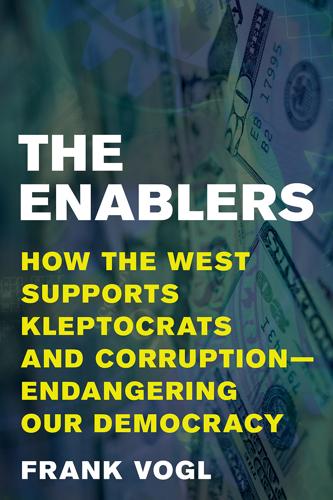
The Enablers: How the West Supports Kleptocrats and Corruption - Endangering Our Democracy
by
Frank Vogl
Published 14 Jul 2021
Also see data from the Arms Control Association and background on 2020 arms sales by the US. 12. CNN News, August 20, 2020, headline: “Kushner’s Secret Push to Sell F-35 Jets to UAE Causes Frustration among US Agencies and Lawmakers.” 13. Jodi Vittori, Defense and Security Department, TI-UK, report: “A Mutual Extortion Racket: The Military Industrial Complex and US Foreign Policy—The Cases of Saudi Arabia & UAE.” 14. Prepared remarks, John F. Sopko, Special Inspector General for Afghanistan Reconstruction (SIGAR), “The Perilous State of Afghan Reconstruction: Lessons from Fifteen Years,” Harvard University, April 7, 2016. 15. See “Corruption in Conflict: Lessons from the U.S.
…
“The 2018 National Strategy for Combating Terrorist and Other Illicit Financing (Illicit Finance Strategy).” Report. US Department of the Treasury. “2018 National Money Laundering Risk Assessment.” Report. US Senate Subcommittee on Investigations. “The Art Industry and U.S. Policies That Undermine Sanctions.” Report. 2020. Vittori. Jodi. “A Mutual Extortion Racket: The Military Industrial Complex and US Foreign Policy: The Cases of Saudi Arabia & UAE.” Report from the Defense and Security Department, Transparency International-UK. 2019. Volcker, Paul A., with Christine Harper. Keeping at It: The Quest for Sound Money and Good Government. Public Affairs. 2018. Volcker, Paul, Richard J.

Inflated: How Money and Debt Built the American Dream
by
R. Christopher Whalen
Published 7 Dec 2010
Once business and government became fully aware of the risks and the possibilities for profit created by statism in such formulations as price controls and government allocation schemes, an alliance of convenience was created that was far more extensive than the particular influence of a J.P. Morgan or Standard Oil in the pre-WWI era. The template for this government-private sector cooperation was the defense sector, which Dwight Eisenhower called the “defense military industrial complex” as he left office in January 1961. He warned: Until the latest of our world conflicts, the United States had no armaments industry. American makers of plowshares could, with time and as required, make swords as well. But now we can no longer risk emergency improvisation of national defense; we have been compelled to create a permanent armaments industry of vast proportions.
…
We recognize the imperative need for this development. Yet we must not fail to comprehend its grave implications. Our toil, resources and livelihood are all involved; so is the very structure of our society. In the councils of government, we must guard against the acquisition of unwarranted influence, whether sought or unsought, by the military industrial complex. The potential for the disastrous rise of misplaced power exists and will persist. We must never let the weight of this combination endanger our liberties or democratic processes. We should take nothing for granted. Only an alert and knowledgeable citizenry can compel the proper meshing of the huge industrial and military machinery of defense with our peaceful methods and goals, so that security and liberty may prosper together.
…
Only an alert and knowledgeable citizenry can compel the proper meshing of the huge industrial and military machinery of defense with our peaceful methods and goals, so that security and liberty may prosper together. Eisenhower’s warning was prescient and not limited to the defense sector. Not only had the defense industry become intertwined with the federal government during WWII, but what Eisenhower called the “military industrial complex” was entirely subsumed inside the government. The late William C. Green, formerly of CalState San Bernadino, commented years ago when we both worked at the Heritage Foundation in Washington, DC that during the Cold War the U.S. defense sector became the least competitive part of the U.S. economy, while the Soviet defense sector was the most competitive part of that nation’s economy.
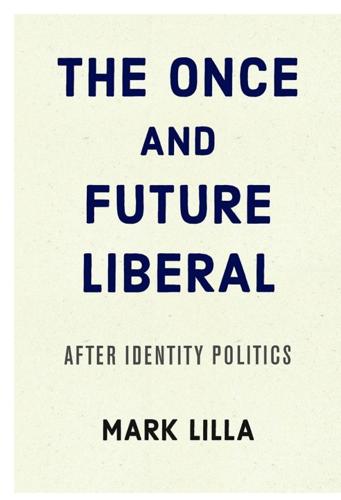
The Once and Future Liberal: After Identity Politics
by
Mark Lilla
Published 14 Aug 2017
Ronald Reagan has been elected and Republican activists are setting out on the road to spread the new individualist gospel of small government and to campaign in out-of-the-way county, state, and congressional elections. Also on the road, though taking a different exit off the interstate, you see former New Left activists in rusting, multicolored VW buses. Having failed to overturn capitalism and the military-industrial complex, they are heading for college towns all over America, where they hope to practice a very different sort of politics within educational institutions. Both groups were successful and both left their mark on the country. The retreat of the post-1960s left was strategic. Already in 1962 the authors of the Port Huron Statement argued that, given the power of the Dixiecrats in the Democratic Party and the quiescence of the labor movement, “we believe that the universities are an overlooked seat of influence.”

Let them eat junk: how capitalism creates hunger and obesity
by
Robert Albritton
Published 31 Mar 2009
Finally, cheap food for workers could increase the profits of capital and thus strengthen the economy in general in the race to see whether the capitalist economy could outperform the communist economy. It would seem then that the “welfare state” was actually to a much greater extent a warfare state. It is true that some welfare became available to those who most needed it, but in the main the welfare (taxpayers’ money) went to the military industrial complex, to large corporations and to rich farmers in the form of subsidies. Large corporations received subsidies, tax breaks, the benefits of tied foreign aid, trade deals that opened foreign markets, import protections and cost-plus guaranteed profits from government contracts. CONCLUSIONS In this chapter, I have attempted to illustrate the ways in which the major conditions necessary for the existence of our current food system were established during the phase of consumerism, most characteristically developed in the United States between 1946 and 1970.
…
B. 57, 217 judicial system 85–7, 169–70, 183–4, 190 junk food 2, 3, 5–6, 92, 123, 172, 174, 176–7, 191 see also empty calories junk capitalism 5–6 K King, David 194 knowledge 8 Kyoto Accord 154 L labelling 162, 189, 236 labour 124 labour-intensive 140, 143–4, 220 land 21, 156–8 degradation 156–7 landless workers movement (MST) 203 Las Vegas 159 legal subjectivity 46, 47, 207 levels of analysis 10–14, 202 liberal-democracy 9, 14, 182–97 see also democracy liberalism 183 livestock 150, 155, 224 living conditions 142 long run 22–3 M Malawi 140 Malaysia 142 Mali 129 malnutrition x, 90, 106–7, 212 Marie Antoinette 2 256 INDEX market failure 15–16 marketing 86, 140, 168, 171–2, 177, 220 marketing to children 69, 70, 140, 165, 166, 172–7 markets 14–15, 19, 43, 144, 208 see also democratizing markets Marlboro Man 169, 171 Marx, Karl 9, 10, 11, 12, 18, 19, 20, 21, 22, 28, 30, 31, 39, 43, 46, 76, 81 massacre x meat production 149, 155 meatification 101, 104 mechanization 64, 128, 202 media 45, 85, 169, 172–77, 183–6, 195–7 medicalization 90, 91 mental illness 173, 177 merger movement 44 Mexico 136 mid-range theory 12–13, 51–78, 202, 216 see also levels of analysis military Keynesianism 75 military-industrial complex 75 miscarriages 151 monoculture 34, 66, 118, 151, 161, 203 see also homogenization, species diversity monopolistic trading companies 44–5 Monsanto 162, 189 movements xii, 8, 33, 203 see also cooperation, international cooperation N National Cancer Institute 62 nation-state xiii see also government, state, state intervention natural disasters 204 nemagon 137, 190, 193 Nestle, Marion 115, 149 Nicaragua 138 nitrates 151 nitrous oxide (N2O) 151, 155 Nixon, President Richard 63, 146 non-governmental organization (NGO) 211 North American Free Trade Agreement (NAFTA) 107, 136 nutrients 4, 115–17 nutrition 6, 80–122, 195 O obesity 4, 41, 90, 91, 93, 97–9, 104, 109, 172–3, 180, 188, 190, 221 obesity epidemic 32, 43–6 89, 93 objectification 47–9 see also subjectification oceans 154, 159–60 ocean levels 154 oestrogen 109–10, 225 Ogallala aquifer 157 oligopoly 43–6, 70–2 organic farming 144, 162, 205, 212 organic food 167 Organization of Petroleum Exporting Countries (OPEC) 57 P palm oil 142–3, 151 palm oil workers 142–3 peak oil 142–54 per capita emissions 155 perfect storm ix pesticides 58, 86, 110, 127–8, 130, 137–40, 142–4, 161, 179, 195, 206 petro-chemicals 147, 179 see also pesticides, petroleum petro-dollars 134 petro-food 58, 149, 150, 195 petroleum x, 57, 147, 149, 217 pharmaceutical industry 153 phase of consumerism 13, 51–77, 217 phase of imperialism 54 phase of liberalism 54 phase of mercantilism 54 INDEX Pimentel, David 5, 149 plankton 159 planning 14 policy 8 politics of fear xiii pollution 14, 146–7, 157, 159, 217 portion size 104, 121 possessive individualism 26, 46, 72, 166, 184 see also atomism, individualism, islandization, subjectification pouring rights 175 poverty 107, 128, 134, 141, 210, 213 poverty line 126, 127, 130, 227 power 21, 167, 175, 183, 185 see also class, corporations, state preference schedules 166–7 private property 21, 46–7, 207 privatize profits 62, 84, 180, 206, 208 processed food 92, 120, 149 profit 6, 9, 11, 15, 20, 22–3, 26–33, 62–3, 77, 82–4, 86–7, 92, 108, 112, 115, 121, 127, 129–33, 139, 142–3, 147–8, 153, 159, 162–3, 169, 171–2, 179–80, 189–90, 192–3, 197, 201–2, 206, 224 Proctor, Robert 192 public health 190 public sector 144, 180, 185, 191–2, 194, 204, 206 public transportation 179, 209, 217 pulp and paper industry 157 pure capitalism 23, 26, 38, 39, 42, 43, 43, 44, 48, 49, 50 see also abstract theory, deep structure, inner logic putting-out system 25, 54 Q quality versus quantity 20, 22, 27, 28, 32–3, 35, 37, 47 see also indifference to use-value R race 99 257 racism 66–7, 111, 124 rainforest 157, 179 Randall, Peggy 96 rationality xii, 19, 49, 86–7, 126, 164 capitalist rationality 9, 11, 15, 18, 19, 20, 146, 166, 169, 192 Reagan, President Ronald 62, 74, 140, 171–2 redistribution of wealth 123, 144, 204, 209 see also distributive justice, equality, inequality, progressive taxation reductionism 9 refrigeration 149 reproduction 109–110 rice 108 right to food 122, 226 rights x, 126, 132 formal rights 122 individual rights x social rights x Roundup 118–19, 195 see also glyposate rule of law 183 S salmonella 114 salt 108–9 schools 123, 172, 175–6 science 85, 90, 169, 183, 190–7 seeds 66, 83 see also genetically modified organisms, monoculture, species diversity self-regulating markets 48, 50 sense of community 49, 73 shopping malls 65 silent tsunami ix, xiii slaughterhouse workers 131–2 slavery 49, 127–8, 138–9, 144, 179, 227, 229 smoker’s bill of rights 170, 196 snacks 41 social costs xii, 8–9 14–15, 24, 28, 32, 258 INDEX 57, 64, 76, 83, 87, 102–4, 111, 183, 186, 200, 206–8 social injustice 144, 152, 164 social needs 210 social responsibility 26, 191, 197, 205 socialism 52–3, 62, 65, 74–5 socialization of costs 14, 62, 180, 206, 208 soft drinks/soda pop 92, 96, 98, 100, 174, 222 soil 18, 117–18, 215 South Sea Bubble 216 soy 109, 142, 151 soy formula 109 space 33–7, 64–6 see also homogenization, monoculture species diversity 34, 160–1 see also homogenization, monoculture speed 24, 30–3 53, 61–64, 72, 126, 131–2, 147, 178, 193, 218 see also intensification, space, time Sri Lanka 142 starvation ix, 88, 90, 105, 108, 153 see also hunger state see warfare state, welfare state state intervention 12, 15, 20, 38, 75, 75, 77, 186 see also regulation status symbol 73, 166 sterility 137–8, 193 Stern Report 16, 157 stewardship 23, 36, 45 strict settlement 215 structural adjustment policies (SAPs) 134, 141, 203, 205 subjectivity 46–9, 72–6 subsidies 15, 59, 69, 71, 75, 78, 86, 100–1, 107–8, 121, 124, 128–9, 131, 133, 135–6, 139, 141, 144, 150, 152, 154, 159, 171, 180, 187, 189, 204–6, 208–9, 236 suburbanization 65–6, 72 see also homogenization, space sugar 91, 95–6, 172, 177, 227 sugar industry 15, 45, 47, 97, 100, 127–8, 139, 151, 171, 188 suicide 129–30, 162, 228 Sumatra 155 supermarkets 119–20, 132–3 supply/demand 24, 37, 43, 48 Surgeon General (US) 170 surtax 208–9 sustainability 10, 16, 50, 164, 200, 201, 209, 210 T Tanzania 140 tax evasion 204–5, 207 taxation 194, 204–5, 220 Taylorism 30 tea workers 142 television 66, 69–70, 172–3, 217 Thatcher, Prime Minister Margaret 74 time 30–33, 61–4, 177, 215 see also intensification, speed tobacco industry 8, 60, 70, 84–7, 139–40, 143, 157, 168–71, 174, 182, 191, 217 tomatoes 34 toxic food environment 91, 173, 190, 226 toxic waste 156 toxicity 32, 61–2, 112–12, 127, 147, 167 toys 175 trade 152 deficit 171 trade unions 133, 215, 216 trans fat 102 transition 54 transparency 73, 207 transportation 149, 153 see also public transportation tree plantations 157 tropical commodities 14, 72, 141 tween strategy 173 see also marketing to children INDEX U underconsumption 25, 41–3, 68–71 underfunding of schools 175 undocumented workers 126–8, 132, 136 unemployment 227 uneven development 54 United Nations 107, 155, 160, 197, 211 United States Center for Disease Control (CDC) 112 government 3 food security 4 hegemony see American hegemony military 149 urban slums 107, 125, 136, 141 use-value 22, 28, 33 see also indifference to use-value, quality versus quantity V Valium 72 259 W water 108 wages 24–5, 37, 40–1, 67, 124–33, 137 warfare state 74, 76 war on cancer 63 welfare state 74–6 Winfrey, Oprah 189 women 6, 40, 72, 99, 107, 133 Wootan, M. 93 workers 7, 18, 21, 24, 28, 37–41, 124–45 food workers 125 working class 4, 80, 92–3 working conditions 67, 131–2 working day 31 World Bank 93 Z Ziegler, Jean 100

Stealing Fire: How Silicon Valley, the Navy SEALs, and Maverick Scientists Are Revolutionizing the Way We Live and Work
by
Steven Kotler
and
Jamie Wheal
Published 21 Feb 2017
Invented by National Institutes of Health researcher and neuroscientist John Lilly26 in the 1960s, these tanks were specifically designed to help people shut off the self (since the brain uses sensory inputs to help create our sense of self, by removing those inputs, you can dial down this sense). After Lilly began using these tanks to explore the effects of LSD and ketamine on consciousness, they fell out of favor with the establishment and devolved into a countercultural curiosity. But here they were again, in the red-hot center of the military-industrial complex, being used to train supersoldiers. And the SEALs have been iterating on Lilly’s original technology. Working with researchers at Advanced Brain Monitoring, in Carlsbad, California, they’ve hotwired neural and cardiac feedback loops, digital displays, and high-fidelity sound into the experience.
…
In the same way that it takes a far less developed society to detonate a nuclear bomb than to invent one, the power of ecstasis constantly tempts those who would have no idea how to replicate it on their own. But once they see it in action, once they can map the fundamental logic, it doesn’t take much to turn it to ends that would mortify its original creators. Soma, Delicious Soma! If the prospect of the military-industrial complex hijacking ecstasis to pursue its own agenda is sobering, an equally likely outcome is that we end up seduced by our own desires. In fact, control not through coercion—as totalitarian states have done—but through persuasion is an even more likely prospect. In 2007, a collection of the world’s biggest brands33—Apple, Coca-Cola, American Express, Nike, Samsung, Sony, and Ford—put up $7 million to fund a study into the neuroscience of buying behavior.
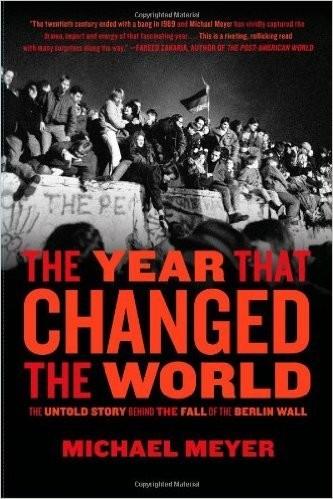
The Year That Changed the World: The Untold Story Behind the Fall of the Berlin Wall
by
Michael Meyer
Published 7 Sep 2009
A bizarre constellation of places resonated fearsomely with even the youngest schoolchildren, Russian and American, Asian as well as European: Saigon. Hanoi. Seoul. Pyongyang. Kabul. Katanga. Tehran. Phnom Penh. Budapest. Prague. Warsaw. Salvador. Santiago. Honduras. Guatemala. Berlin. The Cold War was a uniquely total war, not in movements of armies but in its social and economic effects. Dwight Eisenhower warned against a “military-industrial complex,” with its vast army, intelligence apparatus and defense industries mobilized for a war that would wipe out human civilization. For the better part of five decades it absorbed anywhere from a quarter to a half of all U.S. government spending and 10 percent of the nation’s GNP. The Cold War shaped America, in ways not always obvious.
…
Lewis “Scooter,” 61–62 Lightbody, Bradley, 222 Links, Christoph, 234 Lion at the Gate (Hayward), 221–222 Lives of Others, The (film), 224 Lobkowitz Palace (Prague), 122 Lomakin, Viktor, 183 Loren, Sophia, 106 Luther, Martin, 68 Lux, Silvia, 103, 231 Madison, James, 29, 41 Magdeburg, refugees from GDR and, 148, 160 Magic Lantern (Prague theater), 178, 183–184, 187 Maier, Charles S., 163–164, 230–231, 232, 234, 235 Manifesto for the Earth (Gorbachev), 222–223 Mann, James, 13, 222 Mao Zedong, 23, 27 Marshall Plan, 4, 21 Marx, Karl, 34 Marxist Leninism, 31 Masur, Kurt, 155 Matlock, Jack, 63, 227 May Day (1989), 65–66, 69–70, 228 Mazilu, Dumitru, 197 Mazowiecki, Tadeusz, 47, 129 Mecklenburg, 121 Meine Letzte Mission (Kochemasov), 234 Mejstrik, Martin, 176–178, 180, 182–183, 187 Meszaros, Ferenc, 97–98 Michnik, Adam, 63, 128–129, 227 Mielke, Erich fall of of GDR, 163 Order No. 2 and, 25–27 rise of opposition in GDR, 150, 154, 155, 156 as Stasi chief, 25, 65, 134, 157 Milea, Vasile, 194, 195 Military-industrial complex, 21 Missouri (battleship), 10 Mitterand, François, 126, 213 Mock, Alois, 100 modernization debate, 74–75 Modern Romania (Gallagher), 236 Modrow, Hans, 163 Mongolia, Polish embassy in, 81 Moscow. See Soviet Union, former Musial, Stan, 94 mutual nuclear deterrence, 5 Nagy, Imre in Hungarian revolt of 1956, 34–35, 84–85, 230 reburial of, 84–88 Nagy, Laszlo, 102–103, 231 National Defense Education Act (1958), 21 National Defense University, 75 National Endowment for Democracy, 2, 222 National Gallery of Art (Budapest), 86 National Salvation Front (Romania), 197 National Security Archive, 231 National Security Council fall of Berlin Wall and, 10, 13 National Security Archive, 230–231 U.S.

Black Code: Inside the Battle for Cyberspace
by
Ronald J. Deibert
Published 13 May 2013
Fear and insecurity grow, threats lurk everywhere, and rash decisions lead to unexpected outcomes. For those in the defence and intelligence services industry this scenario represents an irresistibly attractive market opportunity. Some estimates value cyber-security military-industrial business at upwards of US$150 billion annually. Like Dwight Eisenhower’s military-industrial complex before it, the cyber-security industrial complex is intimately connected to militarization processes in the West and, in particular, the U.S. major corporate giants that arose in the Cold War, such as Boeing and Northrop Grumman, are now positioning themselves to service the cyber security market.
…
In today’s world of exaggerated threats and self-serving hyperbole from the computer security industry, it is easy to dismiss security as something to be resisted, rather than engaged. Securitization is generally associated with the defence industry, Pentagon strategists, and so forth, and many question whether employing the language of security only plays into the cyber-security military-industrial complex and the exercise of control. But the vulnerabilities of cyberspace are real, the underbelly of cyber crime undeniably huge and growing, an arms race in cyberspace escalating, and major governments are poised to set the rules of the road that may impose top-down solutions that subvert the domain as we know it.

Possible Minds: Twenty-Five Ways of Looking at AI
by
John Brockman
Published 19 Feb 2019
How might tomorrow’s artificial intelligence be different if practitioners were to reinvest in Wiener’s guiding vision of “information”? * * * — When Wiener wrote The Human Use of Human Beings, his experiences of war-related research, and of what struck him as the moral ambiguities of intellectual life amid the military-industrial complex, were still fresh. Just a few years earlier, he had announced in the pages of the Atlantic Monthly that he would not “publish any future work of mine which may do damage in the hands of irresponsible militarists.”* He remained ambivalent about the transformative power of new technologies, indulging in neither the boundless hype nor the digital utopianism of later pundits.
…
In one sense, it’s a pun or a joke: the cybernetics that was ‘left’ behind. On another level, it’s a vague political grouping connoting our Left Coast: California, Esalen, the group that Dave Kaiser calls the ‘hippie physicists.’ It’s not an adequate term, but it’s a way of recognizing that there was a group beholden to the military-industrial complex, sometimes very unhappily, who gave us the tools to critique it.” Cybernated art is very important, but art for cybernated life is more important. —NAM JUNE PAIK, 1966 Artificial intelligence was not what artists first wanted out of cybernetics, once Norbert Wiener’s The Human Use of Human Beings: Cybernetics and Society came out in 1950.
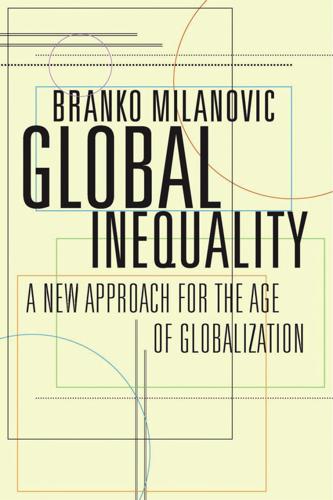
Global Inequality: A New Approach for the Age of Globalization
by
Branko Milanovic
Published 10 Apr 2016
James Galbraith, in Inequality and Instability (2012), shows that the profits earned by the economic beneficiaries of government outlays for the Iraq war (lobbyists, private security firms, military companies) were so significant that they were evident in income distribution statistics for the Washington, DC, area. One need only to open a copy of Politico, a free Washington, DC, daily that is targeted at Capitol Hill, to notice that most of the advertisements are for military hardware, from helicopters to fighter jets. The financial interests of people who benefit from destruction—the famed military-industrial complex—is a huge and unexplored area, and one hopes that the type of empirical analysis that Page, Bartels, and Seawright (2013) recently undertook to shed light on the influence of money in US politics will be done about those who have manifest financial interest in wars. At the risk of simplification, it could be said that in the United States today, wars are fought by the poor (including many who are not even US citizens), are financed by the middle class, and benefit the rich.
…
See also inequality within countries; mobility, upward migration: citizenship rent and, 5; twenty-first and twenty-second centuries and, 7, 255n15; United States and, 74–75, 136, 144–145, 151–152, 153–154, 206; nineteenth century, 124; location-based inequality and, 128; citizenship premium and, 131, 143; 1990–2013, 143–145, 149–150; inequality among countries and, 143–154; 1980–2000, 144; Europe and, 144–146, 164, 204–206, 210, 231, 262n40; barriers to, 144–147, 256n25; rights to, 147, 148–149; tensions and solutions, 147–154, 256nn26–27; worker treatment and, 150–151; policy and, 151–152, 206; taxes and, 152, 206, 262n41; middle-class incomes and, 204; welfare services and, 206–207; global policy and, 230–231; politics and, 233; poorer countries and, 233–234; early-twentieth century compared, 241n2. See also specific countries Milanovic, Branko, 16, 18, 52, 121, 122, 253n3, 261n30 military-industrial complex, 163 military power, 250n33, 251nn40,41 Miller, David, 255n19 mobility, upward, 202–204, 261n32 Moellendorf, Darrel, 142 money, 14–15, 236, 239. See also rich people and money monopolization, 75 Moraga, Jesús Fernández-Huertas, 255n16 Morrisson, Christian, 119, 121, 253n2 Myrdal, Gunnar, 20–21 Nash equilibrium game, 106 nationalism, methodological, 235–239 nationalization, 100 national self-determination, 139–142 nativism, 164, 191, 204, 208, 210 Nefedov, Sergey, 247n17 Neiman, Brent, 181 neoliberalism, 20, 158 New Deal, 72, 98 “new Democrat” era, 54 “New Labour” era, 54 “new society,” 257n2 nineteenth century: late-twenty-first century compared, 5; Napoleonic wars and, 62, 80; markets and, 95; inequality among countries and, 119–120; global and US inequality, 124; horizontal inequality and, 225–226; inequality studies, 253n3.

Data Action: Using Data for Public Good
by
Sarah Williams
Published 14 Sep 2020
Glass, “Citizen Participation in Planning: The Relationship Between Objectives and Techniques,” Journal of the American Planning Association 45, no. 2 (April 1979): 180–189, https://doi.org/10.1080/01944367908976956. 74 John Forester, The Deliberative Practitioner: Encouraging Participatory Planning Processes (Cambridge, MA: MIT Press, 1999). 75 Kevin Lynch, The Image of the City (Cambridge, MA: MIT Press, 1960). 76 Jennifer S. Light, From Warfare to Welfare: Defense Intellectuals and Urban Problems in Cold War America (Baltimore: Johns Hopkins University Press, 2003). 77 Trevor J. Barnes, “Geography's Underworld: The Military–Industrial Complex, Mathematical Modelling and the Quantitative Revolution,” Geoforum 39, no. 1 (January 2008): 3–16, https://doi.org/10.1016/j.geoforum.2007.09.006. 78 Barnes, “Geography's Underworld.” 79 Peter Hall, “The Turbulent Eighth Decade: Challenges to American City Planning,” Journal of the American Planning Association 55, no. 3 (1989): 275–282, https://doi.org/10.1080/01944368908975415. 80 Forester, Planning in the Face of Power. 81 Light, From Warfare to Welfare. 82 Mark Vallianatos, “Uncovering the Early History of the ‘Big Data’ and the ‘Smart City’ in LA,” Boom, https://boomcalifornia.com/2015/06/16/uncovering-the-early-history-of-big-data-and-the-smart-city-in-la/. 83 Richard L Meier, A Communications Theory of Urban Growth (Cambridge, MA: MIT Press, 1962). 84 Anthony M.
…
Handbook of Economic Forecasting 2, no. Part A (2013): 195–237. Barbaro, Michael, and Tom Zeller Jr. “A Face Is Exposed for AOL Searcher No. 4417749.” New York Times, August 9, 2006. https://www.nytimes.com/2006/08/09/technology/09aol.html. Barnes, Trevor J. “Geography's Underworld: The Military–Industrial Complex, Mathematical Modelling and the Quantitative Revolution.” Geoforum 39, no. 1 (January 2008): 3–16. https://doi.org/10.1016/j.geoforum.2007.09.006. Bartholomew, Harland. The Zone Plan. St. Louis, MO: Nixon-Jones Printing, 1919. https://catalog.hathitrust.org/Record/000342898. Bartholomew, Harland.
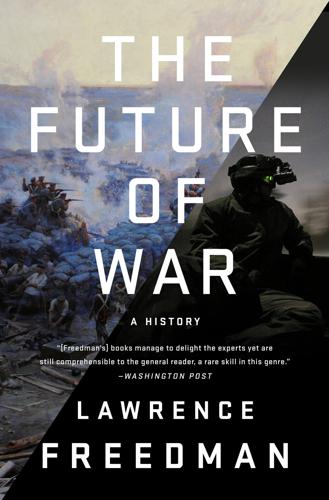
The Future of War
by
Lawrence Freedman
Published 9 Oct 2017
Havel cited this voluntary renunciation of freedom as an example of how easy it was ‘for a well-meant cause to betray its good intentions’.26 WHEN MIKHAIL GORBACHEV BECAME SOVIET LEADER IN 1985 his aim was not to push human rights but to reform the sclerotic system which he could see to be failing by every measure.27 Unlike those he replaced, his world-view had not been shaped by the war with Germany, and he had not worked closely with the military-industrial complex that dominated the economy. The more he discovered about the baleful, distorting influence of this complex, depriving all other sectors of resources and talent, the more he was convinced that it had to be cut back. If this was to be achieved then somehow relations with the West had to be calmed and put on to a new and more cooperative path.
…
London: Cresset, 1975. Ellman, Michael, and S. Maksudov. ‘Soviet Deaths in the Great Patriotic War: a note—World War II’. Europe Asia Studies (1994). Enzensberger, Hans Magnus. Civil War. Trans. Piers Spence and Martin Chalmers. London: Granta Books, 1994. Epstein, Katherine C. Torpedo: Inventing the Military-Industrial Complex in the United States and Great Britain. Cambridge, MA: Harvard University Press, 2014. Erdmann, Andrew. ‘The U.S. Presumption of Quick, Costless Wars’. Orbis. Summer 1999. Esposito, John. The Islamic Threat: Myth or Reality. New York: Oxford University Press, 1992. Evangelista, Matthew, and Henry Shue.
…
Clarke, Voices Prophesying War: Future Wars, 1763–3749 (Oxford: Oxford University Press, 1972), and Patrick M. Kirkwood, ‘The Impact of Fiction on Public Debate in Late Victorian Britain: The Battle of Dorking and the “Lost Career” of Sir George Tomkyns Chesney’, The Graduate History Review 4.1 (2012): 3. 4. Clarke 9. 5. Clarke 8. 6. Katherine C. Epstein, Torpedo: Inventing the Military-Industrial Complex in the United States and Great Britain (Cambridge, MA: Harvard University Press, 2014). 7. Brian Holden Reid, ‘A Signpost That Was Missed? Reconsidering British Lessons from the American Civil War’, The Journal of Military History 70.2 (2006): 385–414. See also Jay Luvaas The Military Legacy of the Civil War: The European Inheritance (Lawrence, KA: University Press of Kansas, 1959). 8.
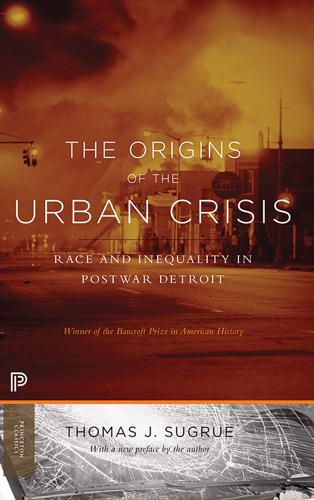
The Origins of the Urban Crisis
by
Sugrue, Thomas J.
Demand for heavy industrial goods skyrocketed during World War II, and Detroit’s industrialists positioned themselves to take advantage of the defense boom. Detroit’s automobile manufacturers, led by Ford, quickly converted their assembly lines to the mass production of military hardware, airplanes, tanks, and other vehicles, making metropolitan Detroit one of the birthplaces of the military-industrial complex. Observers christened the city “Detroit the Dynamic,” the “arsenal of democracy” for a war-torn world. Almost overnight, Detroit had gone from one of the most depressed urban areas in the country to a boomtown, a magnet that attracted workers from all over the United States. The demand for manufacturing labor seemed boundless.
…
Advances in communication and transportation, the transformation of industrial technology, the acceleration of regional and international economic competition, and the expansion of industry in low-wage regions, especially the South, reshaped the geography of American industrial cities. Beginning with the New Deal, the federal government channeled a disproportionate amount of resources to the South, culminating in the Sunbelt-dominated military-industrial complex of the Cold War era. Postwar highway construction, spurred by state and local expressway initiatives in the 1940s, and federally funded highway construction after 1956, made central industrial location less necessary by facilitating the distribution of goods over longer distances. Companies also moved to gain access to markets in other sections of the country, especially rapidly growing areas like California and the urban West.4 The forces of capital mobility reshaped the landscape of industrial America.
…
The result was the Detroit area did not attract new high-technology aircraft and electronics manufacturers that benefited from government largesse during the Cold War.55 Detroit, the World War II “arsenal of democracy,” had become, in the words of a critic of defense policy, a “ghost arsenal.”56 In 1954 alone, the Detroit area lost nearly 56,000 defense jobs; it lost another 26,000 between 1955 and 1957. By 1957, only 33,000 workers in all of metropolitan Detroit worked in defense industries. At a time when the national military-industrial complex was growing by leaps and bounds, Detroit’s share of Defense Department contracts shrunk rapidly. The loss of defense jobs in the city occurred simultaneously with the decline in employment in other industries. Detroit’s loss of defense jobs only added to its already deep economic troubles.57 The movement of firms out of the city, whether spurred by government subsidies or by market considerations, created a spatial mismatch between urban African Americans and jobs.

American Gun: The True Story of the AR-15
by
Cameron McWhirter
and
Zusha Elinson
Published 25 Sep 2023
Wilson launched the shift, but instead of a smooth transition, it set off interservice battles over funding and projects. The development of weapons systems—from intercontinental ballistic missiles to rifles—became, instead of an orderly, cost-efficient process, a struggle among lobbyists, corporate executives, military bureaucrats, and members of Congress. Ike would warn the nation about “the military-industrial complex” when he left office, but he appeared powerless to control it during his presidency—and in many respects his policies fueled the infighting. Military bureaucrats dithered over the selection of a new battle rifle for American soldiers and only reluctantly allowed private companies to enter their firearms into competition with army guns.
…
The Kansas City Times ran a political cartoon showing a sergeant handing a soldier an M16 and a slingshot. “Here’s Your M16, and This Is Your Backup Weapon When It Jams,” the sergeant said. One of the most damning assessments came in a Washington Post editorial: “If the New Left were to set out to compose an insider’s indictment of the ‘military-industrial complex,’ it could hardly match the report which a congressional committee has submitted on the M16 rifle.” Edward Ezell, then a university instructor researching the history of U.S. military small arms, delivered a stark assessment in an essay for a North Carolina newspaper: “The American soldier needs and expects reliable weapons.
…
New Labor Forum 22, no. 2 (Spring 2013): 92–95. Ehrhart, Maj. Thomas P. “Increasing Small Arms Lethality in Afghanistan: Taking Back the Infantry Half-Kilometer.” Monograph for School of Advanced Military Studies, United States Army Command and General Staff College, Fort Leavenworth, Texas, 2009. Eisenhower, Dwight. “Military-Industrial Complex Speech, 1961.” The Avalon Project, Yale Law School, Lillian Goldman Law Library. http://avalon.law.yale.edu/20th_century/eisenhower001.asp. Ezell, Edward Clinton. “Cracks in the Post-War Anglo-American Alliance: The Great Rifle Controversy, 1947–1957.” Military Affairs 38, no. 4 (December 1974): 138–41. ________.

Rogue State: A Guide to the World's Only Superpower
by
William Blum
Published 31 Mar 2002
Within five years.9 Subsequently, Washington offered $40 million in aid to the island, and a further $50 million if the people, in a scheduled referendum, would vote, in effect, to stop putting their health and safety ahead of "national security". And while we were all quietly and unconsciously living our lives these past decades, the military-industrial complex was quietly paying off members of Congress and state legislatures, and anyone else who could wink and nod, to allow the acquisition of large tracts of public land, primarily in western states, and permit end-runs around existing environmental and other laws, as well as pesky environmental activists.
…
"It's a free country." In the minds of many Americans and foreigners, whether consciously or not, this gives the United States the moral right to do what it does in and to the rest of the world. "It's a free country." The following is offered as a corrective. Overtly and covertly, legally and illegally, the military-industrial complex has joined forces with the prison-industrial complex, linked further to the omnipresent national security-police complex, all clasping hands tightly with the War on Drugs, in a declaration of War on the American People and the Bill of Rights. This Authority Juggernaut—enamored with its own perpetuation, glorification and enrichment—has convinced the American public that without its stormtroopers all hell would break loose and the safety and security of the citizenry would be on a life-support machine.
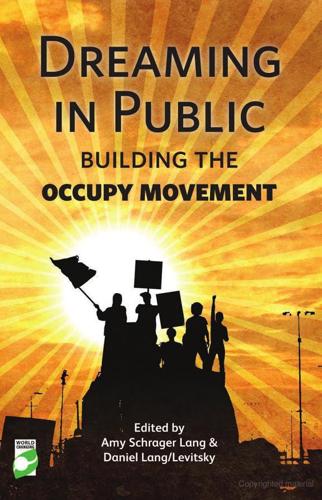
Dreaming in Public: Building the Occupy Movement
by
Amy Lang
and
Daniel Lang/levitsky
Published 11 Jun 2012
Constantly reinventing ourselves as a hybrid of identities, we will look how we feel, say what we wish, fuck who we want, act as we should(n’t), vogue like a queen, and walk like an Egyptian. The first action of the un-government of Mortville shall be to impose economic sanctions upon the tyrannical regime of the status quo and its allies. Sanctions shall be lifted when the wealth is redistributed, the military industrial complex dismantled, the police disempowered, and the public sector fulfilling its obligations to the people. We demand education, housing, public transportation, dignified employment, energy that neither spoils our planet nor supports oppressive theocracies, abortions, human rights, arts programming, a secular and transparent democracy, free healthcare (including sex-change operations), and legal residency for all!
…
There was a young woman at the register, paying for a soda and chatting with the counter guy about the Occupy Wall Street protests – she worked in the neighborhood and was on her way to check them out for the first time. I didn’t catch much of what she said, but when the counter guy made a comment about Eisenhower, I listened… and tweeted: @studentactivism: Counterman at a deli 3 blocks from #OccupyWallStreet just quoted Ike’s warning on the military industrial complex. ‘And Eisenhower was a general.’ I remember the guy saying. ‘A general.’ A few minutes later I tweeted this: @studentactivism: ‘The government has become the puppet of the big corporations.’ – The same deli guy. #OccupyWallStreet And this: @studentactivism: #OccupyWallStreet. It’s not just for dirty hippies anymore.
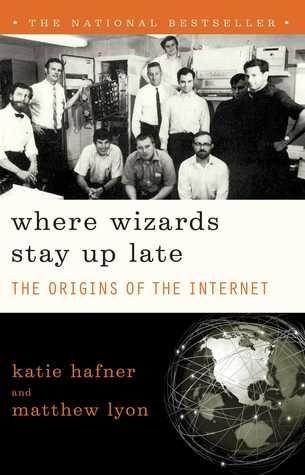
Where Wizards Stay Up Late: The Origins of the Internet
by
Katie Hafner
and
Matthew Lyon
Published 1 Jan 1996
Sputnik was proof of Russia’s ability to launch intercontinental ballistic missiles, the pessimists said, and it was just a matter of time before the Soviets would threaten the United States. The least-panicked Americans were resigned to disappointment over Russia’s lead in the race to explore space. Eisenhower hadn’t wanted a seasoned military expert heading the Pentagon; he was one himself. The president distrusted the military-industrial complex and the fiefdoms of the armed services. His attitude toward them sometimes bordered on contempt. By contrast, he loved the scientific community. He found scientists inspiring—their ideas, their culture, their values, and their value to the country—and he surrounded himself with the nation’s best scientific minds.
…
(DOD) Advanced Research Projects Agency of, see ARPA interservice rivalry for R&D contracts within Pentagon offices of Defense Reorganization Act Delaware, University of Democratic Party Denning, Peter Depression, Great desktop computers Digital Equipment Corporation (DEC) computers built by, see specific PDP computers Director of Defense Research and Engineering Distant Early Warning (DEW) DNS (domain name system) Doctor, The Domestic Android robot Douglas, James Drexel Institute of Technology drug trade Duke University Dungeons and Dragons (D&D) Durham, Ivor Duvall, Bill Earnest, Les earthquakes Eckert-Mauchly Computer Corporation Eisenhower, Dwight D. ARPA and military-industrial complex distrusted by military rivalries decried by scientific community embraced by election of 1976 electricity circuit outages of electromagnetism electromechanical tabulating equipment electronic mail (e-mail) composing and editing messages for early forms of efforts to impose uniformity and standard message headers in equal access issues and FINGER controversy and header wars in issues of free speech in mailing lists and Postal Service and privacy concerns and programs for punctuation in reforming of response time and numbers in time and date stamps in values and etiquette in volume of traffic in electronic media electronic systems components Elkind, Jerry emoticons Engelbart, Douglas engineering computer systems electrical power risk assessment and theoretical ENIAC (Electronic Numerical Integrator and Calculator) espionage operations Estrin, Jerry Ethernet Evans, Dave Evans and Sutherland Farber, Dave FCC (Federal Communications Commission) ferrite cores Feurzeig, Wally Fields, Craig file-transfer protocol (FTP) FINGER command flames/flaming Flint Ridge Cave floppy disks Forrester, Jay FORTRAN Fox, Mark France Frank, Howard free speech freight movers Frick, Fred Frodo FTP (file-transfer protocol) games, computer Gates, Bill General Electric Geological Survey, U.S.
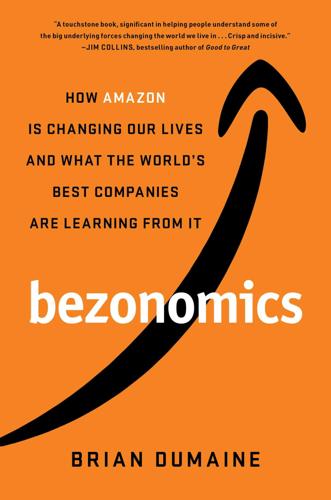
Bezonomics: How Amazon Is Changing Our Lives and What the World's Best Companies Are Learning From It
by
Brian Dumaine
Published 11 May 2020
Bezos didn’t respond publicly to the letter, but at a conference on the same day the letter was released, he made it clear where his priorities lay when it came to selling technology to the government: “If big tech companies are going to turn their back on the U.S. Department of Defense, this country is going to be in trouble.” Bezos’s positive attitude toward the military industrial complex stood in stark contrast to Google, which announced in late 2018 that it wouldn’t sell general-purpose facial recognition software to governments before working through important technology and policy questions. There’s nothing wrong in helping one’s country, but the field of facial recognition is so new and so fraught with privacy issues, that it would behoove Amazon to follow Google here and make sure that proper safeguards are in place before letting loose this technology.
…
She had served as the CEO of MTV Networks Entertainment Group, which oversaw Comedy Central and Nickelodeon. Another example: a crucial part of AWS’s business is providing cloud services to the U.S. government, including the Pentagon and the CIA. It doesn’t hurt, therefore, that Jamie Gorelick sits on Amazon’s board. She is a member in good standing of the military industrial complex, having served as deputy attorney general of the United States and general counsel of the Department of Defense. The linkage between corporate priorities and board member backgrounds doesn’t stop there. Amazon, a major consumer electronics manufacturer, builds Kindles, Fire TVs, and Alexa-driven Echos.
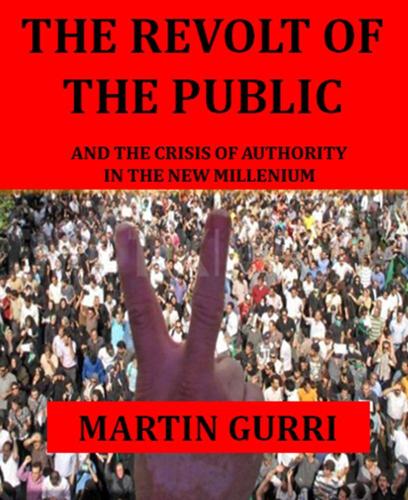
The Revolt of the Public and the Crisis of Authority in the New Millennium
by
Martin Gurri
Published 13 Nov 2018
…controlling financial speculation, particularly high frequency trading; auditing the Federal Reserve; addressing the housing crisis; regulating overdraft fees; controlling currency manipulation; opposing the outsourcing of jobs; defending collective bargaining and union rights; reducing income inequality; reforming tax law; reforming political campaign finance; reversing the Supreme Court’s decision allowing unlimited campaign contributions from corporations; banning bailouts of companies; controlling the military-industrial complex; improving the care of veterans; limiting terms for elected politicians; defending freedom on the Internet; assuring privacy on the Internet and in the media; combating economic exploitation; reforming the prison system; reforming health care; combating racism, sexism, and xenophobia; improving student loans; opposing the Keystone pipeline and other environmentally predatory projects; enacting policies against global warming; fining and controlling BP and similar oil spillers; enforcing animal rights; supporting alternative energy sources; critiquing personal leadership and vertical authority, beginning with a new democratic culture in the camps; and watching out for cooptation in the political system…[72] The action words used for these improvements of the status quo connoted negation and elimination: “reform,” “control,” “reverse,” “limit,” “combat,” “fine,” “critique.”
…
Ormerod’s endless list of parliamentary claims of competence can find a mirror image in the equally endless expectations of government culled by Manuel Castells from Occupier statements: …controlling financial speculation, particularly high frequency trading; auditing the Federal Reserve; addressing the housing crisis; regulating overdraft fees; controlling currency manipulation; opposing the outsourcing of jobs; defending collective bargaining and union rights; reducing income inequality; reforming tax law; reforming political campaign finance; reversing the Supreme Court’s decision allowing unlimited campaign contributions from corporations; banning bailouts of companies; controlling the military-industrial complex; improving the care of veterans; limiting terms for elected politicians; defending freedom on the Internet…[185] The public has judged government on government’s own terms, but added bad intentions. My analysis of this complex set of relations arrives at a different place: high modernist claims exceeded government’s capacity for effective action.

Nuclear War and Environmental Catastrophe
by
Noam Chomsky
and
Laray Polk
Published 29 Apr 2013
During World War II, he was the chief administrator of the Manhattan Project and served as director of the OSRD, a department he helped initiate during the Roosevelt administration. Bush is credited with codifying the relationship between federally funded science, industry, and the military (i.e., the military-industrial complex). For the blueprint, see Science, The Endless Frontier: A Report to the President by Vannevar Bush (Washington, DC: Government Printing Office, 1945). For biographical insight, see Richard Rhodes, The Making of the Atomic Bomb (New York: Simon & Schuster, 1988), 336. On Raytheon and ISN, see note 11, chap. 2. 70 India amended its patent law to comply with the WTO Agreement on TRIPS in 2005, though legal battles over medicine patents continue into the present, most notably with Novartis, a Swiss pharmaceutical company with subsidiaries in India.

The Cold War: A New History
by
John Lewis Gaddis
Published 1 Jan 2005
These opportunities did not become fully apparent, however, until the early 1980s, for it was only then that the material forms of power upon which the United States, the Soviet Union, and their allies had lavished so much attention for so long—the nuclear weapons and missiles, the conventional military forces, the intelligence establishments, the military-industrial complexes, the propaganda machines—began to lose their potency. Real power rested, during the final decade of the Cold War, with leaders like John Paul II, whose mastery of intangibles—of such qualities as courage, eloquence, imagination, determination, and faith—allowed them to expose disparities between what people believed and the systems under which the Cold War had obliged them to live.
…
That too was a break from the determinisms of empires, imposed ideologies, and the arbitrary use of force to sustain authoritarian rule. There was, to be sure, a great deal to regret about the Cold War: the running of risks with everyone’s future; the resources expended for useless armaments; the environmental and health consequences of massive military-industrial complexes; the repression that blighted the lives of entire generations; the loss of life that all too often accompanied it. No tyrant anywhere had ever executed a fifth of his own people, and yet the Khmer Rouge leader Pol Pot did precisely this in the aftermath of the Vietnam War. The future will surely remember that atrocity when it has forgotten much else about the Cold War, and yet hardly anyone outside of Cambodia noticed at the time.
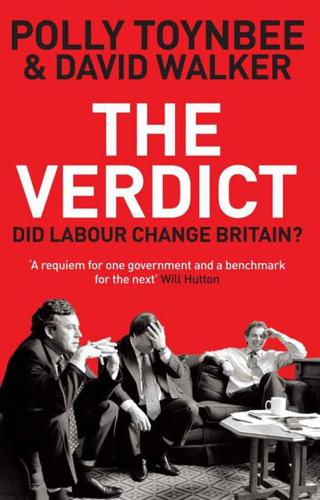
The Verdict: Did Labour Change Britain?
by
Polly Toynbee
and
David Walker
Published 6 Oct 2011
In October 2000 Cook stood helpless on a dusty road, Yasser Arafat at his side, as Israeli shells fell in Gaza. Blair, now the representative of the quartet powers, was as impotent when in January 2009 Israeli shells fell in Gaza, responding to Hamas rockets. Cook quickly came a cropper over trade in weapons, a British export staple. The UK’s military–industrial complex employed 415,000, stretched across plenty of Labour-held seats. At the end of 1996, the UK had been the world’s second biggest arms exporter, with 22 per cent of the global export market. The global arms market increased by 50 per cent in value between 2000 and 2008. The UK sold $53 billion worth of arms in the five years to 2008, contending with the $63 billion sold by the US.
…
Trident was an instrument of diplomacy rather than warfare, as Brown showed when he offered to cut the number of warheads to ease a global disarmament deal. If opponents of Trident were dumb about what international profile a non-nuclear Britain would cut, Labour were equally inaudible over the reasons for renewal. Labour never publicly justified defence spending because such spending maintained a military–industrial complex providing jobs and stimulating research; yet it obviously did. And ministers touted for defence business. Jobs and research were reasons why, instead of buying off the (American) shelf, the UK developed its own reconnaissance aircraft, the Nimrod. Not that buying American was necessarily cheaper, as the soaring cost of the proposed joint strike fighters intended to fly off the Scottish-built aircraft-carriers showed.

How Not to Network a Nation: The Uneasy History of the Soviet Internet (Information Policy)
by
Benjamin Peters
Published 2 Jun 2016
Both official state and CIA statistics on Soviet military spending are controversial, although if a critic of both can believed, the Russian American economist Igor Birman estimated that by 1975 the CIA estimates of the size of the Soviet economy were two or three times larger than reality and that instead of spending roughly 6 percent of its GDP on military expenditures, the Soviet state devoted closer to 30 percent of its GDP on the military. The military-industrial complex enjoyed massive funding streams and the brightest and best intellectual and technological resources, and although the jury is still out on the exact nature of the Soviet military (most of its details remain closed to this day), the military sectors also attracted the best and the brightest because those sectors were best managed.
…
Baran’s network innovations do not arrive without serious institutional and international complication. Although technically on target, Baran’s ideas were not influential until after a foreigner—an Englishman named Donald Davies, with the UK Post backing him—independently discovered and articulated packet switching. Only then did Baran’s superiors in the U.S. military-industrial complex start paying attention to his ideas. In fact, between 1960 and 1966, AT&T repeatedly declined or delayed his proposals to develop digital communication networks. As one AT&T official told him, the near nationwide monopoly on analog telephony networks was not about to go into competition with itself.

Don't Be Evil: How Big Tech Betrayed Its Founding Principles--And All of US
by
Rana Foroohar
Published 5 Nov 2019
A 2018 Pentagon report to the White House found that the past four decades of manufacturing outsourcing, combined with China’s industrial policies and the degradation of STEM and trade skills in the United States, has left America’s supply chains—along with its companies, consumers, and citizens—in a vulnerable position.5 According to Defense Department research,6 the fragilities are myriad: consumer product security; sagging U.S. innovation in key areas like artificial intelligence; 5G wireless technology; and the fact that China is the sole source for a variety of manufacturing inputs, including many that directly touch the military and defense industries. Most interesting were the industries covered in the report, which included not just the military-industrial complex, but the broader manufacturing supply chain: electronics, machine tools, software, and so on. While America was once the dominating force in the high-tech sector, over the past few decades of globalization and outsourcing, the landscape has shifted. China is now the world’s major supplier of telecommunications equipment.
…
It’s hard to imagine a U.S. defense contractor like, say, Raytheon, ever having been allowed to have the same sort of arrangement with both the United States and China. And yet, Big Tech companies that do the most cutting-edge research in areas such as artificial intelligence are arguably more important to the Defense Department than the old military-industrial complex represented by Raytheon. And they still get to play both sides of the field. All of this is top of mind for the Pentagon, which has begun having ongoing conversations with many U.S. multinationals about how they do business with China. “Based on our conversations, corporations recognize that the strategic conditions are changing,” says Chewning.

The Glass Half-Empty: Debunking the Myth of Progress in the Twenty-First Century
by
Rodrigo Aguilera
Published 10 Mar 2020
Wright Mills described the US power structure as a triumvirate composed of overlapping “political, economic, and military circles” whose decisions defined national events. This sentiment was echoed by no less a figure than the US president himself, Dwight D. Eisenhower, who in his farewell address in 1961 famously called out the “military-industrial complex” as well as a bloated Federal government as threats to democracy. Eisenhower was a Republican, which also goes to show just how far to the right our tolerance of oligarchies has shifted; no post-Reagan Republican would have dared uttered such a phrase. One of the most well-known theoretical frameworks of how special interest groups corrode democracy came from economist Mancur Olson, in his 1982 classic The Rise and Decline of Nations, written at a time when the US and Britain were suffering from prolonged periods of economic stagnation and political dissatisfaction.
…
To many, it represents the unadulterated end-stage of one of the most important pillars of the Enlightenment project: the pursuit of individual freedom. And however inappropriate the attribution, that this is what liberalism would most have resembled in maturity for (real) classic liberals like John Locke, Adam Smith, and John Stuart Mill. Before socialism, military-industrial complexes, and welfare states got in the way. More often than not, it descends into a cherry-picked conception of these thinkers’ complex and nuanced ideas, such as ignoring their views on the role of the state in society or on the less-than-rational essence of human behavior. Through its single-minded pursuit of individual freedom and free markets, defended via unfalsifiable axiomatic argumentation (such as praxeology7), the libertarian ideology shows its true colors as a political project whose purpose is the erosion of the state.
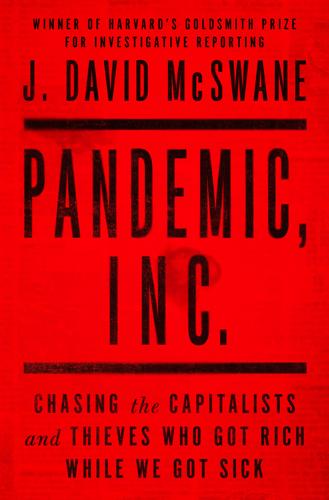
Pandemic, Inc.: Chasing the Capitalists and Thieves Who Got Rich While We Got Sick
by
J. David McSwane
Published 11 Apr 2022
To his right, Trump looked on with pursed lips in that gravity-defying, forward-leaning stance of his. “There are many vendors, many distributors, all on separate systems,” Polowczyk continued. “Nobody has one-sight picture for that supply chain.” Polowczyk, who had grown up on submarines and spent his career in the dark recesses of the military-industrial complex, far from the news media’s gaze, had just become the face of the nation’s supply crisis. The next week, inside FEMA, Polowczyk noticed a few fresh-faced strangers mulling around, out of their element. Polowczyk thought they were interns, but no, they were civilians inserted into the heart of the national response, armed with only can-do attitudes, personal wealth, and a laptop.
…
Throughout the month of March and into late spring, Navarro steered hundreds of millions of dollars to companies, working around career contracting professionals with blatant disregard for the formal channels meant to weed out fraud and corruption and ensure the government gets a decent deal. Tried-and-true processes developed after the spoils of the Civil War, fine-tuned through economic downturns and the advent of the military-industrial complex, refined after disasters like Hurricane Katrina—all of it was thrown out the window. To stock up on medicines and the components needed to make them, referred to as active pharmaceutical ingredients, or API, Navarro used his position and his bluster to award a first-time government contractor a $354 million contract, with options that could have paid out as much as $812 million over a decade.
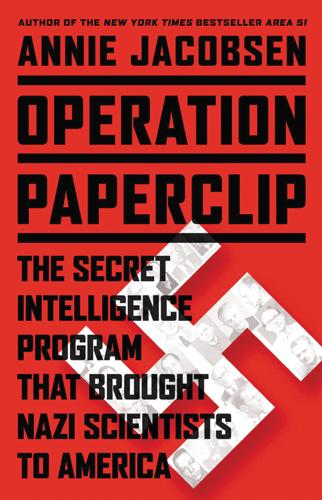
Operation Paperclip: The Secret Intelligence Program That Brought Nazi Scientists to America
by
Annie Jacobsen
Published 11 Feb 2014
It is as true today as it was when World War II ended that America relies upon the advancement of science and technology—and industry—to prepare for the next war. This relationship is understood as America’s military-industrial complex. It was President Eisenhower who, in his Farewell Address to the nation in 1961, coined this phrase. Eisenhower cautioned Americans to be wary of “the acquisition of unwarranted influence, whether sought or unsought, by the military-industrial complex.” Eisenhower’s famous warning is well known and often paraphrased. But he also delivered a second warning in his farewell speech, not nearly as well known. Eisenhower told the American people that, indeed, science and research played a crucial role in national security, “[y]et, in holding scientific research and discovery in respect, as we should, we must also be alert to the equal and opposite danger that public policy could itself become the captive of a scientific-technological elite.”
…
During World War II, U.S. soldiers received smallpox vaccines. The man diagnosing the bioweapons threat, George Merck, was also the man whose company might sell the government the solution to combat the threat. In 1946 this was not looked upon with the same kind of scrutiny as it might have been decades later, because America’s military-industrial complex had yet to be broadly revealed. The Merck Report did not specify what kind of germ warfare had been researched and developed by the United States, only that it took place at a Top Secret facility “in Maryland.” Camp Detrick was a 154-acre land parcel surrounded by cow fields about an hour’s drive north of Washington, and under the jurisdiction of the former Chemical Warfare Service, then the Chemical Corps.
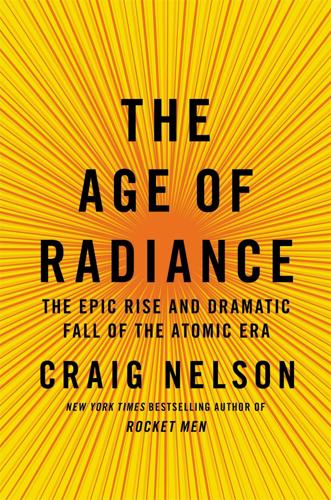
The Age of Radiance: The Epic Rise and Dramatic Fall of the Atomic Era
by
Craig Nelson
Published 25 Mar 2014
Though the United States “came out of World War II the most powerful nation on earth—perhaps, briefly, the paramount nation of all time,” as Richard Barnet, founder of the Institute for Policy Studies, remarked in 1985, “it has not won a decisive military victory since 1945 despite the trillions spent on the military and the frequent engagement of its military forces. What the United States got instead of victory was a national-security state with a permanent war economy maintained by a military-industrial complex—much like the Soviet Union in those departments, but with a far greater reserve of resources to squander. . . . It is one of history’s great ironies that, at the very moment when the United States has a monopoly on nuclear weapons, possessed most of the world’s gold, produced half the world’s goods on its own territory, and laid down the rules for allies and adversaries alike, it was afraid.”
…
Attending Pentagon advisory boards and AEC committees, or making appearances before Congress and writing memos to the White House, Fermi, Szilard, Teller, and von Neumann had all achieved a remarkable version of the American dream. Men long famous for being solitary eccentrics now learned to mount political campaigns, and the intersection of science, business, and government pioneered by Marie Curie reached a new pinnacle under the rise of Eisenhower’s noted military-industrial complex and Lawrence’s big science. A few years before, the AEC had awarded Lawrence $7 million to turn a defunct naval air station into a neutron factory—its swimming pool would be a coolant tank—to generate fuel for the Super. On September 2, 1952, the civilian agency then gave in to the Pentagon’s threats, and Lawrence’s Livermore was transformed into a second federal nuclear weapons lab.
…
G., 233 DuBridge, Lee, 247 Dulles, John Foster, 283 Dunning, John R., 104–05, 133 DuPont, Robert, 369–70 DuPont and Company, 131, 149, 164, 282 Dyson, Freeman, 225, 231, 262, 265, 267, 305 earthquakes, in Japan, 5, 7, 342–45, 352–53 Ebermayer, Erich, 93 Edison, Thomas, 13 Edmundson, James, 245 Eifler, Carl, 185 Einstein, Albert, 5, 34, 46, 244, 341 on atomic bomb use, 220–21 on Bohr, 94 Brownian motion explanation of, 34 childhood interest in science of, 84–85 Emergency Committee of Concerned Scientists of, 190 emigration to the United States by, 68, 80, 115 Fermi on, 66 German denunciations of, 67–68, 92, 176 on Haber, 373 as hero in popular culture, 369 on Langevin, 44 letters between Roosevelt and, 116–18, 119, 153, 176, 220, 369 Los Alamos consultations by, 153 Manhattan Project and, 83, 122 on Marie Curie, 43, 48 on Meitner, 75, 89 need for atomic bomb research advocated by, 114–15 nuclear energy and, 112, 369 nuclear warfare and 299 Oppenheimer and, 261 Planck’s research and, 87–88 on scientists and war efforts, 89 Szilard and, 77, 78, 127, 163 theory of general relativity of, 67 unified field theory of, 83 US military research and, 122 Eisenhower, Dwight D., 340, 370 arms control (Open Skies) plan of, 284, 287 arms race and, 277, 282, 286, 304 Atomic Energy Commission and, 260, 267 Atoms for Peace and, 304, 305, 331, 363 ballistic missile tracking and, 330 concern about nuclear arms use and, 255, 370 defense policy of, 283 first US nuclear power plant and, 304 military-industrial complex of, 252 missile defense shield concept and, 330 nuclear merchant ship commissioned by, 304–05 Oppenheimer and, 259–60 presidency of, 246, 252, 283 Rosenbergs’ execution and, 242 Soviet threat and, 245, 255, 256, 259 test-ban agreement and, 267 use of atomic bomb in Japan and, 208, 222 Eltenton, George¸ 261 Elugelab atoll, Mike thermonuclear tests on, 250, 251, 252–53 Emergency Committee of Concerned Scientists, 190 ENIAC computer, 248, 249 Eniwetok Island, Mike thermonuclear tests on, 250, 251, 252–53 Environmental Protection Agency (EPA), 128, 308, 310, 363 Esau, Abraham, 105 Ester, Julius, 26 Falk, Jim, 369 fallout shelters, 286, 376 Fate of the Earth, The (Schell), 299, 328 Fat Man bomb, 154, 197–98, 211, 216, 217, 230, 237, 371 FBI Bohr and, 174–75 Einstein and, 122 Fermi and, 123 Manhattan Project and, 149, 155, 171 Oppenheimer and, 155, 170, 257, 258, 260, 261, 262 spying detected by, 238–39, 240, 241, 242, 363 Szilard and, 149 Feather, Norman, 146 Fermi, Enrico, 54, 55–72, 157, 369, 379 atomic bomb design and, 168, 170, 266–67 atomic bomb testing and, 201–02, 206, 207, 229, 266–67 childhood of, 56–57 death of, 265–66, 269 decision to emigrate to the United States by, 64–65, 67, 68–72 education of, 57–58 element discovered by, 84 family life of, 123 German nuclear program and, 185 Hahn’s research on nucleus and, 103–04 Hanford reactor and, 164–65 irradiation research of, 90 legacy of, 55–56, 266, 369 Los Alamos and, 158–59, 160, 225, 228, 247 Manhattan Project and, 148, 154, 155 marriage of, 66–67, 123, 159 need for atomic bomb research advocated by, 114, 119 Nobel Prize to, 69–70, 71, 83, 97, 110, 128 nuclear fission experiment at Columbia and, 104, 105, 133 nuclear reactor design by, 129–39, 149, 160, 163, 172, 185, 233 Oak Ridge reactor and, 163 on Oppenheimer, 261 personality of, 165, 193, 225–26 political campaigns and power of, 251 postwar research at Chicago by, 225 research approach of, 123–25 research secrecy and, 112–13, 254 on scientific advances, 379 subatomic particle research of, 226 Szilard and, 229 Teller and, 147, 157, 158, 227, 228, 229, 247, 253, 265, 330 thermonuclear fusion research and, 228, 235, 247, 254 US military research and, 122–23 University of Rome research on uranium of, 58–64, 91, 266 uranium fission research of, 109–13, 124–25, 129, 266 wartime status as enemy alien, 128–29 Wigner on, 109 Fermi, Giulio, 55, 69, 71–72, 128, 226 Fermi, Laura, 55, 63–64, 65, 66–67, 69, 70, 71–72, 83, 115–16, 123–24, 126, 128, 129, 159, 170, 176, 225–26, 265, 266 Fermi, Nella, 55, 65, 70, 71–72, 123, 128, 226–27, 266, 269 Fermilab, 266 Fermi paradox, 76, 337 fermium, 253, 266 Forsmark nuclear power plant, Sweden, 312 Ferraby, Tom¸ 212 Feynman, Richard (Dick), 151, 152, 164, 166, 202, 205, 247 films, radiation theme in, 274–75, 310–11, 367 First Lightning weapons test, 233–34, 235, 238, 239, 373 Fischer, Emil, 86, 88 fishermen thermonuclear testing affecting, 273, 340 tsunami affecting, 344–45 Fitch, Val, 196, 203 Flerov, Georgi, 171–72, 193–94 Flexible Response strategy, 283, 287, 372 Fokker, Adriaan, 94, 95 Fonda, Jane, 310 France, 351, 364 Franck, James, 89, 91, 93, 207, 225 Frank, Barney, 334–35 Frayn, Michael, 181 French Academy of Sciences (Académie des Sciences), 14, 27, 34, 37, 188, 325 Frisch, David, 150 Frisch, Otto Robert, 91, 121 atomic trigger device designed by, 166–67 background of, 91 Meitner’s relationship with, 97, 189, 190 move to England by, 120 move to Los Alamos by, 152–53 nuclear fission research of Meitner and, 99–102, 103, 105, 144 thermal diffusion and, 162–63 Frisén, Jonas, 378 Fromm, Friedrich, 183 Fuchs, Elizabeth, 170–71 Fuchs, Klaus background of, 170–71 Los Alamos research by, 152, 169–70, 227, 240 spying by, 170, 171, 172, 173, 194, 237, 238, 239, 240, 251, 259 Fukushima Daiichi power plant disaster, Japan, 5, 340–60 deaths from, 360 earthquake causing, 342–45 evacuations after, 346, 349–50, 356 evidence of ancient tsunami near, 342 government regulators and, 352–53, 354 health effects of, 350, 358 heat generation from fission fragments in, 343–44, 345–46, 356 information withheld in, 350–51, 354–55 location of, 341–42 plant damage after, 347–49, 351–52, 356, 359–60 political effects of, 357, 359 private industry’s relationship with government regulators in, 353 radiation released in, 336, 355, 357, 358 rehabilitation of area and resettlement after, 358–59 steam venting in, 346–47, 349 TEPCO’s responsibilities after, 351–52 tsunami damage in, 344–45, 352–53 US consultants on, 349, 351, 355, 356 workers at, 346–48, 349, 352, 353–55, 356–57 Fuller, Loie, 33–34 Gabor, Dennis, 75, 79 Gale, Robert, 319, 349 Gamow, George, 94, 99, 248, 282 Gard, Robert, 334 Gardner, Meredith, 238, 242 Garson, Greer, 51 Garwin, Richard, 225, 247–48, 251 Geiger, Hans, 74, 87, 89, 113 Geitel, Hans Friedrich, 26 genetic abnormalities, and radiation, 326 Giannini, Gabriel Maria, 59–60 Gibertson Company, 375 Giesel, Friedrich, 31, 35, 188 Girshfield, Viktor, 290 Glicksman, Maurice, 265 Gold, Harry, 170, 172–73, 240–41, 242, 251 Goldstine, Herman, 248 Goncharov, German, 255, 275 Goodyear Tire & Rubber Company, 132, 282 Gopnik, Adam, 337 Gorbachev, Mikhail Chernobyl accident and, 318, 359, 361 International Thermonuclear Experimental Reactor (ITER) and, 364 on nuclear weapons, 328 proposed nuclear arms reduction treaty and, 329–30, 332–33 Reagan’s Strategic Defense Initiative and, 331, 332 START treaty and, 333 Göring, Hermann, 183 Goudsmit, Samuel, 186–87 Gore, Albert Sr., 293, 294 Great War (World War I), 32–33, 36, 74, 89, 91, 193, 372 Greenglass, David, 171, 172, 173, 194, 237, 240–41, 251 Greenglass, Ruth, 171, 173, 241 Greenglass, Samuel, 171 Greenewalt, Crawford, 134, 138, 164 Greisen, Kenneth, 204 Groves, Leslie Allied bombing targets recommended by, 186 atomic bomb and, 197, 198, 199, 206, 207, 202, 229 Bohr surveillance ordered by, 174–75 bombing of Japan as signal to Russia and, 222 bombing of Vemork plant, Norway, and, 178 intelligence missions of, 185–86 Los Alamos and, 151, 157, 169, 225, 228 Manhattan Project management by, 147–50, 156, 165, 175, 197–98, 199 Oak Ridge National Laboratory and, 161, 162–63 Oppenheimer and, 262 postwar atomic arms research and, 229, 230 Russian scientists and, 194 silver supply and, 161 Soviet threat and, 227 Szilard and, 127, 150, 207, 208 uranium source and, 154 Grubbe, Emil, 13 Haber, Fritz, 75, 89, 92, 372–73 Hahn, David, 362–63 Hahn, Edith, 93 Hahn, Otto Allied capture and internment of, 186–87, 188–89, 190 atomic bomb research and, 113, 121, 183, 187 awards and recognition of, 190 Hitler’s Jewish laws and, 92, 93 on Meitner, 86, 96, 98, 191 Meitner’s research with, 64, 84, 85–87, 88–90, 98, 99, 100, 102, 103, 121, 189, 190 Meitner’s treatment by, 92, 93, 96–97, 102–03, 189, 190–91 Nobel Prize to, 188–89, 190 as scientist in Nazi Germany, 190–91 Hall, Joan, 242 Hall, Theodore, 171, 194, 237, 242 Hanford, Washington, reactor complex, 159, 160, 164–65, 166, 168, 175, 188, 225, 282 Harding, Warren G., 50 Harris, Michael, 253, 272 Harrison, Richard Stewart, 144 Haukelid, Knut, 178 Havenaar, Johan, 323, 324 Hawkins, David, 192 Hawks, H.
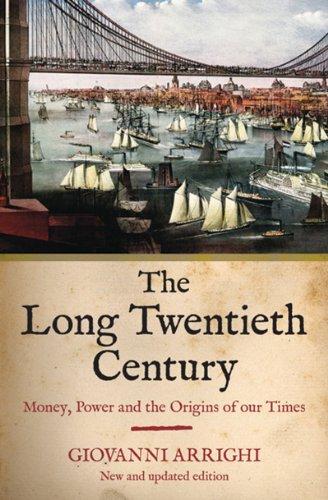
The Long Twentieth Century: Money, Power, and the Origins of Our Times
by
Giovanni Arrighi
Published 15 Mar 2010
Its history and geographical position made it a tributary to rather than a beneficiary of these flows of labor, capital, and entrepreneurship, even though Prussia/Germany’s long involvement in the front line of the European power struggle gave its rulers a comparative advantage vi:-4‘-2/is all other European states — the United Kingdom included — in the creation of a powerful military—industrial complex. From the 1840s onwards, military and industrial innovations began to interact more and more closely within the geographical area that was in the process of becoming Germany. It was precisely this interaction that sustained both the spectacular industrialization and the ascent to world power status experienced by Germany in the second half of the nineteenth century (cf.
…
This enabled the British capitalist class to do what the Dutch had already been able to do — turn to its own advantage interstate competition for mobile capital and “produce” all the protection required by the self-expansion of its capital, but without having to rely on foreign and often hostile territorialist organizations for 224 THE LONG TWENTIETH CENTURY most of the agro-industrial production on which the profitability of its commercial activities rested. Finally, at the time of the rise and full expansion of the US regime of accumulation, the United States was already something more than a fully developed nation-state. It was a continental military-industrial complex with sufficient power to provide a wide range of subordinate and allied governments with effective protection and to make credible threats of economic strangulation or military annihilation towards unfriendly governments anywhere in the world. Combined with the size, insularity, and natural wealth of its own territory, this power enabled the US capitalist class to “internalize” not just protection and production costs, as the British capitalist class had already done, but transaction costs as well, that is to say, the markets on which the self-expansion of its capital depended.
…
Like the Dutch, the British capitalist class did not need to rely on foreign powers for protection; but it also did not need to rely on others for most of the agro-industrial production on which the profitability of its commercial activities rested. If the Dutch regime relative to the Genoese had internalized protection costs, the British regime relative to the Dutch had internalized production costs as well (see pp. 48-59; 179-218, 223-4). Finally, the United States was a continental military-industrial complex with the power to provide effective protection for itself and its allies and to make credible threats of economic strangulation or military annihilation towards its enemies. This power, combined with the size, insularity, and natural wealth of the United States, enabled its capitalist class to internalize not just protection and production costs — as the British capitalist class had already done — but transaction costs as well, that is to say, the markets on which the self-expansion of its capital depended (see pp. 59-75, 224 and chapter 4).
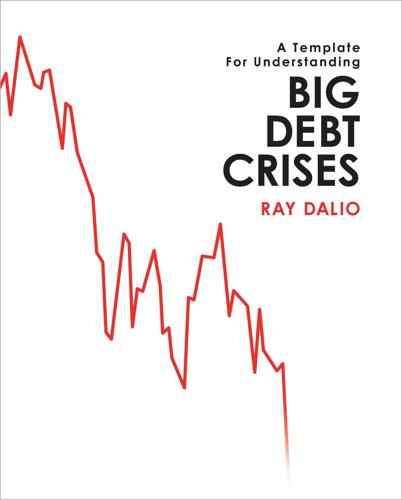
Big Debt Crises
by
Ray Dalio
Published 9 Sep 2018
He believed that Germany’s potential was limited by its geographic boundaries, that it didn’t have adequate raw materials to feed the industrial military complex, and that German people should be ethnically united. At the same time, Japan became increasingly strong with its top-down command economy, building a military industrial complex, with the military intended to protect its bases in East Asia and Northern China and to expand its controls over other territories. Germany also got stronger by building its military industrial complex and looking to expand and claim adjacent lands. In 1934, there was severe famine in parts of Japan, causing even more political turbulence and reinforcing the right-wing, militaristic and nationalistic movement.
…
While it didn’t have a plan to win the war, it wanted to destroy the Pacific Fleet that threatened Japan. Japan supposedly also believed that the US was weakened by both fighting a war in two fronts (Europe and the US) and by its political system; Japan thought that totalitarianism and the command military industrial complex approaches of their country and Germany were superior to the individualistic/capitalist approach of the United States. These events led to the “war economy” conditions explained at the end of Part 1. News & Federal Reserve Bulletin January 31, 1925 Radio Corporation Gain is 100 Per Cent “The Radio Corporation of America’s earnings report for 1924, made public yesterday, shows gross income from operations of $54,848,131.

Atomic Accidents: A History of Nuclear Meltdowns and Disasters: From the Ozark Mountains to Fukushima
by
James Mahaffey
Published 15 Feb 2015
Truman, seeing this knowledge as proprietary property of the United States government, had denied access to our most trusted allies. Even the British and the Canadians, who had participated in the development work, were allowed no access. Eisenhower wished to give all the world enough knowledge to pursue civilian-owned nuclear power. He railed at the “military-industrial complex,” warning of its desire to make profits from developing new, more advanced weaponry. Simultaneously, this tranquil administration oversaw the rapid development of the hydrogen bomb, a weapon 1,000 times more powerful than those used to wipe out entire cities in Japan with single drops, and the exotic hardware to deliver it.
…
Citizens were subjected to drugs, hypnosis, sensory deprivation, torture, and abusive language. Today, they would not let us do any of this to a goat. (Don’t ask me how I know.) Records of this project were declassified in 2001. 59 Or, at least you would think that a rational military-industrial complex would have ruled it impractical. The Sandia Committee in New Mexico proposed the design of a weaponized Ivy Mike device designated TX-16/EC-16, to be carried aloft in a B-36 “Peacemaker” 10-engine strategic bomber. The “EC” in the designation referred to “emergency capability” version, meaning that it was to be used only in the dire situation of an enemy attack, which was anticipated to occur at any time.
…
Expanding on this theme, entrepreneurs in Cumbria proceeded to invent the lead pencil, and from this wonderful application the mineral acquired its official name from the Greek word grapho, meaning to write or draw. As happens to many such discoveries, a military use was soon found and the English government clamped down on the source. It had been determined that lining the molds for making cast-iron cannonballs with graphite resulted in smooth, well-thrown projectiles, and the military-industrial complex of 16th century England was well pleased. Afterward, the manufacturing enterprise found myriad uses for the fine, pure English graphite from Cumbria, from arc-light electrodes to the throw-out bearings for MGB sports cars. British industry thus had a long and complete history of working with graphite.

Why the Allies Won
by
Richard Overy
Published 29 Feb 2012
‘There is one way, and one way only’, the British economist Sir William Layton told an audience of American industrialists in October 1940, ‘in which the three to one ratio of Germany’s steel output can be overwhelmed and that is by the 50 to 60 million ingot tons of the United States.’29 In 1941 America produced more steel, aluminium, oil and motor vehicles than all the other major states together. The problem was how to turn this abundance from the purposes of peace to those of war. The United States had no tradition of military industry. Intervention in the First World War came too late to build up war production of any real size. The ‘military-industrial’ complex was the product of a later age. By the 1930s twenty years of disarmament and detachment left the world’s richest economy with an army ranked eighteenth in size in the world, and an air force of 1,700 largely obsolescent aircraft and a mere twenty thousand men.30 In 1940 military expenditure made up just 2 per cent of America’s national product.
…
Across Germany sprang up the world’s largest aluminium industry; a new iron and steel complex, planned on a scale to eclipse Magnitogorsk, was built from scratch on the large ore-fields of Brunswick in central Germany; the chemical industry began to construct whole new plants for the synthetic production of oil and rubber, resources vital for mechanised warfare, but controlled on world markets in their natural form by Germany’s potential adversaries. By 1939 Germany possessed the kind of military-industrial complex that would characterise the two incipient super-powers, the United States and the Soviet Union, after 1945. Its productive potential was enormous, though reliant on the supply of raw materials and oil from outside German borders. To compensate Germany drew into its orbit the resources of central and eastern Europe, partly by conquest and occupation, as in the case of Austria, Czechoslovakia and Poland, partly through aggressive trade treaties that gave Germany privileged access to raw maerials, as in the case of Hungary, Yugoslavia and Romania (and between 1939 and 1941, the Soviet Union).
…
Neither foundation nor superstructure was complete; despite the growth of state planning and control, the transformation of the German economy into the instrument of super-power status was slower than expected. If war had not started until the mid-1940s Germany might well have proved unstoppable. In 1939 the whole military-industrial complex was still in the throes of expensive and lengthy construction. When war broke out the economy was conscripted at once. Strict rationing was imposed on the population. Inessential businesses were closed down; those that could be converted to war purposes were ordered to do so. A world of shortages, queuing, ration coupons and a dreary, monotonous diet was imposed overnight.

Four Futures: Life After Capitalism
by
Peter Frase
Published 10 Mar 2015
Thompson wrote an essay reflecting on the Cold War and the ever-present threat of nuclear annihilation, called “Notes on Exterminism, the Last Stage of Civilization.”2 In it, he contemplated the increasing turn of both the capitalist and communist economies toward the technologies of militarism and war. It was, he thought, inadequate to understand the arms race and the military buildup as merely tools to defend the larger political economies of the contending sides, be that the planned economy of the USSR or the capitalist market of the United States. The military-industrial complex was taking up a larger and larger part of the economy in the rich capitalist countries, and the Soviets were likewise increasingly preoccupied with building up arms. Thompson proposed that we needed a new category to understand this social formation. He quotes Marx’s famous line from The Poverty of Philosophy: “the hand-mill gives you society with the feudal lord; the steam-mill, society with the industrial capitalist.”3 That is, as the central economic relations of a society change, all the social relations in that society tend to change with them.

The Death of Truth: Notes on Falsehood in the Age of Trump
by
Michiko Kakutani
Published 17 Jul 2018
Today, such ideals of reason and progress are assailed on the right as part of a liberal plot to undercut traditional values or suspicious signs of egghead, eastern-corridor elitism. For that matter, paranoia about the government has increasingly migrated from the Left—which blamed the military-industrial complex for Vietnam—to the Right, with alt-right trolls and Republican members of Congress now blaming the so-called deep state for plotting against the president. The Trump campaign depicted itself as an insurgent, revolutionary force, battling on behalf of its marginalized constituency and disingenuously using language which strangely echoed that used by radicals in the 1960s.
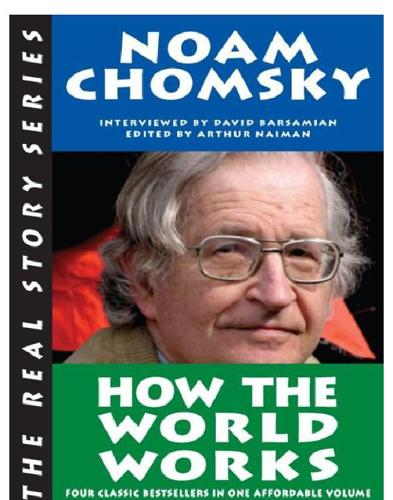
How the World Works
by
Noam Chomsky
,
Arthur Naiman
and
David Barsamian
Published 13 Sep 2011
In describing why Boeing was chosen over McDonnell Douglas, the Pentagon’s undersecretary for acquisition and technology said, “We need to get hooks into the commercial research base to influence its growth.” Defense Secretary William Perry explained that we’ve got to overcome earlier “barriers which limited timely access to rapidly evolving commercial technology.” “The Pentagon is ushering out the military-industrial complex and ushering in an industrial-military complex,” NY Times reporter Adam Bryant added, “noting that it’s “not just an idle reordering of adjectives” but reflects Pentagon efforts “to do more business with companies that have a diverse customer base.” An aerospace industry analyst at Merrill Lynch pointed out that “this effort to broaden the industrial base that supports the military has been going on for a couple of years, but the Pentagon’s decision [about the new Joint Strike fighter] was a major milestone in this trend.”
…
McDonnell Douglas McGovern, Jim Medellin (Colombia) bishops’ conference media access to advertisers as market of allowing dissent in alternative or independent in Argentina audiences as product of better (but still bad) in Brazil in Chile commercial-free community access TV controlling influences on critical and skeptical reading of in a democratic society destruction of independent Salvadoran newspapers ignored by distortion in East Timor and on elections in Panama and Nicaragua independent, in Argentina independent, in Brazil in India labor coverage by on La Prensa and La Epoca liberal boundaries set by liberalness of murdered American churchwomen downplayed by Nicaragua ignored by ownership and content of on Panama, following Washington’s lead Pentagon control of private vs. public control of as propaganda system public broadcasting public-interest programming Romero’s assassination ignored by social purpose of sources of power misrepresented by television’s effect on society tobacco exports and war on drugs and Medicis Meese, Edwin Menchu, Rigoberta Mennonites Merck Pharmaceutical Merrill, Dennis Merrill Lynch Mesoamerica Mexican Bishop’s Conference Mexico bailout Chiapas uprising economic “miracles” in European genocide in “experiments” in factories moved to financial collapse of Mayan Indians in NAFTA effects on opposition to NAFTA in pushed back to Third World status tomato exports “trade” with Zapatistas Middle East. See also Israel; Third World; specific countries The Nation and Chomsky’s views on oil reserves “peace process,” PLO threat used to justify US policies US intervention in military. See Pentagon; Pentagon system; weapons manufacturers military coups. See coups military-industrial complex Million Man March Mill, James Mill, John Stuart “miracles.” See economic “miracles” Miskito Indians MIT (Massachusetts Institute of Technology) Mobutu, Joseph Mokhiber, Russell Mondale, Walter Mondragon money laundering Monroe Doctrine Montgomery, David Moorehouse, Ward Moore, Michael moratorium, debt Morgan (Mohammed Hersi) Moynihan, Daniel multinational corporations.
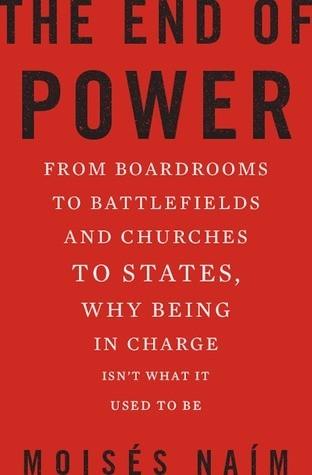
The End of Power: From Boardrooms to Battlefields and Churches to States, Why Being in Charge Isn’t What It Used to Be
by
Moises Naim
Published 5 Mar 2013
Yes, Mills argued, American political life was democratic and pluralistic; yet despite this, the concentration of political and economic power put the elite in a stronger position than ever before to retain its supremacy.27 These ideas made Mills a social critic, but his views were by no means radical for their time. President Dwight Eisenhower would make a similar point only five years later in his farewell speech to the nation, in which he warned against unchecked power and the “undue influence” of the “military-industrial complex.”28 During the 1960s, the suspicion that modern economic organizations inherently produced inequalities and a permanent elite spread further among sociologists and psychologists. In 1967, a scholar at the University of California at Santa Cruz, G. William Domhoff, published a book titled Who Rules America?
…
T., 3, 4 Meacham, Jon, 16 Media, 2, 24, 29, 51, 61, 68, 69, 85, 104, 105, 111, 118, 120, 121, 152, 159, 179, 193, 194, 196, 197, 199, 211–216, 217, 218, 239, 240 Medicine, 10, 177, 243 Mehta, Nina, 188 Mentality revolution, 11, 54, 64–70, 71, 72(fig.), 73–74, 75, 85, 110, 111, 134, 173, 187, 196, 200, 203, 217, 220, 222, 228, 236, 238 Merck company, 181 Mergers/acquisitions, 36, 46, 146, 187, 212, 213, 231 Merkel, Angela, 92 Merrill Lynch, 165 Mexico, 32, 59, 60, 110, 115, 146, 148, 155, 165, 175, 186 elections in, 252 Zetas in, 125–126, 222 Meyerson, Harold, 200 Micklethwait, John, 37 Microsoft, 174–175, 179, 180, 213 Middle class, 56, 57–58, 64, 65, 70, 84, 185, 218 Middle East, 57, 63, 66, 109, 220, 242, 249, 251, 254 Migration, 4, 10, 54, 59, 64, 138, 174, 199, 235 internal migration, 61 See also Immigrants Milan, 6 Militaries, 10, 13, 18, 29, 33, 44, 51, 54, 70, 97, 98, 100, 111, 157, 227, 228 military hypercompetition, 122–123 and money, 125–127 private military companies, 117–118 size of, 112–115, 123, 124, 128 technologically advanced, 108–109 See also Power: military power; Spending: military spending Military-industrial complex, 47 Militias, 5, 226 Miller Brewing Company, 187 Mills, C. Wright, 47 Milner, Helen, 136 Miniaturization, 173 Minilateralism, 156 Minorities, 67, 69, 78, 241 Missiles, 107, 117, 118 Mittal Steel, 7–8, 159, 187 Mobility revolution, 11, 54, 58–64, 65, 66, 71, 72(fig.), 73–74, 75, 82, 110, 134, 173, 187, 196, 200, 203, 217, 220, 222, 228, 236, 238 Moldova, 100 Mommsen, Wolfgang, 39 Mondale, Walter, 88 Monopolies, 29, 32, 101, 115, 178, 183, 221, 226 Monsanto, 193 Morais, Richard C., 211 Montenegro, 81 Moral authority, 15 Moral consensus, 138 Morales, Oscar, 100 Morals/moral code, 15, 24, 25, 27, 73 More revolution, 11, 54–58, 65, 66, 71, 72(fig.), 73–74, 75, 80–82, 85, 110, 134, 173, 187, 196, 200, 203, 217, 220, 222, 228, 236, 238 Moro Islamic Liberation Front, 113 Morozov, Evgeny, 53, 230 Moscow, 82, 85 Moyo, Dambisa, 210 MTN, 146, 186 Mubarak, Hosni, 14 Multinationals, 7, 146, 184–186, 220 Mumbai 110, 115 Mumford, Lewis, 46 Munajjed, Mona al-, 65 Munnecke, Tom, 211 Murdoch, Rupert, 7, 50, 174, 212 Murphy, Cullen, 132 Music, 18, 193, 212 Muscle 23, 25, 26, 27, 33, 72, 73 Muslims, 59, 65–66.

Chasing the Moon: The People, the Politics, and the Promise That Launched America Into the Space Age
by
Robert Stone
and
Alan Andres
Published 3 Jun 2019
He had been contemplating the content of his farewell address for nearly two years and had labored over more than twenty drafts before appearing in front of live television cameras three days before the inauguration of the thirty-fifth occupant of the executive office. Considered by many the most important speech of his presidency, Eisenhower’s televised farewell famously voiced a warning about the increasing influence of the American military-industrial complex. In it he expressed respect for scientific discovery and the ways in which technology could improve lives, but he called equal attention to the “danger that public policy could itself become the captive of a scientific-technological elite.” Eisenhower subsequently declined to elaborate in public about what specifically led him to make this speech.
…
It also added an aside that an account of Kennedy’s speech would not be transmitted as part of the daily news briefing read to the Apollo 10 astronauts on their way to the Moon. In a nation already growing increasingly polarized about the war in Vietnam, Kennedy’s words may have been intended for the ears of younger voters, many of whom viewed NASA and the space program as part of the greater military-industrial complex. Paine made it his mission to heal the rift with what he termed the “Kennedy establishment.” He hoped he could dissuade the thirty-seven-year-old senator from any further comments about budgetary allocations for space, especially with the lunar landing approaching. To that end, Paine scheduled a lunch meeting with Kennedy in Washington.

A People’s History of Computing in the United States
by
Joy Lisi Rankin
The origin stories around contemporary American digital culture— our 24 / 7 connected, networked, WiFi, smartphone, tablet, Instagram, Facebook, Tweeting, thumbs-up / thumbs-down world— center on what I call the Silicon Valley mythology. This compelling myth tells us that, once upon a time, modern computers were big (and maybe even bad) mainframes. International Business Machines, much more familiar as IBM, dominated the era when computers were the remote and room-size machines of the military-industrial complex. Then, around 1975, along came the California hobbyists who created personal computers and liberated us from the monolithic mainframes. They were young men in the greater San Francisco Bay Area, and they tinkered in their garages. They started companies: Steve Jobs and Steve Wozniak established Apple; Bill Gates and Paul Allen developed Microsoft.
…
For example, users on the New England network, based at Dartmouth College, produced and used multiplayer games and, in 1968, a program called MAILBOX for sending messages over the network.9 A People’s History of Computing in the United States focuses on the users of these time-sharing networks to develop a history of the digital age that emphasizes creativity, collaboration, and community. Time-sharing networks emerged neither from individual genius nor from the military-industrial complex; rather, they were created for—and by—students and educators at universities and public schools as civilian, civic-minded projects. At their most idealistic, the developers of t hese systems viewed access to computing as a public good available to all members of a collective body, whether that body consisted of a university, a school system, a state, or even a country.

The Road to Unfreedom: Russia, Europe, America
by
Timothy Snyder
Published 2 Apr 2018
A memorandum that circulated in the Russian presidential administration in early February 2014, apparently based on the work of Girkin, anticipated the change in the course of Russian policy. It began from the premise that “the Yanukovych regime is utterly bankrupt. Its diplomatic, financial, and propaganda support by the Russian state no longer makes any sense.” Russian interests in Ukraine were defined as the military-industrial complex of Ukraine’s southeast and “control over the gas transport system” in the entire country. Russia’s main goal should be “the disintegration of the Ukrainian state.” The proposed tactic was to discredit both Yanukovych and the opposition by violence, while invading southern Ukraine and destabilizing the Ukrainian state.
…
But both bordered the Russian Federation, and their local oligarchs hesitated at crucial moments. Russia failed to get a foothold in regions of much greater interest, such as Kharkiv, Odessa, and Dnipropetrovsk. Kharkiv and Odessa were areas that Russians regarded as centers of Russian culture, and Dnipropetrovsk was a hub of the two countries’ shared military-industrial complex. Dnipropetrovsk became a center of resistance to the Russian invasion under its new governor, Ihor Kolomois’kyi, who put a bounty on the head of Russian soldiers. Although the Russian flag was briefly raised over Kharkiv by a young Russian who liked to climb buildings and take selfies, the regional administration building was returned to Ukrainian control the same day.

Border and Rule: Global Migration, Capitalism, and the Rise of Racist Nationalism
by
Harsha Walia
Published 9 Feb 2021
Nadine Naber and Junaid Rana write, “Especially since 9/11, and under the name of the War on Terror, by constructing an enemy of the state as porous and boundless, as anywhere and everywhere, the US justifies waging war against diverse people and regions all lumped together as ‘Muslims.’”85 The relationship between the surveillance, infiltration, entrapment, detention, and deportation of Muslims within the US and the military occupations, air strikes, torture chambers at black sites, and interrogation of citizens of Muslim-majority countries abroad positions Islamophobia as a globalized imperial racism. President George W. Bush peddled it as such: “We are aggressively pursuing the agents of terror around the world, and we are aggressively strengthening our protections here at home,” coupling the military industrial complex with the security state.86 In the first few months after 9/11, as many as 1,200 Afghans were killed in US aerial bombardments, as 1,200 South Asian and Arab Muslims were detained in the US.87 The war on terror authorized this preemptive war abroad and preemptive incarceration at home, both underwritten by a racially ordered and legally sanctioned presumption of guilt aimed at Muslims.
…
They were promptly fired, evicted, deported to Mexico, and blacklisted by recruiters from returning. A number of workers are now filing class action lawsuits for unlawful termination and use of deportation as an intimidation tactic against organizing. The concurrent expansion and privatization of the US military has led to an increase in migrant workers in the military industrial complex. In addition to the well-documented, privatized killing machine of foreign mercenary armies like Blackwater operating with “immunity and impunity,”25 thousands of invisible, low-wage workers labor under outsourced contracts. Sarah Stillman reports that a seventy-thousand-strong logistical army of cooks, cleaners, construction workers, and beauticians served the US military’s deadly occupations in Iraq and Afghanistan.
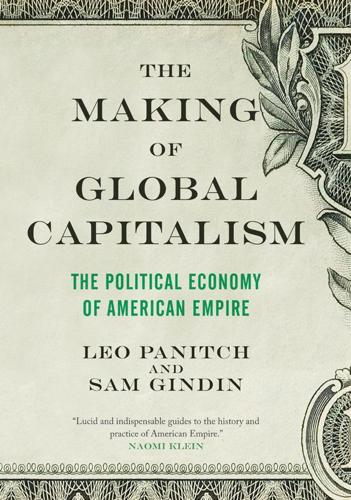
The Making of Global Capitalism
by
Leo Panitch
and
Sam Gindin
Published 8 Oct 2012
The “watered-down” bill, passed in 1939, “provided the basis for administrative reorganization in the years during and following World War II,” and this would prove very important in creating the “conditions that were necessary for the expanded reproduction of capital.”76 The US state now had a central bank, a largely merit-based professional civil service, a well-staffed Treasury, and a broad range of economic and financial regulatory agencies; and with US entry into the war it would also quickly establish an unrivaled, and permanent, military-industrial complex. Its capacity to act as a Great Power would then be no longer in question. But the distinctive interdependence between the state and capital, and the deep historic orientation of the US state towards the promotion of capitalism, would prove critical for the specific way it would play its emergent role as the manager of capitalism on a world scale.
…
Synthetic petroleum-based products contributed to the development of the American chemical industry, and the government-sponsored development of penicillin and other therapeutic drugs drove expansion in the pharmaceutical industry. The electronics industry became an integral part of the postwar military-industrial complex, and by the end of the 1950s new firms—as opposed to the established firms that dominated other sectors—were leading the civilian applications that were the foundation of the later revolutions in computing and telecommunications (the “integrated circuits” so crucial to these were patented in 1959).72 Meanwhile, financial institutions of various types not only participated in the rapid growth of industry across the country but also found ways to encourage and take advantage of rising consumerism to draw in the working classes, especially through state-backed mortgage securities and consumer loans.
…
Alongside the enormous expansion of US agricultural production (with corn production and the high-fructose revolution at its core, and agricultural productivity continuing to outpace that of non-farm industries though the 1970s), the US not only benefited from high commodity prices, but saw its overall agricultural exports increase between 1972 and 1980 by more than 300 percent.61 This technological lead reflected a distinctive American combination of supporting factors: the military-industrial complex; university research serving private innovation; early access to venture finance, alongside secure property rights; a base of skills in engineering, optics, chemistry, and metallurgy, as well as sales; and the mobility of managers across firms and regions, which helped to disseminate and further commercialize the new technology.

The Power Law: Venture Capital and the Making of the New Future
by
Sebastian Mallaby
Published 1 Feb 2022
After all, Stanford was no more distinguished than the Massachusetts Institute of Technology, which in turn was located a short drive from Harvard, creating a research cluster more powerful than anything that Silicon Valley could muster in its early days.[2] Similarly, it was true that Stanford benefited from military research dollars; that film from U-2 spy planes was processed at the nearby NASA Ames Research Center; and that the Lockheed Missiles and Space Division built submarine-launched weapons at its campus in the Valley.[3] But the famous military-industrial complex of the 1950s was primarily an East Coast alliance between the Pentagon and Cambridge, Massachusetts. The personification of that axis, Vannevar Bush, was dean of the MIT School of Engineering, founder of the Cambridge-based defense contractor Raytheon, and Franklin Roosevelt’s top science administrator during World War II.
…
If all had gone well, there would be a handshake and a promise of perhaps $80,000 or $100,000, with the likelihood of more capital from the Group’s camp followers and hangers-on.[46] “We essentially grew up in the business, and then they changed the name of it to venture capital,” Dennis remembered.[47] But even though the San Francisco lunch club boasted some successes, it financed only around two dozen deals in the late 1950s and early 1960s. Its full significance would emerge later, when it was formalized as the Western Association of Venture Capitalists.[48] Of all the early experiments, it was, unsurprisingly, Boston’s that led during the immediate postwar years. Given MIT’s position at the heart of the military-industrial complex, it was natural to bet that the region’s economic development could be accelerated by financing technologies from its labs. To lead such an effort, an elite band of New Englanders—among them the head of MIT and the president of the Boston Federal Reserve Bank—turned to Georges Doriot, a dapper French immigrant with a military mustache and a military bearing who taught at Harvard Business School.
…
To lead such an effort, an elite band of New Englanders—among them the head of MIT and the president of the Boston Federal Reserve Bank—turned to Georges Doriot, a dapper French immigrant with a military mustache and a military bearing who taught at Harvard Business School. With the blessing of the Boston patriarchs, Doriot assumed the helm at American Research and Development in 1946. Doriot was the ultimate embodiment of the military-industrial complex. During World War II, he had overseen technology procurement for the Pentagon’s Quartermaster Corps, a position he had used to champion innovations—cold-weather shoes, water-repellent fabrics, and the lightweight plastic armor Doron, which was named after him. He was thus perfectly suited to the task of investing in high-tech firms emerging from the Pentagon-backed laboratories around Boston.[49] He badgered his investment team to visit the labs regularly, sometimes placing a subway token on a desk and admonishing the young man sitting too peacefully behind it, “MIT is only a token away.”[50] An early Doriot win was High Voltage Engineering Corporation, an MIT spinout that made generators and nuclear particle accelerators, challenging incumbents such as General Electric.[51] In 1957—the year the Group started its lunch meetings, and the year of the mutiny against Shockley—Doriot made the bet that transformed ARD’s fortunes.

Four Battlegrounds
by
Paul Scharre
Published 18 Jan 2023
In 2021, the Treasury Department established a new Non-SDN Chinese Military-Industrial Complex Companies List (NS-CMIC List) of companies engaged in the Chinese defense or surveillance sectors. The White House, “FACT SHEET: Executive Order Addressing the Threat from Securities Investments that Finance Certain Companies of the People’s Republic of China,” news release, June 3, 2021, https://www.whitehouse.gov/briefing-room/statements-releases/2021/06/03/fact-sheet-executive-order-addressing-the-threat-from-securities-investments-that-finance-certain-companies-of-the-peoples-republic-of-china/; “Non-SDN Chinese Military-Industrial Complex Companies List (NS-CMIC List),” U.S.
…
Empowered by their successes against Huawei, U.S. policymakers expanded their campaign against Chinese semiconductor manufacturers and users in the waning days of the Trump administration. In December 2020, the U.S. government placed China’s largest and most advanced chipmaker, SMIC, on the Entity List. As justification for the move, U.S. regulators cited China’s strategy of military-civil fusion and SMIC’s ties to “entities of concern in the Chinese military industrial complex.” The restrictions were limited, however, to technology “uniquely required” for 10 nm process nodes or below, only targeting the most cutting-edge fab tools. (SMIC currently has some production capacity at the 14 nm node.) The Biden Administration dramatically expanded the U.S. stranglehold on Chinese chip production.
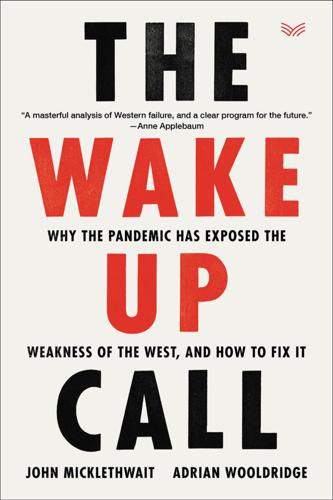
The Wake-Up Call: Why the Pandemic Has Exposed the Weakness of the West, and How to Fix It
by
John Micklethwait
and
Adrian Wooldridge
Published 1 Sep 2020
In 1955, Cyril Northcote Parkinson invented Parkinson’s Law—that work expands to fill the time available for its completion—partly on the basis of observing the way that Britain’s Colonial Office gradually grew as the Empire shrunk, with the maximum number of staff occurring when it was folded into the Foreign Office due to the lack of colonies left to administer.29 The United States never went in for nationalizing industries as they did in Europe. But the direction of travel was the same. The top rate of tax stayed above 90 percent till 1964. America wanted to reward the returning GIs with places at university and cheap houses. It needed freeways to move goods around the country and a military-industrial complex to fend off Communism. From the White House, the Republican Dwight Eisenhower and the Democrat John Kennedy both expanded government pragmatically. “The ideological debates of the past began to give way to a new agreement on the practicalities of managing a modern economy,” Arthur Schlesinger Jr., Kennedy’s house historian, observed.
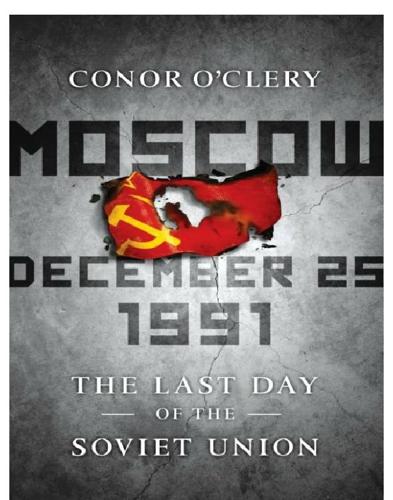
Moscow, December 25th, 1991
by
Conor O'Clery
Published 31 Jul 2011
—Yevgeny Yevtushenko, “Goodbye Our Red Flag” RUSSIAN/SOVIET DRAMATIS PERSONAE Afanasyev, Viktor, editor of Pravda, 1976—1989 Afanasyev, Yury, historian, pro-Gorbachev deputy Akayev, Aksar, elected president of Kyrgystan in 1990 Akhromeyev, Sergey, marshal of the Soviet army, putschist Alksnis, Viktor, army officer, campaigned against Gorbachev Andropov, Yury, general secretary of the Communist Party of the Soviet Union, 1982—1984 Bakatin, Vadim, pro-reform minister, last chairman of the KGB Baklanov, Oleg, head of Soviet military-industrial complex, putschist Belyaev, Igor, documentary maker, friend of Gorbachev Bessmertnykh, Alexander, Soviet minister for foreign affairs, fired after August coup Boldin, Valery, Gorbachev’s chief of staff, putschist Bonner, Yelena, widow of Andrey Sakharov Bovin, Alexander, USSR/Russia ambassador to Israel Brezhnev, Leonid, first, then general secretary of the Communist Party of the Soviet Union, 1964—1982 Burbulis, Gennady, close associate of Yeltsin Burlarsky, Fyodor, pro-reform editor of Literaturnaya Gazeta Chernenko, Konstantin, general secretary of the Communist Party of the Soviet Union, 1984—1985 Chernyaev, Anatoly, close associate of Gorbachev Chubais, Anatoly, Yeltsin’s deputy prime minister, responsible for privatization Gaidar, Yegor, Yeltsin’s deputy prime minister, responsible for shock therapy Gamsakhurdia, Zviad, elected president of Georgia in 1991 Gerasimov, Gennady, Soviet foreign affairs spokesman Gorbachev, Mikhail, general secretary of the Communist Party of the Soviet Union, 1995—1991, president of the Soviet Union, 1990—1991 Gorbacheva, Irina, daughter of Mikhail and Raisa Gorbachev Gorbacheva, Raisa, wife of Mikhail Gorbachev Grachev, Andrey, Gorbachev’s press secretary Grachev, Pavel, army general, sided with Yeltsin in August coup Grishin, Viktor, Moscow party chief, 1967—1985 Kalugin, Oleg, KGB dissident Karimov, Islam, elected president of Uzbekistan in 1990 Khasbulatov, Ruslan, chairman of the Russian Supreme Soviet, 1991—1993 Khrushchev, Nikita, first secretary of the Communist Party of the Soviet Union,1953—1964 Komplektov, Viktor, USSR/Russian ambassador to the United States Korotich, Vitaly, pro-reform editor of Ogonyok, 1986—1991 Korzhakov, Alexander, Yeltsin’s security chief Kozyrev, Andrey, Russian minister of foreign affairs Kravchenko, Leonid, head of central television, fired after August coup Kravchuk, Leonid, elected president of Ukraine in 1991 Kryuchkov, Vladimir, chairman of KGB, putschist Kuznetsov, Alexander, Yeltsin’s personal cameraman Lebed, Alexander, army general, sided with Yeltsin in August coup Lenin, Vladimir Ilyich, founder of Soviet Union Ligachev, Yegor, conservative member of Politburo Lukyanov, Anatoly, chairman of USSR Supreme Soviet, 1990—1991, putschist Luzhkov, Yury, mayor of Moscow, 1992—2010 Moiseyev, Mikhail, army general, supported August coup Murashev, Arkady, liberal Moscow police chief Nazarbayev, Nursultan, elected president of Kazakhstan, 1990 Nenashev, Mikhail, head of state television until 1990 Palazchenko, Pavel, interpreter for Gorbachev Pankin, Boris, Soviet minister for foreign affairs after August coup Pavlov, Valentin, Soviet prime minister, putschist Petrov, Yury, aide to Yeltsin Petrushenko, Nikolay, army officer, campaigned against Gorbachev Plekhanov, Yury, KGB general who held Gorbachevs prisoner during August coup Poltoranin, Mikhail, ex-editor, Yeltsin press secretary Popov, Gavriil, mayor of Moscow, 1990—1992 Primakov, Yevgeny, director of foreign intelligence service after August coup Pugo, Boris, Soviet interior minister, committed suicide after August coup Putin, Vladimir, aide to St.
…
A military plane provided by Yazov landed at the Belbek military base near Foros at 5 p.m. after a two-hour flight from Moscow. On board were Baklanov, Shenin, Boldin, and another enthusiastic putschist, General Valentin Varennikov. The four men represented the pillars of the Soviet establishment. Baklanov, with broad earnest face and furrowed brow, was head of the Soviet Union’s military-industrial complex. Shenin, prematurely bald with large domed forehead, was the Politburo member responsible for party organization. Boldin, besides being Gorbachev’s chief of staff, was a senior member of the Central Committee. Varennikov, in large rimless glasses with a thin moustache and lank hair combed over in Hitler style, was commander of Soviet land forces.

Merchants' War
by
Stross, Charles
Published 30 Sep 2007
Somewhere beyond the reach of a government agency that relied on coerced and imprisoned world-walkers. "But where?" New Britain was a possibility. Her experiment in technology transfer had worked, after all. What if we went overt? She wondered. If we told them who we were and what we could do. Could we cut a deal? Build a military-industrial complex to defend against a military-industrial complex. The Empire's under siege. The French have the resources to... she blanked. I don't know enough. A tantalizing vision clung to the edges of her imagination, a new business idea so monumentally vast and arrogant she could barely contemplate it. Thousands of world-walkers, working with the support and resources of a continental superpower, smuggling information and ideas and sharing lessons leeched from a more advanced world.
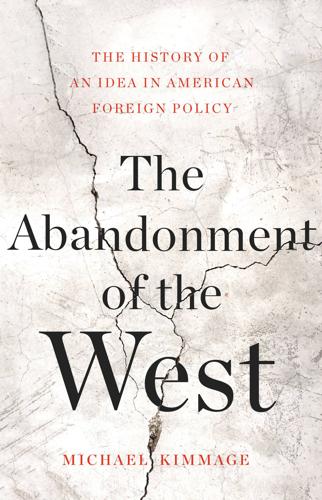
The Abandonment of the West
by
Michael Kimmage
Published 21 Apr 2020
If Cold War foreign policy was at fault for Vietnam and for other betrayals of democracy, the universities had to be at fault as well.21 None other than former academic administrator Dwight Eisenhower had predicted the travails of the Cold War university, and this was in 1961, when college campuses were relatively unperturbed. Eisenhower devoted a portion of his farewell address, in which he condemned the “military-industrial complex,” to the threat of co-opted universities. His was very much a Cold War worry: “the free university, historically the foundation of free ideas and scientific discovery, has experienced a revolution. The prospect of domination of the nation’s scholars with Federal employment, project allocations and the power of money is ever present—and is gravely to be regarded.”
…
Norton, 2009); Gabriel Kolko, The Politics of War: The World and United States Foreign Policy, 1943–1945 (New York: Random House, 1967); and Noam Chomsky, American Power and the New Mandarins (New York: Vintage Books, 1969). 22. Dwight Eisenhower, “the free university,” in 1961 Farewell Address, “Military-Industrial Complex Speech,” in Public Papers of the Presidents, Dwight D. Eisenhower, 1960, 1035–1040, https://avalon.law.yale.edu/20th_century/eisenhower001.asp. 23. See David Halberstam, The Best and the Brightest (New York: Random House, 1972). 24. Edward Said, Out of Place: A Memoir (New York: Knopf, 1999), xiii, 82, 97. 25.
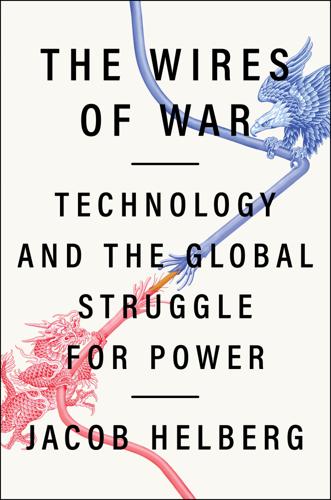
The Wires of War: Technology and the Global Struggle for Power
by
Jacob Helberg
Published 11 Oct 2021
In 1954, Lockheed Martin established its Missile and Space Division in Sunnyvale,11 becoming the largest employer in Silicon Valley.12 By 1955—fueled by the military’s insatiable demand for radios, radar, and other equipment—the $8 billion electronics industry was the third-largest sector in the country.13 The relationship between defense and the nascent tech industry became symbiotic, to the extent that President Dwight Eisenhower left office warning of the dangers of the “military-industrial complex.” That didn’t stop the coastal collaboration, however. Jolted by the launch of the Soviet satellite Sputnik, the Pentagon created ARPA—which, in 1969, fatefully linked those Stanford and UCLA computers via the ARPANET. As if birthing the Internet wasn’t enough, the hand of government can be seen in countless technologies we take for granted today.
…
Such a capability could conceivably facilitate U.S. strikes against terrorists or other adversaries, and it rankled Googlers who were drawn to the company’s “Don’t Be Evil” ethos and still smarting from the Snowden disclosures. Though the contract was quite small—estimated at $9 million to $15 million64—its opponents feared it meant Google would effectively be joining the military-industrial complex. Several Googlers even resigned in protest. The petition called for Google to pull out of Project Maven and announce a policy that neither Google nor any subsidiaries would “ever build warfare technology.”65 A few months later, Google announced that Maven would not be renewed.66 The company followed up by releasing a set of AI principles, pledging that Google would not develop AI for “weapons or other technologies whose principal purpose or implementation is to cause or directly facilitate injury to people.”67 That August, however, an explosive article in the Intercept revealed the existence of another Google project, this one known as Dragonfly.
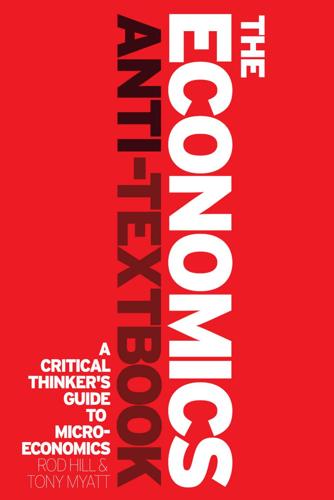
The Economics Anti-Textbook: A Critical Thinker's Guide to Microeconomics
by
Rod Hill
and
Anthony Myatt
Published 15 Mar 2010
‘Between public and private bureaucracies – between GM and the Department of Transportation, General Dynamics and the Pentagon – there is a deeply symbiotic relationship. Each of these organizations can do much for the other. There is even, between them, a large and continuous interchange of executive personnel’ ( John K. Galbraith 1973a: 5). In the United States, a prime example of how corporate interest takes over public interest is provided by the ‘military-industrial complex’. President Dwight D. Eisenhower coined this term in 1961 in his last address to the nation as he warned about the dangers of a takeover of military policy, and even foreign policy, by the weapons industry. This industry provides employment in its political constituency and funds for politicians.
…
G., 54, 226 Manning, Alan, 187, 189 Mansfield, Edwin, 103, 104, 105, 259, 260 marginal benefits, 10–11, 13, 118, 122, 131, 150 marginal costs, 10–11, 38, 97, 118, 119, 175, 176, 203; social, 151–2 marginal productivity of labour, 94–7 marginal productivity theory of income distribution, 169–95; empirical testing of, 184–5; fuzziness of, 183 marginal revenue product (MRP), 170 marginal utility, 75–6 Marglin, Stephen, 9, 16–18, 25, 26, 44, 206, 228, 243, 252–4 market: anomalies of, 147, 148; as means of organizing activity, 12–13; efficiency of, 18; equilibrium, 48; failures, ubiquity of, 150–68; frictions in, 187–9; idolization of, 4; non-competitive, 122–3; structure of, 118–49; types of, 54, 118; workings of, 53 (imagined, 46–73) see also failure of markets market fundamentalism, 4–5, 140, 248 Marmot, Michael, 213, 216 Marx, Karl, 167 McCloskey, D., 32, 36–40, 246 McConnell, C. R., 81 McGreal, Chris, 109 McNeil, J. R., 150, 253 metaphors, use of, 38 methodology, 14, 25; fudging of, 31–2; implicit and unofficial, 36, 37–40; inability to refute core propositions, 35–6, 106, 246; problems of, 246–7 micro near-efficiency, 148–9 military-industrial complex, 19 Mill, John Stuart, Principles of Political Economy, 116 minimum efficient scale, 101 minimum wage, 5, 50–1, 63, 173, 190, 244; effect of, on unemployment, 3, 31, 32–5, 58–9, 204; laws regarding, 67; monopsony and, 176; predictions concerning, 58–9 models, building of, 27; selection of most appropriate, 5, 130 Monbiot, George, 166, 239 Mondragón Cooperative, 116 monopolistic competition, 54, 127 monopoly, 54, 123–7, 132, 248; bilateral, 177; compared to perfect competition, 124; cost structures of, 136; fleeting nature of, 133; model of, 62, 71; natural, 126–7; regulation of, 125–7 monopsonistic labour markets, 175–7, 187–90 monopsony, 58, 233, 247, 251; and minimum wage, 176; and unions, 176–7; dynamic, 58; reinterpretation of, 188–90 moral and ethical judgements, 141 moral hazard, 142, 245, 256, 257 more is better, assumption of, 246 Morris, D.
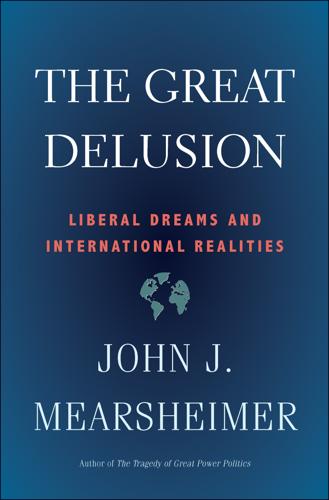
The Great Delusion: Liberal Dreams and International Realities
by
John J. Mearsheimer
Published 24 Sep 2018
Modern militaries invariably contain large numbers of individuals in uniform as well as numerous civilian employees, and rely on a vast and constantly changing arsenal of sophisticated weaponry that today, for several states, includes massively destructive nuclear weapons. They depend as well on manufacturing, logistics, and services from private businesses, creating what Dwight Eisenhower called the military-industrial complex. The state has no choice but to manage this behemoth, because the military is an integral part of the state.68 The need to fill the ranks of the military with healthy and well-educated citizens gives the government a powerful incentive to provide for the welfare of its citizenry. And it must then provide for the welfare of those citizens who end up wearing a uniform.69 When these modern militaries fight major wars, especially “total wars” like the two World Wars, the state ends up interfering in almost every aspect of daily life.
…
D., 80 Lippmann, Walter, 70 Lipson, Charles, 212, 216 literate cultures, 89 Locke, John, 7, 47, 48, 51, 53, 55, 63, 65, 66, 110, 112, 113, 138, 237n11 Louis XV, king, 93 Luther, Martin, 24 lying, by governments, 180–82 Macedo, Stephen, 77 Machiavelli, Niccolò, 52–53, 112 The Prince, 47, 146, 242n58 Madison, James, 116, 179 Maistre, Joseph de, 14 Manning, Bradley, 180 Mao Zedong, 157 Marshall Plan, 166 Marx, Anthony, 101 Marxism, 87, 148–49, 225 Mattis, James, 228 McCain, John, 175 McCarthyism, 182 McDonald, Patrick, 205 McFaul, Michael, 163 McIntyre, Alasdair, 23 Mearsheimer, John J., The Tragedy of Great Power Politics, 236n8 Mehta, Uday, 108 Middle East, U.S. intervention in, vii, 5, 153, 155–56, 164–71, 187, 233 military and militarism: capabilities of, 131–32, 134, 145–47 caused by liberal hegemony, 152–56, 179, 220–21 nationalism and, 99–101 progressive liberalism underlying, 72–74. See also war military-industrial complex, 72 Mill, James, 74, 76 Mill, John Stuart, 55, 74, 76, 113 minorities, in democracies, 11, 50 minority cultures, 88, 98–99 modern state system: history of, 144–49 imperialism and, 99 nationalism at foundation of, 4, 147–49 realism at foundation of, 4, 131–34, 145–47 sovereignty in, 93–94.
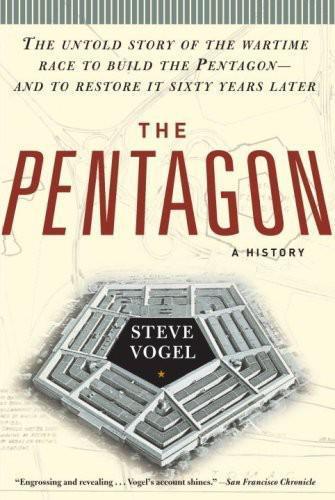
The Pentagon: A History
by
Steve Vogel
Published 26 May 2008
The targeting of the Pentagon by antiwar demonstrators reflected the sinister image that it had assumed in the minds of many Americans. The building had come to personify the “military-industrial complex” that President Dwight D. Eisenhower had warned of six years earlier. The building’s very size and shape made it the perfect outlet for hostility. Norman Mailer, who would march with the demonstrators and win the Pulitzer Prize for his account of the event, The Armies of the Night, wrote that the protesters “…were going to face the symbol, the embodiment, no, call it the true and high church of the military-industrial complex, the Pentagon, blind five-sided eye of a subtle oppression which had come to America out of the very air of the century…” There had been previous demonstrations at the Pentagon, the most shocking two years earlier, in the twilight of a November evening in 1965.
…
Vogel has brought to our notice a thrilling achievement.” —The Economist “Engrossing and revealing…Vogel’s account shines…. [He] provides a first-rate account of the transformation of a dilapidated Arlington neighborhood into what Norman Mailer called ‘the true and high church of the military industrial complex.’” —San Francisco Chronicle “[Vogel] puts on display his superlative skills as a journalist with capturing human detail. Above all, he reminds us that history is made by living people, and he has a biographer’s fascination with the details of dozens of personalities who made the Pentagon what it is today.”
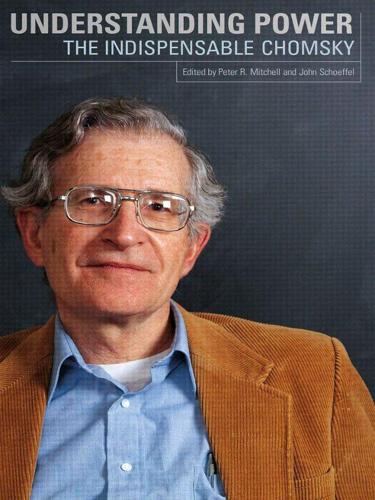
Understanding Power
by
Noam Chomsky
Published 26 Jul 2010
Schoeffel, John. 320 www.scribepublications.com.au Contents Editors’ Preface A Note on the Events of September 11, 2001 Chapter One: Weekend Teach-In: Opening Session Chapter Two: Teach-In: Over Coffee Chapter Three: Teach-In: Evening Chapter Four: Colloquy Chapter Five: Ruling the World Chapter Six: Community Activists Chapter Seven: Intellectuals and Social Change Chapter Eight: Popular Struggle Chapter Nine: Movement Organizing Chapter Ten: Turning Point Editors’ Preface This book brings together the work of one of the most remarkable political activists and thinkers of our time. The discussions span a wide array of topics—from the workings of the modern media, to globalization, the education system, environmental crises, the military-industrial complex, activist strategies, and beyond—and present a revolutionary perspective for evaluating the world, and for understanding power. What distinguishes Noam Chomsky’s political thinking is not any one novel insight or single overarching idea. In fact, Chomsky’s political stance is rooted in concepts that have been understood for centuries.
…
I mean, it’s not that it turned into Utopia or anything, but a lot of concern developed and a lot of activity started up, which still continues, on issues which people didn’t even consider before. Well, could you have guessed? I mean, I guessed wrong, they guessed right. But as far as I can see, it was basically like flipping a coin. 3 Teach-In: Evening Based primarily on discussions at Rowe, Massachusetts, April 15–16, 1989. The Military-Industrial Complex WOMAN: What’s been the point of the arms race, Dr. Chomsky? Well, there are a lot of things, it’s served a number of crucial functions. Remember, any state, any state, has a primary enemy: its own population. If politics begins to break out inside your own country and the population starts getting active, all kinds of horrible things can happen—so you have to keep the population quiescent and obedient and passive.
…
And since one of the main purposes of social policy is to keep the population passive, people with power are going to want to eliminate anything that tends to encourage the population to get involved in planning—because popular involvement threatens the monopoly of power by business, and it also stimulates popular organizations, and mobilizes people, and probably would lead to redistribution of profits, and so on. MAN: How about just reducing taxes, instead of sending all this money into the military-industrial complex? You can’t reduce taxes much—because what else is going to keep the economy going? Remember, it’s been known since the Great Depression that anything like free-market capitalism is a total disaster: it can’t work. Therefore every country in the world that has a successful economy is somewhere close to fascism—that is, with massive government intervention in the economy to coordinate it and protect it from hostile forces such as too much competition.
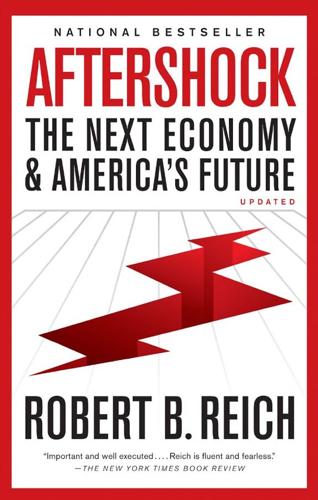
Aftershock: The Next Economy and America's Future
by
Robert B. Reich
Published 21 Sep 2010
By 1970, 70 percent of the nation’s four-year students were in public universities and colleges. The federal government, especially the Defense Department, also underwrote a growing portion of university research, particularly in the sciences. Cold War defense spending generated what might be called an “industrial commons” that spilled over into commercial production. The military-industrial complex, as Eisenhower so decorously dubbed it, invented small transistors that eventually were utilized in everything from televisions to wristwatches. The Department of Defense also researched and produced hard plastics, optical fibers, lasers, computers, jet engines and aircraft frames, precision gauges, and sensing devices.

The Extreme Centre: A Warning
by
Tariq Ali
Published 22 Jan 2015
The centre of the world market has shifted eastwards to China, as once it did westwards from Britain to the United States, but the engine of military power and its attendant civil institutions that protect and sustain the system of global capitalism remain firmly anchored in Washington. The Pacific and the Atlantic are both the setting for an outsize military-industrial complex and the world’s largest national economy. The interrelationship between the two is likely to determine the course of the twenty-first century, with Europe remaining attached to the Atlantic. _______________ 1 Witness Thatcher in Eastern Europe, Blair in the Balkans and Middle East and, most recently, Cameron lecturing Putin on the Ukraine. 2 The coinage is that of Adam Smith, who argued in The Wealth of Nations that China was such a paralysed state that it could not move forward or backward: ‘China seems to have been long stationary, and had possibly long ago acquired that full complement of riches which is consistent with the nature of its laws and institutions’, and ‘inferior to what, with other laws and institutions, the nature of its soil and climate, and situation might admit of’ (I.ix.15).

Losing Earth: A Recent History
by
Nathaniel Rich
Published 4 Aug 2018
His title was senior research analyst, which was a delicate way of saying science adviser to the national intelligence community. After a single phone call, Pomerance, a Vietnam War protester and conscientious objector, drove several miles on the Beltway to a group of anonymous white office buildings that more closely resembled the headquarters of a regional banking firm than the solar plexus of the American military-industrial complex. He was shown into the office of a brawny, soft-spoken man with a wave of glossy, silverish hair over horn-rimmed frames, who possessed more than a passing resemblance to Alex Karras—a geophysicist trapped in the body of an offensive lineman. He extended a hand like a bear’s paw. “I’m glad you’re interested in this,” said MacDonald, taking in the young activist.

John F. Kennedy and the Race to the Moon (Palgrave Studies in the History of Science and Technology)
by
John M. Logsdon
Published 15 Dec 2010
Despite the hopes raised by Kennedy’s campaign rhetoric, it is unlikely that the new administration could have, or would have, agreed with the Air Force hope for a larger role in space at the expense of NASA. As he left office, Dwight Eisenhower had warned of the increasing power of the “military– industrial complex,” and a move in the early months of the administration to increase Air Force activity in a visible area such as space would have been politically very difficult. Secretary of Defense McNamara was trying to get the management of defense activities under centralized control. The top people in DOD were not particularly space conscious, and McNamara and Webb had reached an understanding of the respective roles of their agencies that the White House would have been unlikely to countermand.
…
This page intentionally left blank Index Air Force bases as potential locations for launch, 128, 130 civil-military relations, 18–21 Gardner and, 9, 32, 47–48 man-in-space program, 219, 221 McNamara and, 47, 101 NASA and, 30, 39–40, 45–48, 55, 117 Schriever as representative, 86–87 Webb and, 44–48, 55, 210 Aldrin, Buzz, 223, 224, 237, 244 Algeria, 7 Anders, Bill, 237 Anderson, Clinton, 31, 208 Apollo 1962 review of, 134–137 1963 reviews of, 199–204, 205–207, 214–216, 218–222 acceleration of program, 143–144, 147–149, 151–157 Air Force and, 219, 221 assassination of JFK and, 218–222 BOB and, 108–110, 136–137, 153–157, 203, 219–222, 226 budget, 61–67, 74, 85, 104, 157, 207–209 Bundy and, 107, 200, 203 costs, 2–3, 27–28, 74, 104–105, 110, 134–135 criticism of, 198–199, 204–207 final Kennedy visit to launch site, 216–218 Johnson and, 30, 134–136, 223, 227, 230, 232–135, 238 Kennedy’s support for, 116, 118, 153, 199–204, 225–235 launch vehicles, 131–134 location of facilities for, 125–131, 139–142 management and scheduling troubles, 209–211 naming of, 25 see also Webb, James Apollo-Soyuz Test Program (1975), 241 Armstrong, Neil, 4, 223, 244 Army Ballistic Missile Agency (ABMA), 19, 86 Atomic Energy Commission (AEC), 20, 22, 60, 63, 84, 88, 92, 99, 105, 108, 113, 123, 136, 200–201 Ball, George, 172–173 Belieu, Kenneth, 29–30, 32, 39–40 Bell, David, 29, 46, 74, 81, 126, 137, 141, 149, 156 acceleration of space program, 75–77, 107–108 advice to JFK, 121, 125, 134–135, 153–155, 235 initial review of NASA budget, 43, 62–67 setting up Space Council, 57–61 Berkner, Lloyd, 41, 52–53, 112 Beschloss, Michael, 232 Blagonravov, Anatoly, 171–172, 180–181, 183, 190 Bolshakov, Georgi, 165–166 Bridges, Styles, 23, 60, 91–92 Brooks, Overton, 32, 48, 60–61, 73, 91–92, 128 Brown, George, 86, 92, 111, 127–128 Brown, Harold, 99, 145, 149 Bundy, McGeorge, 63–64 on acceleration of U.S. space program, 79, 107 Apollo and, 200, 203 Kaysen and, 139 Khrushchev and, 166 NASA and, 169, 214–216 286 INDEX Bundy, McGeorge—Continued role in space policy, 124–126 Rostow and, 84 Rusk and, 161 Soviet space program and, 69, 166, 183–184, 188–190, 193 Teague and, 213 United Nations and, 161 Wiesner and, 148 Bureau of the Budget (BOB) acceleration of target date and, 152–157 Apollo and, 25, 203, 226 Eisenhower and, 25 NASA and, 25, 62, 64–65, 67, 75, 214, 219 recommendations on space program, 113, 116, 118 review of budgets, 107–111, 134–137 Space Council and, 84, 86, 92, 99 Webb and, 41–43, 141 Wiesner and, 125 Bush, George H.W., 236 Bush, George W., 236 Bush, Vannevar, 111 Callaghan, Richard, 135–136 Castro, Fidel, 79 Central Intelligence Agency (CIA), 12–13, 69, 79, 139, 173, 177–178, 180, 188, 190, 239 Clifford, Clark, 15–16, 18, 35 Cook, Donald, 86, 89, 92 Cooper, Gordon, 217 CORONA program, 13, 247 Cox, Archibald, 8–9 Cuba impact of Bay of Pigs, 78–79 impact of missile crisis, 148, 153, 176–177, 192, 197, 230 Defense Advanced Research Agency (DARPA), 19–21 Department of Defense (DOD) budget, 105, 135, 157 Gardner report and, 47–48 Gemini and, 157 initial agreement with NASA, 46–47 launch vehicles and, 101–102, 132 programs transferred to NASA, 20–21 relationship with NASA, 122, 201–203 review of space program and, 85–86, 100–102, 207, 214, 219, 221 Wiesner task force and, 31–33 Dryden, Hugh, 20, 216 as Acting Administrator, 35, 49 Apollo and, 77, 84–85, 209–210, 217 Blagonravov and, 171–172, 180–181 budgets and, 62, 65, 67, 73–77, 135 Keldysh and, 180–181 Project Mercury and, 49–51, 95 role in decision-making process, 43, 155–156 Soviet space program and, 161–162, 171–173, 180–181 Space Council review and, 84–86 testimony before Congress, 73–75, 92 Webb and, 42–44, 65 Dulles, Allen, 12–13 Earth-orbit rendezvous (EOR), 133, 144–147, 149 Eisenhower, Dwight civil-military relations and, 18–19 criticism of lunar landing program, 198–200, 204 human space flight and, 27–28 increases in rocket lifting power and, 24–25 JFK’s presidential campaign and, 5, 8, 11–13 “military industrial complex” and, 48 Space Council and, 22–23 Feldman, George, 39, 86 Frutkin, Arnold, 169, 189, 195 Fulton, James, 73–74, 91–92 Gagarin, Yuri impact of flight on U.S. space program, 50, 69–78, 117–118, 227, 232 JFK’s response to, 75, 78–79, 160, 238 medical condition following flight, 95, 138 at United Nations, 187 INDEX Gardner, Trevor, 9, 13, 21, 32, 47–48, 89, 101, 175, 192 Gemini Apollo and, 219 budget, 157 DOD and, 219 JFK and, 149, 217 McDonnell Aircraft Corporation and, 151 Mercury and, 119 rendezvous and, 146 success of, 238, 242 Gilpatric, Roswell, 46, 99, 126, 206–207 Gilruth, Robert, 49, 51, 104, 183, 231 Glenn, John, 160, 168, 238 Glennan, T.

Selfie: How We Became So Self-Obsessed and What It's Doing to Us
by
Will Storr
Published 14 Jun 2017
In the years of the Great Compression, with its collective economy that was so deviant to the American subconscious, a general neurosis had arisen amongst the population that said that computers weren’t there to serve the individual, but the organism. At that time, Silicon Valley was the brain of the military–industrial complex, a place of secretive laboratories working on defence contracts: missiles, radar, guidance, nuclear weaponry. Computers were great humming mainframes, mysterious, alien, basement presences that were operated by teams of inscrutable people in lab coats. They were machines of conformity and control and were to be feared.
…
Keith ref1, ref2, ref3, ref4 Carlyle, Abbot Aelred ref1, ref2 Carnegie, Dale ref1 How to Win Friends and Influence People ref1 Carter, Drummond ref1 celebrity culture ref1, ref2, ref3 chimpanzees ref1, ref2 China biographies in ref1 Confucian self ref1 and group harmony ref1 suicides in ref1 Christian Science movement ref1 Christianity ref1, ref2 Ancient Greek influence ref1, ref2 and belief in God ref1 dourly introspective ref1 future-orientated ref1 orthodox not orthoprax ref1 and perfection ref1 and reason ref1 ritual and mimicry ref1 and the unconscious ref1 and the university system ref1 Cialdini, Dr Robert, The Psychology of Influence and Persuasion ref1 CJ becomes anorexic ref1 childhood and family life ref1 description and life ambition ref1 devotion to The Hunger Games ref1, ref2, ref3 drops out of drama college ref1 need for validation ref1 personality ref1, ref2 relationship with boys ref1 takes selfies as validation of self ref1, ref2 Claybury psychiatric hospital ref1 Clinton, Bill ref1, ref2 Clinton, Hilary ref1 Coan, James ref1 Cole, Steve ref1 the Collective ref1 computers see digital technology Confucianism ref1 and Aristotelianism ref1 and suicide ref1 Confucius ref1 Connop, Phoebe ref1 Cook, Tim ref1 Cooley, Charles Horton ref1 Cornish, Jackie ref1 corporate self ref1 Corporation Man and Woman, idea of ref1 Coulson, William ref1, ref2 Council of Economic Advisers ref1 Cowen, Graeme ref1, ref2 Cramer, Katherine ref1 cultural self and Ancient Greece ref1 and Asian self ref1, ref2 childhood and adolescence ref1 and Confucianism ref1 and the environment ref1 Freudian beliefs ref1 and ideal body ref1, ref2 and storytelling ref1 and youth ref1 Curtis, Adam ref1 Cynics, in Ancient Greece ref1 Deep Space Industries ref1, ref2 Demo: New Tech Solving Big Problems conference (San Jose, 2014) ref1 Deukmejian, George ‘The Duke’ ref1, ref2, ref3 digital technology and age of perfectionism ref1 development of ref1, ref2 dot.com crash ref1 humanist-neoliberal ideology ref1, ref2, ref3 and the ideal self ref1 online community ref1 personal computers ref1, ref2 as portal to information ref1 and the selfie drone ref1 vision of the future ref1 Web 2.0 ref1, ref2, ref3, ref4 DNA ref1 Doyle, Jacqueline ref1 Dunbar, Robin ref1 Eagleman, David ref1 East Asians ref1, ref2, ref3, ref4, ref5 eating disorders ref1, ref2 Eddy, Mary Baker ref1, ref2 Eells, Gregory ref1 effectance motive ref1 Ehrenreich, Barbara ref1 El Rancho Inn, Millbrae ref1, ref2, ref3 empathy ref1, ref2, ref3, ref4, ref5, ref6, ref7 encounter groups danger of ref1 Doug Engelbart’s ref1 online ref1 participation in ref1, ref2, ref3, ref4 Fritz Perls’ ref1 Carl Rogers as pioneer of ref1 Will Schutz’s ref1 Engelbart, Doug ref1 interest in EST ref1 introduces encounter groups ref1 joins Global Business Network ref1 presents personal computer concept ref1, ref2 vision of information age ref1, ref2 ‘Augmenting Human Intellect’ ref1 environment and development of the brain ref1, ref2 Easterners’ vs Westerners’ awareness of ref1 effect of changes to ref1 importance of ref1 and individual experience ref1 and social perfectionism ref1, ref2, ref3 Epley, Nicholas ref1, ref2 Erhard, Werner ref1 Erhard Seminars Training (EST) workshops ref1 Esalen Institute ref1, ref2, ref3, ref4, ref5, ref6, ref7, ref8, ref9, ref10 Big Yurt ref1 criticisms of ref1 final assignment ref1 hosts conference on Spiritual and Therapeutic Tyranny ref1, ref2, ref3 influence at Stanford ref1, ref2 The Max ref1, ref2 Pandora’s Box ref1 Fritz Perls’ Gestalt encounter groups ref1 role-play tasks ref1 Will Schutz’s encounter groups ref1 stated mission ref1 suicides connected to ref1 unaffiliated ‘Little Esalens’ ref1 and wired technology ref1 EST see Erhard Seminars Training (EST) workshops Euclid, Cleveland ref1 Euripides, The Suppliants ref1 extraverts ref1, ref2, ref3, ref4 Faber, Daniel ref1, ref2 Facebook ref1, ref2, ref3, ref4 Fall Joint Computer Conference (San Francisco, 1968) ref1, ref2 financial crises ref1, ref2, ref3, ref4 Flett, Gordon ref1, ref2 Fonda, Jane ref1, ref2 Fortune magazine ref1, ref2 ‘The Founder’ concept ref1, ref2 Fox, Jesse ref1 free speech ref1 free will ref1, ref2, ref3, ref4 Freud, Sigmund ref1, ref2, ref3, ref4 Totem and Taboo ref1 Frith, Chris ref1 Gagarin, Nick ref1 gamified self ref1, ref2, ref3 Garcia, Rigo ref1 Gazzaniga, Michael ref1, ref2 GBN see Global Business Network Generation X ref1, ref2 George, Carol ref1 gig economy ref1, ref2 Global Business Network (GBN) ref1, ref2 globalization ref1, ref2, ref3 Gold, Judith ref1 Goldman, Marion ref1 Gome, Gilad ref1, ref2, ref3 Gordon, Robert ref1 gossip ref1, ref2, ref3, ref4, ref5, ref6, ref7 Great Compression (c. 1945–c. 1975) ref1, ref2, ref3, ref4, ref5, ref6, ref7, ref8, ref9, ref10, ref11, ref12 Great Depression ref1 Greenspan, Alan appointed Chairman of the Federal Reserve ref1 considers himself a libertarian ref1 effect of decisions on financial crisis ref1 influenced by Rand ref1, ref2, ref3, ref4 relationship with Clinton ref1 rise to power ref1 Hacker Hostels, San Francisco ref1, ref2 Haidt, Jonathan ref1, ref2, ref3 Hampton, Debbie ref1, ref2, ref3, ref4 Hayek, Friedrich ref1, ref2, ref3 Heinz, Adrienne ref1, ref2, ref3 Heinz, Austen considered sexist and misogynistic ref1 description of ref1 DNA vision ref1 personality ref1 suicide of ref1 Henrich, Joseph ref1, ref2, ref3 heroes ref1, ref2, ref3, ref4, ref5, ref6, ref7, ref8 Hewitt, John ref1, ref2, ref3, ref4 Hierarchy of Needs (Maslow) ref1 Himba people ref1 Hogan, Robert ref1 Hollesley Bay Young Offenders Institution, Suffolk ref1 Hood, Bruce ref1, ref2, ref3 The Self Illusion ref1 Horowitz, Mitch ref1, ref2 Human Potential Movement ref1, ref2, ref3, ref4, ref5 Humanistic Psychology ref1, ref2 The Hunger Games ref1, ref2, ref3 hunter-gatherers ref1, ref2, ref3, ref4, ref5 Hutchinson, Audrey ref1, ref2 Huxley, Aldous ref1 ideal self ref1, ref2, ref3, ref4, ref5, ref6, ref7, ref8, ref9, ref10 see also perfect self Immaculate Heart Community, California ref1 Inc.com ref1, ref2 individualism and the 2016 political shocks ref1 in America ref1 Ancient Greek notion of ref1, ref2, ref3 and blame ref1 Christian view ref1, ref2 competitive ref1, ref2 cooperation and teamwork ref1, ref2 and culture ref1 development of ref1, ref2 East Asian concept of ref1 East–West clash ref1 and freedom ref1, ref2, ref3, ref4 getting along and getting ahead ref1, ref2 and the Great Compression ref1 hard form of ref1 as heightened ref1 hyper-individual model ref1 libertarian-neoliberal ref1 and passion ref1 and personality traits ref1, ref2 and Ayn Rand ref1, ref2, ref3, ref4 rise of ref1, ref2 and self-esteem ref1, ref2, ref3, ref4 and social pain ref1 and the state ref1 Stewart Brand’s concept of ref1 and wired technology ref1 internet ref1, ref2, ref3, ref4, ref5 and Doug Engelbart ref1 and Web 2.0 ref1, ref2, ref3 introverts ref1, ref2, ref3 Jaeger, Werner ref1, ref2, ref3 James, William ref1 Japan, suicide in ref1 Jeremy (mechanical engineer) ref1, ref2, ref3, ref4 Jobs, Steve ref1, ref2, ref3, ref4 Kalanick, Travis ref1 kalokagathia ref1, ref2, ref3, ref4, ref5 Kelly, Jodi ref1 Kidlington Detention Centre, Oxfordshire ref1 Kim, Uichol ref1, ref2, ref3, ref4, ref5 Konrath, Sara ref1 Lakewood Church, Houston ref1 leadership ref1, ref2 Leary, Mark ref1 Levey, Cate ref1, ref2 libertarianism ref1, ref2, ref3, ref4, ref5 Lincoln Elementary School, Long Beach ref1 Little, Brian ref1, ref2, ref3, ref4 Loewenstein, George ref1 ‘The Long Boom: A History of the Future’ (Schwartz et al.) ref1, ref2 The Looking-Glass Self (Bruce) ref1, ref2 Lord, Frances ref1 Luit (chimpanzee) ref1 Lyons, Dan ref1 McAdams, Dan ref1 McKee, Robert ref1 McManus, Chris ref1 Marin, Peter ref1 market rhetoric ref1 Markoff, John ref1 Martin, Father ref1, ref2, ref3, ref4 Marwick, Alice ref1, ref2, ref3 Maslow, Abraham ref1, ref2 Matteo Ricci College, Seattle ref1 Mayfield, Janet ref1 Mecca, Andrew ref1, ref2, ref3, ref4, ref5, ref6 Menlo Park ref1, ref2, ref3, ref4, ref5 Michie, Colin ref1 millennials ref1, ref2, ref3, ref4 Mind Cure ref1, ref2, ref3 Mitropoulos, Con ref1, ref2 monastic life ref1, ref2, ref3, ref4, ref5 Monitoring the Future Project ref1 Mont Pelerin Society ref1 Morales, Helen ref1 Mumford, Lewis, The Myth of the Machine ref1 Murphy, Michael ref1, ref2, ref3, ref4, ref5, ref6, ref7 Musk, Elon ref1, ref2, ref3 narcissism ref1 at Esalen ref1, ref2 and over-praise ref1, ref2 research into ref1 rise in ref1, ref2, ref3, ref4 and self-esteem ref1, ref2, ref3 and Trump ref1 and Vasco ref1 in younger people ref1, ref2 The Narcissism Epidemic (Twenge and Campbell) ref1 narcissistic perfectionism ref1 Narcissistic Personality Disorder ref1 Narcissistic Personality Inventory (NPI) ref1, ref2 National Academy of Sciences Proceedings (2015) ref1 National Council for Self Esteem ref1 nature vs nurture in development ref1, ref2 neoliberalism becomes mainstream ref1 and being self-sufficient and successful ref1 and ‘bespoke hero’ ref1 corporate view ref1 and creation of new form of human ref1 and the digital future ref1 disdain for regulation and government oversight ref1 emergence ref1 and financial inequalities ref1, ref2 and gay rights/gay marriage ref1 and global financial crisis (2008) ref1 as global phenomenon ref1 governments run like businesses ref1 Hayek’s vision of ref1, ref2 individualism, status and self-esteem ref1 negative effects ref1 and new style of government ref1 and power of multinationals ref1 rebellion against ref1 and structural inequalities ref1 and working conditions ref1 Netflix: code for employees ref1 Nettle, Daniel ref1, ref2, ref3, ref4 Personality ref1 neurotics and neuroticism ref1, ref2 neurotic perfectionism ref1, ref2, ref3, ref4 as personality trait ref1, ref2, ref3, ref4, ref5, ref6, ref7 Nietzsche Society, UCL ref1 Nisbett, Richard ref1, ref2, ref3, ref4, ref5, ref6, ref7 NPI see Narcissism Personality Index; Narcissistic Personality Inventory O’Connor, Rory ref1, ref2, ref3, ref4, ref5 Oedipus complex ref1, ref2 O’Reilly, Tim ref1 ostracism ref1 Ozawa-de Silva, Chikako ref1 Pakrul, Stephanie (aka StephTheGeek) ref1 ‘Paris Hilton effect’ ref1 Peale, Dr Norman Vincent, The Power of Positive Thinking ref1 perfect self as an illusion ref1 Heinz Austen as example of ref1 and being anything we want to be ref1, ref2 Christian ref1 CJ as example of ref1 cultural conception of ref1 and culture ref1 and digital self ref1 and gamified individualist economy ref1 and ideal self ref1 judging others and ourselves ref1 narcissistic ref1 and neoliberalism ref1 neurotic ref1, ref2, ref3, ref4 perfectionist presentation ref1 and personal responsibility ref1 pressures of ref1 and the self ref1, ref2 selfishness or selflessness ref1, ref2 social ref1 and suicide ref1 see also ideal self Perls, Fritz ref1, ref2 as a ‘dirty old man’ ref1, ref2, ref3 feud with Schutz ref1 fractious relationship with Esalen ref1 Gestalt encounter groups ref1, ref2, ref3 near obsessional attacks and insults ref1 reaction to suicides ref1 Tom Wolfe’s comments on ref1 tough upbringing ref1 visits Freud ref1, ref2 personal computers see digital technology personality and acting out of character ref1 assumptions concerning ref1 basic traits ref1, ref2, ref3 and being or doing whatever we want ref1 and the brain ref1, ref2, ref3 different people in different contexts ref1 individualism and self-esteem ref1 and parental influence ref1 predictable shifts in ref1 prison metaphor ref1 and realising you’re not the person you wanted to be ref1 social responses ref1 tests and research ref1 as virtually unchanging ref1 physical self Ancient Greek ideals ref1, ref2 and body consciousness ref1, ref2, ref3, ref4 cultural influences ref1 and diet ref1 linked to moral worth ref1 Pluscarden Abbey ref1, ref2, ref3, ref4, ref5, ref6, ref7, ref8 polyamory ref1, ref2 Price, Marcia ref1 Price, Richard ref1, ref2, ref3 Pridmore, John ref1 childhood trauma ref1 effect of culture on ref1, ref2, ref3 sent to prison ref1 undergoes religious conversion ref1, ref2, ref3 violent behaviour ref1, ref2, ref3, ref4, ref5, ref6, ref7 weeps when watching TV ref1, ref2 psychoanalysis ref1 Qi Wang ref1 Quimby, Phineas ref1, ref2 Rainbow Mansion, Silicon Valley ref1, ref2 Rand, Ayn ref1, ref2, ref3 beliefs and influence ref1, ref2, ref3, ref4, ref5, ref6 changes her name/identity ref1 early life ref1 reaction to Nathaniel Branden’s infidelity ref1, ref2 sets up the Collective ref1 Atlas Shrugged ref1, ref2, ref3 The Fountainhead ref1 The Virtue of Selfishness ref1 reputation ref1, ref2 in Ancient Greece ref1 ‘getting along and getting ahead’ (Hogan) ref1, ref2, ref3, ref4, ref5, ref6 and guilt ref1 ‘honour culture’ ref1 and tribal brains ref1 Rogers, Art ref1, ref2 Rogers, Carl ref1, ref2, ref3, ref4, ref5, ref6, ref7 Roh Moo-hyun ref1 Rosenbaum, Alyssa see Rand, Ayn Rosetto, Louis ref1 Ross, Ben ref1, ref2 Rudnytsky, Peter ref1 Rule of St Benedict, The ref1, ref2 San Francisco ref1, ref2, ref3, ref4, ref5, ref6, ref7, ref8, ref9 Sapolsky, Robert ref1, ref2 Sartre, Jean-Paul ref1, ref2 Satir, Virginia ref1 Schuman, Michael ref1 Schutz, Will ref1, ref2, ref3, ref4, ref5, ref6 Joy ref1 Schwartz, Peter ref1 Scott, Sophie ref1, ref2 Seager, Martin ref1 self cultivation of ref1 East Asian, and reality ref1, ref2 and engagement in personal projects ref1 and local best-practice ref1 and need for a mission ref1 as open and free ref1 perfectible ref1, ref2 as a story ref1 see also authentic self Self-Determination Think Tank ref1 self-esteem Baumeister’s research into ref1 belief in ref1 and changes in values ref1 in education ref1, ref2, ref3 high ref1, ref2, ref3, ref4 and lack of tolerance and empathy ref1 legislation embodying ref1 legitimization of ref1 and life-affirming message ref1 lingering effects of movement ref1 low ref1, ref2, ref3, ref4, ref5, ref6, ref7, ref8, ref9, ref10 media questioning of ref1 myths and lies concerning ref1, ref2, ref3 and narcissism ref1, ref2, ref3 negative effects ref1 negative report on ref1 and overpraise ref1 and perfectionism ref1 popularity of ref1 raising ref1 research into ref1 and selfie generation ref1 Self-Esteem Task Force project ref1 social importance of ref1 Vasco’s ideology of ref1, ref2, ref3, ref4, ref5, ref6, ref7 Western emphasis on ref1 self-harm ref1, ref2, ref3, ref4, ref5, ref6, ref7, ref8 self-interest ref1, ref2, ref3 self-just-about-everything ref1, ref2 self-loathing ref1 self-love movement ref1, ref2, ref3, ref4 selfie generation ref1 awareness of structural inequalities ref1 CJ as example of ref1, ref2 effect of social media on ref1 maintaining continual state of perfection ref1 and narcissism ref1 need for social feedback ref1 and parenting practices ref1 selfishness/selflessness ref1, ref2, ref3, ref4, ref5 Shannahoff-Khalsa, David ref1, ref2, ref3, ref4 Shannin (entrepreneur) ref1 Shaw, Paula ref1, ref2, ref3, ref4 Silani, Dr Giorgia ref1 Silicon Valley, California ref1, ref2 attitude to conspicuous wealth ref1 as capital of the neoliberal self ref1 cold-blooded rationalism in ref1 demonstration of personal computing in ref1 hyper-individualist model of corporate self in ref1, ref2 involvement in transformation of economy ref1 lack of compassion in ref1 links with Esalen ref1 living in fear in ref1 as military-industrial complex ref1 model of ideal self in ref1 Simon, Meredith ref1, ref2, ref3 Singularity ref1 Smelser, Neil ref1, ref2, ref3, ref4, ref5 Smiles, Samuel ref1 Self Help ref1 Snyder, Mark ref1 Social Importance of Self-Esteem, The (Smelser et al.) ref1, ref2 social media ref1, ref2 social pain ref1, ref2 South Korea, suicide in ref1 Sparks, Randy ref1 Oh Yes, I’m A Wonderful Person and other Musical Adventures for those of us in search of Greater Self-Esteem ref1 Spiritual and Therapeutic Tyranny: The Willingness to Submit (conference, 1973) ref1, ref2, ref3 Squire, Michael ref1 Stanford Research Institute, Menlo Park ref1, ref2 Augmentation Research Center (ARC) ref1, ref2 Stanford University ref1, ref2, ref3 Center for Advanced Study in the Behavioral Sciences Unit ref1 Stark, Rodney ref1 start-ups ref1, ref2, ref3, ref4, ref5, ref6 Startup Castle, Silicon Valley ref1 stimulus-action hunger ref1 storytelling Brexit/Trump narrative ref1 development of personal narratives ref1 East–West differences/similarities ref1 and feelings of control ref1 as form of tribal propaganda ref1 happiness and sense of purpose ref1 and the inner voice ref1, ref2, ref3, ref4, ref5 self and culture ref1 and self-esteem ref1 and self-loathing ref1 selfishness or selflessness ref1, ref2, ref3 split-brain participants ref1 success and failure ref1 as universal ref1 suicide ref1 attempts at ref1, ref2, ref3 Confucian cultures ref1 connected to Esalen ref1, ref2 as failed hero stories ref1 gender and culture ref1, ref2 increase due to financial crisis (2008) ref1 in Japan ref1 and loss of hero status ref1 as a mystery ref1 patterns in ref1 and perfectionism ref1, ref2, ref3 rates of ref1 research into ref1 in South Korea ref1 Sunshine (attendee at Esalen) ref1 Sweet Peach ref1 synthetic biology ref1, ref2 Talhelm, Thomas ref1 Tanzania ref1, ref2 teamwork/cooperation ref1 Thiel, Peter ref1 Zero to One ref1 Tice, Dianne ref1 Tomkins, Detective Sergeant Katherine ref1 Tomlinson, Rachel ref1 Toward a State of Esteem (1990) ref1 tribal self Brexit/Trump narrative ref1 hierarchy, territory, status ref1 and ideal/perfect self ref1 monks as ref1 prejudice and bias ref1 and punishing of transgressors ref1 reputation and gossip ref1, ref2 selflessness or selflessness ref1, ref2, ref3, ref4 and storytelling/left-brain interpretation ref1 Trudeau, Garry ref1, ref2, ref3, ref4 Trump, Donald as anti-establishment ref1 appeal to voters ref1, ref2 declares he will put ‘America first’ ref1 false stories concerning ref1 narcissistic tendencies ref1 and social media ref1 as straightforward no-nonsense businessman ref1 Trzesniewski, Kali ref1 Turner, Fred ref1, ref2 Twenge, Jean ref1, ref2, ref3, ref4 20Mission (Hacker Hostel, San Francisco) ref1 Twitter ref1, ref2, ref3, ref4 University of Glasgow Suicide Behaviour Research Laboratory ref1, ref2, ref3 Vanessa (employee at Rainbow Mansion) ref1, ref2 Vasconcellos, John ‘Vasco’ ref1, ref2 death of ref1 description and beliefs ref1 early life and education ref1 as ‘furious’ ref1, ref2, ref3 as homosexual ref1 ideology of self-esteem ref1, ref2, ref3, ref4, ref5 nutty notions of ref1, ref2 ridiculed by the media ref1 and Smelser’s conclusions on the task force ref1 suffers massive heart attack ref1, ref2 Task Force project ref1 Vittitow, Dick ref1 Waal, Frans de ref1 Wallace, Donald ‘Smokey’ ref1 Warren, Laura ref1 Whole Earth Catalog ref1 Whole Earth ’Lectronic Link ref1, ref2, ref3 Wigglesworth, Smith ref1, ref2 Williams, Kip ref1, ref2 Wilson, Timothy D. ref1 Wolfe, Tom ref1 Wolin, Sheldon ref1 Wood, Natalie ref1, ref2 Wrangham, Richard ref1 Xerox ref1, ref2, ref3 zero-hours contracts ref1, ref2, ref3 Also by Will Storr FICTION The Hunger and the Howling of Killian Lone NON-FICTION Will Storr versus The Supernatural The Heretics: Adventures with the Enemies of Science (published in the US as The Unpersuadables) First published 2017 by Picador This electronic edition published 2017 by Picador an imprint of Pan Macmillan 20 New Wharf Road, London N1 9RR Associated companies throughout the world www.panmacmillan.com ISBN 978-1-4472-8367-6 Copyright © Will Storr 2017 Cover Design: Neil Lang, Picador Art Department The right of Will Storr to be identified as the author of this work has been asserted by him in accordance with the Copyright, Designs and Patents Act 1988.

Love All the People: Letters, Lyrics, Routines
by
Bill Hicks
Published 2 Jan 2005
Is it impossible to imagine, in the not too distant future, Americans sneaking into Mexico, en masse, seeking regular employment and a better way of life? CANDIDATE-PRESIDENT George Bush, in an effort to buy votes from an understandably nervous workforce, has made three decisions recently involving the military industrial complex. Decisions that will no doubt make the other nations of the world, particularly those nations not featuring a white majority, rest peacefully in their dungheaps at night. The first is authorizing the go-ahead for the production of 30 new Stealth Bombers - the invisible fighter jet. Apparently, to help America defend itself against the invisible countries that threaten us daily.
…
(makes satanic snorting, growling noise) I’ll spell potato any fucking way I want. (snorting, growling) Rioters in LA – let’s nuke them. Bush was a pussy. (snorting, growling) He held me back.’ Frightening people, man. Bush tried to buy votes towards the end of the election. Goes around, you know, selling weapons to everyone, getting that military industrial complex vote happening for him. Sold 160 fighter jets to Korea and then 240 tanks to Kuwait, and then goes around making speeches why he should be commander-in-chief, because, ‘We still live in a dangerous world.’ Thanks to you, you fucker! What are you doing? Last week Kuwaitis had nothing but rocks!
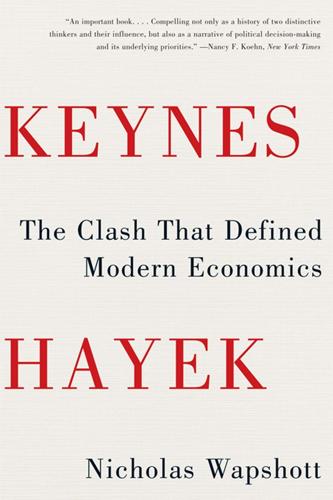
Keynes Hayek: The Clash That Defined Modern Economics
by
Nicholas Wapshott
Published 10 Oct 2011
By the end of his presidency, Ike had spent more on defense than Roosevelt spent on winning World War II. For all that, there was a trace of Hayekian thinking in Eisenhower’s farewell address that warned against corporatism, or private companies conspiring with government. Eisenhower’s remorse was that his administration’s vast spending on arms had led to “the military-industrial complex.”37 “We must never let the weight of this combination endanger our liberties or democratic processes,”38 he warned. What was best remembered of the 1950s, however, was the endless prosperity that spread across America. It was a perfect reward for “the greatest generation” for winning the war against fascism.
…
D., 27 malaria, 17, 21 Malthus, Thomas, 74 Manchester Guardian, 23–27, 31 manufacturing sector, 73, 105–6, 116, 117–19, 296 marginal utility, 101 markets: —behavior of, 21, 26, 180–81, 214 —capital, 117–18 —currency, 22, 26–27, 52 —efficient, 78–80, 267–68, 269 —equilibrium of, 2, 25–26, 42–43, 57, 62, 78, 128, 140, 178–81, 243–44, 293–94 —free, 24–25, 47, 184–85, 199, 200–201, 228, 233, 243–44, 248 —global, 62, 133–37, 193, 198, 228, 267, 269, 276, 282–83 —Hayek’s views on, xiii, 16–17, 24–25, 47, 101–2, 128, 140, 178–79, 181, 184–85, 197, 199, 200–201, 208, 209, 213–14, 218–19, 224, 225, 266, 267–68, 269, 286–87, 289, 291–94 —interest rates and, 43, 55, 74, 76–77, 100 —Keynes’s views on, 24–25, 33, 34–36, 41, 47, 61–64, 84–85, 138, 151, 184–85, 199, 200–201 —knowledge of, 179–81, 257 —natural forces of, 25 —perfect competition in, 2, 69, 179–81, 268 —regulation of, 145, 180–81 —stability of, xiii–xiv, 142–43, 170, 222–23, 233, 268, 276 —stock, xiii, 40, 44, 52–53, 58, 83, 112, 141, 143–44, 149, 157, 189, 276 “market socialists,” 145 Marshall, Alfred, 2–3, 5, 20, 25–26, 31, 48, 65–66, 88, 91–92, 147, 169, 173, 232, 300n Marshallian economics, 2–3, 5, 25–26, 31, 48, 65–66, 88, 91–92, 99, 147, 169, 173, 232 Marshall Plan, 228 Marshall Society, 65–72, 75, 91, 105, 191 Martin, William McChesney, Jr., 236, 333n Marx, Karl, 69, 139, 243, 290, 304n, 307n Marxism, 17, 20, 35–36, 69, 146, 211, 266 Marxist-Leninism, 266 materialism, 219–20 mathematical models, 115, 166, 168–69 Mathematical Psychics: An Essay on the Application of Mathematics to the Moral Sciences (Edgeworth), 1–3, 40 Maurice, Frederick Barton, 69 May, George, 85–86 Mayflower Hotel, 161 Meade, James, 67, 108, 126 Means to Prosperity, The (Keynes), 133–37, 157, 238 Medicaid, 240, 273 Medicare, 240, 273, 275, 276, 277 Melchior, Carl, 9–10, 24, 302n Menger, Carl, 20, 303n Mensheviks, 9 mercantilism, 3 merchant marine, 9, 10, 12 Mexico, 272 Meyer, Eugene, 84 Michigan, University of, 240 microeconomics, 121, 174–75, 196, 231, 251, 275, 285 middle class, 272, 283 Middle East, 244, 246 “middle way,” 36, 196–97, 200 military-industrial complex, 234 military spending, 190, 231–34, 237, 241, 261, 264, 274, 276–78 Mill, John Stuart, 74 Mills, Wilbur, 240 Miners’ Federation, 38 mining industry, 9, 12, 18, 38, 149–50, 259 Ministry of Information, British, 190 minority reports, 63–64 Mises, Ludwig von, 2, 21–22, 23, 24–25, 27, 29–30, 40, 41, 42, 48, 51, 76, 145, 147, 180, 210, 211, 212, 213, 224, 232, 253, 288, 300n, 307n Mises, Margit, 51 “missing growth” theory, 236 Mitchell, Wesley Clair, 27–28 mixed-economy socialism, 145–46 monarchy, 218 Mondale, Walter, 263 monetarism, 2, 22, 41–44, 72, 78–80, 88–89, 103–7, 108, 116–17, 141–42, 177–78, 186, 248–49, 256, 259–72, 284, 286, 287–88 Monetary Theory and the Trade Cycle (Hayek), 139, 141 “Monetary Theory of Production, The” (Keynes), 132 money: —analysis of, 2, 22, 41–44, 72, 78–80, 88–89, 103–7, 108, 116–17, 141–42, 177–78, 186, 248–49, 256, 259–72, 284, 286, 287–88 —contractions of, 217, 248–49 —“easy” or low-cost, 110–11, 112, 117–18, 148–49 —flow of, 26, 33, 72–75, 79, 104–5, 131, 134–35, 136, 141–42, 144 —Hayek’s views on, 2, 22, 41–44, 72, 78–80, 88–89, 103–7, 108, 116–17, 141–42, 177–78, 256, 287–88 —hoarding of, 143–44, 281–82 —interest rates and value of, 120–21 —Keynes’s views on, 53–57, 59–60, 131, 132 —neutrality of, 116–17, 140 —printing of, 22, 25, 131, 136, 149–50, 287 —“sound,” 161 —supply of, 22, 25–26, 41–44, 50, 72–75, 78–79, 217, 236, 248–49, 259, 260–63, 284, 287 —turnover of, 105–6 —value of, 22–23, 74–75, 120–21, 161 —see also capital monopolies, 140, 158, 201, 202, 222 Montagu, Edwin, 7 Mont Pèlerin Society, 211–14, 223, 224, 247, 248, 250, 259, 269, 274 Moore, G.

A Line in the Tar Sands: Struggles for Environmental Justice
by
Tony Weis
and
Joshua Kahn Russell
Published 14 Oct 2014
Prime Minister Stephen Harper, “Canada-Tanzania Foreign Investment Promotion and Protection Agreement (FIPA),” news release, October 4, 2012, pm.gc.ca/eng/news/2012/10/04/canada-tanzania-foreign-investment-promotion-and-protection-agreement-fipa. 8. It is well documented that these tar sands products fuel the US military industrial complex. 9. Andrew Jacobs, “Harassment and Evictions Bedevil Even China’s Well-Off,” New York Times, October 27, 2011, www.nytimes.com/2011/10/28/world/asia/harassment-and-house-evictions-bedevil-even-chinas-well-off.html?_r=0. 10. Todd Gordon, Imperialist Canada (Winnipeg: Arbeiter Ring Publishing, 2010). 11. bilaterals.org and GRAIN, “Colonisation redux: New agreements, old games,” bilaterals.org, September 2007, www.bilaterals.org/?
…
See also Keystone XL pipeline “transit justice,” 307 Trans Mountain pipeline, 11, 91, 95 transnational corporations (TNCs), 23, 27, 114, 272; in United States, 30 Transport Workers Union (TWU), 220 treaties, 256, 258, 260–61 Treaty 6: 119, 123, 125, 268 Treaty 8: 114, 125, 268 treaty rights, 75, 81, 122–23, 271, 274, 277 treaty violations, 139–40, 260 tribal sovereignty, 243 Trinidad and Tobago, “extreme” tar sands extraction in, 103–4 Trumka, Richard, 218, 223–24, 225 Tutu, Archbishop Desmond, 56 Tyee, The, 60 UK Tar Sands Network (UKTSN), 207–16, 292 unemployment, 125, 233, 303, 305 Unifor, 79 Unist’ot’en people, 16, 158–59, 260, 293 United Arab Emirates (UAE), 29 United Church of Christ: Fauntroy report, 67; Toxic Wastes and Race in the United States, 67 United Kingdom: Canada House protest, 208–9; Canadian embassy in, 57; grassroots activism opposing tar sands in, 55; oil imports from, 31; opposition to tar sands in, 207–16; unbuilt wind farms in, 269 United Mine Workers of America (UMW), 218 United Nations, 42, 114, 248, 267; Convention on Biological Diversity, 121; Copenhagen ministerial negotiations (2009), 167–68, 171, 209, 310–12; Declaration on the Rights of Indigenous Peoples, 12, 122, 251, 257, 268; Green Jobs report, 302; Human Rights Committee, 114; International Covenant on Civil and Political Rights, 114; Working Towards a Balanced and Inclusive Green Economy, 300–301 United Nations Environment Programme (UNEP), 302, 353n10; Towards a Green Economy, 300 United States, 6, 42, 78; as “addicted to oil,” 181; Agency for Toxic Substances and Disease Registry, 200; Bureau of Land Management, 315; Canadian lobbying of tar sands in, 59–63; Canadian oil as part of solution to energy security in, 30; civil rights movement, 75, 251; Clean Air Act, 283; climate movement in, 167–69, 243, 311; climate policy in, 244–45, 318; domestic gas prices in, 233; Endangered Species Act, 283; Energy Information Administration, 47; energy market, 24; ENGOs in, 310; Environmental Defense Fund, 283; Environmental Protection Agency (EP A), 198, 203; fight over Keystone XL in, 78, 166–80; forced migration to, 89; guest worker programs in, 85; Indian Energy Title V campaign, 242–43; labour movement and climate change in, 217–25; military industrial complex, 336n8; National Energy Policy Development Group, 30; National Institute of Environmental Health Sciences, 202; National Transportation Safety Board (NTSB), 198–99; Natural Resources Defense Council, 175, 221, 230, 242, 283; as net exporter of refined petroleum, 314; Oil Protection Act, 199; Oil Sands Advocacy Strategy, 59; oil shale exploration and experimentation in, 100; Pipeline and Hazardous Materials Safety Administration (PHMSA), 190, 198–99, 205; refining capacity of West Coast of, 95; tribal comtar munities in, 230–31, 243, 246; unemployment in, 233 uranium, 125, 241, 315–16 Urbaniak, Darek, 59 US Public Interest Research Group, 244 Utah, 315, 325n46 Utica shale formation, 283 Valero Energy Corporation, 210, 234 Velshi, Alykhan, 50–51 Venezuela, 6, 33; Bolivarian Revolution, 101–2; “extreme” tar sands extraction in, 101–2 Vermont, 315 Victims of Chemical Valley, 144 violence: against Indigenous women, 255; against land, 96, 252, 255; increases in rates of, 255; symbolic vs. real, 44; systemic, 263 volatile organic compounds, emissions of, 32 Walpole Island Native reserve (Bkejwanong First Nation), 145, 241 “war in the woods,” 70–71 “war of position,” 39 Warren County (North Carolina), 66–67 water: diversion of, 9, 129; pollution, 9, 51, 114, 116, 119–20, 128, 136, 181, 196, 255, 268, 315; use of in extraction, 9, 32, 33, 100, 230, 281 Wawanosh, Joshua, 139 Waxman, Henry, 60, 62 Waxman-Markey climate legislation, 224 wealth accumulation, vs. environmental and social protection, 38 wealth polarization, 73 web-based resources, list of, 19 “Week of Action to Stop Tar Sands Profiteers,” 189 West, Ben, 164 Western Mining Action Network, 168 West Virginia, 314 wetland, destruction of, 9 Wet’suwet’en Nation, 157, 260, 293; C’ihlts’ehkhyu (Big Frog Clan), 158 white supremacy, 96, 265 Whitley, David, 192 Wikileaks, 56 Wildfire Project, 322n3 wildlife, declines in and threats to, 116, 120–21, 254, 295, 300 wind-powered generation, 314 Winnsboro Tree Blockade, 186–88 Wisconsin: Clean Energy Jobs Act, 61–62 women: grassroots, 192, 277; Indigenous, 193, 209, 213, 242, 246, 251–52, 255, 261–63 Wong, Kent, 97 Wood Buffalo National Park, 130 Woodward, Ron, 130 workers’ rights, 303, 306 World Bank, 90, 303 World Trade Organization, 311 Worldwatch Institute, 353n10 World Wildlife Fund, 270 xenophobia, 92–93 Yearwood Jr., Rev.

Vertical: The City From Satellites to Bunkers
by
Stephen Graham
Published 8 Nov 2016
Critics often depict satellite surveillance as being omnipotent and omniscient – a world of complete dystopian control with no limits to the transparency of the view and no possibilities for resistance or contestation.13 In suggesting, for example, that ‘the orbital weapons [and satellites] currently in play possess the traditional attributes of the divine: omnivoyance and omnipresence’, French theorist Paul Virilio radically underplays the limits, biases and subjectivities that shape the targeting of the terrestrial surface by satellites.14 Instead of invoking satellites as an absolute form of imperial vision, it is necessary, rather, to see satellite imaging as a highly biased form of visualizing or even simulating the earth’s surface rather than some objective or apolitical transmission of its ‘truth’.15 It is also, as we shall see, necessary to stress the potential that satellites have for those challenging military-industrial complexes, environmental and human rights abuses and all manner of political and state repression. Where maps are now widely understood to be subject to bias and error, satellite images are still widely assumed to present a simple, direct and truthful correlation of the earth. This occurs even when there is a long history of such images being so imperfect and uncertain – and as so manipulated, mislabelled and just plain wrong – that it necessary to be sceptical of such claims.16 us military theorists offer an excellent case study of how attempted domination of satellite sensing is being combined with long-standing metaphors about the strategic power of being above one’s enemies.
…
The reliance on a suite of digital sensors is used to perceive the world on the ground. This creates a virtual image of target registers while at the same time allowing personnel very limited direct use of their own bodily senses.38 The infrared night-time gaze of the police helicopter receives a rapturous reception among police, the military-industrial complex and sympathetic media alike. A case in point was the discovery of Dzhokhar Tsarnaev, on the run after the bombing of the Boston Marathon on 13 April 2013. Hiding beneath a boat as the entire city of Boston sheltered at home within an unprecedented martial-law lock-down,39 he was unaware that his heat signature made him entirely visible to the helicopter sensors.
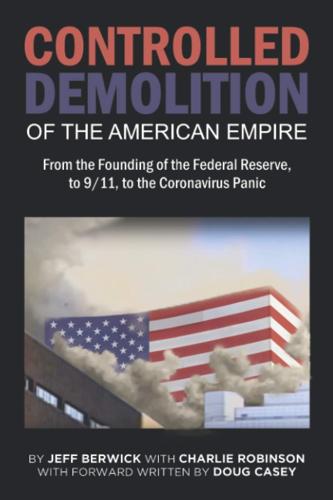
The Controlled Demolition of the American Empire
by
Jeff Berwick
and
Charlie Robinson
Published 14 Apr 2020
In a crony capitalist system, terrible companies with great connections can rise to the top, while well-run companies with no political juice dry up and blow away. The United States has been creating this paradigm over the past 40 years, and nowhere has it been more prevalent than in the warfare economy, otherwise known as the Military-Industrial complex. Smedley Butler talked about it. Eisenhower warned about it. Clearly, America was not listening. There is a very well thought out trick that the multinational conglomerates have been pulling off for a long time now, and it is fairly simple. As an example, take a large conglomerate that is interested in making a ton of money so they diversify into many different industries through acquisition.
…
The military parades were pumped nightly through the television sets and into American homes in order to scare the populace into not complaining about the arms buildup that was sucking trillions of dollars out of the United States government and into the pockets of defense contractors that continued to push the Red Curtain scare in order to keep their businesses booming. The Military-Industrial complex framed their situation to paint the picture that they wanted of a threatening country on the incline militarily. What did not make it onto the nightly news in America was the real situation that was actually happening in the USSR and that was that their empire was coming unraveled socially.
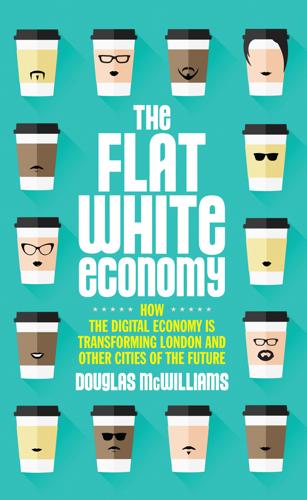
The Flat White Economy
by
Douglas McWilliams
Published 15 Feb 2015
Yet the innovation hub is growing, with more than 1,000 companies now based there, and successes such as Aerob, producing surveillance drones for the Russian Defence Ministry,13 are likely to stimulate other investment. In addition, cooling relations between the Russians and the rest of the world are likely to promote increased self-reliance which may paradoxically further help the project develop. One suspects that the project may become yet another arm of the Russian military-industrial complex rather than the international digital hub that was originally intended. Israel As an innovation hub, Israel possesses some impressive statistics. It has the highest number of patents per capita in the world, its R&D expenditure as a percentage of GDP is the highest in the world,14 and it is a world leader in information and telecommunications technology.15 The year of 2013 was certainly a vintage one – acquisitions of Israeli high-tech firms totalled $7.6 billion, including the purchase of Waze (a popular road navigation app used by almost 50 million drivers worldwide)16 by Google for nearly a $1 billion.
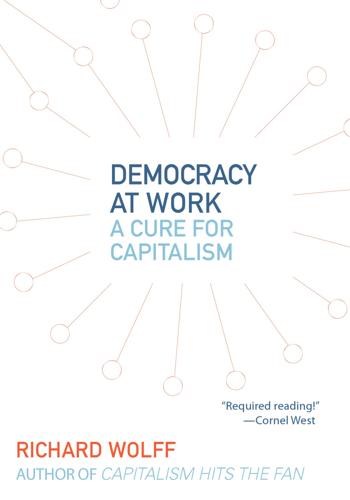
Democracy at Work: A Cure for Capitalism
by
Richard D. Wolff
Published 1 Oct 2012
However, the groups calling for less government spending always encountered a daunting problem that often enraged them and strained their political relationships: the interests of many corporations and rich people in US capitalism are served by and depend on federal supports and spending. These beneficiaries fiercely protect the federal spending they want by using their profits and personal wealth to that end. Such beneficiaries include the military-industrial complex, energy companies, transportation companies, the health care industry (a complex composed of doctors, hospitals, pharmaceutical companies, and medical insurance providers, among others), agribusiness, and many other commercial interests. Such groups also oppose cutting various kinds of social spending when they fear employees might successfully secure higher wages and salaries to offset such cuts.

The Driver in the Driverless Car: How Our Technology Choices Will Create the Future
by
Vivek Wadhwa
and
Alex Salkever
Published 2 Apr 2017
We are entering what Chris Anderson, the founder of a company called 3D Robotics, calls the “Drone Age.” Anderson was one of the early entrants in the DIY-drone surge and is one of the leading advocates of widespread drone adoption. “It’s safe to say that drones are the first technology in history where the toy industry and hobbyists are beating the military-industrial complex at its own game,” wrote Anderson in a 2012 piece in WIRED.3 This is both good and bad. Drones’ ability to travel directly to their destination on uncrowded flight paths will enable them to replace all manner of terrestrial shipping. In cities and suburbs, drones will replace delivery vehicles.
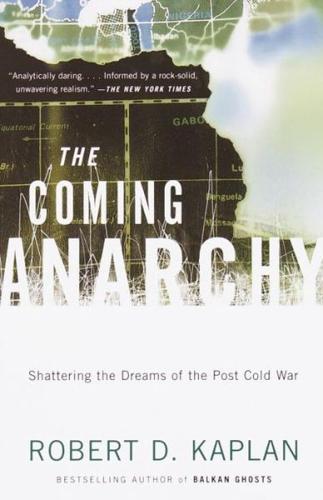
The Coming Anarchy: Shattering the Dreams of the Post Cold War
by
Robert D. Kaplan
Published 1 Jan 1994
As the size of the U.S. population and the complexity of American life spill beyond the traditional national community, creating a new world of city-states and suburbs, the distance will grow between the citizens of the new city-states and the bu reaucratic class of overseers in Washington. Those overseers will manage an elite volunteer military armed with informa tion-age weapons, in a world made chaotic by the spread of democracy and its attendant neo-authoritarian heresies. We prevented the worst excesses of a "military-industrial complex" by openly fearing it, as President Dwight Eisenhower told us to do. It may be equally wise to fear a high-tech military complex today. Precisely because the technological future in North Amer ica will provide so much market and individual freedom, this productive anarchy will require the supervision of tyrannies— or else there will be no justice for anyone.
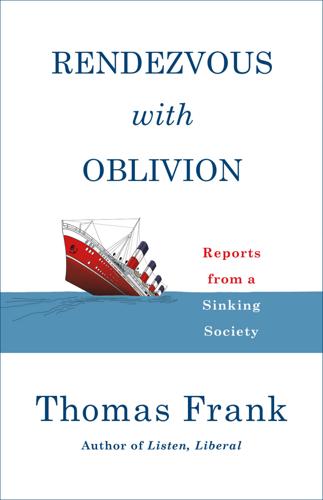
Rendezvous With Oblivion: Reports From a Sinking Society
by
Thomas Frank
Published 18 Jun 2018
In the speeches I watched, Trump would sometimes embellish this vision with another favorite left-wing idea: under his leadership, the government would “start competitive bidding in the drug industry.” (“We don’t competitively bid!” he marveled—a true fact, a legendary boondoggle brought to you by the George W. Bush administration.) Trump extended the critique to the military-industrial complex, describing how the government is forced to buy lousy but expensive airplanes thanks to the power of industry lobbyists. Thus did he hint at his curious selling proposition: because he is personally so wealthy, a fact about which he loves to boast, Trump himself is unaffected by business lobbyists and donations.
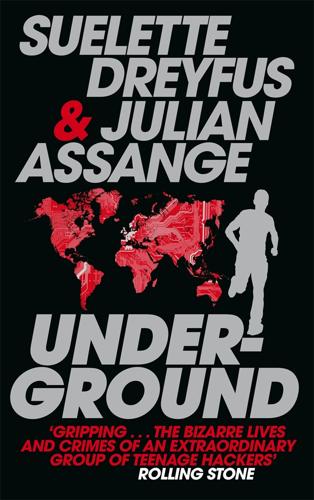
Underground
by
Suelette Dreyfus
Published 1 Jan 2011
They shared a healthy disrespect for authority. Not just the authority of places they hacked into, like the US Naval Research Laboratories or NASA, but the authority of The Realm. When it came to politics, they both leaned to the left. However, their interest tended more toward anarchy – opposing symbols of the military-industrial complex – than to joining a political party. After their expulsion from The Realm, Electron had been a little isolated for a time. The tragedy of his personal life had contributed to the isolation. At the age of eight, he had seen his mother die of lung cancer. He hadn’t witnessed the worst parts of her dying over two years, as she had spent some time in a German cancer clinic hoping for a reprieve.
…
Using Sycophant, they essentially forced a cluster of Unix machines in a computer network to attack the entire Internet en masse. And that was just the start of what they were into. They had been in so many sites they often couldn’t remember if they had actually hacked a particular computer. The places they could recall read like a Who’s Who of the American military-industrial complex. The US Airforce 7th Command Group Headquarters in the Pentagon. Stanford Research Institute in California. Naval Surface Warfare Center in Virginia. Lockheed Martin’s Tactical Aircraft Systems Air Force Plant in Texas. Unisys Corporation in Blue Bell, Pennsylvania. Goddard Space Flight Center, NASA.

Cities Under Siege: The New Military Urbanism
by
Stephen Graham
Published 30 Oct 2009
Without debate, the British Parliament signed off on the policy on 22 January 2005.122 PERMANENT WAR ECONOMIES Clearly, Israel no longer has reason to fear war.123 As this chapter has demonstrated, integration is underway between the security–industrial complexes and the military–industrial complexes of Israel and the United States. Even more than this, the emerging security–military–industrial complexes of the two nations are becoming umbilically connected, so much so that it might now be reasonable to consider them as a single diversified, transnational entity. Fuelled by the two states’ similar ideologies of permanent war – within the infinitely flexible and extensible notions of counterterror war – the processes of exemplification, experimentation, imitation and justification are, in turn, further consolidating the permanent war economies of Israel and the US.

America Right or Wrong: An Anatomy of American Nationalism
by
Anatol Lieven
Published 3 May 2010
The period during which the memories of Vietnam were suspended was not very long—but it was long enough to get America into Iraq.51 The figure of Ronald Reagan is critical to an understanding of how America dealt with the legacy of Vietnam and the consequences for America today and in future.52 On one hand, Reagan's external policy demonstrated that he and most of 57 AMERICA RIGHT OR WRONG his administration were determined not to get involved in any major conflict, and realized full well how bitterly unpopular a serious war would be with a majority of Americans. The common left-wing image of Reagan as a warmonger is therefore quite wrong.53 The Reagan administration conforms to a key feature of the American security elites and military-industrial complex examined in Chapter 5: namely that they tend to be "militarist, but not bellicose." In Reagan's rhetoric, however, the "Great Communicator" was a superb restorer of the founding myths of American nationalism, so badly tarnished by Vietnam; and this was without question because he believed them to the full himself, particularly regarding his belief in American innocence, American beneficence and America as the heartland of human freedom and progress.
…
They are an example both of the degree to which even centrist Americans can become the captive of nationalist emotions and of a nationalist insistence that the only acceptable criticism of America is by Americans.84 At the time of the Iraq War, not just extremist publications like the Washington Times, but the Washington Post and New York Times became vehicles for "a wellorchestrated campaign of innuendoes, distortions and lies aimed not only at discrediting French arguments but France itself."85 Articles accused France of harboring fugitive Ba'ath officials, possessing banned stocks of biological weapons and supplying Iraq with weapons—all charges which were later admitted to be completely groundless.86 Militarist But Not Bellicose If the U.S. population and its representatives harbor strong traditions of instinctive bellicosity but are not imperialist, since the Vietnam War at least much of the American military-industrial complex and the institutes and academics associ168 THE LEGACY OF THE COLD WAR ated with it might be described as imperialist and militarist but not bellicose. As Stanley Hoffmann wrote (in a review of Garry Wills's biography of Reagan): "[Reagan's] domestic program precluded activism abroad, as [Alexander] Haig discovered with dismay.
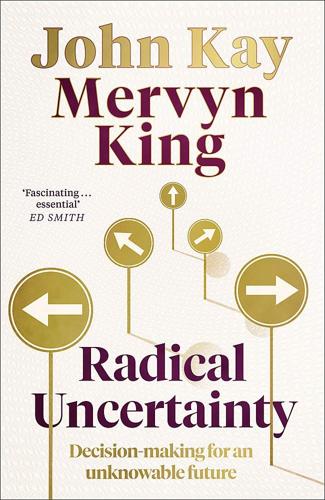
Radical Uncertainty: Decision-Making for an Unknowable Future
by
Mervyn King
and
John Kay
Published 5 Mar 2020
The result was a presidency of eight years of peace and economic growth. Even when an armistice in Korea was concluded, few anticipated that the Cold War would remain cold for another thirty-six years. And in his valedictory address as President, Eisenhower would be the unexpected issuer of a prescient warning against the growing power of the military-industrial complex. Protecting the reference narrative The value of challenging narratives is not simply to find the best possible explanation of what is going on. It is to test the weaknesses of proposed plans of action, and to secure robustness and resilience. Eisenhower led the Allied armies which invaded France in June 1944 in the largest and most meticulously planned logistical operation in history.
…
Kung Bushmen, 216 , 217 , 325 Lampert, Eddie, 287–9 , 292 Lampson, Butler, 28 Landon, Alf, 240 , 390 Laplace, Pierre-Simon, 70 , 199 Lascaux cave paintings, 216 law: civil law and common law jurisdictions, 205–6 , 213–14 ; ‘eat what you kill’ policies, 409 ; legal reasoning, 194–5 , 196–8 , 205–7 , 210–14 , 410 , 415 , 416 ; presumption of innocence, 210 ; and probabilistic reasoning, 196 , 197 , 198–203 , 206–7 , 210–12 , 214 ; ‘the prosecutor’s fallacy’, 201–2 , 203 ; ‘reasonable doubt’ concept, 198 , 201 , 205–6 , 211–12 ; and ‘rodeo problem’, 206–7 ; search for ‘best explanation’, 211–14 ; and statistical discrimination, 207–8 Lawson, Nigel, 291 Leamer, Edward, 100 Leamon, Nathan, The Test , 268 Lee, General Robert E., 188 Leeson, Nick, 411 Lehman Brothers, failure of (2008), 5 , 36 , 158–9 , 267 , 410–11 , 412 Leonardo da Vinci, 219 , 421 , 428 LeRoy, Stephen, 74 , 78 Let’s Make a Deal (US quiz show), 62–3 , 65 , 69 Lewis, Michael, 135 , 215 ; The Undoing Project , 121 , 393–4 Libet, Benjamin, 171 LIBOR scandal, 192 Libratus (poker-playing computer), 263 life expectancy, 43 , 56 , 57 , 161 , 232–3 Lincoln, Abraham, 266 , 269 , 290 Literary Digest , 240 , 390 Livy (Roman historian), 54 , 186 , 187 Lloyds Bank, 325 Lloyd’s of London, 55–6 , 322–4 , 325 , 326 Loch Ness monster, 325 , 326 Loewenstein, George, 128–9 , 135 , 310 London School of Economics, 339 , 382–3 Long Term Capital Management, 153 , 309 Louis XIV, King of France, 411 Lucas, Robert, 36 , 92 , 93 , 338–9 , 341 , 345 , 346 , 348 , 354 Maa-speaking people of East Africa, 160–1 , 189 MacArthur, Douglas, 292–3 , 420 Macartney, Lord, 419 Mackay, Charles, Extraordinary Popular Delusions and the Madness of Crowds , 315 Malthus, Thomas, 253 , 358–61 , 362–3 Mandelbrot, Benoit, 238 Manhattan grid plan, 424–5 Manville, Brook, 374 Mao Tse-tung, 4–5 , 292 Markowitz, Harry, 307 , 308 , 309–10 , 318 , 320 , 332 , 333 , 366 Márquez, Gabriel García, 226 Marshall, Alfred, 276 , 381 , 382 Marshall, Barry, 284 , 306 Marshall, George, 292 Marxism, 220 Mary Celeste mystery (1872), 33–4 , 44 Mary Poppins (film, 1964), 306 mathematical reasoning, xiv , 12 , 19 , 42–3 , 47 , 53–4 , 93 , 343 , 401 , 404–5 ; appropriate use of, 383 ; fixed point theorems, 254 ; fractal geometry, 238–9 ; ‘grand auction’ of Arrow and Debreu, 343–5 ; and historical narratives, 188 ; small world applications of, 175–6 Matsushita, Konosuke, 410 Mauss, Marcel, The Gift (1925), 190–1 Max Planck Institute, Berlin, 152 maximising behaviour, xiv , 258 , 381–2 ; ‘ambiguity aversion’ concept, 135 ; and evolutionary rationality, 157 , 158 , 166–7 ; and greed, 127–8 , 409 ; limits to, xiv–xv , 41–4 , 152 , 171–2 , 310 , 345 , 382 , 400–1 , 435–44 ; maximising expected utility, 108 , 111–14 , 115–18 , 129–30 , 400 ; and utilitarian theory, 110–11 Maxwell, Robert, 312 , 313 May, Robert, 375 Maynard, John, 156 McHugh, Dodd, 425 McLaren racing team, 391 McNamara, Robert, 281–2 , 298–300 McRaven, Admiral William, 298 Meadow, Professor Sir Roy, 197–8 , 200 , 201 medicine, 22 , 32 , 39–40 , 88–9 , 383 , 384 , 387 ; computer technologies, 185–6 ; doctors’ decision-making, 184–6 , 194 , 398–9 ; HIV infections, 375–6 ; infectious diseases, 282–3 , 285 ; puerperal fever, 282–3 , 306 ; ‘randomised controlled trials’ (RCTs), 243–5 ; screening for cancer, 66–7 , 206 ; stomach ulcers, 284 , 306 ; twentieth century improvements, 57 ; and uncertainty, 44–5 mercantilism, 249 Mercier, Hugo, 162 , 272 , 415 Méré, Chevalier de, 53 , 59 , 60 , 61 Merton, Robert C., 309 Merton, Robert K., 35–6 , 309 MESSENGER (NASA probe), 18–19 , 26 , 35 , 218 , 394 meteorology, 23 , 43 , 101–2 , 406 Michelangelo, 421 , 428 Michelson, Albert, 430 Microsoft, 29 , 30–1 migration, 369–70 , 372 ; European to USA, 427 military campaigns and strategy, 3–4 , 24–6 , 292–3 , 294–5 , 298–300 , 412–13 , 433 military-industrial complex, 294 Mill, John Stuart, 110 , 429–30 ; System of Logic (1843), 70 Miller, Arthur, Death of a Salesman , 220 Ming emperors, 419 Mintzberg, Henry, 296 , 410 Mirowski, Philip, 388 MMR triple vaccine, 394 mobile phones, 30–1 , 38–9 , 257 , 344 models: appropriate use of, 376–7 ; of Canadian fisheries, 368–9 , 370 , 371–2 , 423 ; consulting firms, 180 , 182–3 , 275–6 , 365 , 370–1 , 405 ; EU migration models, 370 , 372 ; invented numbers in, 320 , 363–4 , 365 , 371 , 373 , 404 , 405 , 423 ; maps as not the territory, 391–4 ; microeconomic research, 382 , 392 ; misuse/abuse of, 312–13 , 320 , 368–76 , 405 ; at NASA, 373–4 , 391–2 ; policy-based evidence, 370–1 , 373–4 , 405 , 412–13 ; and public consultation, 372 ; reproduction of large/real-world, 390–2 ; role of incentives/targets, 409 ; stationarity as assumed, 333 , 339 , 340–1 , 349 , 350 , 366–7 , 371–2 ; as tools, 384–6 ; transport modelling, 363–5 , 370 , 371 , 372 , 396 , 404 , 407 ; WebTAG, 363–4 , 365 , 371 , 404 , 407 ; WHO HIV model, 375–6 ; see also economic models; small world models Moivre, Abraham de, 57–8 , 233 money supply, 96 Moneyball (film, 2011), 273 MONIAC (Monetary National Income Analogue Computer) machine, 339 ‘Monte Carlo simulations’, 365 Montgomery, Bernard Law, 293 Moore, Dudley, 97 Morgenstern, Oskar, 111 , 133 , 435–7 Moses, Robert, 425 Mourinho, José, 265 Mrs White’s Chocolate House (St James’s), 55 Murray, Bill, 419 Musk, Elon, 128 , 130 , 307 Mussabini, Sam, 273 mutualisation: in insurance markets, 325–6 ; and !

The Rise and Fall of the Neoliberal Order: America and the World in the Free Market Era
by
Gary Gerstle
Published 14 Oct 2022
As an adult, Rothbard repudiated his leftist upbringing, making himself a disciple of von Mises (and for a brief period one of Rand’s as well, before he fell out with her) and a relentless advocate for establishing a market economy free of government meddling of any sort. Rothbard became a self-proclaimed libertarian, a diehard opponent of the organized economy and military-industrial complex that the New Deal order and the Cold War had spawned, and an architect (in the 1970s) of the Koch brothers–supported Cato Institute. His chief aim was to shrink to Lilliputian size the American Leviathan that had made possible the New Deal order. Only then would America’s great tradition of liberty, forced by the New Deal to gasp for air, revive.64 In the 1960s, Rothbard found interlocuters in the ranks of the New Left who shared his antipathy to the centralized state both for its alleged role in allowing corporations to dominate economic policy and for the military adventurism that both the New Left and the libertarian New Right saw as a product of the country’s military-industrial complex.
…
Only then would America’s great tradition of liberty, forced by the New Deal to gasp for air, revive.64 In the 1960s, Rothbard found interlocuters in the ranks of the New Left who shared his antipathy to the centralized state both for its alleged role in allowing corporations to dominate economic policy and for the military adventurism that both the New Left and the libertarian New Right saw as a product of the country’s military-industrial complex. He persuaded only a few New Leftists to write for his journal before it folded in 1968. But one of these New Right-New Left collaborations endured: a book that Rothbard coedited with then New Leftist Ronald Radosh, A New History of Leviathan: Essays on the Rise of the American Corporate State.65 In this book, published by a large commercial house in 1972, Rothbard and Radosh brought together a glittering constellation of first-generation New Left scholars—William Appleman Williams, Martin Sklar, and James Gilbert among them—with Rothbard-style libertarians.

As Gods: A Moral History of the Genetic Age
by
Matthew Cobb
Published 15 Nov 2022
For Time, science was ‘at the apogee of its power for good or evil’. A mere twelve months later the balance seemed to have shifted towards the negative. In January 1961, as President Eisenhower handed over power to his successor, John F. Kennedy, the old soldier broadcast to the nation, alerting the American people to the growing influence of the military-industrial complex, criticising the links between science and government, and predicting that ‘public policy could itself become the captive of a scientific-technological elite’. Eisenhower’s gnomic warning – soon amplified by fears of nuclear annihilation during the Cuban Missile Crisis of October 1962 – connected to a slow growth in pessimism about science that was taking place across Western societies.12 These doubts and suspicions were principally driven by the menace of nuclear weapons, and focused not only on the immediate threat of thermonuclear annihilation, but also on the danger of radioactive fallout from nuclear tests that was increasingly recognised as a potential trigger for a possible epidemic of cancers and mutations.
…
We’re here to educate them.’4 For some of those protestors, power came from the end of a test tube. One key event took place on 4 March 1969 when scientists and students at the Massachusetts Institute of Technology (MIT) organised a day-long research strike in protest against the growing power of the military-industrial complex. One MIT group released a statement highlighting the areas in which science posed an existential threat to humanity: nuclear weapons, pollution-induced climate, ecological changes and genetic manipulation. One MIT debate, which involved students and academics from all the neighbouring institutions, discussed the lessons to be learned from the failure of the nuclear scientists in the 1940s to prevent the use of the atomic bomb.5 The overwhelming view of the protestors was that such a mistake should not be repeated – scientists should act.
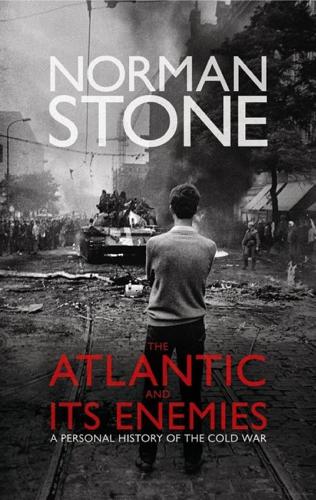
The Atlantic and Its Enemies: A History of the Cold War
by
Norman Stone
Published 15 Feb 2010
It was to be small, and would not operate independently of NATO; in any case in 1953, even before the treaty was to be ratified, the Americans had adopted a new strategic doctrine, that of enormous nuclear response to a Soviet attack, such that any European Defence Force (EDF) would only be of trivial importance. On the other hand, the EDF would be supported by a proto-government with four ministries and a great deal of money to spend on armaments - a European ‘military-industrial complex’ as President Eisenhower later called the American version. The foreign ministers of the six ECSC nations initialled this treaty in May 1952. The French socialists insisted on the EDC’s having a political supervisory body, and negotiations started for a European Political Community out of that, with the same paraphernalia as the ECSC.
…
All of this had military overtones, to do with German rearmament, and Eisenhower himself had had considerable, often very unpleasant, experience of what that might mean. In fact the old general was now quite seriously minded to enter history as the man who had done most to stop nuclear destruction. True, Eisenhower played the golfing old buffer, and his wife was plain cooking. But he saw well enough what was going on, and produced a line, ‘the military-industrial complex’, that summed up the realities of warfare and militarized economics better than ever Norman Mailer did. Might he not decide that Berlin was not worth a fight? Oddly enough, it was the French who were most firmly in favour of defending Germany, their new associate in Europe. To exploit the differences, in May 1959 Khrushchev agreed to drop his ultimatum in return for a general conference at Geneva, scene of the earlier and quite satisfactory conference that had settled the French war in Indo-China.
…
EDC (European Defence Community) Eden, Anthony, 1st Earl of Avon Eden, Clarissa, Countess of Avon EDF (European Defence Force) Edwardes, Sir Michael EEC see European Economic Community Egypt: Aswan Dam British and French rule Camp David accords (1978) Copts coup of 1952 foreign aid Greek minority under Nasser Six Day War (1967) Soviet support Suez crisis union with Syria Yom Kippur War (1973) Ehrlich, Paul, The Population Bomb Ehrlichman, John Eichengreen, Barry Einstein, Albert Eisenhower, Dwight D.: character and China and Cuba election as President and establishment of NATO on European military-industrial complex and German rearmament and Guatemala and Khrushchev and Korean War popularity second term and Suez crisis Eisenhower, Mamie Eisler, Gerhart Eisler, Hanns Elizabeth, Queen Ellsberg, Daniel Eltis, Walter Britain’s Economic Problem emigration: British Chinese Irish Jewish Turkish ‘guest workers’ in Germany Emminger, Otmar Encounter (magazine) Ensslin, Gudrun Enver Pasha Enzensberger, Hans-Magnus EPU (European Payments Union) Erasmus, Desiderius Erbakan, Necmettin Erfurt Erhard, Ludwig ERM see Exchange Rate Mechanism ERP (European Recovery Program) see Marshall Plan Erzurum Escoffier, Auguste Eskişehir espionage see spies Essen Esso (oil company) Estonia Ethiopia Étiemble EU see European Union eugenics Euphrates river Euratom (European Atomic Community) euro (currency) eurodollars European Atomic Community (Euratom) European Coal and Steel Community (ECSC) European Commission European Community (EC) see also European Economic Community; European Union European Council of Ministers European Court of Human Rights European Court of Justice European Defence Community (EDC) European Defence Force (EDF) European Economic Community (EEC; Common Market) British membership Common Agricultural Policy (CAP) Luxemburg Compromise Single European Act Turkey’s proposed membership see also European Community; European Union European Exchange Rate Mechanism (ERM) European Free Trade Association European Monetary Cooperation Fund European Monetary System European Parliament European Payments Union (EPU) European Recovery Program see Marshall Plan European Union (EU) see also European Community; European Economic Community Evian accords (1962) Evren, Kenan Exchange Rate Mechanism (European; ERM) Exxon (oil company) Fahd, Prince Fairbank, John K.
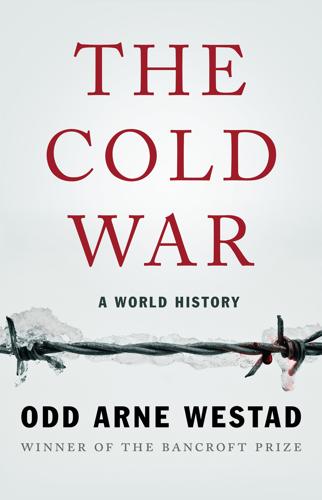
The Cold War: A World History
by
Odd Arne Westad
Published 4 Sep 2017
We annually spend on military security more than the net income of all United States corporations. This conjunction of an immense military establishment and a large arms industry is new in the American experience.… We must guard against the acquisition of unwarranted influence, whether sought or unsought, by the military-industrial complex. The potential for the disastrous rise of misplaced power exists and will persist.1 The legacy Eisenhower bequeathed to his successor was therefore a troubled one. The young president-elect, John F. Kennedy, struggled with contingencies left over from the last administration and those created by a rapidly changing world even before he took office in January 1961.
…
The threat of nuclear war was ever more immediate, especially as both sides were developing new, lighter, and more easily targetable weapons. And there was the rhetoric, which by 1982–83 had reached fever pitch. Reagan spoke of the USSR as “the focus of evil in the modern world.” The Soviets spoke of Reagan as the new Hitler. “Reagan’s vulgar speeches show the true face of the military-industrial complex. They have long sought such a figure. Now, they have finally found it in the form of Reagan,” said Iurii Andropov, who after Brezhnev’s death in 1982 replaced him as Soviet leader.1 The Cold War in the early 1980s was very perilous, probably more so than at any other time since the Cuban missile crisis of 1962.
…
S., 281 Mensheviks, 23, 24 Mexico, 21, 344, 360, 572–573 Michael (Romanian king), 82 Middle East, 449–473 anticolonial movements, 24 decolonization, 153, 271–274 Iran-Iraq, 565 Islamists in 1980s and 1990s, 576–578 Korean War, reaction to, 177–178 oil, 268–269 post-WWII, 131, 153–156 secular and religious political conflict, 450–451 Soviet Union and, 487 Middle East war (1967), 459–461 MiG-15 fighter jets, 178 Mihailovic, Draža Mikolajczyk, Stanislaw, 85 Mikoyan, Anastas, 300–301, 304 militarization of society, in Communist states, 190 military bases, US network of, 267 military-industrial complex, 288 military regimes, in Latin America, 350, 357–358, 361–363 Miloševic, Slobodan, 607 Miłosz, Czesław, 84 minorities, Chinese handling of, 240–241, 253 MIRVs, 420 Mitterand, François, 519–520, 547, 589, 593–594 Mobutu Sese Seko, 483, 565 modernity, 8–9, 33, 190, 234 modernization, Asian revolutions and, 129–130, 132 Mollet, Guy, 273 Molotov, Viacheslav, 61, 63–64, 68, 88, 94, 124, 194, 198, 206 Molotov-Ribbentrop Pact, 543 monetarism, 526 monetary union, European, 593 Mongolia, 253 Monnet, Jean, 215–216 Montoneros, 354, 361 Moro, Aldo, 520 Moscow Helsinki Group, 514 Moscow Olympics, 496 Mossadegh, Mohammed, 268–269, 273, 492 Most Favored Nation trading status, 476 Movimiento de Izquierda Revolucionaria (MIR), 348 Moynihan, Daniel Patrick, 417 Mozambique, 338, 482, 554 Mugabe, Robert, 566 mujahedin, 498, 532, 533, 539, 548–549, 576–577 Müller, Hermann, 37 Multi-Lateral Force (MLF), 214 Munich Olympics, killing at, 468 Münzenberg, Willi, 279 Muslim Brotherhood, 453, 471, 576 Mussolini, Benito, 36, 38 Mutual Defense Assistance Agreement, 427 Nagasaki, 6, 134 Nagorno-Karabakh, 582 Nagy, Imre, 197, 203–205, 585–586 Najibullah, 577 Nakasone Yasuhiro, 561 Namibia, 566–569 Nasakom, 327 Nasser, Gamal Abdel, 428 background of, 453 at Bandung Conference, 271 death, 463 Lumumba and, 283 meeting with Khrushchev, 457 Middle East war (1967), 460–461 Palestine and, 452–453, 459 Pan-Arabism, 453 Soviet Union and, 453–454, 457–458 Suez crisis, 272–274 Third World engagements, 459 War of Attrition, 461 National Front for the Liberation of Angola (FNLA), 483 National Liberation Front Algeria, 276–278, 284, 324–325 Greece, 75 Vietnam, 317–318, 322, 331–332, 334, 479–480 Yemen, 470 National Salvation Junta (Portugal), 482 National Security Agency (NSA), 105–106 National Security Council (NSC), 105, 401 National Society for the Rapid Realization of Korean Independence, 163 National Traitor Act (Korea), 166 National Union for the Total Independence of Angola (UNITA), 483, 532–533, 567 nationalities, Chinese handling of, 240–241 nationalization of property/industry, 236, 284, 300, 498 Nationalsozialistische Deutsche Arbeiterpartei (NSDAP), 27 NATO.

Capitalism 3.0: A Guide to Reclaiming the Commons
by
Peter Barnes
Published 29 Sep 2006
Like any tax, a pollution tax takes money 42 | THE PROBLEM out of private pockets and turns it over to the state. It’s then up to politicians to decide what to do with it. It’s possible that politicians will use the money fairly and wisely, but there are no guarantees. If recent history is any guide, they’ll use much of it to expand the military-industrial complex and lower taxes on campaign donors. There’s another, more fundamental reason why taxes are a poor tool for guarding nature. It’s not higher pollution prices we want; what we actually want is less pollution. Taxes are at best a roundabout way to get there. We assume that if we raise pollution prices, pollution will come down.

Company: A Short History of a Revolutionary Idea
by
John Micklethwait
and
Adrian Wooldridge
Published 4 Mar 2003
In America, big government remained an important ally of big business, frequently drafting businesspeople (United States secretaries of defense included Neil McElroy, the P&G memo writer who later became the firm’s boss; Charles Wilson, Sloan’s successor at GM; and Bob McNamara from Ford). The Cold War saw the creation of what Dwight Eisenhower dubbed “the military industrial complex.” Some of the biggest companies in the country—such as “the Generals”—relied heavily on the Pentagon. Even smaller companies sent lobbyists to Washington to drum up contracts and shape regulation. Nevertheless, the government remained a customer, a policeman, and an ally, not an owner. That was not the case in Western Europe, where postwar governments systematically nationalized companies that controlled the “commanding heights” of the economy: heavy industry, communications, infrastructure.

Another Great Day at Sea: Life Aboard the USS George H.W. Bush
by
Geoff Dyer
Published 19 May 2014
‘That might have been the guy who was hit in the face with a beer bottle when we were in Jebel Ali, so that’s a different story.’ ‘Ah.’ ‘In terms of accidents what happens here is pretty much what you’d expect from an industrial environment.’ This was not the first time that I’d heard the carrier described as ‘an industrial environment’. In my teens the phrase ‘military-industrial complex’ used to come up quite a bit, and I suppose, strictly speaking, we were in a military-industrial environment, but the thing that struck me now was that I had never wanted to spend even a minute in an industrial environment (they are noisy, greasy, dangerous places) and yet I had signed up for this, a place that was also unusually vulnerable to infections and outbreaks (which, in my normal life, I am at pains to avoid).

Why Women Have Better Sex Under Socialism: And Other Arguments for Economic Independence
by
Kristen R. Ghodsee
Published 20 Nov 2018
.… So communism was killed, and along with it went any discussion of socialism and Marxism. This was the world of my childhood and adolescence, full of establishment progressives who were aggressively centrist and just as willing as conservatives to privilege the interests of capital over those of labor: think of the reckless expansion of so-called free trade, or the brutal military-industrial complex. For most of my life, I would have been hard-pressed to define capitalism, because in the news and in my textbooks, no other ways of organizing an economy were even acknowledged. I didn’t know that there could be an alternative.9 Mead argued that millennials embrace socialism because they are “tired of the unequal world they inherited.”

The Passenger
by
AA.VV.
Published 23 May 2022
Maude’s is the only yellow umbrella in a sea of black. Filmed in towns in gorgeous Northern California and in San Francisco, it is the story of a young, privileged, deadened white male’s awakening to a life outside the artificial constructs of Freudian psychology, church indoctrination, and the military-industrial complex. Maude is a Holocaust survivor who lives in a train car surrounded by her art and musical instruments, and during the many hilarious adventures she takes Harold on, she points out dark ironic truths. While the 2014 film Echo Park (Amanda Marsalis) is an LA love story within close-up gentrification, the Academy Award winner Crash (Paul Haggis, 2004) connects synchronous events between races, cultures, and their interwoven prejudices, and the 1974 classic Chinatown (Roman Polanski) exposes the corruption on which the city of Los Angeles was built, Harold and Maude encompasses the broader themes of a landscape such as California.

War Is a Force That Gives Us Meaning
by
Chris Hedges
Published 31 Aug 2002
By then these soldiers often have been discarded, left as broken men in a civilian society that does not understand them and does not want to understand them. Once violence on this scale is unleashed it usually continues to plague societies. The civil war in El Salvador, as in many African states, has left the country beset by violent crime and dominated by armed militias and gangs. We are hostage to a vast and powerful military-industrial complex that exports more weapons than all other nations combined. I knew a Muslim soldier, a father, who fought on the front lines around Sarajveo. His unit, in one of the rare attempts to take back a few streets controlled by the Serbs, pushed across Serb lines. They did not get very far. The fighting was intense.

Survival of the Richest: Escape Fantasies of the Tech Billionaires
by
Douglas Rushkoff
Published 7 Sep 2022
Yet we need to be able to critique the increasingly dominant technocratic paradigm and its deterministic approach to progress at scale, without fear of triggering the brilliant men who are trying in good faith to deploy it. It wasn’t some regressive woke hippie but President Eisenhower who first warned America of the risks posed by the tech industry. His 1961 farewell address is remembered for naming the military industrial complex, but his deeper fear was of technocracy: “Yet in holding scientific discovery in respect, as we should, we must also be alert to the equal and opposite danger that public policy could itself become the captive of a scientific–technological elite.” Feminist and racial critiques have also revealed the blind spots and biases of a tech paradigm developed by a white male elite.

The Relentless Revolution: A History of Capitalism
by
Joyce Appleby
Published 22 Dec 2009
The government did the heavy lifting, and in time companies like International Business Machines found commercial uses for much of this research. The American Telephone and Telegraph Company ran its own Bell Laboratories, and pharmaceutical companies also maintained first-rate research facilities of their own.28 Three days before he left office, President Dwight Eisenhower warned about the dangers of something he dubbed a military-industrial complex. Calling attention to the permanent war footing of the country and the vastly more complicated weaponry involved, he asked Americans to be alert to “the equal and opposite danger that public policy could itself become the captive of a scientific, technological elite.” After noting that the United States annually spent more on military security than the net income of all U.S. corporations, Eisenhower urged “the proper meshing of the huge industrial and military machinery of defense with our peaceful methods and goals, so that security and liberty might prosper together.29 Only the catchphrase “military-industrial complex” caught on; the warning went pretty much unnoticed.
…
After noting that the United States annually spent more on military security than the net income of all U.S. corporations, Eisenhower urged “the proper meshing of the huge industrial and military machinery of defense with our peaceful methods and goals, so that security and liberty might prosper together.29 Only the catchphrase “military-industrial complex” caught on; the warning went pretty much unnoticed. Those corporations that benefited from the government’s largess formed themselves into a powerful lobby to ward off any cuts in the Defense Department budget. Eventually American military spending surpassed the total military expenditures of all other nations.

Who Stole the American Dream?
by
Hedrick Smith
Published 10 Sep 2012
As former Nixon political strategist Kevin Phillips put it, Wall Street “hijacked” the U.S. economy for its own profit, causing a “perilous overconcentration” of economic power. In terms of political power, Wall Street has no peer. Over the past two decades, the bankers portrayed by Tom Wolfe in Bonfire of the Vanities as arrogant “Masters of the Universe” have been even more successful than the leaders of other sectors of business, such as oil or the military-industrial complex or the pharmaceutical industry, in influencing Washington to adopt their agenda. They have lobbied successfully to overturn New Deal–era laws and time-tested government regulations. They have won several government bailouts in one financial crisis after another, culminating in the collapse of 2008.
…
Eisenhower’s Warning Six decades ago, at the height of the Cold War with the Soviet Union, President Dwight Eisenhower warned of precisely that danger—the danger that the United States, by overspending on defense, would damage its domestic economy, its engine of growth. Eisenhower, who is remembered for his parting admonition about the excessive political power of the military-industrial complex, had worried earlier in his presidency that the United States was becoming so obsessed with the Soviet threat and its urge to build a network of overseas bases that it risked undermining the nation’s long-term economic security. As Eisenhower put it: “To amass military power without regard to our economic capacity would be to defend ourselves against one kind of disaster by inviting another.”
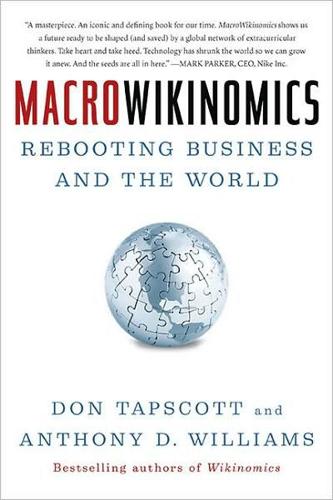
MacroWikinomics: Rebooting Business and the World
by
Don Tapscott
and
Anthony D. Williams
Published 28 Sep 2010
Oft-cited examples include the retooling of American automobile factories to build 300,000 aircraft during World War II and the 47,000 miles of interstate highways built over thirty-five years and seven administrations. But these instances of transformation were arguably only possible in a world that no longer exists, except perhaps in places like China. Both the Interstate Highway System and the military-industrial complex grew out of industrial age thinking and institutions. Factors that were present then—like an overriding sense of common purpose, a singular objective, and authoritative command and control leadership from business and government—are lacking today. Even if they were sufficiently present, they wouldn’t work in a world where the knowledge, authority, and capability to move rapidly to clean energy sources is widely dispersed in society.
…
Oft-cited examples include the retooling of American automobile factories to build 300,000 aircraft during World War II and the 47,000 miles of interstate highways built over 35 years and 7 administrations. But these instances of transformation were arguably only possible in a world that no longer exists. Both the Interstate Highways System and the military-industrial complex grew out industrial age thinking and institutions. Factors that were present then—like an overriding sense of common purpose, a singular objective, and authoritative command and control leadership from business and government—are lacking today. Even if they were sufficiently present (they’re not), they wouldn’t work in a world where the knowledge, authority, and capability to reindustrialize everything is widely dispersed in society. 23.
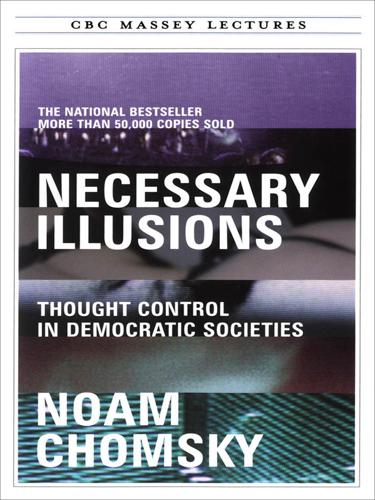
Necessary Illusions
by
Noam Chomsky
Published 1 Sep 1995
The new journalism is accompanied by “an often mindless readiness to seek out conflict, to believe the worst of the government or of authority in general, and on that basis to divide up the actors on any issue into the ‘good’ and the ’bad’.” The “bad” actors included the U.S. forces in Vietnam, the “military-industrial complex,” the CIA and the U.S. government generally; and the “good,” in the eyes of the media, were presumably the Communists, who, the study alleged, were consistently overpraised and protected. The study envisioned “a continuation of the current volatile styles, always with the dark possibility that, if the managers do not themselves take action, then outsiders—the courts, the Federal Communications Commission, or Congress—will seek to apply remedies of their own.”
…
As Gorbachev stepped onto American soil at the Washington airport before the TV cameras, CBS anchorman Dan Rather commented that Gorbachev will focus on arms reduction, but “Reagan will press the Soviet Union on broader issues such as human rights, Afghanistan, and Nicaragua.”40 Few were so gauche as to raise questions about Reagan’s stellar human rights record (in Central America, for example), though not everyone went as far as Dan Rather, often denounced for his “ultraliberalism,” in interpreting what has happened to Nicaragua as a Soviet transgression.41 In a front-page news story in the New York Times, Philip Taubman observed from Moscow that despite his promise, Gorbachev still has a good deal to learn. He continues to “articulate the orthodox Soviet view of life in the United States: A ruling class, dominated by a military-industrial complex, controls the Government and exploits the vast majority of Americans, creating a society of economic inequity and injustice.” This “ideologically slanted” view is inconsistent with the “more sophisticated outlook of Soviet analysts and senior colleagues who are familiar with the United States,” and therefore understand how remote this conception is from reality.

The Climate Book: The Facts and the Solutions
by
Greta Thunberg
Published 14 Feb 2023
Instead of assuming that every sector of the economy must grow, all the time, regardless of whether or not we actually need it, we should decide which sectors of the economy we actually need to improve (for example renewable energy, public transportation and health-care), and which are clearly destructive and should be scaled down (SUVs, air travel, fast fashion, industrial beef, advertising, finance, the practice of planned obsolescence, the military industrial complex, and so on). There are huge chunks of the economy that are organized mostly around corporate power and elite consumption, and we would all be better off without them. Most people would regard this as sensible, except for one thing: what about jobs? Fortunately, there is a simple solution: as the economy requires less labour, we can shorten the working week and share necessary work more evenly.
…
R. 13–14 meat consumption, 107, 112, 236, 248, 249–50, 249, 250, 253, 254, 282, 285, 288, 302, 356, 434 media, 122, 203, 210, 279, 282, 286, 287, 302, 325, 332, 339, 355–9, 377, 399, 427, 432; changing the media narrative, 369–71; producers, 435 Mediterranean, 75, 86, 97, 138, 145, 180, 351, 352–3 megafaunal extinctions, 9, 107–8, 349 Merkel, Angela, 27, 330 meta-analysis, 189 methane, 24, 34, 53–6, 55, 59, 96, 118–19, 121, 140–41, 217, 227, 235, 236, 238–9, 247, 248, 252, 255, 290–91, 297, 346, 416, 434 Mexico, 89, 110, 166, 189, 258, 299, 300, 389, 417 microplastics, 86–7, 297 middle class, global, 282–3 migration: climate refugees, 133, 165–8, 169–70, 180, 186, 187, 191, 192, 399; crisis (2015), 187; species, 14, 102–3, 110–11, 113–15, 171, 174, 417 military: conflicts, dependency on fossil fuels and, 181; greenhouse gas emissions and, 156, 389, 429, 434; military industrial complex, 312; power and global agreement on rapid decarbonization, 315, 317 mining, 24, 27, 103, 222, 237, 369, 388, 394, 413 mitigation, climate change. See individual mitigation area or technique Moberg, Vilhelm: The Emigrants, 386 Mobil Corporation, 30 mode switching, 273, 274 moa of Aotearoa, 9 Moe, Borten, 261 moisture conservation techniques, 255 Mongstad refinery CCS project, Norway, 261 Moody Analytics, 192 morality, 41, 42, 155, 159, 200, 303, 354, 357, 436 mortality: rates 184, 185; risk factors, global annual 138 mosquitoes, 111, 134, 143, 144, 145 most affected people in the most affected areas (MAPA), 154–5, 174, 279, 305, 355, 357, 366, 379, 422, 433, 436 moths, 108, 110, 112 mountain pine beetle, 104 Mozambique, 69, 413 Mullen, A.
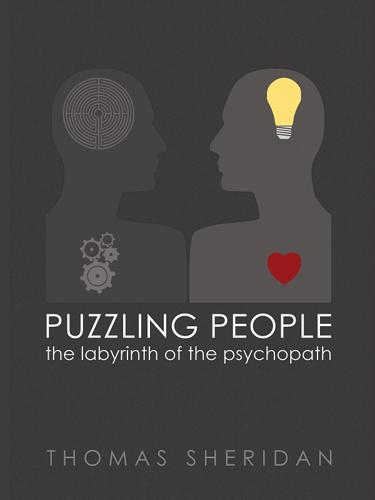
Puzzling People: The Labyrinth of the Psychopath
by
Thomas Sheridan
Published 1 Mar 2011
This may go some way to explaining the collapse of interest in those formerly studying for a science degree in recent years. What idealistic person today, interested in becoming a scientist and lit up with the pure fervour of discovery and wonderment would want to hand over their entire working lives to the likes of the military-industrial complex, Big Pharma or the Rockefeller Foundation? Wisdom and true enlightenment are not part of the mainstream educational journey and probably never have been. Matters not if we are dealing with a population-culling psychopath with a PhD who is spewing platitude-filled word salad – the party line seems to be, he has a PhD and therefore he cannot be argued with… Matters not if he is a crazy megalomaniac; his opinion is akin to law.

How We Got Here: A Slightly Irreverent History of Technology and Markets
by
Andy Kessler
Published 13 Jun 2005
Silicon mixed with oxygen is glass. And silicon is right above germanium in the periodic table, so it has the same properties; it can be doped with boron to make it P type and doped with chlorine to make it N-type. Texas Instruments was doing well selling transistors, and joined the rapidly growing military-industrial complex. It turned out that the equipment to log oil wells was useful as SONAR for locating submarines. Like everyone else, the company was making germanium 124 HOW WE GOT HERE transistors, and IBM was buying them as quickly as it could make them. In 1952, TI figured out how to make silicon transistors, which were cheaper to make.
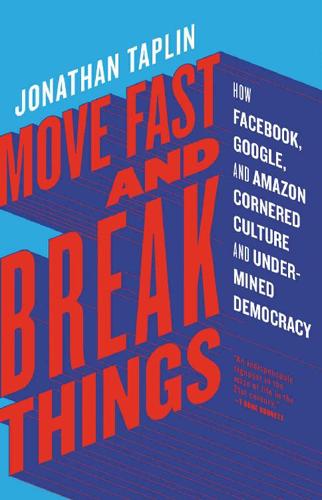
Move Fast and Break Things: How Facebook, Google, and Amazon Cornered Culture and Undermined Democracy
by
Jonathan Taplin
Published 17 Apr 2017
Engelbart himself had taken acid twice under the supervision of a Stanford psychology PhD, Jim Fadiman, at the International Foundation for Advanced Study, the Bay Area research hub for academic LSD studies, which were legal until 1967. Geeks on acid, dreaming of the future. But financed by the military-industrial complex. Complicated. The Whole Earth Catalog, subtitled Access to Tools, begins: “We are as gods, and we might as well get used to it.” Pretty bold mission statement. Was this a church? No, but the sense was that the New Communalist needed tools to create an individual identity free from the hidebound institutions of contemporary society, which was not an easy task.

The Nation City: Why Mayors Are Now Running the World
by
Rahm Emanuel
Published 25 Feb 2020
World War II—its ramp-up and eventual victory—galvanized the nation into collective action and demonstrated what good could be accomplished. Federal programs such as Social Security, wage laws and union protection, and the GI Bill rose after the Depression and World War II. Federal money began to flow, with great effect, into research and university education, resulting in programs like NASA. The military-industrial complex that Dwight D. Eisenhower warned us about came to fruition and became, for better or worse, a demonstration of rich and purposeful federal government. Through the nation’s growth and our great social technologies—like the rule of law—the federal system originally constructed by our Founding Fathers became “in some ways the first continent-wide economy,” says Eric Beinhocker of the Institute for New Economic Thinking.

McMindfulness: How Mindfulness Became the New Capitalist Spirituality
by
Ronald Purser
Published 8 Jul 2019
In an interview about his promotion of military mindfulness, Kabat-Zinn recalls meeting the Zen master Harada Roshi, who gave him a poster saying: “Never forget the one-thousand-year view.”3 Does it really take that long to grasp that giving soldiers “a kinder, gentler machine gun hand” — as Neil Young puts it — is unlikely to dismantle the military-industrial complex, or end its pursuit of perpetual war? The United States already spends more on weapons than the next ten countries combined.4 I’m unconvinced that humans will exist in a thousand years without radical changes. It seems foolhardy to assume that watching one’s breath will have any systemic effect on climate change, biodiversity loss, pollution, or mass environmental devastation.

Deep Time Reckoning: How Future Thinking Can Help Earth Now
by
Vincent Ialenti
Published 22 Sep 2020
It is all a matter of context. It was, for example, reasonable when, throughout the Cold War, many social scientists wrote books and articles undercutting overconfident views of science’s universality. This scholarship questioned humanity’s capacity for total rationality and critiqued how a secretive military-industrial complex pointed to numerical calculations and technical models to justify its own authority. That was, and still is, a smart response to devastating nuclear weapons being controlled by a small but powerful elite who claim legitimacy by pointing to their own rationality. However, this does not mean we should abandon faith in science and rationality altogether.
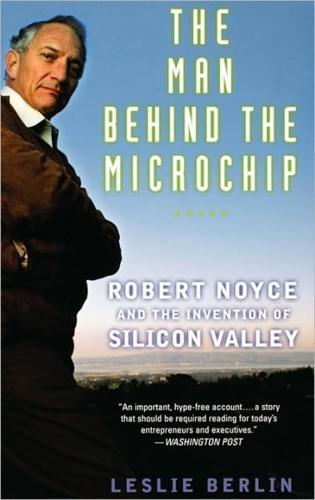
The Man Behind the Microchip: Robert Noyce and the Invention of Silicon Valley
by
Leslie Berlin
Published 9 Jun 2005
Where Grinnell had been a self-contained red-brick universe safely tucked in the middle of cornfields, in the middle of a state, in the middle of the country, 28 Rapid Robert 29 MIT was an urban campus—three miles from downtown Boston, a short train ride to New York—run by men eager to extend its reach beyond the traditional limits of the academy. MIT professors helped develop the radar technology that saved American planes, and they helped build the atomic bomb that devastated Japan. MIT faculty served on presidential commissions and in the boardrooms of the nation’s most powerful corporations. The “military-industrial complex” would not be named until a dozen years after Noyce entered graduate school, but it was well under construction at MIT in the fall of 1949. During the Second World War, MIT received $117 million in federal research contracts from the Office of Scientific Research and Development—by far the most money awarded to any American university during the war.
…
See integrated circuit Microcomputer, 183 Micrologic device, 135–36. See also integrated circuit Microma, 208, 213, 223, 227 microprocessor, 306; (4004), 203, 206; (8080), 217, 226; (80386), 257; development of, 162, 182–83, 195– 96; market, 199–200, 203–6, 212. See also chip Microsystems International Limited (MIL), 189–90, 207 military-industrial complex, 29 military market, 83, 121, 137, 266. See also Defense Department, U.S. Mills, Peter, 292 Mims, Matt, 140 Minuteman missile, 121–22, 130 MIT (Massachusetts Institute of Technology), x, 24, 44, 246; contrast with Grinnell College, 28–29; Graduate House at, 30, 34, 35; physics department history, 29–30.
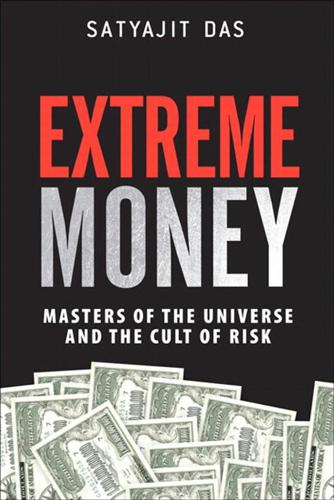
Extreme Money: Masters of the Universe and the Cult of Risk
by
Satyajit Das
Published 14 Oct 2011
Coalitions accumulate, ultimately paralyzing the economic system and causing inevitable and irretrievable economic decline. In the article “The quiet coup”1 and book 13 Bankers, Simon Johnson, a former IMF chief economist and James Kwak, a former McKinsey consultant, argued that banksters had captured regulators. The idea echoed President Dwight Eisenhower’s 1961 warning about the military industrial complex, an influential and powerful combination of the military establishment and arms industry with the “potential for the disastrous rise of misplaced power.”2 If it were a conspiracy, then it was one of convenience among pickpockets. If it was a coup, then it was by engraved invitation, like the sadomasochistic sexual encounter between Howard Roark and Dominique Francon in Ayn Rand’s The Fountainhead.3 While increasing debt and risk was dangerous, it had become the accepted way to generate economic growth and improve living standards.
…
See also regulation Marketwatch, 338 Markopolos, Harry, 292 Markowitz, Harry, 116-117 Marshall, Alfred, 78 Marx, Groucho, 97, 354 Marx, Karl, 33 Master’s Voice record label, 157 MasterCard, 71-72 Masters of the Universe, 257, 262, 308, 332-333, 343, 366 Masters, Michael, 334 Mauboussin, Michael, 246 Mauger, Charlie, 202 Maxim, 162 Maximum City, 44 MBSs (mortgage backed securities), 173 arbitrage, 242 McCaw Cellular, 146 McClure’s Magazine, 52 McCulley, Paul, 269 McDade, Herbert, 288 McDaniel, Raymond, 284 McGraw, Terry, III, 284 MCI, 146 McKinley, William, 26 McLuhan, Marshall, 72, 89, 366 McNamara, Frank, 71 mean-variance approach, 117 Meaning of Life, The, 180 Means, Gardiner, 54 Meckling, William H., 120 Media, financial news, 89-99 Mehta, Suketa, 44 Melamed, Leo, 125 Mencken, H.L., 80, 329 Mephistopheles, 36 Merchant of Venice, 117, 366 mergers, 57-59, 242, 310 CitiGroup, 75 General Electric (GE), 61 Meriwether, John, 248-249 Merkel, Angela, 325 Merlin Entertainments, 163 Merrill Lynch, 66, 76, 148, 178, 191, 280, 315, 330 bonuses, 319 Center for Research in Security Prices (CRSP), 131 merger with BoA, 339 MERS (Mortgage Electronic Registration System), 271 Merton, Robert K., 121, 130, 248 Metallgesellschaft, 56 Metro-Goldwyn-Mayer, 155 Metromedia, 149 Metromedia Broadcasting Corporation, 149 Metropolitan Club, 304 Meyer, Phillipe, 141 mezzanine “mezz” debt, 154 notes, 170-171 Mickey Mouse, 324 microeconomics, definition of, 102 middle class for blue-collar workers, 42 Middle East, 264 petro-dollars, 82 Mikado, The, 128 Milgram, Stanley, 335 military industrial complex, 294 Milken, Michael, 141, 144-150, 152, 168, 244 1987 equity crash, 153 Milken’s mobsters, 146-147 purchases of, 322 Mill, John Stuart, 126, 305 Millennium Challenge, 264-265 Miller, Bill, 245, 360 Miller, Daniel, 130 Miller, Merton, 116, 119, 248 Mills, Susan, 299 Milton, John, 359 Minibonds, 220 Minogue, Kylie, 157 Minsky machines, 261.

The Berlin Wall: A World Divided, 1961-1989
by
Frederick Taylor
Published 26 May 2008
He was not really considered by the liberal wing of his party to be ‘one of them’.2 It was not the sophisticated, Harvard-educated Kennedy but a conservative military man, the retiring President Eisenhower, who warned the American people in his valedictory television broadcast about the dangers of the ‘military-industrial complex’. Kennedy appeared the picture of the civilised liberal yet had no clear record of supporting liberal causes. He talked of peace and yet railed in aggressively anxious terms against the ‘missile gap’. He certainly seemed to have nothing much against the military-industrial complex. As another Massachusetts-Irish politician said of him: There’s something about Jack—and I don’t know quite what it is—that makes people want to believe in him.

Firepower: How Weapons Shaped Warfare
by
Paul Lockhart
Published 15 Mar 2021
As the experience of combat revealed pressing tactical needs, these natural allies—governments, military establishments, industry, and academia—deliberately and aggressively sought solutions for improved weaponry. Innovation in weaponry became less a matter of serendipity and more a matter of purpose. One result of this early incarnation of the military-industrial complex was an acceleration of the pace of change in the art of war. The Industrial Revolution encouraged and rewarded innovation, probably more in heavy industry and munitions production than in most fields of manufacturing. As a result, the rate at which new weapons designs appeared became almost exponentially faster after the middle of the nineteenth century.
…
That process, formal or informal, was for the most part conducive to efficiency and progress, because the main considerations for weapons technology—ease and cost of manufacturing, ruggedness and practicality, usefulness and performance—could be discussed and compared by those who were best able to assess those qualities. The partnership between those who designed, produced, and used military weaponry heralded something darker, as well. When US President Dwight D. Eisenhower warned Americans about the insidious power of the “military-industrial complex” in his 1961 farewell address, he was referring to a trend that had begun more than a century before. The intimate ties between war and business, always a component of organized violence, tightened dramatically with the beginning of the factory system. Granted, that tie, and its potential for harm, was perhaps not readily apparent in 1815, or even in 1870.

How to Hide an Empire: A History of the Greater United States
by
Daniel Immerwahr
Published 19 Feb 2019
He’d written two affable English-language books about his thoughts on business, stressing how much he’d learned from the United States. But in 1989 he began to publish some distinctly undeferential thoughts about his adoptive home. He excoriated the United States for its racism, economic inequality, and lack of business acumen. Morita may have gotten rich off the U.S. military-industrial complex, but his gratitude, it turned out, was not bottomless. “Let’s become a Japan that can say no,” he advised his compatriots. He coauthored a book of that name—The Japan That Can Say No—written with a right-wing nationalist. He published it in Japanese and refused to have it translated. It was a far cry from his days as a self-styled “sonny boy.”
…
Toyota’s output: Fujita Kuniko, “Corporatism and the Corporate Welfare Program: Impact of the Korean War on the Toyota Motor Corporation,” in The Occupation of Japan: The Impact of the Korean War, ed. William F. Nimmo (Norfolk, VA, 1990), 124. well-paid internship: On the relationship between military contracts, standardization, and Asian growth, I’ve learned much from Jim Glassman and Young-Jin Choi, “The Chaebol and the US Military-Industrial Complex: Cold War Geopolitical Economy and South Korean Industrialization,” Environment and Planning A 46 (2014): 1160–80, and Patrick Chung, “Building Global Capitalism: Militarization, Standardization, and U.S.–South Korea Relations Since the Korean War” (Ph.D. diss., Brown University, 2017).

Termites of the State: Why Complexity Leads to Inequality
by
Vito Tanzi
Published 28 Dec 2017
Some industries, some enterprises, some regions, and some individuals benefit not just from the protection offered by the defense of the country (which in principle should benefit every citizen) but especially from the spending itself, because that spending provides jobs to some individuals, incomes to some enterprises, and political benefits to some politicians. Six decades before the publication of this book, President Eisenhower had warned about the existence of a military-industrial complex that in his view was pushing for more military spending and was, as a consequence, transforming a pure public good, at least in part, into a private good. Since the 1950s, a frequent problem in the United States has been how to stop the production of some useless weapons systems, or how to close useless military bases that serve no defense function at all but provide good jobs and incomes to individuals and to enterprises located in certain geographical areas, areas that are of interest to particular members of the US Congress.
…
See Marginal tax rates negative income tax, 212 progressive taxes, 52–53, 228, 343–44 rates, 135 reduction of, 77, 87 social contract and, 90–91 social costs of, 189 stabilization policies and, 56–57, 238, 240–41 statutory rates versus effective rates, 367–68, 377 “stealth taxes,” 144 tax expenditures, 52–53, 134, 135, 232–33, 380–81 tax incentives, 135, 380–81 value added taxes income redistribution and, 207, 211, 212 public spending and, 53 revenue growth and, 385 stabilization policies and, 240 voluntariness of, 90–91 wealth tax, 341–42 welfare policies and, 45, 48–49 Tax avoidance Gini coefficient and, 331 globalization and, 369–70 by high net worth individuals (HNWIs), 370, 382 rise in, 379 tax competition, 370, 378 tax evasion versus, 333–34 tax havens, 369–70, 378 tax planning, 368, 369, 381 “Taxman” (song), 53 Taylor, Fred M., 26 Ten Commandments, 79, 328 “Termites of the market,” 119–20, 199 “Termites of the state,” 119–20, 198, 199, 232, 264, 314 Thatcher, Margaret, 33, 59, 64, 77, 87, 98, 180, 398 The Theory of Moral Sentiments (Smith), 312, 321 The Theory of Public Finance (Musgrave), 176–77, 187 Think tanks, 336–38, 394–95 “Third Way,” 395 Tinbergen, Jan, 82, 381 Tobin, James, 4, 56, 272 Tocqueville, Alexis de, 7–8, 89, 210, 400 “Too big to fail” financial institutions and, 84, 119, 168, 169 monopolies and, 79–80 moral hazard and, 138, 156–57 Trade, 34 Trade agreements, 354 Traditional justice, 100 Transaction activity in financial sector, 330 Transparency, public institutions and, 296–97 Transparency International, 120, 297 Truman, Harry, 43 Trump, Donald, 129, 150, 316–17, 335, 340, 345 Tullock, Gordon, 313–14 Tutorial role of government, 65, 141–42, 162, 189–90 2007–2008 Financial Crisis generally, 333 deregulation and, 109 easy credit and, 107–8 globalization and, 237 government intervention and, 156 Southeast Asian financial crisis (1997–1998) compared, 243–44 Ukraine, Gini coefficient in, 317 Unemployment compensation, 237–38 Unions decline in, 398 in Germany, 231 government control of, 23 Hayek on, 231 historical background, 19 importance of, 23 income inequality and decline in, 342 Index in Italy, 23, 231 Keynes on, 230–31 in US, 342 United Kingdom Beveridge Report, 41–43, 50 Brexit, 279 challenges to welfare policies in, 60, 61 economic planning in, 27 entrepreneurs in, 307 executive compensation in, 364 financial institutions in, 157 income inequality in, 315 infrastructure in, 316–17 intellectual property in, 357–58 laissez faire in, 31 limited role of government in, 98 marginal tax rates in, 376, 377 market fundamentalism in, 35–36 Poor Laws, 50 progressive taxes in, 53, 343–44 public goods in, 180 public ownership in, 135 regulations in, 279 “revolving door policies” in, 335–36 stabilization policies in, 59 supply-side economics in, 76–78, 395 taxation in, 53, 371 welfare policies in, 214, 219 welfare state in, 41–42 women’s suffrage in, 20 United States administrative capability of governments in, 67–68 Affordable Care Act, 208, 213, 274–75 Agriculture Department, 126, 127, 194–95 Aid to Dependent Children, 207 authorizations in, 145 balanced budget rules in, 73 bureaucracy in, 233 Census Bureau, 391–92 central bank in, 49, 188, 244 challenges to welfare policies in, 60, 61 Children’s Health Insurance Program, 213 Child Support Program, 213 Clean Air Act, 276 Clean Energy Act, 276 Clean Water Act, 276 Code of Federal Regulations, 126–27, 172, 277 Community Health Centers, 213 Congressional Budget Office, 72–73, 180–81, 380 Constitution generally, 99, 250, 270 amendment of, 250 Bill of Rights, 43–44 445 general principles, 268 intellectual property and, 176, 193, 362 slavery and, 249–50 workers’ rights and, 250 Consumer Financial Protection Bureau, 128 consumption in, 316 contingent liabilities in, 138, 140–41 corporate taxation in, 161 Council of Economic Advisors, 56 Credit Card Accountability Responsibility and Disclosure Act of 2009, 128 Declaration of Independence, 43–44, 99 Defense Advanced Research Project Agency (DARPA), 194–95 Defense Department, 334 defense spending in, 178 dependent workers in, 250 deregulation in, 82 Dodd-Frank Wall Street Reform and Consumer Protection Act, 109, 126, 128 Economic Opportunity Act of 1964, 213 Economic Report of the President (1962), 56, 71 education in, 208 entrepreneurs in, 307 Environmental Protection Agency, 183, 276, 277, 281 executive compensation in, 169, 363, 364 ex post income distribution in, 118 “fake goods” in, 149 Fannie Mae, 138, 140–41 federalism in, 260, 284 Federal Register, 126–27, 277 Federal Reserve Bank, 49, 244 Federal Reserve System, 19, 113, 334 fees and fines in, 142 financial institutions in, 126, 157 financial penalties in, 169–70 “fireside chat,” 43–45, 48, 50 Food and Drug Administration, 276 food stamps, 206, 213, 221 Freddie Mac, 138, 140–41 Full Employment Act of 1948, 49 Gini coefficient in, 317, 391–92 Government Accountability Office (GAO), 290 guns in, 165 Head Start, 213 Health and Human Services Department, 127, 213 health care in, 208, 222–23, 298 income inequality in, 161–62, 208–9, 221, 224, 227, 315–16, 389, 391–92 income redistribution in, 200 446 Index United States (cont.) income tax in, 19, 24–25, 208 infrastructure in, 234, 316–17 intellectual property in, 176, 193, 204, 347, 357–58, 362 Internal Revenue Service, 276, 372 Joint Economic Committee, 2 Justice Department, 126, 169–70 “Keynesian Revolution” in, 42, 56 laissez faire in, 17–19, 30, 31 Landis Report, 57–58 life expectancy in, 390–91 limited role of government in, 98 Low Income Home Energy Assistance Program, 213 marginal tax rates in, 375–77 market fundamentalism in, 35–36 Medicaid, 166, 180–81, 213, 221 Medicare, 166, 213 “military-industrial complex” in, 178 National Aeronautics and Space Administration (NASA), 179, 194–95 National Ambient Air Quality Standards (NAAQS), 277, 281 National Institutes of Health, 194–95 National Strategic Computing Initiative, 196–97 New Deal, 4, 22, 32, 67–68, 207 normative approach to role of government in, 110 occupational licensing in, 125–26 Outdoor Recreation Review Commission, 3 Patent and Trademark Office, 347 Pension Protection Act of 2006, 128 pensions in, 222–23 populism in, 74 Progressive Era, 18, 223 progressive taxes in, 52–53, 343–44 protection of property in, 202 public ownership in, 135, 136 public spending in, 23–24, 40–41, 77–78, 190 regulations in, 173, 276, 277, 279 research in, 194–97 “revolving door policies” in, 335–36 Safe Drinking Water Act, 276 “safety nets” in, 207–8 safety-related regulations in, 146–47 “Second Bill of Rights,” 43–45 Securities Act of 1933, 57 Securities and Exchange Commission, 84–85, 276 Securities Exchange Act of 1934, 57 Sixteenth Amendment, 24 slavery in, 249–50, 265–66 stabilization policies in, 55–59 statutes in, 274–75, 276 stimulus in, 239–40 Supplemental Nutrition Assistance Program, 126, 316 supply-side economics in, 76–78, 395 Supreme Court, 251, 253, 267–69 taxation in, 52–53, 190, 367, 368, 371, 380 tax expenditures in, 232–33, 380–81 tax reduction in, 77, 87 Treasury Department, 127, 334 unions in, 342 upward mobility in, 391 “War on Poverty,” 43, 48, 56, 58, 229, 388 welfare policies in, 43–45, 212–14 Women, Infants and Children (WIC), 213 Universal welfare programs, 214 Upward mobility, 391 Urban Institute, 368 Urbanization externalities and, 91, 163–64 income inequality and, 206 legal rules and, 254 limited role of government, effect on, 97 regulations, effect on, 130 U.S.
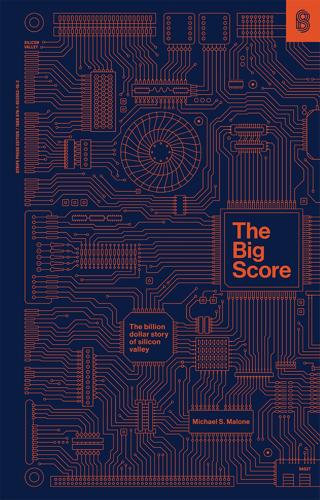
The Big Score
by
Michael S. Malone
Published 20 Jul 2021
Packard’s nomination was met with cheers by the business community, jeers by the press and Congress. Hewlett-Packard, it was noted, had a number of defense contracts—a potential conflict of interest. Furthermore, looking from the far bank of the Potomac, Packard with all his millions seemed to be a stereotype of the fat-cat capitalist, a big-money boy in the military-industrial complex. That HP had never built a weapon was irrelevant; after all, Packard also sat on the board of General Dynamics, which most certainly had. For that matter, Packard also was on the boards of Crocker Bank, National Airlines, U.S. Steel, and Equitable Life, and on the international advisory committee of Chase Manhattan Bank.
…
Said a contemporary biography: “[Senators who supported Packard] noted that a man of Packard’s wealth had little to gain by favoritism and that his integrity was a better insurance for the country than the sale of his stock.” So, in the most anti-military, anti-wealth, anti-big-business era in American history, multimillionaire David Packard became the second most powerful man in the military-industrial complex. * * * Neither Hewlett nor Packard would have stood out among the many talented students in Terman’s lab. Both were born in middle America, both had professional fathers, and both had journeyed out to California to Stanford. But so had so many others. Neither was a great scientist, like De Forest before them or Shockley after, though Hewlett was probably as good an engineer as anyone in his class.
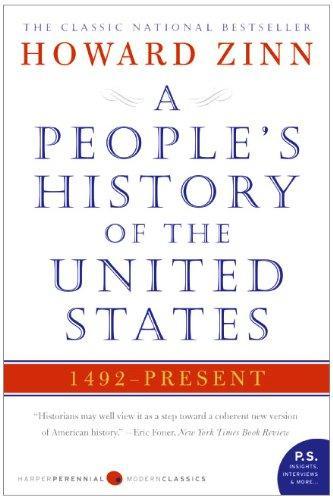
A People's History of the United States
by
Howard Zinn
Published 2 Jan 1977
At home, he surrendered again and again to caution and conservatism, signing legislation that was more pleasing to the Republican Party and big business than to those Democrats who still recalled the bold programs of Franklin Roosevelt. Abroad, there were futile shows of military braggadocio, and a subservience to what President Dwight Eisenhower had once warned against: “the military-industrial complex.” Clinton had barely won election both times. In 1992, with 45 percent of the voting population staying away from the polls, he only received 43 percent of the votes, the senior Bush getting 38 percent, while 19 percent of the voters showed their distaste for both parties by voting for a third-party candidate, Ross Perot.
…
Although Bush, during the campaign, accused Gore of appealing to “class warfare,” the candidacy of Gore and his Vice President, Senator Joseph Lieberman, posed no threat to the superrich. A front-page story in the New York Times was headlined “As a Senator, Lieberman Is Proudly Pro-Business” and went on to give the details: he was loved by the Silicon Valley high-tech industry, and the military-industrial complex of Connecticut was grateful to him for their $7.5 billion in contracts for the Seawolf submarine. The degree of difference in the corporate support of the two presidential candidates can be measured by the $220 million raised by the Bush campaign and the $170 million raised by the Gore campaign.
…
The grievances were not hard to identify: the stationing of U.S. troops in Saudi Arabia, site of the most holy of Moslem shrines; the ten years of sanctions against Iraq which, according to the United Nations, had resulted in the deaths of hundreds of thousands of children; the continued U.S. support of Israel’s occupation of Palestinian land, including billions in military aid. However, these issues could not be addressed without fundamental changes in American foreign policy. Such changes could not be accepted by the military-industrial complex that dominated both major parties, because they would require withdrawing military forces from around the world, giving up political and economic domination of other countries—in short, relinquishing the cherished role of the United States as a superpower. Such fundamental changes would require a radical change in priorities, from spending $300 to $400 billion a year for the military, to using this wealth to improve the living conditions of Americans and people in other parts of the world.
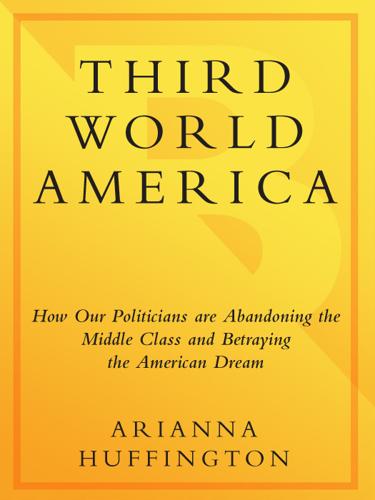
Third World America: How Our Politicians Are Abandoning the Middle Class and Betraying the American Dream
by
Arianna Huffington
Published 7 Sep 2010
Not exactly the description you want to hear about a place receiving more than $700 billion in taxpayer money this year.51 Bottom line: We could trim the defense budget, change our national security priorities, and make the nation more secure. Even after cutting billions, defense spending would remain significantly higher, in real dollars, than it was at the height of the Reagan arms buildup.52 As Defense Secretary Robert Gates put it in a speech at the Eisenhower Library (fitting given Ike’s warnings about the military-industrial complex): America cannot survive as “a muscle-bound, garrison state—militarily strong, but economically stagnant and strategically insolvent.”53 SAVING OUR HOMES FROM FORECLOSURE We cannot truly secure our homeland without also protecting America’s besieged middle class. The best place to start is finding a way to reduce foreclosures, allowing people to keep their homes.
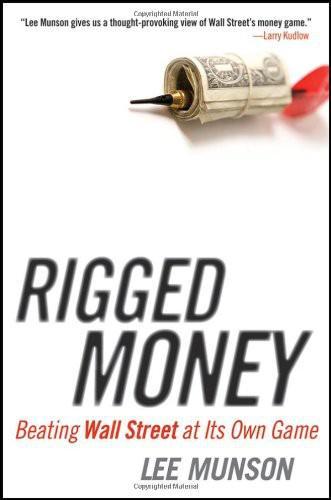
Rigged Money: Beating Wall Street at Its Own Game
by
Lee Munson
Published 6 Dec 2011
He bought silver believing that “a higher price would be needed to establish equilibrium between supply and demand.”3 In 2006, Buffett sold the silver, but didn’t include this news in the annual report and didn’t say what the return was.4 Like oil, people need silver. The modern industrial applications of silver, along with the tiny amount in circulation compared to gold, make it a true commodity versus a hard currency. Buffett recognized that people need silver more than they need gold to keep the modern military-industrial complex running. Silver, platinum, and palladium all have critical uses in manufacturing a wide variety of products. This is the key reason some investors can get away with downplaying gold as an investment while speculating on other precious metals. By many estimates, we have decades of an industrial supply of gold circulating, while other precious metals could be in jeopardy of shortages.

Technological Revolutions and Financial Capital: The Dynamics of Bubbles and Golden Ages
by
Carlota Pérez
Published 1 Jan 2002
In the ideological confrontations that characterized the world of the 1930s, state intervention in the economy could not yet be fully accepted in the USA. In 1933 the ‘conservatives predicted that FTC [Federal Trade Commission] supervision was only the first step in the eventual communist takeover of the United States’.202 It took the experience of collaboration in the military–industrial complex, during the Second World War, to understand that capitalists could coexist in a mutually beneficial relationship with a strong state that assumed an active coordinating and balancing role in the economy. In a sense, it could be said that the direct US participation in the war was already the beginning of Deployment.

Rebel Cities: From the Right to the City to the Urban Revolution
by
David Harvey
Published 3 Apr 2012
The party's favored slogans of freedom and liberty to be guaranteed by private property rights, free markets, and free trade actually translate into the freedom to exploit the labor of others, to dispossess the assets of the common people at will, and to pillage the environment for individual or class benefit. Once in control of the state apparatus, the Party of Wall Street typi cally privatizes all the juicy morsels at less than market value to open new terrains for their capital accumulation. They arrange subcontracting (the military-industrial complex being a prime example) and taxation practices (subsidies to agri-business and low capital gains taxes) that permit them freely to ransack the public coffers. They deliberately foster such complicated regulatory systems and such astonishing admin istra tive incompetence within the rest of the state apparatus ( remember the EPA under Reagan, and FEMA and "heck-of-a-job" Brown under Bush) as to convince an inherently skeptical public that the state can never play a constructive or supportive role in improving the daily life or the future prospects of anyone.

Does Capitalism Have a Future?
by
Immanuel Wallerstein
,
Randall Collins
,
Michael Mann
,
Georgi Derluguian
,
Craig Calhoun
,
Stephen Hoye
and
Audible Studios
Published 15 Nov 2013
From the standpoint of Moscow, this would not be such a loss given that Poland and Czechoslovakia would soon find themselves between the unified Germany and its strategic economic partner Russia. Disarmament deals with America dramatically reduce geopolitical burdens, at last allowing Moscow to restructure its military-industrial complex. The Soviet industries, still formidable and staffed by skilled and comparatively low-paid labor, attract West European investments through government-brokered contracts. (The Soviet managers always felt intuitively close to their German, French, and Italian counterparts embodying broadly similar state-corporatist dispositions.)
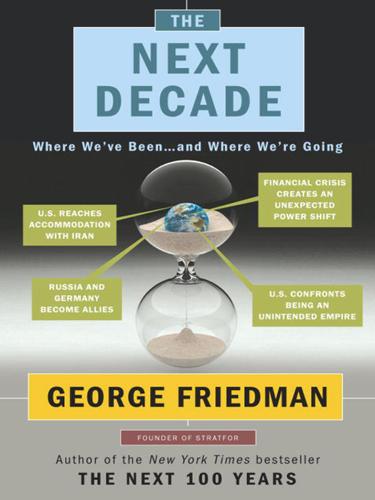
The Next Decade: Where We've Been . . . And Where We're Going
by
George Friedman
Published 25 Jan 2011
On the left, there is a long tradition of anti-imperialism. But if you look at some of the rhetoric emanating from the right, from libertarians as well as from some in the Tea Party, you see the same opposition to military involvement in other countries. The fear is linked to Dwight Eisenhower’s warning to beware of the “military-industrial complex.” If a career military officer and war hero such as Ike could voice this fear, you can see how deeply embedded it is in American political culture. I suspect that this will become a powerful strand in American politics over the next ten years, in a country where, across the political spectrum, the citizenry is weary of foreign involvement.

Red Rover: Inside the Story of Robotic Space Exploration, From Genesis to the Mars Rover Curiosity
by
Roger Wiens
Published 12 Mar 2013
However, giving a full day of live presentations—and making the mission sound exciting—was not part of their repertoire. So our team scheduled a dry run in late September. We flew to Denver and made our way to the Lockheed Martin plant, which is hidden behind a hogback ridge of the Rocky Mountains, past the southern reaches of suburbia. The plant, which had been part of the military-industrial complex of the Cold War, had been built behind a mountain far enough from the city in the 1950s that an intercontinental ballistic missile (ICBM) attack on it would not destroy Denver. The dry run was terrible. We had given Lockheed a large block of time to carefully describe the spacecraft system, and we had done a similar thing for the JPL portions of the project.

Revolution at Point Zero: Housework, Reproduction, and Feminist Struggle
by
Silvia Federici
Published 4 Oct 2012
But in both cases, there is a problem in the way policies are configured, as they reflect an unequal sexual division of labor and the traditional expectations concerning women’s role in the family and society. This is one crucial area where change must occur. Folbre also calls for a redistribution of resources to rechannel public money from the military-industrial complex and other destructive enterprises to the care of people in old age. She acknowledges that this may seem “unrealistic,” equivalent to calling for a revolution. But she insists that it should be placed on “our agenda,” for the future of every worker is at stake, and a society blind to the tremendous suffering that awaits so many people once they age, as it is the case with the United States today, is a society bound for self-destruction.
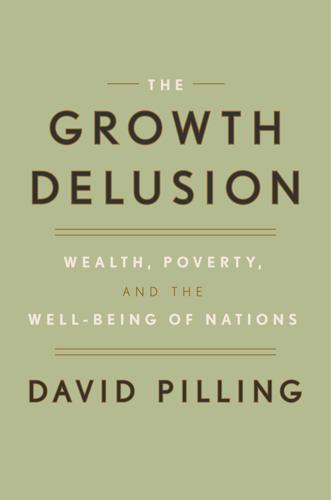
The Growth Delusion: Wealth, Poverty, and the Well-Being of Nations
by
David Pilling
Published 30 Jan 2018
The pharmaceutical and health-care-product industries, combined with groups representing doctors, hospitals, nursing homes, and insurers, spent $5.36 billion between 1998 and 2012 on lobbying, according to Steven Brill, who has researched the US health care industry extensively. That compared with $1.53 billion spent by the defense and aerospace industries and $1.3 billion spent by oil and gas interests over the same period. In other words, the “health-care-industrial complex spends more than three times what the military-industrial complex spends in Washington.”8 The profit motive is a big factor, both in inflating costs and in encouraging practitioners to overtest, overprescribe, and overoperate. In cities up and down America hospitals are among the most profitable enterprises, employing administrators whose salaries frequently run into millions of dollars.
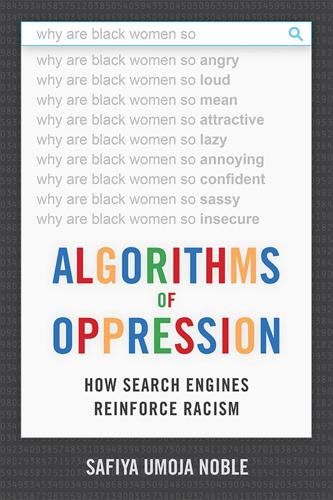
Algorithms of Oppression: How Search Engines Reinforce Racism
by
Safiya Umoja Noble
Published 8 Jan 2018
See Fallows, 2005; Purcell, Brenner, and Rainie, 2012. 64. President Eisenhower forewarned of these projects in his farewell speech on January 17, 1961, when he said, “In the councils of government, we must guard against the acquisition of unwarranted influence, whether sought or unsought, by the military-industrial complex. The potential for the disastrous rise of misplaced power exists and will persist.” Eisenhower, 1961. 65. Niesen, 2012. 66. The full report can be accessed at www.pewinternet.org. 67. See Epstein and Robertson, 2015. 68. Purcell, Brenner, and Rainie, 2012, 2. Pew reports these findings from a survey conducted from January 20 to February 19, 2012, among 2,253 adults, age eighteen and over, including 901 cellphone interviews.

The Return of Marco Polo's World: War, Strategy, and American Interests in the Twenty-First Century
by
Robert D. Kaplan
Published 6 Mar 2018
He saw Truman as a harbinger of this emerging order: liberal at home, but profoundly conservative in foreign affairs. It was the civilian business community, Huntington observed, that was now providing a bridge between the military and the rest of society. For many of us, big business embodies conservative pragmatism and what is known as the military-industrial complex. But Huntington exposed this image as a Cold War artifact. “Business pacifism” is how he describes the capitalist’s view of the world through most of our earlier history. Religious moralism and economic liberalism combined to make most American businessmen see international trade and multilateral treaties as more important than power politics.

Only Americans Burn in Hell
by
Jarett Kobek
Published 10 Apr 2019
The first video is Matt Drudge’s appearance on November 11th, 1997 AD at the Annenberg School for Communication, which was a division of the University of Southern California, an institution of higher learning that used things like a School of Communication to cloak its relationship with the military–industrial complex. The second video is Matt Drudge’s incredibly weird October 6th, 2015 AD appearance on The Alex Jones Show, which was a radio program hosted by the eponymous Alex Jones, a disgraceful little man who believed that poisoned water turned frogs into homosexuals, that 9/11 was an inside job, and that clouds were made of Muslims.

The System: Who Owns the Internet, and How It Owns Us
by
James Ball
Published 19 Aug 2020
This potential for increased government power was accelerated markedly with the birth of programmatic advertising, and the rapidly established norm that every site on the internet would obsessively track its users across the internet as an essential part of its business model. This advertising model emerged independently of government – this did not require some nefarious conspiracy or collaboration between the two – but has served to replace the military-industrial complex with a military-informational complex,2 where the needs of advertising, now one of the world’s most important and lucrative sectors, fuels and services the needs of government. Accelerating this growth was a surfeit of venture capital money fuelling the rise of dotcoms – encouraging them to pursue huge global scale over revenue, pushing them towards the ad model and helping to make sure the massive returns of the successful companies were concentrated in the hands of people who already had considerable personal wealth, as well as the institutional investors (universities, pension funds and similar) who had already enjoyed significant clout in the pre-internet world.
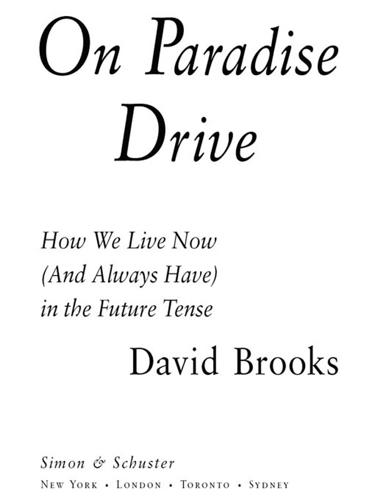
On Paradise Drive: How We Live Now (And Always Have) in the Future Tense
by
David Brooks
Published 2 Jun 2004
They need suburban space so their kids have a place to play, but they still want enough panhandlers and check-cashing places nearby so they can feel urban and gritty. Dotted around most cities—especially in the northern rim of the country, through Vermont, Massachusetts, Wisconsin, Oregon, and Washington—there are one or two crunchy suburbs that declared themselves nuclear-free zones during the cold war, although some would argue that the military-industrial complex was not overly inconvenienced by being unable to base ICBM launch sites in Takoma Park, Maryland. You can tell you are in a crunchy suburb by the sudden profusion of meat-free food co-ops, the boys with names like Mandela and Milo running around the all-wood playgrounds, the herbal-soapmaking cooperatives, pottery galleries, dance collectives, and middle-aged sandal wearers (people with progressive politics have this strange penchant for toe exhibitionism).
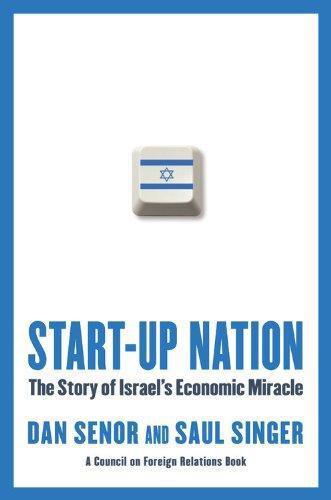
Start-Up Nation: The Story of Israel's Economic Miracle
by
Dan Senor
and
Saul Singer
Published 3 Nov 2009
This culture, when combined with the technological wizardry Israelis acquire in elite military units and from the state-run defense industry, forms a potent mixture. But there was nothing normal about the birth of Israel’s defense industry. It was unheard-of for a country so small to have its own indigenous military-industrial complex. Its origins are rooted in a dramatic, overnight betrayal by a close ally. The best way to understand Israel’s watershed moment is through a shock to Americans that had a similar effect. During the postwar boom years, America’s global status was suddenly punctured when the Soviet Union upstaged the United States by launching the first space satellite—Sputnik 1.
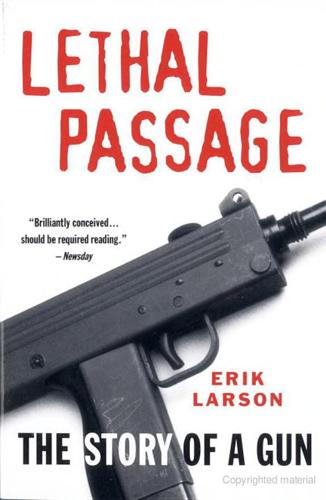
Lethal Passage
by
Erik Larson
Published 27 Jul 2011
Mapmakers, loath to tease apart the six cities, identify the area collectively as Hampton Roads, the name of the shipping channel that links the James River with Chesapeake Bay and the ocean beyond. The Roads, as local disc jockeys call the region, no doubt ranked high on the former Soviet Union’s list of American targets most worthy of nuclear obliteration. The region in and around Hampton Roads comprises a good chunk of America’s military-industrial complex, including Langley Air Force Base, Fort Eustis, the U.S. Naval Station at Norfolk, the Newport News shipyard, and the U.S. Naval Weapons Station on the York River. Virginia Beach, which occupies the eastern rim of Hampton Roads, is itself home to the Army’s Fort Story, the Camp Pendleton Naval Amphibious Base, and the Oceana Naval Air Station.
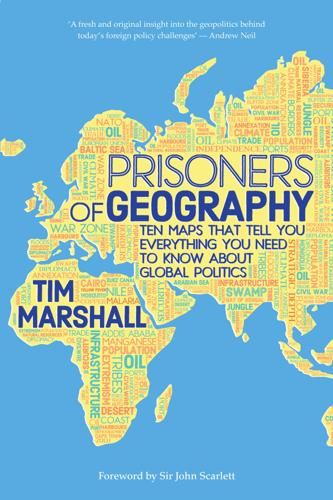
Prisoners of Geography: Ten Maps That Explain Everything About the World (Politics of Place)
by
Tim Marshall
Published 10 Oct 2016
Since then, Pakistan has tried to persuade Afghanistan to change its mind, Afghanistan refuses, and the Pashtuns on each side of the mountains try to carry on as they have for centuries by ignoring the border and maintaining their ancient connections. Central to this area, sometimes called Pashtunistan, is the Pakistani city of Peshawar, a sort of urban Taliban military-industrial complex. Knockoff Kalashnikovs, bomb-making technology, and fighters flow out from the city, and support from within sections of the state flows in. It is also a staging post for ISI officers en route to Afghanistan with funds and instructions for the Talibanesque groups across the border. Pakistan has been involved militarily in Afghanistan for decades now, but it has overreached itself, and the tiger it was riding has bitten it.
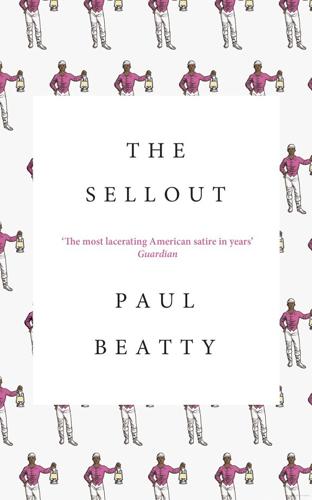
The Sellout: A Novel
by
Paul Beatty
Published 2 Mar 2016
Not to impart any batting advice, but to hand me the famous photo of the American and Russian soldiers meeting at the Elbe River, shaking hands and celebrating the de facto end of World War II in the European theater. So what happened next? “America and the Soviet Union would go on to fight a Cold War lasting nearly fifty years and forcing each country to spend trillions of dollars on self-defense in a pyramid scheme Dwight D. Eisenhower would term the Military Industrial Complex.” “Partial credit. Stalin had every Russian soldier in this photograph shot for fraternizing with the enemy.” Depending upon how much of a science-fiction geek you are, it’s either Star Wars II or V. But whichever one it is, in the middle of the climactic light-saber duel between Darth Vader and Luke Skywalker, right after the Dark Lord cuts off Luke’s arm, my dad snatched the flashlight from an usher’s hand, then slammed a black-and-white photo into my chest.

Paper Knowledge: Toward a Media History of Documents
by
Lisa Gitelman
Published 26 Mar 2014
Like Charles Hippolyte Labussière, for instance—who is said to have saved hundreds of people from the guillotine by surreptitiously destroying the relevant paperwork during the Reign of Terror—Ellsberg risked much in acting against the Vietnam War. He worked from a position inside the machinery of state—or at least inside the scriptural economy of the military-industrial complex—while he did so in ways that gestured as much toward the contradictory “psychic reality” of bureaucracy, in Kafka’s terms, as toward its specific material features.59 Whereas tactics à la Labussière involved the misdirection and destruction of documents, Ellsberg’s tactics involved their proliferation through photocopying. 16 INTRODUCTION Photocopies emerged within 1960s and 1970s bureaucracy as modest sites of self-possession—one could finally keep one’s own files—at the same time that they hinted at the inevitable documentary logic of accountability—copies collected and saved, just in case—that helped beg the question of openness or transparency that proved of particular moment in the era of Watergate and the Vietnam War.

Them: Adventures With Extremists
by
Jon Ronson
Published 1 Jan 2001
Just last week I played it down at the Rainbow Festival in south-east Montana, and this great big biker guy, tears were running down his face, he got up and came over and threw his arms around me and hugged me and kept crying. I played it at Nashville. You could have heard a pin drop.’ Dallas told me that he thought Vicki Weaver was one of God’s prophets. ‘She spoke about how close we are to a totalitarian government,’ he said. ‘She spoke about the one world order, the single world currency. The military-industrial complex. She spoke about the Bilderberg Group. I did my own research and I found out just how right she was.’ We sat and listened to the river for a while. ‘The truth is out there,’ said Dallas. ‘Just like in the X Files. You just have to look between the bullshit and the murders.’ 3. The Secret Rulers Of The World At the National Press Club on Pennsylvania Avenue, Washington, DC, Big Jim Tucker left a coded message on the answering machine of a friend.

The Happiness Industry: How the Government and Big Business Sold Us Well-Being
by
William Davies
Published 11 May 2015
Each of these has ratcheted up the amount of public investment in brain research to an ever-higher level. The Obama BRAIN Initiative, as it is known, is projected to cost $3 billion by the time it has run its course. The European Commission’s ‘FP7’ research funding round saw nearly €2 billion invested in neuroscientific projects between 2007–13. The ‘military industrial complex’, as President Eisenhower named it in 1961, has been the major driver of the neurosciences in the United States. The Pentagon sees new opportunities to influence enemy combatants and produce more ‘resilient’ US soldiers. The neuroscientist Paul Zak, whose work has focused on the social and economic importance of oxytocin, includes the Pentagon among his various consultancy clients.

Toast
by
Stross, Charles
Published 1 Jan 2002
A camera winks at him from atop a street light; he waves, wondering idly if it’s the KGB or the traffic police. He is waiting for directions to the party, which should arrive within the next half an hour, and this cold war retread is bumming him out. “Look, I don’t deal with the G-men. I hate the military industrial complex. They’re zero-sum cannibals.” A thought occurs to him. “If survival is what you’re after, I could post your state vector to Eternity: then nobody could delete you—” “Nyet!” The artificial intelligence sounds as alarmed as it's possible to sound over a GSM link. “Am not open source!” “We have nothing to talk about, then.”

Twilight of the Elites: America After Meritocracy
by
Chris Hayes
Published 11 Jun 2012
“The general view of the guys I was with,” says Nate Fick, “was that the U.S. should go to war very rarely and we should win uncompromisingly when we do.” The causes of the Iraq War, and the escalation in Afghanistan, are multifaceted. They have much to do with a long legacy of American militarism, the growth of the military-industrial complex, the reaction to 9/11, and the ruthless effectiveness of war-happy ideologues in pushing the country into an ever-widening circle of violent engagements. But what has enabled these conflicts to proliferate and drag on for a decade is the social distance between those same war-happy ideologues, along with those at the highest levels of political and economic power, and those who must, at tremendous personal cost, carry out the “long war” on the ground.

The Internet Is Not the Answer
by
Andrew Keen
Published 5 Jan 2015
The launch of ARPANET didn’t have the same dramatic impact as the Sputnik launch twelve years earlier. By the late sixties, American attention had shifted to transformational issues like the Vietnam War, the sexual revolution, and Black Power. So, in late 1969, nobody—with the exception of a few unfashionable geeks in the military-industrial complex—cared much about two 900-pound computers miscommunicating with each other. But the achievement of Bob Taylor and his engineering team cannot be underestimated. More than Sputnik and the wasteful space race, the successful building of ARPANET would change the world. It was one of the smartest million dollars ever invested.
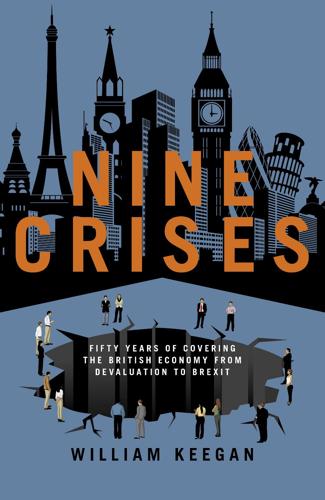
Nine Crises: Fifty Years of Covering the British Economy From Devaluation to Brexit
by
William Keegan
Published 24 Jan 2019
The following morning I looked at the number he had given me and realised that he had written down the number of the DTI switchboard. Sir Keith was so eccentric that he believed his own department of state should be abolished. He seemed not to realise that most other governments, including the ‘free market’ United States, had close relations with industry, not least via what President Eisenhower had christened the military–industrial complex. It is noteworthy that the internet, which has transformed life as we know it, was not the result of the kind of market force Sir Keith believed in, but of US government expenditure on the military. In the end, this non-interventionist minister moved on. His department was not abolished, but he became Secretary for Education.
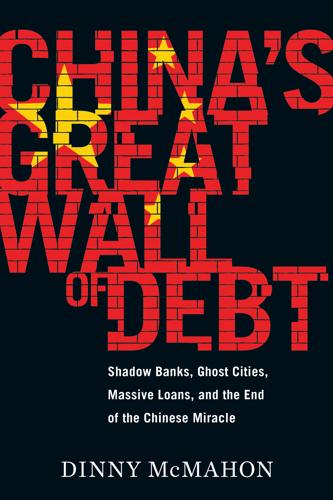
China's Great Wall of Debt: Shadow Banks, Ghost Cities, Massive Loans, and the End of the Chinese Miracle
by
Dinny McMahon
Published 13 Mar 2018
The original sin is a system that gives economic actors incentive to borrow with abandon, without reference to the long-term consequence and with the freedom to circumvent the best efforts of higher authorities to impose discipline. That sin is no more vividly on display than among China’s state-owned firms. 2 The Zombie Accommodation ERZHONG GROUP’S FACTORY campus is not what you’d expect of China’s highly touted military-industrial complex. Old men in faded blue overalls squat while weeding the pavement in the steamy Sichuan heat, fighting a losing battle against the vines and creepers that have already taken over the older factory buildings. Around midday, the place empties out as workers go home for their two-and-a-half-hour lunch break.

Bike Boom: The Unexpected Resurgence of Cycling
by
Carlton Reid
Published 14 Jun 2017
With flowers in their hair and buzzed with “acid,” some of the area’s self-styled “freaks” protested against not just war but also waste. This concern deepened for many, and for those “hippies” who became environmental protestors the automobile became a potent symbol of everything that was wrong with the “military-industrial complex.” In February 1970, nineteen ecologically aware humanities students at the San Jose State College bought a brand-new Ford Maverick and, with the blessing of their professor, buried it in a twelve-foot-deep hole dug in front of the campus’s cafeteria. This crowd-funded destruction of the hated motorcar made news around the world.

DarkMarket: Cyberthieves, Cybercops and You
by
Misha Glenny
Published 3 Oct 2011
Its two most fervent supporters come from the secular middle-class elite: intellectuals, professionals and civil servants on the one hand, and the so-called Deep State on the other. Both view the AK Party, and each other, with suspicion. The Deep State is an appropriately sinister name for the military-industrial complex that acted as the ultimate arbiter of Turkish politics in the post-war period. As one of only two NATO members to share a border with the Soviet Union (the other was Norway), the country played a key role in the Cold War, and its allies, led by the US, were happy to turn a blind eye to the egregious abuses inflicted by the military on its own population.
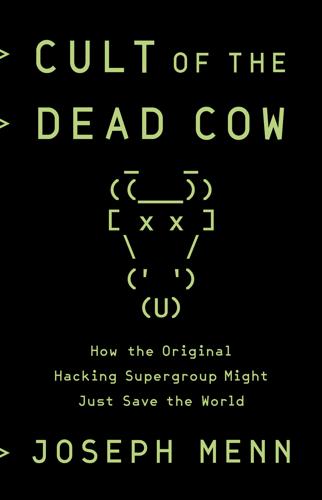
Cult of the Dead Cow: How the Original Hacking Supergroup Might Just Save the World
by
Joseph Menn
Published 3 Jun 2019
“It occurs to me how severely the trajectory of my own career has taken me from idealistic anarchist, to corporate stooge, to ambitious entrepreneur, to military/intelligence/defense/law enforcement adviser,” wrote one. “Many cyber guys started out somewhere completely different and then somehow found themselves in the center of the military-industrial complex in ways they would never have been prepared for.” Once there, the difficulty in keeping secrets is “potentially more extreme because the psychological make-up and life-story of the cyber guy would not have prepared him for it.” Wrote another: When one joins an intelligence service at the start of one’s career, one is involved in low level, apprentice-like, tasks and assignments usually far removed from traumatic action or profound moral considerations, much less decisions.
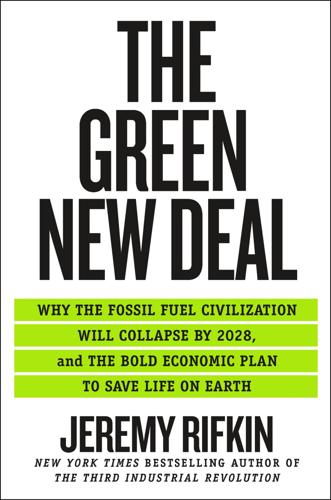
The Green New Deal: Why the Fossil Fuel Civilization Will Collapse by 2028, and the Bold Economic Plan to Save Life on Earth
by
Jeremy Rifkin
Published 9 Sep 2019
Between 1957 and 1964, manufacturing output doubled in the United States while the number of blue-collar workers declined by 3 percent with the introduction of automation on assembly lines.13 Second, the build-out of the highway system provided the Big Three automobile companies with a literal escape route to the new outer-ring suburbs of Detroit, where they built highly automated factories operated by a more skilled workforce that was eager to escape the inner city. Other industries and, particularly, the industries that made up the military-industrial complex, built their new plants across the southern states. When foreign auto companies—Honda, Toyota, Nissan, BMW—established their production facilities in the United States beginning in the 1980s, they, too, were virtually all located in southern states along interstate highway exits.14 The southern states had “right-to-work laws” designed to impede or prohibit union organizing.
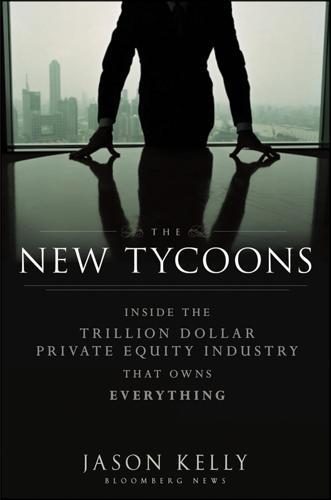
The New Tycoons: Inside the Trillion Dollar Private Equity Industry That Owns Everything
by
Jason Kelly
Published 10 Sep 2012
If KKR are the barbarians, Carlyle is the spooky, government-connected group in the public imagination. Roots in defense deals are largely responsible. Carlyle’s is one part Wall Street technology (the LBO) mixed with its hometown’s most pervasive business (the government and defense). Its first chairman was Carlucci, who cemented the perception that Carlyle was a key institution in the military-industrial complex. Former Secretary of State James Baker III was an adviser. Former U.S. President George H. W. Bush also advised the firm, specifically on doing business in Asia. Former U.K. Prime Minister John Major also served as an adviser. The founders stressed that none of the politicians advised on deals and were there simply to lend credibility to potential and current investors.

The Skripal Files
by
Mark Urban
Initially MI6 and the other experts in Whitehall saw the emergence of Novichok as the result of inertia on the part of labs and factories where thousands would be made unemployed by the new treaty. The secret agencies went along with the public line that President Yeltsin was being kept in the dark about these developments, maybe scammed by unreformed members of the military-industrial complex. Politically, that was a better alternative than the British or US governments calling out the Russian president publicly. By the mid-1990s evidence had emerged that some people connected with the chemical weapons industry had been trying to sell their services to Syria, with the idea of producing new nerve agents there.

Care: The Highest Stage of Capitalism
by
Premilla Nadasen
Published 10 Oct 2023
This has created a system in which public officials and private stewards are driven by a desire for personal profit rather than concern for the needy. As we will see, these ideas have influenced welfare, health care, child welfare, the food rescue program, housing, the financial sector, and the adult guardianship system. The rise of the contemporary care industry parallels that of the military-industrial complex during World War II and the postwar period, when billions of federal dollars went into the private sector in the form of defense contracts and funding for education and science research for the purposes of war, military preparedness, and national safety. Defense spending not only fortified the military arsenal but also magnified the power and wealth of the private defense industry.

The Rise of the Network Society
by
Manuel Castells
Published 31 Aug 1996
While higher levels of knowledge may normally result in higher levels of output per unit of input, it is the pursuit of knowledge and information that characterizes the technological production function under informationalism. Although technology and technical relationships of production are organized in paradigms originating in the dominant spheres of society (for example, the production process, the military–industrial complex) they diffuse throughout the whole set of social relationships and social structures, so penetrating and modifying power and experience.26 Thus, modes of development shape the entire realm of social behavior, of course including symbolic communication. Because informationalism is based on the technology of knowledge and information, there is an especially close linkage between culture and productive forces, between spirit and matter, in the informational mode of development.
…
Strategic planning by MITI and the constant interface between the keiretsu and government are key elements in explaining the Japanese prowess that overwhelmed Europe and overtook the US in several segments of information technology industries. A similar story can be told about South Korea and Taiwan, although in the latter case multinationals played a greater role. India and China’s strong technological bases are directly related to their military–industrial complex, under state funding and guidance. But so was also the case for much of the British and French electronics industries, centered on telecommunications and defense, until the 1980s.76 In the last quarter of the twentieth century, the European Union proceeded with a series of technological programs to keep up with international competition, systematically supporting “national champions,” even at a loss, and without much result.

Britain at Bay: The Epic Story of the Second World War: 1938-1941
by
Alan Allport
Published 2 Sep 2020
Such figures were, as the Times put it, ‘monumental’.9 The MP and playwright Stephen King-Hall was astounded at the ‘vast sums’ being spent on rearmament.10 The government had committed to borrowing £800 million for a total rearmament programme that was now approaching £2 billion. So frantic was the pace that the Treasury was warning that if the rate of military expenditure did not slow down soon, the country was nine months away from a major financial crisis. And the warlord presiding over this military-industrial complex? Neville Chamberlain.11 * Indeed, throughout the 1930s Chamberlain was routinely accused of being a belligerent sabre-rattler. His critics charged that he was accruing weapons of mass destruction simply for their own malevolent sake. Herbert Morrison, leader of London County Council, protested in 1935 that the government would only ‘spend on the means of death, not on the means of life’.12 To Labour MP Philip Noel-Baker in July 1936, the National Government’s military spending was ‘a race to destruction which can only have one end unless we stop it very soon’.13 Major James Milner, another Labour parliamentarian, called Chamberlain’s military budget ‘aggressive in character and provocative to the last degree’.14 In February 1937 Aneurin Bevan wrote in the socialist journal Tribune that the Labour Party should oppose the government’s armament plans ‘root and branch’.
…
Their neglect of their defences has been even greater than ours and they haven’t even the potential capacity to produce what is needed to fill the gaps.’17 Vast amounts of British money had been spent in the USA so far in the war, but little as yet had actually been delivered. Much could be expected from American factories, armouries and shipyards in the future, but in 1941 there was still precious little of a military-industrial complex available in the United States to provide, as FDR evocatively put it, ‘the arsenal of democracy’. Over the nine months following Lend-Lease’s passage in Congress, $14 billion in aid would be promised – but only $1 billion of munitions actually delivered to Britain. Only 1 per cent of the armaments used by forces of the British Empire in 1941 would be supplied under Lend-Lease terms.

The True and Only Heaven: Progress and Its Critics
by
Christopher Lasch
Published 16 Sep 1991
To me, the migration of Harvard to Washington meant the political ascendancy of Route 128, home of the high-tech industries that were springing up on the periphery of Boston. This vast suburban sprawl, founded on the union of brains and military power, furnished visible evidence of the military-industrial complex, as Eisenhower called it. Eisenhower's farewell address stirred me far more deeply than Kennedy's inaugural, with its call to get America moving again. Eisenhower's warning became one of my reference points in the politics of the early sixties, along with Dwight Macdonald's article on the 1960 election, explaining why he did not plan to vote for either candidate.
…
I took heart, however, from the growing opposition to the war, from the formation of a new left, and from the student movement's attempt to explain the connection between the war and the bureaucratization of academic life. Industry's growing dependence on the most advanced technology had drawn the "multiversity" into the military-industrial complex; but while this development had undoubtedly had a deplorable effect on scholarship and teaching, it opened a small window of hope, since a campaign against secret military research—so flagrantly at odds with the academic ethic of publication and open discussion—might disrupt the flow of classified information from the corporations to the Pentagon.

Cyber War: The Next Threat to National Security and What to Do About It
by
Richard A. Clarke
and
Robert Knake
Published 15 Dec 2010
By that afternoon, the phones were ringing in the Russian Defense Ministry off Red Square. How could the Russian air defense system have been blinded? Syria wanted to know. Moscow promised to send experts and technicians right away. Maybe there had been an implementation problem, maybe a user error, but it would be fixed immediately. The Russian military-industrial complex did not need that kind of bad publicity about its products. After all, Iran was about to buy a modern air defense radar and missile system from Moscow. In both Tehran and Damascus, air defense commanders were in shock. Cyber warriors around the world, however, were not surprised. This was how war would be fought in the information age, this was Cyber War.

The Blue Cascade: A Memoir of Life After War
by
Mike Scotti
Published 14 May 2012
My arms went weak and I felt like I was going to vomit. I wondered if it was just all a myth. If I had fought for my country. If I had made innocent American citizens more safe. Or was everything that I had ever believed in just complete and utter bullshit? A commercial for politicians? An easy fuck for the military-industrial complex? I headed down the elevator and back out into the corridor around Ground Zero. It was morning and people were on their way to work, lost in thought and clutching their coffees and their Wall Street Journals. I walked past the part of the corridor with the wooden planks for walls with the messages to the dead carved into them.

Green Metropolis: Why Living Smaller, Living Closer, and Driving Less Are Thekeys to Sustainability
by
David Owen
Published 16 Sep 2009
America’s intransigence has infuriated many environmentalists, at home and elsewhere, but in practical terms the impact of our refusal to sign has been zero. So far, the most effective way for a country to cut its carbon output has been to suffer a well-timed industrial implosion, as Russia did after the collapse of the Soviet Union, in 1991. The Kyoto benchmark year is 1990, when the smokestacks of the Soviet military-industrial complex were still blackening the skies. By the time Vladimir Putin ratified the protocol, in 2004, Russia was already certain to meet its goal for 2012. The countries with the best emissions-reduction records—Ukraine, Latvia, Estonia, Lithuania, Bulgaria, Romania, Hungary, Slovakia, Poland, and the Czech Republic—were all parts of the Soviet empire and therefore look good for the same reason.
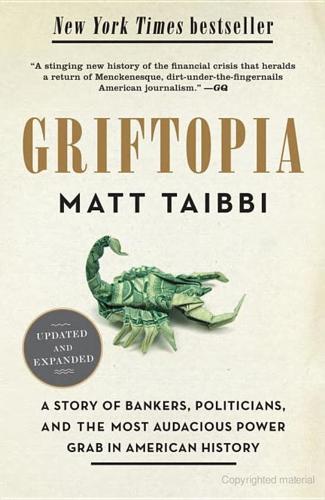
Griftopia: Bubble Machines, Vampire Squids, and the Long Con That Is Breaking America
by
Matt Taibbi
Published 15 Feb 2010
Far from taking care of the rest of us, the financial leaders of America and their political servants have seemingly reached the cynical conclusion that our society is not worth saving and have taken on a new mission that involves not creating wealth for all, but simply absconding with whatever wealth remains in our hollowed-out economy. They don’t feed us, we feed them. The same giant military-industrial complex that once dotted the horizon of the American states with smokestacks and telephone poles as far as the eye could see has now been expertly and painstakingly refitted for a monstrous new mission: sucking up whatever savings remains in the pockets of the actual people still living between the coasts, the little hidden nest eggs of the men and women who built the country and fought its wars, plus whatever pennies and nickels their aimless and doomed Gen-X offspring might have managed to accumulate in preparation for the gleaming future implicitly promised them, but already abandoned and rejected as unfeasible in reality by the people who run this country.

Death of the Liberal Class
by
Chris Hedges
Published 14 May 2010
It was characterized by a deep pessimism about human nature and found its ideological roots in moral philosophers such as the Christian realist Reinhold Niebuhr, although Niebuhr was frequently misinterpreted and oversimplified by those seeking to justify political passivity and imperial adventurism. This brand of liberalism, fearful of being seen as soft on communism, struggled to find its place in contemporary culture as its stated value systems became increasingly at odds with increased state control, the disempowerment of workers, and the growth of a massive military-industrial complex. By the time Cold War liberalism shifted into a liberal embrace of globalization, imperial expansion, and unfettered capitalism, the ideals that were part of classical liberalism no longer characterized the liberal class. What endures is not the fact of democratic liberalism but the myth of it.

Networks of Outrage and Hope: Social Movements in the Internet Age
by
Manuel Castells
Published 19 Aug 2012
The list of most frequently mentioned demands debated in various occupations hints at the extraordinary diversity of the movement’s targets: controlling financial speculation, particularly high frequency trading; auditing the Federal Reserve; addressing the housing crisis; regulating overdraft fees; controlling currency manipulation; opposing the outsourcing of jobs; defending collective bargaining and union rights; reducing income inequality; reforming tax law; reforming political campaign finance; reversing the Supreme Court’s decision allowing unlimited campaign contributions from corporations; banning bailouts of companies; controlling the military-industrial complex; improving the care of veterans; limiting terms for elected politicians; defending freedom on the Internet; assuring privacy on the Internet and in the media; combating economic exploitation; reforming the prison system; reforming health care; combating racism, sexism, and xenophobia; improving student loans; opposing the Keystone pipeline and other environmentally predatory projects; enacting policies against global warming; fining and controlling BP and similar oil spillers; enforcing animal rights; supporting alternative energy sources; critiquing personal leadership and vertical authority, beginning with a new democratic culture in the camps; and watching out for co-optation in the political system (as happened with the Tea Party).

The Age of Stagnation: Why Perpetual Growth Is Unattainable and the Global Economy Is in Peril
by
Satyajit Das
Published 9 Feb 2016
But the economic expansion had to coexist with the political uncertainty and confrontations of the Cold War. The need for the US and the Soviet Union to invest in weapons systems and maintain large defense establishments ironically helped growth. In his farewell address on January 17, 1961, President Eisenhower warned about the military-industrial complex—the relationship between politicians, the military, and defense industries that gave these players great power. During the Cold War, the US sought to limit the perceived communist threat to democracy and capitalism from what came to be known as the domino theory. In turn, the Soviet Union and China sought influence in international relations, especially over newly independent nations.

Microserfs
by
Douglas Coupland
Published 14 Feb 1995
Karla and I wrote a big list of "decadent cereals" on the office dry-erase wall: CAP'N CRUNCH: Reason this cereal is decadent: a) Colonialist exploiter pursues naive Crunchberry cultures to plunder. b) Drunkenness, torture, and debauchery implicit in long ocean cruises. SUGAR FROSTED FLAKES: Reason this cereal is decadent: Silky throated military-industrial complex spokestoad "Tony the Tiger" exploits the need of the undereducated underclass for a paternalistic, Reagan-like figure. A cautionary tale of the perils of not indoctrinating at the crèche level. TRIX: Reason this cereal is decadent: Well-meaning rabbit, "Trix," kept in continual state of malnutrition/subservience by dominant children of the parasitic bourgeoisie.

Hothouse Kids: The Dilemma of the Gifted Child
by
Alissa Quart
Published 16 Aug 2006
Her remark unwittingly undercuts the very premise of the series, suggesting not that babies can be made into Einsteins but that Einstein remained, in some sense, a baby. Additionally, I couldn’t help but recall that Albert Einstein was not an early bloomer. These videos are part of a DVD and toy fad that I call the Baby Genius Edutainment Complex. What I mean by the word complex here is two things. The first is as in “military-industrial complex”: as Webster’s has it, “a whole made up of complicated or interrelated parts,” and “a group of obviously related units of which the degree and nature of the relationship is imperfectly known.” The second is the psychological sense of the word: an exaggerated reaction to a situation. The complex is the first stage of the American passion for raising gifted children, reflecting the faith that, exposed to enough media, typically in tandem with equally stirring classes, bright children can be invented, and that precocity is the best insurance policy for one’s children.

The Great Depression: A Diary
by
Benjamin Roth
,
James Ledbetter
and
Daniel B. Roth
Published 21 Jul 2009
In Youngstown Roth witnessed his local steel mills operating at full capacity as the nation ramped up for war. Nationally, some leaders would even leave private industry altogether to head federal agencies, such as Donald Nelson, a former vice president of Sears-Roebuck, who chaired the U.S. War Production Board from 1942 to 1945. The relationship would outlast the war as the military-industrial complex: an alliance between big business and government that would endure with mutual satisfaction for decades to come as industries finally realized the profitability of government spending and debt. Business would also finally regain its long-missed position of authority and respectability that it believed had been lost during the Great Depression.

Broad Band: The Untold Story of the Women Who Made the Internet
by
Claire L. Evans
Published 6 Mar 2018
It would take even longer before a vision of programming as an art form with the potential to reshape the modern world came into focus. Chapter Three THE SALAD DAYS World War II was a war of technology. The relationships between government, private industry, and academia forged to gain a national edge on the Axis gave us the military-industrial complex and bankrolled a generation of technological innovators in the process. It’s unlikely computing would have developed as a field or an industry as quickly as it did without the complex calculations demanded by the war machine. The war made risks worth taking and accelerated everything. It also let women into the process.

The Perfect Police State: An Undercover Odyssey Into China's Terrifying Surveillance Dystopia of the Future
by
Geoffrey Cain
Published 28 Jun 2021
The RAND researchers called China’s emerging system a “digital triangle” that consisted of “booming commercial information-technology companies” like Huawei, “the state R&D institute and funding infrastructure,” and “the military.”18 What the report claimed, in other words, was that China was building a novel military-industrial complex, reconfigured for the needs of the future. [ ] In reality, however, in 2005 Chinese technology still lagged far behind the suspicions and fears of the Pentagon. The Chinese Academy of Sciences, a government-run body, lamented that year that Chinese technology firms were short-sighted and not very innovative.19 The government knew it had to catch up if it wanted to sustain its dream of an economic miracle.

Rough Sleepers: Dr. Jim O'Connell's Urgent Mission to Bring Healing to Homeless People
by
Tracy Kidder
Published 17 Jan 2023
Jim had resolved that issue for himself years ago, with help from Barbara McInnis. He had told her he was thinking of donating a hundred dollars to the Pine Street Inn, and Barbara had said, “Why don’t you just give it to the people you take care of? You won’t get a tax break, but at least you won’t be giving it to the military-industrial complex.” Not long afterward he’d found himself working with homeless people who were sheltering in a facility on the outskirts of the city, far from places where they could cadge money. So when the food trucks came to the site, the patients would hang back. He imagined them like kids at a candy store window.

Sunbelt Blues: The Failure of American Housing
by
Andrew Ross
Published 25 Oct 2021
Versions of its housing emergency are evident in almost every part of the country, and so innovative alternatives to the status quo of private market delivery are urgently needed. If not now, when? INCLUDE THE DWELLERS Everyone remembers Dwight Eisenhower’s warning about the expanding power of the “military-industrial complex” over government policy. Few recall his predecessor’s persistent complaints about the meddlesome influence of the real estate industry. In 1947, as he sought to preserve wartime national rent controls and save his emergency housing campaign for returning veterans, Harry Truman even sent a “special message to Congress” about the “stubborn obstacles” posed by what he called the “real estate lobby”: Its members have exerted pressure at every point against every proposal for making the housing program more effective.
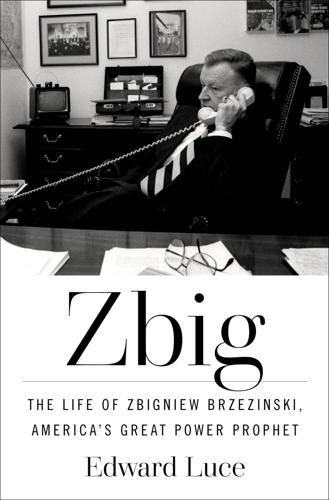
Zbig: The Life of Zbigniew Brzezinski, America's Great Power Prophet
by
Edward Luce
Published 13 May 2025
Brzezinski’s colleagues were “scared shitless,” so he volunteered to go down and speak to the students.92 SDS had uncovered alleged long-standing SIA ties to the US arms industry because of its relationship with the Institute for Defense Analyses, a think tank close to the Pentagon. Their inference was a big leap but not absurd. Though Columbia obviously did not sell arms, its relationship to the military-industrial complex had been cozy for decades. “Who rules Columbia?” the students chanted. Dressed in bandanas and motorbike helmets to protect themselves from police batons, hundreds of students surrounded the SIA building, which had a slogan-friendly consonance with “CIA.” They demanded that it be closed down.
…
Soviet Union, 399 US relations with, 203, 246–54, 274–76, 278–83, 408–9 The Choice: Global Domination or Global Leadership (ZB), 438 Chomsky, Noam, 375 Chopin, Frédéric, 11, 18–19, 31 Chou Enlai, 250 Christian Democrats (West Germany), 112, 125, 231 Christopher, Warren, 239, 275, 283, 334 on Afghanistan, 319 Iran hostage negotiations, role in, 368 Pakistan trip, 326–27 Taiwan trip, 276 Church, Frank, 185, 210–11, 297–300, 314 Churchill, Winston, 106 on the Battle of Warsaw, 9 and Chamberlain, 471n33 concessions made to Stalin by, 39–41 on Hitler, 42–43 on the Iron Curtain, 4 on Poland, 21, 42–43 Poland betrayed by, 87–88 (see also Yalta Conference) Polish resistance aid efforts by, 2 on the Soviet Union, 2 on US entry into the war, 37 warns of war, 24 CIA Afghan Student Alliance funded by, 319–20 black ops by, 314 criticism of methods of, 95 front organizations of, 148 and ISI, 327 on Kukliński, 418 and the National Committee for a Free Europe, 63 recruitment by, 76 RFE partly funded by, 71 on the Soviet economy, 157 Woodward on, 387 and ZB, 92–95 ZB applies to join, 60, 63 see also Kukliński, Ryszard Cichocki, Antoni, 49 Ciechanowski, Jan, 38 Clay, Lucius, 61 Clemenceau, Georges, 9 Clemons, Steve, 467 Clifford, Clark, 131, 195, 299–300 Clinton, Bill, 429–30 on Bosnia, 416–17 Budapest Memorandum negotiated by, 434 presidential election won by, 412 and Putin, 423 on Russia, 434 on the Tiananmen Square massacre, 409 ZB’s endorsement of, 412 Clinton, Hillary, 5, 416, 442–44, 448, 458 Cold War, 45 and bridge building in Eastern Europe, 108, 116, 122, 149–51, 406 CFR’s role in (see Council on Foreign Relations) containment strategy during, 107–8, 345 convergence theory of resolution of, 113–14, 157 domino theory, 106, 117 end of, 4, 409 peaceful engagement strategy, 107–10, 117, 122–24, 126–27, 179, 188, 227 return of, 330 scholarship on, 3, 64, 95–97 Soviet vs. US nuclear arsenal, 102–3, 204–5, 344, 349 and totalitarianism, 76 US strategy, 95, 107–8 Colonna di Paliano, Guido, 166 Columbia University advantageous location of, 97–98 and the military-industrial complex, 139–40 reputation of, 103–4 Research Institute on Communist Affairs, 104 Russian Institute, 104, 390 School of International Affairs, 139–40 Soviet studies at, 62 student protests at, 131, 138–40, 155 see also Brzezinski, Zbigniew—COLUMBIA Committee on the Present Danger, 204, 259, 300, 344 communism Chinese, reform of, 399–400 comparative, 96, 104, 110 containment of, 76, 106 domino theory of, 106, 117 McCarthyism/Red Scare, 76, 389 vs. nationalism, 53 predicted failure of, 397–400 research/scholarship on, 96, 104 Soviet, 76, 85, 94 “Communism Is Dead” (ZB), 126 Communist Party (Poland), 363 Communist Party (US), 111 Communist Party (Yugoslavia), 70 Concorde, 228 Conference on Security and Cooperation in Europe (CSCE), 238–39 see also Helsinki Final Act Congress for Cultural Freedom, 148 Congress of People’s Deputies (Soviet Union), 402 Congress of Vienna (1815), 98, 169 Connally, John, Jr., 355, 387 Conquest, Robert, 390 Conrad, Joseph, 19, 450 convergence theory, 113–14, 157 Copenhagen, 25 Copernicus, Nicolaus, 19 Council on Foreign Relations (CFR), 98, 105–7, 116, 118–19, 164–67, 182 counterculture, 138, 155, 170 Cox, Archibald, 175 Craig, Greg, 445 Cray supercomputer, 259 Croatia, 56, 416–17 Cronkite, Walter, 109, 312, 328, 353 CSCE (Conference on Security and Cooperation in Europe), 238–39 see also Helsinki Final Act CSIS (Center for Strategic and International Studies; Georgetown University), 376, 381, 383, 389, 415, 419, 437, 457 Cuba, 243 Sandinistas backed by, 298, 369 Soviet brigade in (alleged), 298–300 Cuban Missile Crisis (1962), 108, 257, 298, 300 Curie, Marie, 19, 450 Current Digest of the Soviet Press, 53 Cutler, Lloyd, 316, 335, 343, 345–46 Czech government in exile, 52, 72 Czechoslovakia Communist takeover of, 52 German occupation of, 30 Hitler’s annexation of, 24 Prague Spring, 135, 151 Russian language and culture in, 56 show trials and executions in, 85 Soviet invasion of, 135–36, 152, 321, 362 in the Soviet Union, 20 Sudetenland, 24, 110 (see also Munich Agreement) trade desired by, 116 union with Poland (proposed), 19–20 Czech Republic, 418 Daalder, Ivo, 445 Daily Worker, 111 Daley, Richard, 137–38, 170, 186 Dallek, Robert, 133 Dallin, Alexander, 104–5 Danton, Georges-Jacques, 289 Davies, Richard, 239 Davis, Norman, 52 Dayan, Moshe, 223, 226, 261–62, 266 Dayton Accords (1995), 417 The Decline of the West (Spengler), 177 Defense Analyses, 139 Defense Intelligence Agency, 269 de Gaulle, Charles, 116, 233 DeMille, Cecil B., 63 Democratic National Convention (Chicago, 1968), 133–34, 137–38, 170 Democratic National Convention (Miami, 1972), 168 Democratic National Convention (New York, 1976), 185–86 Democratic National Convention (New York, 1980), 339 Democratic National Convention (DNC) commission, 170 Democratic Party, 167–69, 384, 392–93, 430 Denend, Les, 352 Deng Xiaoping on Afghanistan, 254, 318, 322 and Kissinger, 249–50 reforms by, 399–400 on SALT II (see under SALT II) on the Soviet Union, 250 on Taiwan, 251, 253, 275 Tiananmen Square massacre, role in, 408 on US–Soviet relations, 252 US trip, 278–81 on Vietnam, 281 and ZB, 250–54, 260, 399, 408–9 Department of Energy, 345 Derian, Patricia, 211 détente in abeyance, 200 ABM Treaty, 170 asymmetry of, 177–79 and German reunification, 116, 123, 227–28 Nixon’s drive for, 163, 177 and peaceful coexistence, 158, 177–79 Soviet exploitation of, 179, 184 US pursuit of, 3, 122 warning stage of, 2 see also Helsinki Final Act dictator worship, 53–54 Dillon, Douglas, 106 Dinitz, Simcha, 223 Diplomacy (HK), 415 Diplomatic Academy of the Ministry of Foreign Affairs (Soviet Union), 403–4, 406 Dmowski, Roman, 16 Dobell, Peter, 167 Dobriansky, Lev, 475n62 Dobrynin, Anatoly, 194, 268 on Afghanistan, 321 on the Carter-Brezhnev summit, 293 on the Carter-Brzezinski-Vance team, 202 on HK, 368 on JC’s human rights talk, 200–201 on Muska’s art, 267 on the Rockefellers, 201 on the Soviet brigade in Cuba, 299 on the Soviet strategy in Africa, 245 on US relations with China, 274–75 Vietnam War policy of, 128 World Marxist Review meeting chaired by, 398–99 on ZB, 258 Dole, Bob, 256 Donbas (Ukraine), 54, 450, 456 Donilon, Tom, 340–41 Dowd, Maureen, 424 Dowding, Sir Hugh, 35 Drożniak, Edward, 123 Dubček, Alexander, 135, 151, 362 Dubs, Adolph, 318 Duch, Bolesław, 35–36 Duchêne, François, 166 Duda, Andrzej, 462 Dukakis, Michael, 6, 394–95 Dulles, John Foster, 76, 85–88, 288, 363 Dziewanowski, Marian, 64 Dylan, Bob (Robert Zimmerman), 186 Eagleburger, Lawrence, 392 Eagleton, Tom, 484n66 East Bloc.

The Zenith Angle
by
Bruce Sterling
Published 27 Apr 2004
The spy-sat contractors had the fix in, they had themselves a sweet racket. Now they have a flying gold-plated Cadillac with an engine that is Detroit junk. You wanna fix something? Go fix Lockheed Martin and General Dynamics.” “Okay, Tony. I hear you.” “You’re a pretty good guy, Van, but you’re not up for fixing the military-industrial complex. I’m not trying to tell you to rush out there with guns blazing and bring me some justice. I would never ask that of you, man. I’m just warning you to duck. That’s all I have to say.” “Thanks for the heads-up, Tony. I don’t forget stuff like this.” “I really shouldn’t have told you that, Van.

Pale Blue Dot: A Vision of the Human Future in Space
by
Carl Sagan
Published 8 Sep 1997
Think of what we could do with $100 billion for teacher training and salaries, school laboratories and libraries, scholarships for disadvantaged students, research facilities, and graduate fellowships. Is it really true that the best way to promote science education is to go to Mars? Another argument is that human missions to Mars will occupy the military-industrial complex, diffusing the temptation to use its considerable political muscle to exaggerate external threats and pump up defense funding. The other side of this particular coin is that by going to Mars we maintain a standby technological capacity that might be important for future military contingencies.

The End of Secrecy: The Rise and Fall of WikiLeaks
by
The "Guardian"
,
David Leigh
and
Luke Harding
Published 1 Feb 2011
He and two others, using the names Prime Suspect and Trax, founded International Subversives magazine, offering tips on “phreaking” – how to break into telephone systems illegally and make free calls. The magazine had an exclusive readership: its circulation was just three, the hackers themselves. Assange next set about hacking into the master terminal of Nortel, a big Canadian company that manufactured and sold telecommunications equipment. He also penetrated the US military-industrial complex, using his own sophisticated password-harvesting program, Sycophant. He hacked the US Airforce 7th Command Group Headquarters in the Pentagon, Stanford Research Institute in California, the Naval Surface War Center in Virginia, Lockheed Martin’s Technical Aircraft Systems plant in California, and a host of other sensitive military institutions.

Four Arguments for the Elimination of Television
by
Jerry Mander
Published 1 Jan 1977
THE INHERENT BIASES OF TELEVISION it hasn't done anything right or bold or creative in the recent past, do anything right or bold or creative in the immediate future? . . . AIl we hear today is that big business rips us off, the blacks are losing ground, work is meaningless, we're feeding a bloated military-industrial complex and that we oppress developing countries and rape their resources. An that is mostly inaccurate," Wattenberg said. The program concentrated on the virtues of big business. "For a11 its flaws, big business has provided more people with more needs and more luxuries." Compared with what preceded it, this was quite a simple show; narrow in conception, direct, featuring very simple, straightforward imagery: Wattenberg talking, interviews with corporate economists, and, amazingly, actual footage from ad- vertising commercials, showing how much research corpora- tions undertake in order to improve their products on behalf of al1 of us.

Memoirs of an Addicted Brain: A Neuroscientist Examines His Former Life on Drugs
by
Marc Lewis Phd
Published 5 Mar 2013
A great crush of people poured into Sproul Plaza, a square of tarmac stretched between the neoclassical pillars of the administration building and the shady steps of the student union. Various people stood on homemade platforms or benches, yelling and cajoling the crowd with loudspeakers. Lots about “The State” and the military-industrial complex. The Vietnam War seemed to come up every few sentences. But I could hardly hear the words above the roar. “Whose war is it? Is it our war?” A weak chorus of no’s from somewhere. “Or is it the war of the rich? The weapon makers! The money makers! The rulers of America want to rule the world!
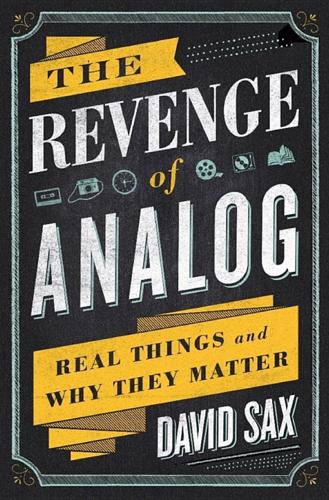
The Revenge of Analog: Real Things and Why They Matter
by
David Sax
Published 8 Nov 2016
It is highly complex, futuristic stuff, but then again, so are self-driving cars. Many say that analog is nothing less than the future of computers. Silicon Valley is an idealistic place, far more so than other industries, such as finance or manufacturing. Although its technical roots lie in the postwar military/industrial complex, its soul and heart are intimately tied to the counterculture movement of the late 1960s and early 1970s. When startup founders stand on stages at technology conferences and promise to change the world, their sentiment is genuine, and their belief in the transformational power of technology for good is downright religious.

Brexit, No Exit: Why in the End Britain Won't Leave Europe
by
Denis MacShane
Published 14 Jul 2017
Russia gets more bang for its buck in the sense that it can use its military to intervene in Georgia and Ukraine and menace Baltic states with overflight and cyber-interference. But the West also used its military to invade Iraq and overturn the state in Libya, and used its money to support efforts to topple Assad in Syria. There is uncertainty on the US military profile in Europe following President Trump’s election. However, the powerful US military-industrial complex is unlikely to turn its back on European engagement and all-important arms sales within a single presidential term. Trump’s appointment of a range of generals to key posts in his administration suggests that the Pentagon, with its acute sense of America’s geo-political role and responsibilities, will trump, as it were, the capricious isolationist utterances of the 2016 election campaign.
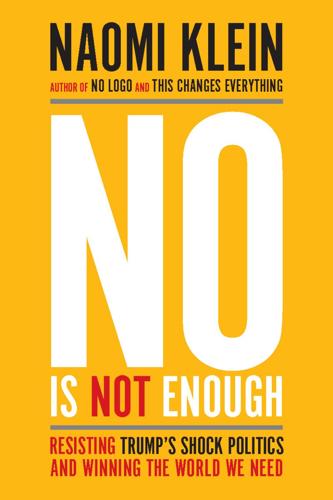
No Is Not Enough: Resisting Trump’s Shock Politics and Winning the World We Need
by
Naomi Klein
Published 12 Jun 2017
Which is why Mikhail Gorbachev, who worked toward disarmament when he was Soviet leader, wrote in Time magazine that today “the nuclear threat once again seems real. Relations between the great powers have been going from bad to worse for several years now. The advocates for arms build-up and the military-industrial complex are rubbing their hands.” (And that was before Trump upped the ante with North Korea.) There are many reasons why people around Trump, particularly the many who came straight from the defense sector, might decide that further military escalation is in order. As we saw, Trump’s April 2017 missile strike on Syria—ordered without congressional approval and therefore illegal according to some experts—won him the most positive news coverage of his presidency, with liberal hawks fawning over him as enthusiastically as his superfans on Fox.

Economists and the Powerful
by
Norbert Haring
,
Norbert H. Ring
and
Niall Douglas
Published 30 Sep 2012
Under his leadership, the movement worked to define policy formation as a highly technical and quantitative process, predicated on the authority of scientific expertise instead of politics (Amadae 2003). The rational choice movement was so successful at this that president Dwight Eisenhower would famously coin the phrase “military–industrial complex” in his farewell address to the nation in 1961 and express his fear that in the future “public policy could become the captive of a scientifictechnological elite.” (Bernstein 2001). Economists who could convince the conservative Gaither of the merits of their work and be invited to RAND, or one of its sister institutions, were in for the privilege of working for a high salary in a campus-style atmosphere but with no teaching burden at all (Amadae 2003).

Cockpit Confidential: Everything You Need to Know About Air Travel: Questions, Answers, and Reflections
by
Patrick Smith
Published 6 May 2013
Indeed, but here too the situation is worrying, as any American who travels globally can attest. Once again, it’s a funding issue. Our airports are failing, and nobody wants to pay for them. There’s little in the federal budget, while airports and airlines lack the lobbying strength of the pharmaceutical industry or the military-industrial complex. “Other parts of the world are more enlightened in their aviation policies than we are,” said Greg Principato, North American president of the Airports Council International, speaking at a conference in 2012. He added that members of the U.S. Congress have a poor understanding of how the upkeep and renovation of U.S. airports needs to be funded.

The Soul of a New Machine
by
Tracy Kidder
Published 1 Jan 1981
One Microkid started talking about a model of computer that was ten years old. He said, "They're really ancient." Uttered there, beside the crumbling stone wall, the statement sounded odd. "I've been here since seven," said one of the team, apropos of nothing. "I've been here since January," said another. A couple were discussing solar energy, the military-industrial complex and education. Engineering school was awfully specialized; meanwhile, the liberal arts were in decline. "Liberal arts, they're not economically viable," said one. "Does that mean you should restructure education or restructure society?" said the other. "You should restructure society.
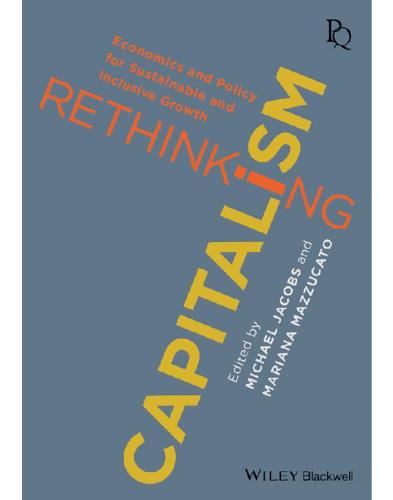
Rethinking Capitalism: Economics and Policy for Sustainable and Inclusive Growth
by
Michael Jacobs
and
Mariana Mazzucato
Published 31 Jul 2016
Likewise, Compaq and Intel received early-stage funding (to set up the companies), not from venture capital but from the public Small Business Innovation Research (SBIR) programme, which has been particularly active in providing early stage finance to risk-taking companies.41 It is sometimes assumed that such investments are only characteristic of the ‘military industrial complex’, with the Department of Defence playing the leading role. In fact, similar strategic investments have been made by the US government through the Department of Health and the Department of Energy. Around 75 per cent of the most innovative drugs on the market today (the so-called ‘new molecular’ entities with priority rating) owe much of their funding to the publicly funded National Institutes of Health (NIH).42 Since 2000, the NIH has invested more than $400 billion (2013 dollars) in the biotech-pharma knowledge base, $29 billion in 2013 alone.
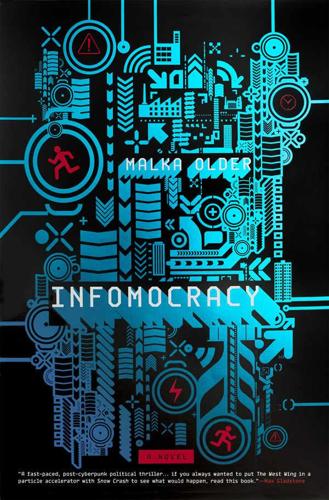
Infomocracy: A Novel
by
Malka Older
Published 7 Jun 2016
I heard someone famous talking about it, and I’m cobbling that together with hints and impressions and cackling self-congratulatory cryptic messages that I’ve been a party to over the last few weeks. That’s all.” Mishima studies him. “Why are you telling me all this? You should be dancing for joy that the election was disrupted.” “I hate your stupid pseudodemocratic infomocracy, true,” Domaine agrees. “But I would hate a corporate dictatorship manipulated by the military-industrial complex even more.” A pause. “So. How about dinner?” She stands up, this time without pretense. “You’re lucky I’m not telling them to throw away the key.” Mishima enjoys the faint panic in his eyes at that and adds that to the bile-green peak of self-disgust. “You’re going to leave me in here?

People of the Lie: The Hope for Healing Human Evil
by
M Scott Peck
Published 1 Jan 1983
Or is there Satan where once, long ago, a soul resided? I do not know. But I think the antiwar activists, the Berrigan brothers, are correct when they say that the task before us is nothing less than to metaphorically exorcise our institutions. There is no word adequate to describe the urgency of this task. The military-industrial complex that played such a large role in Vietnam, and continues to be a primary creator of the grotesqueness of the arms race, is submitted to nothing but the profit motive. This is no submission at all. It is pure self-interest. I am not an enemy of capitalism per se. I believe it is possible for the profit motive to be operative and at the same time submitted to higher values of truth and love.

The Moon: A History for the Future
by
Oliver Morton
Published 1 May 2019
But, as Bruce Springsteen suggests in “The River”, it could be something worse. The dissonant loss of the future that their childhood and their beliefs told them was inevitable spurred them on. It also wore them down. All of them felt some bitterness, some resentment, some anger; some of them felt all three and more. They were angry at NASA, at Congress, at the military-industrial complex, at everyone responsible for the future in space coming so far short of what it should have been. They were angry at fools who would not listen, at cynics who listened only to scoff, even at other true believers who didn’t adhere to quite the right version of the creed. At everyone who just didn’t get it.

Cataloging the World: Paul Otlet and the Birth of the Information Age
by
Alex Wright
Published 6 Jun 2014
Nelson’s writing shares much of the same utopian zeal that characterized Otlet’s work, but as noted he did not share Otlet’s faith in institutional authority. Otlet conceived of his systems at a time when the center was not holding, when a new centralized authority seemed to promise peace and stability over the warring nationstates. Nelson, by contrast, wrote during the rise of the counterculture, when the Cold War ascendancy of the U.S. military-industrial complex threatened to subsume the promise of computers for personal liberation. Nelson looked suspiciously on any attempts at imposing centralized hierarchical systems. Indeed, he regularly railed against hierarchies of all kinds. “From earliest youth I was suspicious of categories and hierarchies.”27 That distrust extended from file systems to bureaucratic structures of any kind.
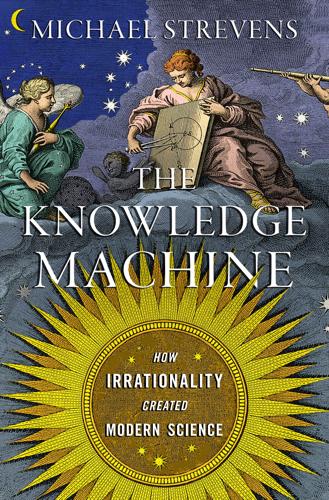
The Knowledge Machine: How Irrationality Created Modern Science
by
Michael Strevens
Published 12 Oct 2020
In supposing that scientists could not simultaneously contemplate rival grand theories, Kuhn was putting enormous conceptual weight on a few empirical findings and philosophical arguments, no doubt inspired by his own experience with Aristotle’s physics. He was moving with the zeitgeist, however, and his readers, or enough of them, went along with it. When Kuhn’s book appeared in 1962, it was still the age of the military-industrial complex, the man in the gray flannel suit, and William Whyte’s “organization man”—a complacent and compliant figure eager to fit into the system and carry out whatever plan was handed down from above. Figure 1.3. Organization men. The prevailing paradigm’s staffers cannot conceive of any other way to do science.
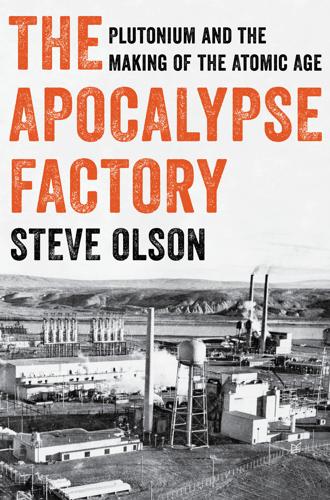
The Apocalypse Factory: Plutonium and the Making of the Atomic Age
by
Steve Olson
Published 28 Jul 2020
University Park: Pennsylvania State University Press. Hewlett, Richard G., and Francis Duncan. 1969. Atomic Shield 1947/1952. Volume II: A History of the United States Atomic Energy Commission. University Park: Pennsylvania State University Press. Hiltzik, Michael. 2015. Big Science: Ernest Lawrence and the Invention That Launched the Military-Industrial Complex. New York: Simon & Schuster. Hoddeson, Lillian, Paul W. Henriksen, Roger A. Meade, and Catherine Westfall. 1993. Critical Assembly: A Technical History of Los Alamos during the Oppenheimer Years, 1943–1945. New York: Cambridge University Press. Hoffman, Darleane. 2000. “Glenn Theodore Seaborg.”

Recoding America: Why Government Is Failing in the Digital Age and How We Can Do Better
by
Jennifer Pahlka
Published 12 Jun 2023
GPS also powers thousands of critical services that we take for granted today, like routing cell phone calls, sending electricity to our homes, and enabling us to get cash from an ATM. Even stock exchange trades now rely on GPS.1 It’s not much of an exaggeration to say we couldn’t function as a modern society without it. Like the internet itself, GPS started life in the military-industrial complex. In the 1970s, the Department of Defense decided that a robust, stable navigation system was critical to national defense, and it eventually developed a constellation of satellites that could establish one’s location within six feet. GPS provided dramatically greater coverage and accuracy than radio or radar navigation, but it was supposed to be available only to the military.
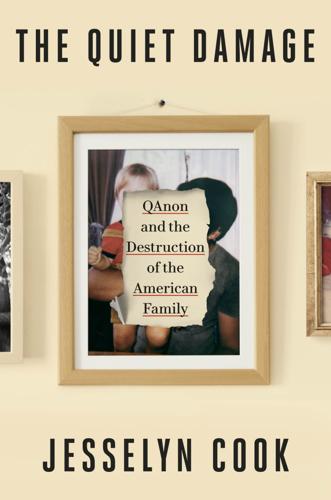
The Quiet Damage: QAnon and the Destruction of the American Family
by
Jesselyn Cook
Published 22 Jul 2024
She just hadn’t made it to the happy ending. The specifics laid out in The Fall of the Cabal were more extreme—vastly so—but many of the themes were spot on: A rigged system. Suffering innocents. Billionaire elites. Corporate oligarchs. Top-down conspiracy. Information gatekeepers. The military-industrial complex. Revolutionary justice for the everyman. And, above all, hope for the future. “Q portrays a better world without wars, treason, and corruption,” Ossebaard said, bringing an involuntary smile to Alice’s face. “And whether you like it or not, the task to get there has been put in the hands of Donald J.
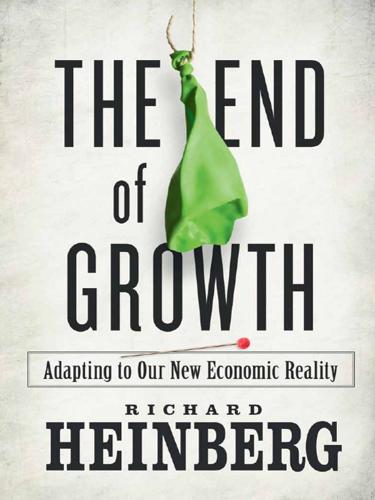
The End of Growth: Adapting to Our New Economic Reality
by
Richard Heinberg
Published 1 Jun 2011
This enormous military machine requires a vast supply system originating with American weapons manufacturers that in turn depend on a prodigious and ever-expanding torrent of funds from the Treasury. Indeed, the nation’s budget deficit largely stems from its trillion-dollar-per-year, first-priority commitment to continue growing its military-industrial complex. Yet despite the country’s gargantuan expenditures on high-tech weaponry, its armed forces appear to be stretched to their limits, fielding around 200,000 troops and even larger numbers of support personnel in Iraq and Afghanistan, where supply chains are both vulnerable and expensive to maintain.

The Vegetarian Myth: Food, Justice, and Sustainability
by
Lierre Keith
Published 30 Apr 2009
Throughout history governments have encouraged their farmers to grow more than enough grain, to protect against famine, to free up labor for other purposes, to improve the trade balance, and generally to augment their own power … The real beneficiary of this crop is not America’s eaters but its military-industrial complex. In an industrial economy, the growing of grain supports the larger economy: the chemical and biotech industries, the oil industry, Detroit, pharmaceuticals (without which they couldn’t keep animals healthy in CAFOs), agribusiness, and the balance of trade. Growing corn helps drive the very industrial complex that drives it.
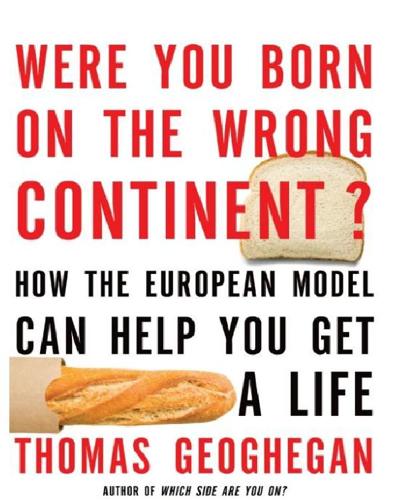
Were You Born on the Wrong Continent?
by
Thomas Geoghegan
Published 20 Sep 2011
We’d have fewer middle-class jobs and be even less competitive than the Europeans. And anyway, the whole military budget is roughly 4 percent of GDP, and even Europeans spend some money on defense—the over 17 percent of our GDP that goes just to health care alone dwarfs what goes into our military-industrial complex. Of course over in Europe they can push taxes too high. Yet as I hope to show with the Germans later in the book, when Europeans sense they are becoming less competitive, they know how to cut back. Even so, it’s only a nip and tuck, at least by our standards. When a European government cuts back on even one entitlement, it’s news around the world.

Europe old and new: transnationalism, belonging, xenophobia
by
Ray Taras
Published 15 Dec 2009
France’s greatest contribution to civilization, Makine affirmed, lies in its intellectual life. He twisted the question Stalin is said to have asked about the Vatican and writes: “‘Voltaire? Proust? Camus? How many divisions do they have?’”59 Immaterial divisions, Makine replies, but with a fighting spirit that matches all the world’s military-industrial complexes. Makine admires France for all the habitual reasons—the arts, the way of life, the gastronomy, fashion, chivalry, the affection for verbs. He cites from a letter written by Pushkin: “I want to speak to you in the language of Europe.”60 Français, naturellement. There is the French wine master who endearingly observes, “This is an intelligent wine.
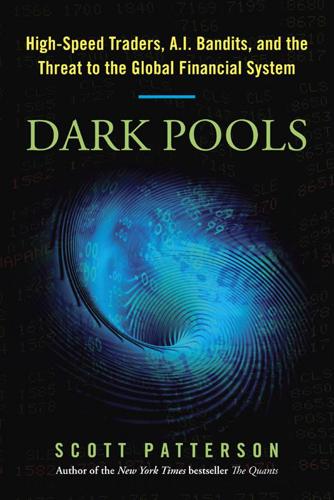
Dark Pools: The Rise of the Machine Traders and the Rigging of the U.S. Stock Market
by
Scott Patterson
Published 11 Jun 2012
The machine would have to analyze the lives of all past Nobel Prize winners, how they fared in grade school, their eye color, their ancestors, their DNA … and on and on, before checking the data against Haim Bodek’s own extensive history to find matching patterns. In the late 1980s and early 1990s, such computing power simply wasn’t available to anyone outside corporate giants such as IBM and the military-industrial complex. The supercomputer of that time performed on the level of today’s iPad. The Internet, a trove of data today, was in its infancy. There was no Google, no Wikipedia, no Twitter. Theories about predicting the future using computers were fantasies at best. But the question stayed with Bodek—even after he graduated from high school (despite skipping all of his senior-year finals), even after he used his sky-high SAT scores (making up for lackluster grades) to get into the University of Rochester, where he started pursuing his dream of predicting the future by immersing himself in study of the emerging science of artificial intelligence.
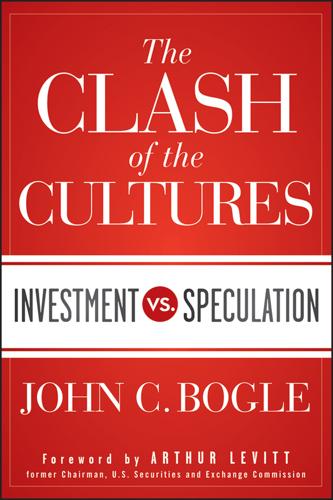
The Clash of the Cultures
by
John C. Bogle
Published 30 Jun 2012
With its January 2010 decision in the Citizens United case, the Supreme Court removed all legal restraints on the extent of corporate financial involvement in politics, a grotesque decision that can have only one effect: maximizing corporate—not national—value. “Capture has been further implemented through the extensive lobbying power of corporations. Abraham Lincoln’s warning about ‘corporations enthroned’ and Dwight Eisenhower’s about the ‘unwarranted influence by the military/industrial complex’ have been fully realized in our own time. “Capture has placed the most powerful CEOs above the reach of the law and beyond its effective enforcement. Extensive evidence of Wall Street’s critical involvement in the financial crisis notwithstanding, not a single senior Wall Street executive has lost his job, and pay levels have been rigorously maintained even when TARP payments had to be refinanced in order to remove any possible restrictions.

The Physics of Wall Street: A Brief History of Predicting the Unpredictable
by
James Owen Weatherall
Published 2 Jan 2013
Farmer had to buy a new suit to look presentable for meetings at places like Bank of America and Salomon Brothers. Things got even better after the New York Times Magazine ran a cover article called “Defining the New Plowshares Those Old Swords Will Make,” on how physicists, who had largely been absorbed into the military-industrial complex in the wake of World War II, were branching out as the Cold War came to an end. The article led with the Prediction Company — a perfect tie-in, given Farmer’s history with Los Alamos. After it appeared in print, hundreds of suitors began to call, from rich oil men to Wall Street banks. The trouble wasn’t getting money.

The Idealist: Aaron Swartz and the Rise of Free Culture on the Internet
by
Justin Peters
Published 11 Feb 2013
Washington, DC: ALA War Service, 1918. Kochen, Manfred, ed. The Growth of Knowledge: Readings on Organization and Retrieval of Information. New York: John Wiley and Sons, 1967. Lee, Alfred M. The Daily Newspaper in America. New York: Macmillan, 1937. Leslie, Stuart W. The Cold War and American Science: The Military-Industrial Complex at MIT and Stanford. New York: Columbia University Press, 1993. Lessig, Lawrence. Free Culture: How Big Media Uses Technology and the Law to Lock Down Culture and Control Creativity. New York: Penguin, 2004. Levy, Steven. Hackers: Heroes of the Computer Revolution. New York: Penguin, 2001.

The Road to Character
by
David Brooks
Published 13 Apr 2015
Echoing the thrifty ethos of his childhood, he reminded the nation that we cannot “mortgage the material assets of our grandchildren without risking the loss also of their political and spiritual heritage.” He warned, most famously, about the undue concentration of power, and the way unchecked power could lead to national ruin. He warned first about the military-industrial complex—“a permanent armaments industry of vast proportions.” He also warned against “a scientific-technological elite,” a powerful network of government-funded experts who might be tempted to take power away from the citizenry. Like the nation’s founders, he built his politics on distrust of what people might do if they have unchecked power.

How the Post Office Created America: A History
by
Winifred Gallagher
Published 7 Jan 2016
Members of Congress knew that in the new postwar global superpower, huge defense contracts trumped postal patronage. (Republican president Dwight Eisenhower famously remarked about the fact in his farewell address: “In the councils of government, we must guard against the acquisition of unwarranted influence, whether sought or unsought, by the military-industrial complex.”) That said, the spoils system, though waning, still provided some political clout, which modernizing the system along more businesslike lines would necessarily end. Last but far from least, politicians heard less about the post from constituents, who, even though they generated much more mail than previous generations, took the service for granted and weren’t as exclusively dependent on it.

The Bitcoin Standard: The Decentralized Alternative to Central Banking
by
Saifedean Ammous
Published 23 Mar 2018
The relative fiscal restraint of the first few years after World War II soon gave way to the politically irresistible temptation of buying free lunches through inflation, particularly to the warfare and welfare states. The military industry that prospered during World War II grew into what President Eisenhower called the Military–Industrial Complex—an enormous conglomerate of industries that was powerful enough to demand ever more funding from the government, and drive U.S. foreign policy toward an endless series of expensive conflicts with no rational end goal or clear objective. The doctrine of violent militant Keynesianism claimed this spending would be good for the economy, which made the millions of lives it destroyed easier to stomach for the American electorate.

On Grand Strategy
by
John Lewis Gaddis
Published 3 Apr 2018
House wasn’t a real colonel, but had been awarded that title by Texas governor James Stephen Hogg in 1893, presumably for political services rendered. 42. David Milne, Worldmaking: The Art and Science of American Diplomacy (New York: Farrar, Straus and Giroux, 2015), pp. 95–96. 43. Neu, Colonel House, p. 142; also Cooper, Woodrow Wilson, pp. 263–66. 44. See Katherine C. Epstein, Torpedo: Inventing the Military-Industrial Complex in the United States and Great Britain (Cambridge, Massachusetts: Harvard University Press, 2014). 45. Cooper, Woodrow Wilson, pp. 285–89; also Erik Larson, Dead Wake: The Last Crossing of the Lusitania (New York: Broadway Books, 2015). 46. Neu, Colonel House, p. 270. 47. Thomas Boghardt, The Zimmermann Telegram: Intelligence, Diplomacy, and America’s Entry into World War I (Annapolis: Naval Institute Press, 2012). 48.
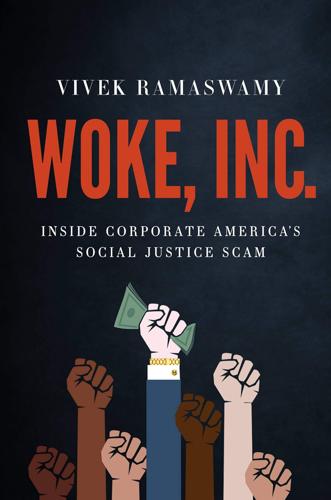
Woke, Inc: Inside Corporate America's Social Justice Scam
by
Vivek Ramaswamy
Published 16 Aug 2021
But he certainly did a few more backflips in the months following the presidential election. Consider what happened in January 2021 in the aftermath of the Capitol riot. A deplorable and disgraceful assault on our democratic process by misguided rioters in Washington, D.C., was met in kind with Big Tech’s deliberate and coordinated assault on personal freedoms. Just as the military-industrial complex seized on 9/11 to implement a permanent new surveillance state beginning in the early 2000s, the newly ascendant woke-industrial complex in America seized on January 6 to do something similar. Based on tenuous charges of “incitement to violence” and “hate speech,” Facebook18 and Twitter19 banned, suspended, and removed accounts associated with Donald Trump, the sitting US president, including the official White House and the official POTUS Twitter accounts.

Pure Invention: How Japan's Pop Culture Conquered the World
by
Matt Alt
Published 14 Apr 2020
The camera pulls farther back, revealing more of a mysterious urban landscape that, it becomes obvious, is nowhere we have ever seen—nowhere that has ever existed. We soar over rooftops, turrets, and machinery, all encircled by high walls marked with a mix of Arabic numerals and Asian calligraphy. A tense drumbeat swells as smokestacks belch into the midnight sky. This is less a city than a fortress; a literal military-industrial complex. The screen flares, and a title appears: FINAL FANTASY VII. The rising strains of a synthesizer—haunting, melancholic—hint at wonders to come. Final Fantasy VII was a video game, and when it debuted in 1997, the world had never seen anything like it. It was the latest installment in a popular (and increasingly misnamed) series, but previous Final Fantasy titles had been delivered in the standard, two-dimensional, squashed and flattened perspective of traditional video games.
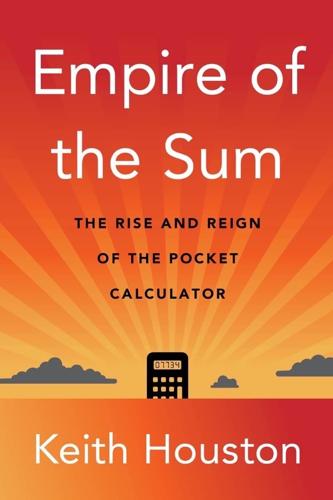
Empire of the Sum: The Rise and Reign of the Pocket Calculator
by
Keith Houston
Published 22 Aug 2023
“These objections were difficult to overcome,” Kilby deadpanned in a paper describing his invention, “because they were all true.”17 Yet for texas instruments, the promise of the integrated circuit† outweighed the disadvantages, and the firm pushed ahead regardless.18 In 1958, the same year that Jack Kilby had pioneered the integrated chip, the U.S. Air Force had set itself the goal of making electronics circuits ten times smaller than current systems while increasing reliability by the same factor.19 Of all the companies that made up the latter component of the military-industrial complex, Texas Instruments was the first to meet the Air Force’s challenge, and it did so in typically showy style. In October 1961, Pat Haggerty joined Air Force personnel to demonstrate two computers to audiences in Dayton, Ohio; Washington, DC; and Los Angeles, California.20 The two machines were functionally identical, capable of little more than addition, subtraction, multiplication, division, and square roots, but in construction they were radically different.
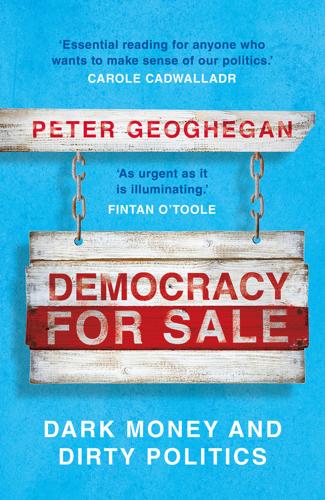
Democracy for Sale: Dark Money and Dirty Politics
by
Peter Geoghegan
Published 2 Jan 2020
The American arm even paid for Fox and other senior Tories to fly to America.24 Atlantic Bridge’s anonymous funding increased dramatically after its relationship with ALEC was established. The charity’s US arm hired a raft of well-connected lawyers and lobbyists with links to America’s military-industrial complex.25 Catherine Bray was brought in to run international affairs. Bray, who later worked for Daniel Hannan, had previously been employed by Tory MEPs Richard Ashworth and Roger Helmer, who later defected to UKIP. Atlantic Bridge researcher Gabby Bertin – whose post was funded by pharmaceutical giant Pfizer26 – became David Cameron’s press secretary.

When It All Burns: Fighting Fire in a Transformed World
by
Jordan Thomas
Published 27 May 2025
Airplanes that had dropped bombs on cities were retrofitted with fire retardant. By 1961, when departing president Dwight D. Eisenhower warned that the profitability of the American military would create a self-perpetuating monster that fed on the same conflicts it produced, James’s proposed war on nature had become a reality. But instead of supplanting the military-industrial complex, as James had hoped, the war on nature grew in tandem with it. One man at our station had lived through the growth of the industry of fire suppression. His name was Mark Linane. Though he was mostly retired, everyone called him Supe because he had formerly spent almost thirty years as the superintendent of the Los Padres Hotshots (the position now held by Aoki).

They All Came to Barneys: A Personal History of the World's Greatest Store
by
Gene Pressman
Published 2 Sep 2025
Plans were put in place for an enormous protest on May 4, which would gather three thousand people to Syracuse’s main quad, where solidarity with the national strike was declared and three demands announced: an immediate end to American involvement in the war in South Asia, the release of Bobby Seale and peace with the Black Panthers, and an end to Syracuse’s complicity with the military-industrial complex. It was in the middle of this protest that news broke of the Kent State shootings in Ohio, where National Guard members fired on protesting students, killing four of them. On campus, I supported the strike cause in my own fashion. That spring, I was tooling around in my parents’ old car, a racing-green Jaguar, with STRIKE signs posted in the windows—not exactly a VW bus.

Mood Machine: The Rise of Spotify and the Costs of the Perfect Playlist
by
Liz Pelly
Published 7 Jan 2025
Instead, Muzak opened a recording studio in New York to crank out original tracks—an interesting precedent for the direction Spotify would eventually take commissioning ghost artists—and for $1.50 per month, a subscriber could have three channels of background music and news piped into their home.7 Muzak’s ownership changed hands many times in the years that followed, eventually landing under the guidance of an advertising executive turned university vice president, who, like the tech overlords before and after him, turned to pseudoscientific research as a marketing tactic. By the 1940s, there had been a surge of university research on topics like workplace productivity and music therapy, and it had a surprising role in bolstering the military-industrial complex, lulling the makers of war materials: the BBC radio program Music While You Work was meant to boost the moods of workers in weapons factories, and soon enough the U.S. had thousands of war factories wired for Muzak, too.8 The new research-driven direction of Muzak led the company to eventually claim that its peppy, anonymous orchestral tracks could help increase workplace productivity by more than 10 percent.
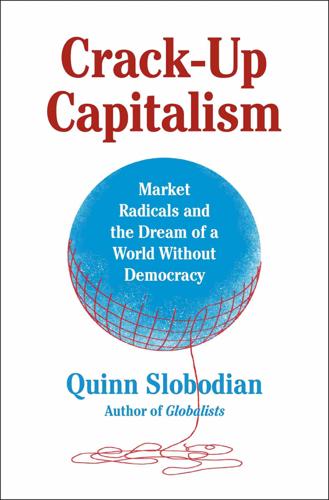
Crack-Up Capitalism: Market Radicals and the Dream of a World Without Democracy
by
Quinn Slobodian
Published 4 Apr 2023
When he found them, he did his best to deepen them. In the 1960s, he saw promise in the New Left’s opposition to the Vietnam War.7 Rothbard hated the war too. He saw America’s self-appointed role of global policeman as a pretext for centralizing state power and expanding the cronyism, waste, and inefficiency of the military-industrial complex.8 A tax-funded standing army with a monopoly on modern weaponry was anathema to his principles, and conscription was “mass enslavement.”9 Although Rothbard’s anarcho-capitalism was rejected by the socialist New Left, he wondered if their opposition to some actions of the state might be converted into hatred of the state as such.
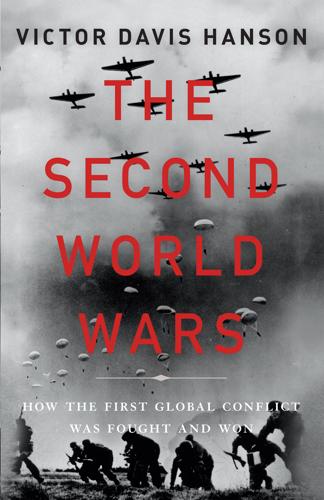
The Second World Wars: How the First Global Conflict Was Fought and Won
by
Victor Davis Hanson
Published 16 Oct 2017
Stalin harped on the absence of a second front in Western Europe in 1943, but he largely kept silent about the help that the Anglo-American strategic bombing campaign offered in reducing numbers of German anti-tank guns and Luftwaffe ground-support sorties, not to mention the necessity of redeploying Wehrmacht air and anti-aircraft assets to meet the Allied invasions of North Africa, Sicily, and Italy.24 THE ASSUMPTIONS OF 1939–1940 that there could be a “moral” and scientifically precise targeting of military-industrial complexes soon gave way to the area bombing of civilian centers, a few of them without much strategic importance. That alarmists and appeasers were wrong in 1939 about the likely damage from strategic bombing did not mean that they would not be right by 1944. Through 1941, effective precision bombing was beyond the technological capacity of either Allied or Axis contemporary bombers.
…
And by July, the Red Army was about the same distance from Berlin as were the newly landed Allies in Normandy. The veteran Russians were closer to the heartland of traditional German militarism in East Prussia, but the Allies in the West were also only about five hundred miles from the industrial Ruhr and the center of the German military-industrial complex. The paradox arose that the Allies could reach central Germany at about the same time as the Russians, even though they would have been only fighting in northern Europe less than a year in comparison to the Soviets’ four in the East, and would kill a small percentage of the German soldiers compared to those who fell to the Red Army.

Chaos: Making a New Science
by
James Gleick
Published 18 Oct 2011
He developed a feeling that the interesting things in the world had to do with biology and mathematics and a companion feeling that no standard combination of the two subjects did justice to what was interesting. So he decided not to take a standard approach. He took a five-year course in engineering physics at Cornell University, learning applied mathematics and a full range of hands-on laboratory styles. Prepared to be hired into the military-industrial complex, he got a doctorate in biology, striving to combine experiment with theory in new ways. He began at Johns Hopkins, left because of conflicts with the faculty, continued at Princeton, left because of conflicts with the faculty there, and finally was awarded a Princeton degree from a distance, when he was already teaching at the University of Chicago.
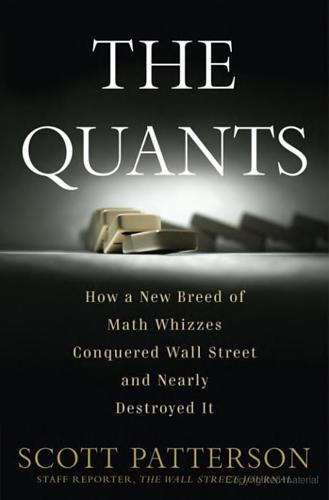
The Quants
by
Scott Patterson
Published 2 Feb 2010
The rise of the personal computer, increased volatility due to fluctuating inflation and interest rates, and options and futures exchanges in Chicago and New York created the perfect environment for the brainiacs from academia. Physicists, electrical engineers, even code breakers trained by the military-industrial complex found that they could use the math they’d always loved to make millions in the financial markets. Eventually programs dedicated to the singular goal of training financial engineers cropped up in major universities around the country, from Columbia and Princeton to Stanford and Berkeley.

Poisoned Wells: The Dirty Politics of African Oil
by
Nicholas Shaxson
Published 20 Mar 2007
“Businessmen, some of whom had already been fingered for corruption, [had] moved their money into the media, knowing that no editor will publish defamatory material about one of the group’s major shareholders,” said a French policeman who had dug into political party financing in France (and was later sacked).25 Joly herself talks of a “media-industrial complex”—reminiscent of President Eisenhower’s warning in 1961 about the dangers of unwarranted influence from the “military-industrial” complex in the United States. Meanwhile, her colleagues grew distant. “Not a word of sympathy . . . in the corridors, haughty indifference,” she wrote. “I felt as if I were radioactive . . . it wounded me, but I saw that the hostility was directed not so much at me. It was their way of denying the reality of the Elf Affair.”26 In 1997—the year that the enigmatic Mr.
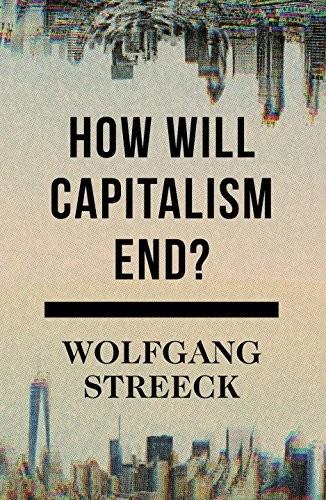
How Will Capitalism End?
by
Wolfgang Streeck
Published 8 Nov 2016
As it appears, in both Afghanistan and Iraq a majority of the American ground forces were mercenaries employed by firms such as Blackwater, attracted by new opportunities for safe and profitable investment in what used to be a public sector industry (on Blackwater see Sean McFate, The Modern Mercenary: Private Armies and What They Mean for World Order, Oxford: Oxford University Press 2015). Subcontracting warfare to private industry is likely to give rise to active lobbying of domestic firms for an interventionist foreign policy, resembling what had been envisaged by older theories of a ‘military-industrial complex’. Of course being able to rely on private providers of lethal force relaxes whatever inhibitions the American or British governments may have on military intervention on the capitalist periphery, not least because commercialized violence is easier to hide from public view. 41Jeffrey A.

Radicals Chasing Utopia: Inside the Rogue Movements Trying to Change the World
by
Jamie Bartlett
Published 12 Jun 2017
This included a Transhumanist Bill of Rights advocating government support of longer lifespans via science and technology, rights for robots and cyborgs, phasing out of all individual taxes (because Zoltan believes robots will be taking most human jobs in the next twenty years), morphological freedom (the right to do anything with your body as long as it doesn’t harm other people), replacing prisons with small squadrons of drones that will follow convicted criminals around, legalising recreational drugs (he wants to be the first president to smoke weed in the White House*) and eliminating all physical disabilities. But his main policy, his big-ticket pitch, is to create ‘a scientific- and educational-industrial complex’ that would replace the military-industrial complex and end ageing and death within a generation. Zoltan found a classified ad for a 1978 Blue Bird Wanderlodge RV in nearby Sacramento, which he bought for $10,000, drove home and parked in his driveway. He then set up a page on the crowdfunding website Indiegogo asking for $25,000 to fund the ‘Immortality Bus with Presidential Candidate Zoltan’ (including ‘$15,000 for making the bus; $5,000 for a full size interactive robot and other tech; $5,000 for gas, food etc’*).

I Can't Breathe
by
Matt Taibbi
Published 23 Oct 2017
It was to be a plan of unity and integration, finally fixing the inequities of American society, where “no child will go unfed, and no youngster will go unschooled.” The ensuing series of legislative programs passed included Medicare, Medicaid, the Civil Rights Act, the Voting Rights Act, the Food Stamp Act, even the Public Broadcasting Act that created PBS. The Great Society was to domestic politics what the moon program was to the military-industrial complex, an audacious long shot. The very phrase “War on Poverty” conjured images of the unity and collective determination America had employed to defeat the Nazis. These programs were never meant to be an expensive Band-Aid used to maintain a perpetual uncomfortable détente between rich and poor, black and white.
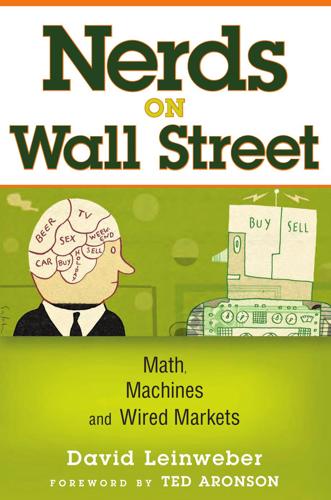
Nerds on Wall Street: Math, Machines and Wired Markets
by
David J. Leinweber
Published 31 Dec 2008
“The Tumescent Threat” became a huge best seller, albeit a free one. Very few RAND Papers needed to be reprinted to meet demand, but this rocketed to the top of the hit list. Thousands of copies went to the Pentagon, Crystal City (the Navy HQ in Arlington County, Virginia), and all the far-flung outposts of the military-industrial complex. Eventually, the powers in place noticed and actually read it themselves. Kevin was called into the office of RAND’s president, Don Rice (later secretary of the Air Force). Intr oduction xxv Rice (holding up a copy): “Dr. Lewis, are you the author of this paper?” Kevin: “Yessir, I am.”

Whole Earth Discipline: An Ecopragmatist Manifesto
by
Stewart Brand
Published 15 Mar 2009
Reading The Omnivore’s Dilemma (2007), Michael Pollan’s natural history of American agriculture, I was surprised by this passage:Organic Gardening and Farming struggled along in obscurity until 1969, when an ecstatic review in the Whole Earth Catalog brought it to the attention of hippies trying to figure out how to grow vegetables without patronizing the military-industrial complex. Within two years Organic Gardening and Farming’s circulation climbed from 400,000 to 700,000. At Whole Earth we did indeed promote the intensely organic publications from Rodale Institute in Pennsylvania, and I got to be friends with Bob Rodale. Pollan mentions also the influence of an essay we carried by farmer-poet Wendell Berry in praise of Sir Albert Howard, whose 1940 book, An Agricultural Testament, laid the foundation for the organic movement.
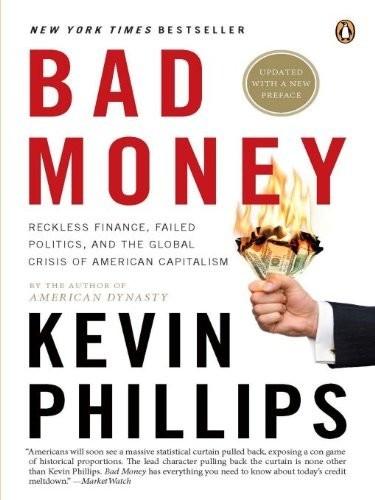
Bad Money: Reckless Finance, Failed Politics, and the Global Crisis of American Capitalism
by
Kevin Phillips
Published 31 Mar 2008
Kevin Phillips casts his keen eye upon the making of the Bush family dynasty across four generations, documenting how it has perfectly exemplified many of the growing trends in American political life—political and economic dynastization, favoritism to the top 1 percent even after a tight election, paper entrepreneurialism and crony capitalism à la Enron (Bush-Enron dealings go back to 1986), and the further rise of the military-industrial complex. In this devastating book, onetime Republican strategist Phillips reveals how four generations of Bushes have ascended the ladder of national power since World War I, becoming entrenched within the American establishment—Yale, Wall Street, the Senate, the CIA, the vice presidency, and the presidency—through a recurrent flair for old-boy networking, national security involvement, and political deception.

Rust: The Longest War
by
Jonathan Waldman
Published 10 Mar 2015
He stepped out of the lights, took a seat in the director’s chair, crossed his legs, and rolled his second cigarette of the morning, from a pouch of Bugler Turkish tobacco. When he finished, he went outside to smoke in the shade of the trailer. There I asked him how Dunmire persuaded him to do these corrosion videos. “It didn’t take a lot of convincing, once I knew he wasn’t a stalker,” Burton said. Then he added, “The military-industrial complex is obsessed with Star Trek.” In his first years in the Office of the Secretary of Defense, when Frank Carlucci was the boss and Dunmire was just a GS-9, Dunmire attended his first Star Trek convention. He went dressed as a civilian, brought his wife, and met James Doohan, who’d played Scotty, the engineer in the original series.

How I Found Freedom in an Unfree World: A Handbook for Personal Liberty
by
Harry Browne
Published 1 Jan 1973
During recent years they've included such things as pollution, civil rights, overpopulation, drugs, conservation, communism, consumerism, women's liberation, poverty, organized crime, law and order, disappearance of animal species, the sexual revolution, government solvency, pornography, educational problems, mental illness, privacy, high taxes, the Vietnam war, campus riots, the military-industrial complex, police brutality, and disarmament. Plus perhaps a dozen more I've overlooked, plus a few more that have become issues since I wrote this. All these issues are presented as matters commanding your attention and participation. But how could you possibly become involved in all of them? And if you could, what would become of your freedom?
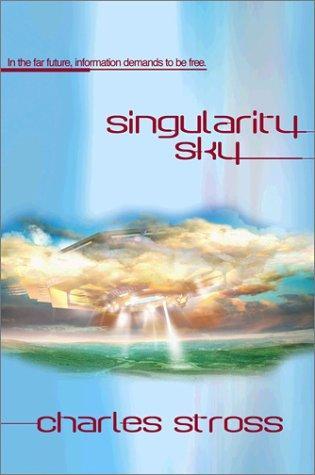
Singularity Sky
by
Stross, Charles
Published 28 Oct 2003
Vassily was aimlessly circling the perimeter of the clearing. "Normally, I'd go to ground in the old town and wait. In six months, there'll be a merchant ship along. But with the Festival—" "There'll be ships," Martin said with complete assurance. "And you've got a cornucopia, you've got a whole portable military-industrial complex. If it can make us a lifeboat, I'm sure I can program it to manufacture anything we need to survive until we've got a chance to get off this godforsaken hole. Right?" "Probably." She shrugged. "But first I really ought to make contact, if only to verify that there's no point in handing the luggage over."

The American Way of Poverty: How the Other Half Still Lives
by
Sasha Abramsky
Published 15 Mar 2013
For the past several years he had been working to build an understanding of these connections amongst his congregation. His team had focused on nine key economic justice themes—from the role of money in politics, through to “the need for taxation in a civilization”; from the influence of the military-industrial complex, through to the disproportionate economic hardship borne by minorities during the post-2007 recessionary years. “We see,” he explained, “the reflection of economic disparity in each of these issues, which means we also see a power disparity. They all contribute to structural violence—where you get things like the school-to-prison pipeline.”
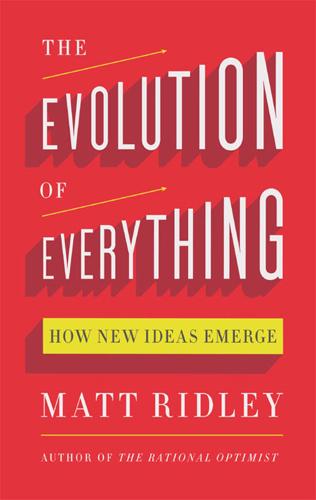
The Evolution of Everything: How New Ideas Emerge
by
Matt Ridley
The web servers that I am using to research my facts are powered by Apache software, another open-source program. This is, to borrow John Barlow’s phrase, ‘dot-communism’: a sharing, swapping community of people who contribute to joint effort and expect no private rewards. What a splendid irony, that from the bowels of the Cold War military-industrial complex in the capitalist United States, there emerged a technology of ‘dense, diverse and decentralised exchange’ that is producing something far more like the ideal of Marxism than communist regimes ever did. The balkanisation of the web For a while, we all got the point. We crowd-sourced and wiki-ed and clouded our lives.
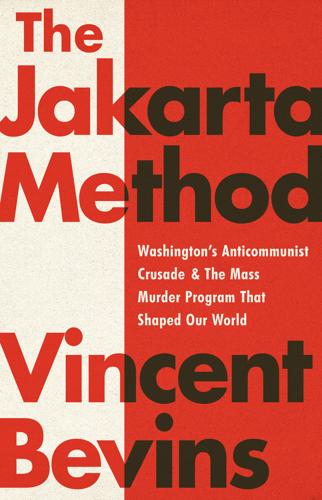
The Jakarta Method: Washington's Anticommunist Crusade and the Mass Murder Program That Shaped Our World
by
Vincent Bevins
Published 18 May 2020
From then on, he would have to deal with the CIA Wisner had created and with the problems it had bequeathed to him, and he would now govern while being accused of being soft on communism himself. Even Khrushchev ridiculed Kennedy for the failure in Cuba. Although Castro is not a Communist, “You are well on the way to making him a good one,” the Soviet leader told JFK. Privately, Khruschev told Communist allies he feared Kennedy was no match for the huge military-industrial complex in the US, and worried the young president couldn’t keep the “dark forces” of his country at bay.27 It was just four days after the Bay of Pigs invasion, as JFK was still piecing his presidency together, that that President Sukarno came to visit. For the Indonesian president, the parallels between the Bay of Pigs and what Indonesia had gone through in 1958 were obvious.
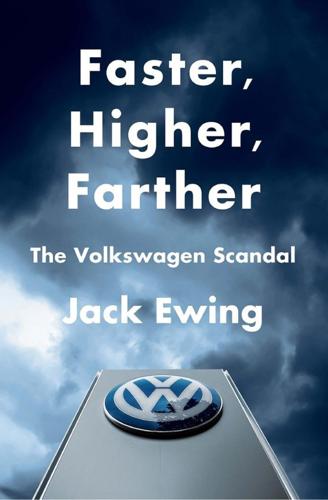
Faster, Higher, Farther: How One of the World's Largest Automakers Committed a Massive and Stunning Fraud
by
Jack Ewing
Published 22 May 2017
Volkswagen even had its own specially built cargo ship, the Johann Schulte, which could carry 1,750 vehicles to overseas markets. During the 1960s, Volkswagen was the best-selling foreign-made auto in the United States. As protests against the Vietnam War gathered force, Volkswagen tapped into the backlash against consumerism and the military industrial complex, with which the Detroit automakers were identified. (Robert McNamara had been president of Ford before becoming secretary of defense during the Vietnam era.) Volkswagen Beetles and vans, often painted with peace signs and psychedelic colors, were ubiquitous among the lines of cars backed up on the way to the Woodstock festival in 1969.

Decoding Organization: Bletchley Park, Codebreaking and Organization Studies
by
Christopher Grey
Published 22 Mar 2012
A second reason is that BP exemplifies one of the most profound developments in organizational life, in developed societies at least, during the twentieth century and beyond: the very close enmeshment of the institutions of the state, business and civil society (Middlemas, 1979; Cronin, 1991; Edgerton, 2011). Of course, these are always necessarily intertwined to a degree, but as a result, in particular, of wars (both ‘hot’ and ‘cold’) the twentieth century saw the emergence not just of a ‘military– industrial complex’ but, more generally, an orchestration of civilian t h e p o s s i b i l i t i e s o f h i s t o r i c a l d i s t a n c e 19 populations by and through the state. The most literal instantiation of this orchestration might be the mobilization of civilians within the context of total war, and BP is one of many illustrations of this.
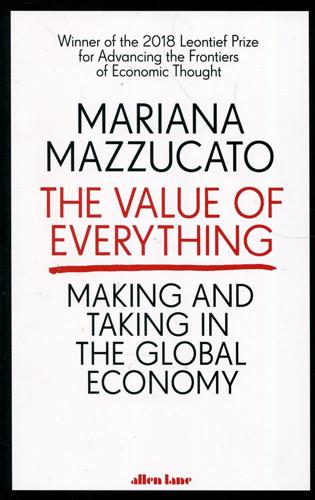
Value of Everything: An Antidote to Chaos The
by
Mariana Mazzucato
Published 25 Apr 2018
Nevertheless, the VC industry's growth was sedate until the 1980s, when it boomed, the role of pension funds upboosting its capital. From the start of the VC industry, entrepreneurs and venture capitalists had often surfed on a wave created by decades of government investment. Starting after the Second World War, government investment in high-tech ventures grew significantly in the 1950s as part of the military-industrial complex, largely due to the Cold War.8 Before becoming famous around the world as ‘Silicon Valley', a name coined in 1971, the San Francisco Bay area was producing technology for military use or, from the 1960s, spin-offs of military technology for commercial purposes.9 The first formal VC firm in Silicon Valley - Draper, Gaither and Anderson - was headed by two former US Army generals and the author of a secret report to President Eisenhower on how the US should respond to the USSR's launching of Sputnik.10 Much of the work to commercialize military technology was done in the research labs of established ICT companies like General Electric, Texas Instruments, AT&T, Xerox and IBM.

New Laws of Robotics: Defending Human Expertise in the Age of AI
by
Frank Pasquale
Published 14 May 2020
American defense forces may insist that threats from parts of Iraq and Pakistan are menacing enough to justify constant watchfulness, but they ignore the ways such hegemony can provoke the very anger it is meant to quell. Grappling with the need for cooperation in an world that cannot be unilaterally mastered is a viable alternative to techno-capital’s arms races. At present, though, the military-industrial complex is speeding us toward the development of “human-out-of-the-loop” drone swarms, ostensibly because only machines will be fast enough to anticipate the enemy’s counterstrategies. This is a self-fulfilling prophecy, tending to spur an enemy’s development of the very technology that supposedly justifies militarization of algorithms.91 To break out of this self-destructive loop, we need to start grappling with the thought of public intellectuals who question the entire reformist discourse of imparting ethics to military robots.
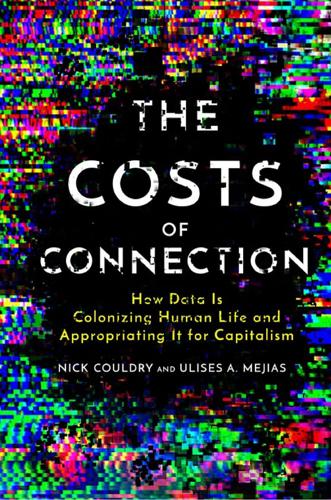
The Costs of Connection: How Data Is Colonizing Human Life and Appropriating It for Capitalism
by
Nick Couldry
and
Ulises A. Mejias
Published 19 Aug 2019
In all societies characterized by increasingly overwhelming information flows, the premium on society’s legibility, even its basic countability, grows.71 In capitalist societies that are not democracies, such as China, capitalism’s desire for the control of production inputs works hand in hand with government’s unrestrained desire to control all inputs to the social order. This newly intensified role for both capitalism and governments in managing social life became possible only through the unprecedented technological opportunities for connection that we know collectively as the internet. Their origins lie in investment from the US Cold War military-industrial complex and subsequent massive corporate investment that transformed the internet into a global space for corporate networking and transnational market coordination.72 Through the internet and its embedding into everyday life and business emerged something else: the possibility of a new type of economic and social order.

Tripping on Utopia: Margaret Mead, the Cold War, and the Troubled Birth of Psychedelic Science
by
Benjamin Breen
Published 16 Jan 2024
He embodied a potent mixture of dread and technological optimism regarding the power of science to reprogram the human mind. Hubbard and his ideas formed a shaky, treacherous rope bridge between the two sides of the Macy circle, the techno-pessimist and the techno-utopian. Like Bateson, he had a truly jaundiced view of psychiatry and of mainstream science and a well-developed fear of the Cold War military-industrial complex. But like Mead, he argued that anthropology and cybernetics could be welded together to forge a transformative “science of survival,” and that drugs had a part to play in it. Hubbard embodied many of Mead’s worst qualities, offering up a particularly simplistic and exaggerated form of techno-utopianism in his “shortcut” to mental health through drugs and hypnosis.

Empty Vessel: The Story of the Global Economy in One Barge
by
Ian Kumekawa
Published 6 May 2025
BACK TO NOTE REFERENCE 25 As in the United States, new prisons in Britain were often sited in economically depressed regions with rich military histories. Ruth Wilson Gilmore, Golden Gulag: Prisons, Surplus, Crisis, and Opposition in Globalizing California (Berkeley: University of California Press, 2007). Even with the navy gone, the barge depended on the military-industrial complex. Its physical upkeep was undertaken by Vosper Thornycroft, a British military contractor later subsumed by BAE. Pacific Maritime (Asia) Ltd. v. Holystone Overseas Ltd., paragraph 22. BACK TO NOTE REFERENCE 26 Owen, “Emergency Prison Ship Sails into a Storm of Protest.”
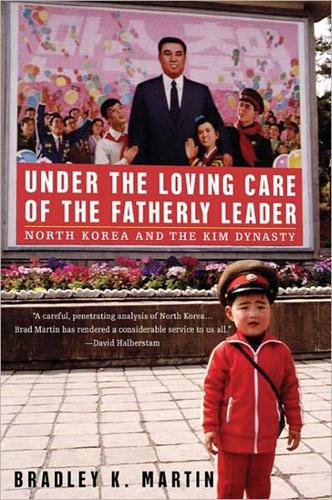
Under the Loving Care of the Fatherly Leader: North Korea and the Kim Dynasty
by
Bradley K. Martin
Published 14 Oct 2004
Proclaiming a state of emergency in December of 1950, Truman had called upon “our farmers, our workers in industry and our businessmen to make a mighty production effort to meet the defense requirements of the nation.” His proclamation and a drastically increased defense budget signaled that the military-industrial complex was back in business, for the duration of the Cold War and beyond. Typical of the fruits of the Truman proclamation was the reinvigoration of my hometown, whose post–Civil War slumber had been broken early in World War II with the decision to build and operate there the world’s largest aircraft plant under one roof.
…
After all, as chapter 33 of this book makes clear, many of the new traders had emerged from the military and quite a few of their companies were tied to the army or other military organizations such as bodyguards and police. It could be a relatively small matter to decree that the rest of the enterprises belonged to the military-industrial complex. In any case Kim Jong-il, as Frank wrote, would not have to “force the group of entrepreneurs, who will very likely emerge as one of the results of successful economic reforms, into an obviously anachronistic ideological and propagandistic corset.” Kim had displayed “exceptional foresight to deal with this issue now, in this early stage of economic reforms,” the scholar wrote.
…
Joseph, 74 migration to North Korea, 91 to South Korea, 57, 90 ideological conformity resulting, 91 labor shortage and, 158 militarism in children’s play, 689 costs to economic development, living standards, 124, 133, 396, 449, 505 defensive, offensive motivations, 124, 126–127 domestic opposition to, 243 Kim Il-sung renunciation of, just before death, 506 1960s beginning, 121 1970s, 133 military budget, 99, 368, 455–456 military dictatorship, under Kim Jong-il, 485 “military-first” ideology, 516 Communist Manifesto jettisoned in, 665–666 offering guns and butter, 656 military-industrial complex North Korean, 666 U.S., 84 militia, 99 minerals, 51, 58, 63–64, 124, 176, 366. See also energy; gold; uranium mines and mine workers, 303, 388, 412, 429, 503, 505, 559, 561, 563, 567, 569 assignment of discharged infantrymen, 527, 530 as source of armed uprising, 527 missiles, North Korean, 635–637 comprehensive agreement, 658–659 opposed by U.S. advocates of Star Wars, 659 exports for foreign currency, 658 long-range, 635, 639 as negotiating card, 636 nuclear-capable, 445–446, 495 model workers.

The Gang That Wouldn't Write Straight: Wolfe, Thompson, Didion, Capote, and the New Journalism Revolution
by
Marc Weingarten
Published 12 Dec 2006
Like Rubin and the rest, he agreed that there was a cancer eating away at the country, with its architecture “under the yoke of a monstrous building boom” which “gave promise of being the ugliest in the history of man,” a pharmaceutical industry whose proliferation of “wonder drugs” could trigger a “mass poisoning,” and most important, a military-industrial complex whose Cold War realpolitik could strengthen the very thing it wished to vanquish: “Prosperity was Communism’s poison, but attack from capitalism was its transfusion of blood.” The Berkeley speech was a transformative experience for many of those activists who were skeptical of Mailer. The truth was that this middle-aged literary eminence could articulate their discontent more eloquently and coherently than could many of the titular leaders of the movement, including Rubin and Hoffman, whose to-the-barricades war chants lacked Mailer’s nuance and moral heft.

Dawn of the New Everything: Encounters With Reality and Virtual Reality
by
Jaron Lanier
Published 21 Nov 2017
How awful it would be to be conscripted into a pointless, avoidable war; to inflict devastation on people who hadn’t done anything to us? So I had learned all about conscientious objection and the history of nonviolent action. I had taken trainings and tried on a worldview that was suspicious of the American military-industrial complex over all other things. Today I know the world is not so simple. You can’t just draw a circle around what you think is the devil and declare that you’ve got it all figured out. That’s how you eventually turn into a devil yourself, should you be successful. Anyway, in a field near Chilpancingo the next morning, there was a confrontation between the hippielike Marxist separatists and a phalanx of uniformed federal troops, who were disciplined, standing in formation, rifles aimed.
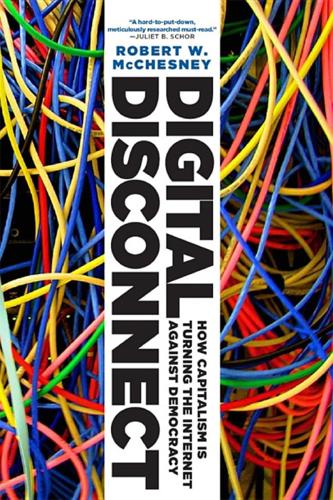
Digital Disconnect: How Capitalism Is Turning the Internet Against Democracy
by
Robert W. McChesney
Published 5 Mar 2013
“The way the Internet has gone sour,” Lanier laments, “is truly perverse.”198 While “in many cases this provides for happier, healthier lives,” Pariser concludes, “it also provides for the commercialization of everything—even of our sensory apparatus itself.”199 And much as Rorty framed the matter in 1934, Turow concludes that the evidence points in one direction: “The centrality of corporate power is a direct reality at the very heart of the digital age.”200 In 1935, New Republic editor Bruce Bliven characterized himself as among those “who find advertising so obnoxious that they wish the radio had never been invented.”201 One wonders if the Internet will produce its modern Blivenites—or if, as with broadcasting, people will come to accept its degradation as the natural way of the world and barely recognize, let alone question, what is taking place. A Military-Digital Complex? In his farewell address in 1961, President Dwight D. Eisenhower ominously warned about the military-industrial complex that had emerged as a cornerstone of the American political economy in the postwar years, with powers previously unknown in American history. The former Supreme Allied Commander in Europe during World War II decried the shared interests of warmakers, large corporations, and politicians that would render the public largely powerless to provide any opposition.

Machines of Loving Grace: The Quest for Common Ground Between Humans and Robots
by
John Markoff
Published 24 Aug 2015
But by 2004, little progress had been made, and Tony Tether, the then controversial director of the Pentagon’s blue-sky research arm, DARPA, the Defense Advanced Research Projects Agency, came up with a high-profile contest as a gambit to persuade computer hackers, college professors, and publicity-seeking corporations to innovate where the military had failed. Tether was a product of the military-industrial complex, and the contest itself was a daring admission that the defense contracting world was not able to get the job done. By opening the door for ragtag teams of hobbyists, Tether ran the risk of undermining the classified world dominated by the Beltway Bandits that surround Washington, D.C., and garner the lion’s share of military research dollars.
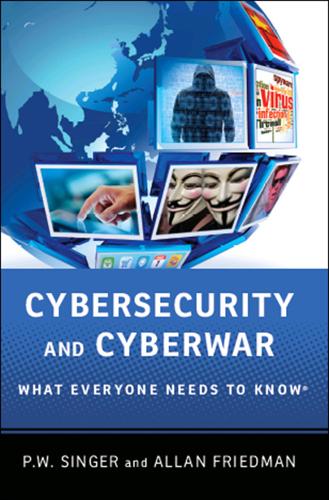
Cybersecurity: What Everyone Needs to Know
by
P. W. Singer
and
Allan Friedman
Published 3 Jan 2014
As Ronald Deibert, a cybersecurity expert who helped found the Information Warfare Monitor project, worries, “This not only creates a kind of feeding frenzy among defense contractors, but also propels the development of more refined techniques of monitoring, exploitation, and attack. This new cybersecurity market brings to mind Dwight Eisenhower’s warnings of a looming ‘military-industrial complex.’ When you have a major defense budget served by the private sector, a constituency is created that has enormous influence over policy, perceptions of threats, and strategic interests.” This potential cyber-industrial complex now has vested interests in developing newer and better modes of both cyber defense and attack, which, of course, must go hand in hand, driving up the levels of threats and tensions in this space.

Glasshouse
by
Charles Stross
Published 14 Jun 2006
I've been asleep for a gigasecond while we crawled across almost three Urth-style "light years," then spent a megasec decelerating under high-gee conditions to a rendezvous with Delta Refuge. The contemplatorian monastery has been erased and filed in deep storage, bits and atoms reconfigured into the sinister angled constructs of a military-industrial complex. Kapitan Vecken is reluctant to lend his ship to the resistance cabal, but he's happy to run off a clone of his stand-alone A-gate to help speed their botched, jerry-built attempts at constructing a sterile, uninfected nano-ecosystem. And he's happy to put me ashore. So I meet the resistance.
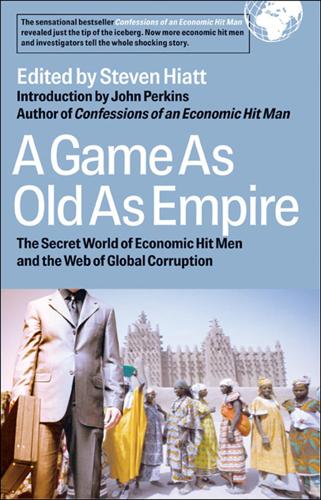
A Game as Old as Empire: The Secret World of Economic Hit Men and the Web of Global Corruption
by
Steven Hiatt; John Perkins
Published 1 Jan 2006
Index Abacha, Sani 44, 125 Abedi, Agha Hasan 69, 70, 75, 77, 86, 87 Abu Dhabi 69, 73, 75, 76 Adham, Kamal 75, 86, 87, 88 Afghanistan 26 drug trade in 70 civil war in 70–71 African Development Bank 251 Africa Oil Policy Initiative Group 119 Akbayan 192–93 Alamieyeseigha, Diepreye 121, 123 Algeria 15, 200, 266 Allende, Salvador 27 al-Qaeda 77, 89 and offshore banks 24 al-Taqwa Bank 71, 89 Altman, Robert A. 78, 79, 86, 88 American Express Co. 268 American Mineral Fields 99 Amin, Idi 27 Annan, Kofi 126 AngloGold 244 Anglo-Iranian Oil Company 14 Angola 27, 95 foreign debt 243, 244 Aquino, Benigno 26 Aquino, Corazon 190 Arbusto Energy, Inc. 76 Argentina 236 defiance of IMF 273 foreign debt 228, 230, 233, 241, 244, 273 popular movements in 276 World Bank lending in 169–73 Asari, Alhaji 121, 123, 128–29 Asian “tiger” economies 21, 229, 257n16, 258n27 Azerbaijan 200 Bahamas, as offshore banking haven 45, 89 Baker, Howard 100 Baker, James 239, 256n12 Baker Plan 228, 239–40 Balfour Beatty 211 Banca del Gottardo 71 Banca Nazionale del Lavoro 72 Banco Ambrosiano 71 Bank of America 69–70, 74, 77 Bank of England 84 Bank of Credit and Commerce International 24 accountants and 83–84, 86 arms trade and 72–73, 90 CIA and 69, 70, 71–72, 73, 76 drug trade and 70, 80, 87, 90 indictments 86–88 Iran-Contra 72 money laundering 69, 79–81, 90 operations 73–75, 86 owners 69–70, 75, 76 as Ponzi scheme 75 terrorism and 70, 72, 73, 88–90 U.S. operations 77–79 Bank of New York-Inter-Maritime Bank 83, 88–89 Barrick Gold Corp. 99, 244 Bath, James R. 76 Bechtel Corp. 3, 99, 138, 278 Belgium 101, 104 Bello, Walden 186–87, 273 Ben Barka, Medhi 26 Benin, foreign debt of 249 Berlusconi, Silvio 54 Bernabe, Riza 191 “big-box” stores, campaigns against 278 bin Faisal al-Saud, Prince Turki 75, 78 bin Laden family enterprises 71–72, 89 bin Laden, Haydar Mohamed 89 bin Laden, Osama 26, 77, 88, 89, 42 and BCCI 71 Binladen, Yeslam 89 bin Mahfouz, Khalid 76, 77, 78, 86, 87, 88, 89 bin Sultan al-Nahyan, Sheikh Zayed 69, 75 Blair, Tony 219, 250 Blandón, José 80 Blum, Jack 79–81, 85–86 Bolivia 236, 273 foreign debt 230, 246, 247, 249 gas industry 154, 208 water privatization in 277 Boro, Isaac 122 Brady, Nicholas 80, 256n12 Brady Plan 221, 227, 228, 240–41, 259n35 Brazil 18, 27, 130, 208, 216, 236 foreign debt 227, 228, 230, 241, 244 Bretton Woods agreements 63 Bretton Woods institutions see World Bank, International Monetary Fund British Gas 139 British Petroleum 139, 144, 153 British Virgin Islands, as offshore banking haven 54 Brown & Root 99 Brown, Gordon 126, 127, 219, 250 Burkina Faso, foreign debt of 246, 249 Burundi 95, 247, 249 Bush, George H.W., and administration 27–28, 69, 72, 77, 80, 87, 88, 91n10, 100, 138, 206, 271, 272 Bush, George W., and administration 66, 271, 278 and Iraq War 13, 28 Bush Agenda, The (Juhasz) 4, 275 Cabot Corporation 104, 112n32 Cameroon, foreign debt of 249 Canada 99, 101, 201, 268, 271 Canadian Export Development Corp. 201, 202, 203, 204, 206 capital flight 24, 43–44, 231–36, 253, 258n27 Carter, Jimmy 76, 140 Casey, William 70, 82, 90 Cavallo, Domingo Felipe 238 Cayman Islands, as offshore banking haven 65, 72, 73, 74, 75, 86 Center for Global Energy Studies 145 Center for Strategic and International Studies 119, 120 Central African Republic 231 Central Intelligence Agency 3, 5, 15 Afghan rebels and 70–71 BCCI and 69, 70, 71–72, 73, 76, 78, 79–82, 85 Saudi intelligence services and 75 Chad, foreign debt of 249 Chavez, Hugo 3, 25, 273 Cheney, Dick 28, 133 Chevron Oil 135, 138, 139, 144, 153 in Nigeria 123–24 Chile 236 1973 coup in 27 China 4, 229, 236 foreign debt 222–23 Third World resources and 5, 117–18, 120–21, 124, 126–27, 130 Chomsky, Noam Hegemony or Survival 4 Christian Peacemaker Team 96, 106–8 Citibank, Citigroup 75, 100, 130, 138, 226, 238, 268 Clifford, Clark 78–79, 85, 86, 88 Clinton, Bill, and administration 119, 120, 126, 212, 271 Coalition of Immokalee Workers 272, 280 COFACE 201, 205, 212 Cogecom 100 cold war 4 and decolonization 16–17 Colombia, human rights in 107 colonialism, decline of formal 13–14 coltan: efforts to control 5, 26, 95 shortages of 95 uses for 94 Commission for Africa 251 Communism: appeal of 14 fall of 4, 13, 27, 137–38, 238 Confessions of an Economic Hit Man (Perkins) 1–4, 6, 17 Congo, Democratic Republic of (Zaire): civil war in 26, 94–96, 108n3 corruption in 24, 254 foreign debt 220, 230, 247, 249 human rights in 107–8 rape as a weapon of war in 93, 96–98 Western role in 98–105, 109n4, 111n29 World Bank and 158 Congo Republic 230, 247, 249 cooperatives 276–77 corporations, as legal persons 277 CorpWatch 278 corruption: culture of 51–54 IMF/World Bank and 24–25, 157–74 offshore banking and 44–45, 52- power and 24 privatization and 24–25, 256n12 COSEC 209–10 Council on Foreign Relations 119–20 dam projects, 209–12 Dar al-Mal al-Islami 89 Daukoru, Edmund 125–27, 128 Davos see World Economic Forum DeBeers Group 101, 103 decolonization 13, 16–17 debt/flight cycle 231–36, 253, 258n27 debt relief, campaigns for 246, 252–55, 268 in U.S. 235 debt, Third World 32, 35 amount of relief 224–29 banks and 226–27, 229, 232–34 business loans 35–37, 227 cold war strategy and 17 corruption and 230, 231, 232, 253, 254, 257n23 1982 crisis 39, 55 disunity among debtor nations 237–39 dubious debts and 230, 235, 247, 253, 257n23, 261n68 growth of 18–19, 181, 229–36 as means of control 17, 23, 183–84 payments on 19, 190–91, 223, 228, 231, 247–48, 275 relief plans 220–22, 225–29, 239–52, 274 size of 221–24, 259n37, 260n46 social/economic impacts of 190–91, 231–36, 247–48 democracy: debt crisis and 236 economic reform and 276–79 global justice and 279–81 in Iraq 151–54 Deutsche Bank 226 drug trade 70, 80, 87 Dubai 73 Dulles, Alan 15 Eagle Wings Resources International 104 East Timor 205 economic development strategies: “big projects” and 16–17 debt-led 18–19 state-led 16–17, 19 economic forecasting 3 economic hit men 5 definition 1, 3, 18 John Perkins and 1–4, 17 types of 5, 18 Ecuador 236, 266 foreign debt 244 Egypt 14 Suez Crisis 15–16 Eisenhower, Dwight, and administration 15 elites, wealthy 4, 18, 57, 176, 183, 228, 232, 253 use of tax havens 43–44, 54–56, 65–66, 226, 232–34 El Salvador 26 empire see imperialism Eni SpA 144, 153 Enron 53, 54, 208–9 Ethiopia 230, 249 European Union 51 agricultural subsidies 22 environment degradation: development projects and 199, 200–211, 257n23 oil production and 115–16 export credit agencies: arms exports and 204–5 campaigns against 209–16 corruption and 200, 202–3, 205, 207–8 debt and 200 environmental effects 199, 200–211 nuclear power and 202, 205–6 operation of 197–201 secrecy of 205, 210–12 size of 201 World Bank and 199, 201, 202, 204 Export Credit Group 210, 215 Export Credits Guarantee Department 201, 205, 211 Export Finance and Investment Corp. 203, 204 export processing zones 178 Export Risk Guarantee 203, 211, 213 ExxonMobil 144 fair trade movement 280 Faisal, Mohammad al-89 Faux, Jeff Global Class War, The 4 Federal Bureau of Investigation 71 Federal Reserve Bank of New York 87 Federal Reserve System 78, 82, 88 Ferguson, Niall 13 First American Bankshares 78, 79, 82, 83, 85, 88 First Quantum Materials 101 First, Ruth 26 Focus on the Global South 187, 273 foreign aid 19 in Congo civil war 99–100 France 236, 244 empire 13 Suez Crisis and 15 free trade 4, 19, 21–23, 268, 271 British development and 21 U.S. development and 21 Free Trade Area of the Americas 271 Friends of the Earth 104, 269 G8 summits 212, 213, 219–20, 221, 246, 250, 271, 275 Gambia 243, 249 García, Alan 74 Gates, Robert 85 Gécamines 100, 104 General Agreement on Tariffs and Trade agricultural trade 186–87 establishment of 267 TRIPS 23 Uruguay Round 23, 267 General Union of Oil Employees 135–36, 141–44 Georgia 207 Germany 212, 213, 216, 236 export credit agency 201, 202, 203, 205, 206, 207, 209–11, 212, 215–16 Green Party 206, 215 Ghana 16 development projects in 16, 207 foreign debt 230, 247, 249 impact of IMF SAP 5, 22 Giuliani, Carlo 271 Global Awareness Collective 278 Global Class War, The (Faux) 4 Global Exchange 278 globalization 3 alternatives to corporate 275–79 economic 176–79, 230, 236 impacts of 185–90, 234, 236, 263–65 of the financial system 55, 63–66 Globalization and Its Discontents (Stiglitz) 3, 4 Global justice movement: achievements of 276–79 campaigns 269–72, 274–75 in Global North 268–69, 271–72, 274 in Global South 271–74 origins of 268–69 proposals of 275–79 protests by 265–66, 270–71 Global South see Third World Gonzalez, Henry 72, 90 Gorbachev, Mikhail 137 Goulart, João 27 Groupement pour le Traitment des Scories du Terril de Lubumbashi 104 Guatemala 14, 236 Arbenz government 26 Guinea, foreign debt of 249 Guinea-Bassau 26, 247, 249 Guyana: export credit agencies and 203 environmental problems 203 foreign debt 241, 243, 244, 246, 247, 249 Haiti 236, 249 World Bank and 158 Halliburton 3, 133, 278 Hankey, Sir Maurice 145 Harken Energy Corp. 77, 78 Heavily Indebted Poor Countries initiative 221, 225, 226, 230, 242–48, 275 conditions of 243–45 results of 248–50 Hegemony or Survival (Chomsky) 4 Hekmatyar, Gulbuddin 70 Helms, Richard 82 Henwood, Doug 23, 177–79 Heritage Foundation 121 Heritage Oil and Gas 100 Hermes Guarantee 201, 202, 203, 205, 206, 207, 209, 211, 212, 215–16 Honduras, foreign debt of 249 Hope in the Dark (Solnit) 281 Hungary, Soviet intervention in 16 Hussein, Saddam 28, 90, 141–42 and BCCI 72 Hutu people 94–96 Hypovereinsbank 209 Ijaw people 116, 121–23, 128 Illaje people 123 immigrant rights movement 281 imperialism 13–14 coups d’état and 27 divide-and-rule tactics 25, 26, 265 post-cold war changes 4–5 pressure on uncooperative countries 25, 142 resistance to 28, 115–17, 121–30, 143–44, 151–54, 176, 191–92, 265–66 resources and 98–106, 118–21, 133–34, 136, 139–40, 145 as system of control 17–28, 176 use of force 5, 25–28, 111n22, 113–14, 115–17, 123, 111n22 India 16, 119, 229, 236, 266 foreign debt 222, 223 export credit agencies and 206, 208 Maheshwar Dam 209–10 Indonesia 236 corruption in 202–3 export credit agencies and 200, 202–3, 205, 207, 216 foreign debt 228, 230, 244 inequality 44 Institute for Policy Studies 278 International Bank for Reconstruction and Development 157 International Development Association 157, 242 International Forum on Globalization 266 International Monetary Fund 3, 4, 19, 135, 275 conflicts of interest 244 debt relief and 221–22, 224, 226, 237, 240, 243–46, 250–51, 252 Iraq and 151–53 Malaysia and 273 neoliberalism and 176–79, 222 offshore banking and 43, 234 protests against 266 structural adjustment programs 22, 23, 245, 265–66 Rwanda and 100 Uganda and 100 International Tax and Investment Center 134–35, 138–39, 144–54 International Trade Organization 267 Iran 14, 90, 145, 200 coup against Mossadegh 14–15 nationalization of oil industry 14 Iran-Contra affair 71–72 Iraq: BCCI and 72 foreign debt 152 Gulf War and 28, 72, 140, 141, 146 human rights in 105–6 oil production and reserves 135–36, 139–54 production sharing agreements in 147–54 sanctions against 72, 142 social conditions in 135, 142, 143 U.S. occupation of 28, 140, 141–42, 146, 250, 275, 278 Israel: and Suez Crisis 15 Yom Kippur War and 17 Ivory Coast 230 foreign debt 244, 249 “jackals” 25–26 James, Deborah 273 Japan 216, 236 Japan Bank for International Cooperation 201, 202, 203, 241 Jersey 88 banking boom in 46–47 impact on island 46, 51–52, 56–62 as offshore banking haven 43, 45, 56–61 Johnson, Chalmers Sorrows of Empire 4 Jordan 241, 266 Jordan, Vernon 100 JPMorganChase 226, 238 Jubilee South 190 Jubilee 2000 268 Juhasz, Antonia Bush Agenda, The 4, 275 Juma’a, Hassan 135–36, 140, 142–44, 154 Kabila, Joseph 96 Kabila, Laurent 94, 96, 99 Kagame, Paul 94, 98–99 ties to U.S. 99 Kazakhstan 138, 139, 144, 150 Keating, Charles 83 Kenya 236 foreign debt 243, 244 Kerry, John 76 investigation of BCCI 79–83, 87, 89 Kirchner, Nestor 273 Korea, Republic of 229, 272 Korten, David When Corporations Rule the World 4 KPMG 52 Krauthammer, Charles 13 Krushchev, Nikita 16 Kurdistan 211–12, 214 Kuwait 133, 141, 146, 152, 154 labor exports 235–36 Lake, Anthony 119–20 Lance, Bert 77 Lawson, Nigel 242 Lawson Plan 221, 242 Lee Kyung Hae 272 Liberia, World Bank lending to 159–67 Liberty Tree Foundation 276 Li Zhaoxing 117–18, 124 Lu Guozeng 117 Lumumba, Patrice 26 Luxembourg, as offshore banking haven 72, 73, 74 Madagascar, foreign debt of 249 Mahathir, Mohamad 273 Malawi 254 foreign debt 243, 249 Malaysia 41–43, 229 defiance of IMF 273 Mali, foreign debt of 246, 249 Marcos, Ferdinand 31, 48, 175, 176, 181–85 markets, corporate domination of 16 Martin, Paul 54 mass media, manipulation of 25 Mauritania, foreign debt of 247, 249 McKinney, Cynthia; hearing on Congo 98–99, 110n11 McLure, Charles 137–39 mercenaries: in Congo 111n22 in Nigeria 5, 25–26, 113–14, 115–17 Mexico 207, 256n14, 273 foreign debt 55, 227, 228, 230, 233, 240–41, 244 labor exports 236 Zapatista uprising 272 Middle East, and struggle for oil 27–28 military-industrial complex 99 military interventions 27–28 Mizban, Faraj Rabat 141 Mitterand Plan 221 Mobutu Sese Seko 24, overthrow of 94 Mondlane, Eduardo 26 Mongolia 207 Morales, Evo 277 Morganthau, Robert 69, 84–87 Moscow, John 58, 87 Mossadegh, Mohammad 3, 14–15, 27 Movement for the Emancipation of the Niger Delta 122–24, 129 Movimento dos Trabalhadores Rurais Sem Terra (Landless Workers’ Movement) 272 Mozambique 26, 27, 230 foreign debt 241, 246, 249 Mueller, Robert 87 mujahadeen (Afghanistan): and BCCI 70 and drug trade 70 Mulroney, Brian 100 Multilateral Agreement on Investment 269–70, 281 Multilateral Debt Relief Initiative 222, 225, 230, 250–52 Multilateral Investment Agreement 269 multinational corporations: export credit agencies and 209–11 export processing zones and 178 globalization, pressure for 138, 268, 275 mercenaries, use of 25–26, 111n22, 113–14, 115–17, 123 resources and 101–6, 111n29, 112n31, 112n32 scandals 5 transfer mispricing by 49–51 offshore banks, use of 24, 49–51 patents, control of 23 Museveni, Yoweri 95 Myanmar, foreign debt of 230 Nada, Youssef Mustafa 71–72 Namibia 95 export credit agencies and 207 Nasser, Gamal Abdel 15–16 National Commercial Bank of Saudi Arabia 88–89 National Family Farm Coalition 272 nationalism: pan-Arab 15 Iranian 14 Nehru, Jawaharlal 16 neocolonialism see imperialism neoliberalism 4, 19 critique of 176–79, 190–92, 234, 236 defined 176–77 economic development and 176–79, 232 economic strategies 178–81, 222, 230, 231, 236 Netherlands, overseas empire of 13 Newmont Mining Corp. 244 New World Order 27–28 Nicaragua 207 foreign debt 225, 230, 247, 249 U.S. proxy war against 26, 27, 79 Nicpil, Liddy 190–91, 192 Nidal, Adu 73 Niger, foreign debt of 241, 249 Niger Delta People’s Volunteer Force 121, 123 Niger Delta Volunteer Service 122 Niger Delta region: attack on oil platforms 116–17 as “Next Gulf” 118–21 pollution from oil production 115–16 struggle against Shell 115–16, 121–24 Nigeria 200, 266 China and 117–18 colonial rule 115 corruption in 44–45, 230 foreign debt 223, 230, 233, 243, 244 oil production 115–16, 125–27 World Bank lending in 158, 167–69 Nkrumah, Kwame 16 nongovernmental organizations 239, 250 Noriega, Manuel 80 and BCCI 72, 79 North American Free Trade Agreement 4, 268, 272 nuclear power 205–6, 210 Obasanjo, Olusegun 125, 127 Obiang, Teodoro 48 O’Connor, Brian 144–45 OECD Watch 105 offshore banking havens: arms trade and 71–73 campaign against 62–64 central role in world trade 44, 47–48, 64–65 corruption and 24, 44–45, 52–56, 64, 231–33, 253 drug trade and 70 extraction of wealth 43, 54–56, 64–65, 226, 231–33, 253, 258n58 financial centers and 234, ignored by academia 44, 234 secrecy and 47–48, 53, 66 tax evasion and 43, 48, 49–51, 54, 57–59, 64–65, 226, 232 terrorism and 71, 88 Ogoni people 122–23, 125 Okadigbo, Chuba 116 Okonjo-Iweala, Ngozi 118 Okuntimo, Paul 123 Oil Change International 278 oil price spikes 236 oil production and reserves: future shortages of 28, 140 Indonesia 207 Iraqi 135–36, 144–54 Nigerian 113–14, 128–29 strategies to control 25–26, 27–28, 139–40 OM Group, Inc. 104, 112n31 OPEC 125–26, 128 1973 oil embargo by 17 dollar deposits in First World 17–18 Organisation for Economic Co-operation and Development 135, 269 “Action Statement on Bribery” 216 export credit agencies and 210, 215 Guidelines for Multinational Enterprises 101, 102, 105–6, 112n31 “OECD Arrangement” 215 Overseas Private Investment Corp. 204, 206–9 Oxfam 43, 62–63, 250 Pakistan 90 Afghan mujahadeen and 70–71 BCCI and 70 export credit agencies and 207 foreign debt 244 Panama 3, 26, 72 as offshore banking haven 73, 74 Papua New Guinea: export credit agencies and 204 mining and environmental problems 204 Paris Club of creditors 220, 225–26, 227, 228, 242, 252 Peru 74 foreign debt 241 impact of IMF SAP 22 petrodollars, recycling of 17–18 Perkins, John 19 Confessions of an Economic Hit Man 1–2, 17 Pharaon, Ghaith 76, 77, 86, 87, 88 Philippines, the 31–34, 35–36 corruption in 181–82 democratic movements in 182–85, 236 economic decline in 187–89 emigration from 189, 236 foreign debt 181, 190–91, 230, 241, 244 Marcos regime 31, 34, 175, 176, 180–85, 261n61 martial law in 180–85 social conditions in 179–80, 185–86, 189–91 U.S. rule 175–76 World Bank and 158, 178–81 Pinochet, General Augusto 27, 45–46, 48 PLATFORM 140, 156n28 Portugal 209–10 Posada Carriles, Luis 26 poverty reduction strategy programs see structural adjustment programs Price Waterhouse 83–84 privatization 191 production sharing agreements 147–54 protectionism 21, 181, 186–87 proxy wars 27, 70–71 Public Citizen 269, 273 public utilities, privatization of 191, 261n61, 277 Rahman, Masihur 85 Reagan, Ronald, and administration 19, 79, 87, 136–37, 239 Iran-Contra affair 72 Rich, Marc 90 Rights and Accountability in Development 101, 104, 105 Rio Tinto Zinc 204 Ritch, Lee 79–80 Robson, John 138 Roldós, Jaime 3, 26 Roosevelt, Kermit 15 Rumsfeld, Donald 138 rural economic development 183, 186–87 Russia: debt relief and 225 oil industry 154 transition to capitalism 137–39, 258n28 Rutledge, Ian 149 Rwanda 94–96, 98, 249 massacre in 94, 99 SACE 201 Sachs Plan 221 Saleh, Salim 95 Saõ Tomé, foreign debt of 247, 249 Saud al-Fulaij, Faisal 86, 87 Saudi Arabia 3, 88 and BCCI 70, 75 Saro-Wiwa, Ken 125–26 Scholz, Wesley S. 104 Scowcroft, Brent 72 Senegal 16, 249 Senghor, Léopold 16 September 11, 2001, terrorist attacks 71 Shell Oil 144 Nigeria and 113–15, 122, 123, 125–29 at World Economic Forum 127 Shinawatra, Thaksin 54 Sierra Club 269 Sierra Leone 247 SmartMeme 276 Solnit, Rebecca Hope in the Dark 281 Somalia 251 Sorrows of Empire (Johnson) 4 South Africa 236 military interventions 27 Truth and Reconciliation Commission 26 Soviet Union 13, 14 de-Stalinization 16 Hungary, intervention in 16 influence in Third World 14 U.S. and 137 Stephens, Jackson 76, 77 Stiglitz, Joseph 24 Globalization and Its Discontents 3, 4 structural adjustment programs (SAPs) 19, 229–30 in Ghana 5, 22 in Peru 22 in the Philippines 176–79, 183–85, 190–92 in Zambia 22 Sudan 230, 251 Suharto 200, 202–3 Syria 211 Switzerland, as offshore banking haven 45, 65, 72 Taco Bell, boycott of 280 Tanzania, foreign debt of 247, 249 tax evasion 43, 48, 49–51, 54, 57–59, 64–65 Tax Foundation 137–38 tax havens see offshore banking havens Tax Justice Network 63 Tax Reform Act of 1986 138 Tenke Mining 99 terrorism: as EHM strategy 26, 72 financing of 42, 88–89 inequality and 44 Islamist 71–72, 89 Palestinian 73 Thatcher, Margaret 19, 138 Third World: as commodity producers 17, 23 conditions in 5, 96–97, 106–8, 116, 179–80, 185–90, 234, 236 development strategies 176–79 divisions among countries 265–68 elites in 25, 28, 43–44, 176, 226, 232–34 emergence of 14 lack of development in 232, 237 terms of trade and 22, 178–79 Third World Network 269 Tidewater Inc. 113 Torrijos, Omar 3, 26 Total S.A. 144, 153 trade unions 135–36, 141–44, 180, 186, 269, 274 transfer mispricing 49–51 cost to Third World 50 Transparency International 45 Turkey: export credit agencies and 206 Ilisu Dam 211–14 Turkmenistan 200 Uganda 94–96 foreign debt 241, 246, 249 Union Bank of Switzerland 57, 58, 77, 226, 250 United Arab Emirates 69, 73 United Fruit Company 15 United Kingdom 213 NCP for Congo 102–3 empire 13–14, 115, 129, 145 Iran and 14–15 Iraq occupation and 146, 151, 152 offshore banking and; Suez Crisis and 15 United Nations: trade issues and 265, 276 Panel of Experts, Congo 100–106, 112n32 United Nations Conference on Trade and Development 220, 265, 267 United States: agricultural subsidies 22 aid 98 as empire 13, 28 cold war strategy of 16, 17, 24, 26 in Congo 99, 104, 105 debt-led development strategy of 176–79 Iran coup and 14–15 Iraqi oil and 133–34, 136, 139–40 Iraq wars 72, 133, 141–42 Islamists and 26 Nigerian oil and 118–21 Philippines and 175–76, 180 strategic doctrines 27–28, 118–19 support of Contras 72 trade deficit 23 trade policies 267 U.S.

Enriching the Earth: Fritz Haber, Carl Bosch, and the Transformation of World Food Production
by
Vaclav Smil
Published 18 Dec 2000
By the end of 1914 it looked as if most of BASF’s large Ludwigshafen plant would be out of production, and, as Emil Fischer and Walther Rathenau had pointed out, unless some extraordinary steps were taken, the country would largely run out of munitions by the spring of 1915.68 So, on the one hand, BASF faced seriously declining revenues due to the loss of its traditional markets, but, on the other hand, it had the capacity to convert its ammonia output into nitrates, the commodity in critical demand by the country’s military. Here is clearly one of the origins of a phenomenon that marked so much of Germany’s, and the world’s, subsequent history: the rise of a military-industrial complex.69 For BASF and the Second Reich this was a natural partnership: the country’s leading company looking for new markets, a state at war desperately needing 104 Chapter 5 the company’s newly developed product.70 Although their interests coincided, Bosch found an astonishing degree of ignorance about the chemical prerequisites of modern war during his first meeting in the War Ministry in September 1914.71 The War Ministry was eager to expand significantly the output of nitric acid based on the two established processes (by-product ammonia and cyanamide, whose output was also to rise sharply) by adding BASF’s ammonia oxidation.
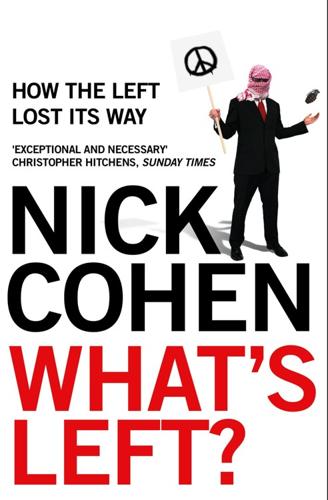
What's Left?: How Liberals Lost Their Way
by
Nick Cohen
Published 15 Jul 2015
The leader of the French socialists was Leon Blum, and he knew that the Nazis had to be fought. But a large socialist faction supported by trade unionists and many left-wing intellectuals refused to follow him. The standard motives lay behind their pacifism: a justifiable horror at a conflict that would be worse than the First World War; and a well-founded suspicion of the military-industrial complex and the corporate media. But Berman spotted something more important in that time and in ours: the deadly consequences of the liberal belief in reason. If they had looked the Nazis in the face, the French socialists would have realized that war was inevitable; you only had to read Mein Kampf to know that.

Giving the Devil His Due: Reflections of a Scientific Humanist
by
Michael Shermer
Published 8 Apr 2020
After a while, your honor, it is the setting of man against man and creed against creed until with flying banners and beating drums we are marching backward to the glorious ages of the sixteenth century when bigots lighted fagots to burn the men who dared to bring any intelligence and enlightenment and culture to the human mind.25 In America, the First Amendment protects the right of citizens to express their opinions on anything they like, no matter how unconventional, crazy, conniving, or evil. You are free to doubt not just evolution, for example, but the Big Bang theory, vaccines, the germ theory of disease, and global warming. You can believe that JFK was assassinated by the KGB, Castro, the Mafia, Lyndon Johnson, and the Military Industrial Complex. You can contend that Princess Diana faked her death, along with Hitler and Elvis. You can even challenge the existence of God, Jesus, and the universe itself. No matter how much one may dislike someone else’s opinion – even if it is something as disturbing or potentially disruptive as denying that the Holocaust happened or that some people may not be as successful because of innate racial or gender differences – that opinion is protected by the First Amendment.
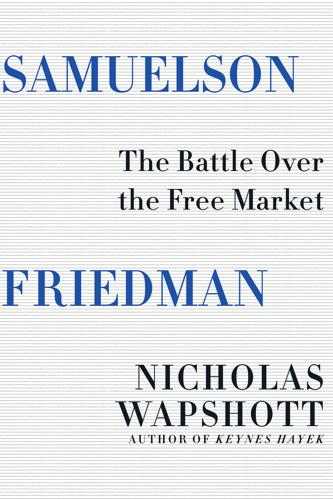
Samuelson Friedman: The Battle Over the Free Market
by
Nicholas Wapshott
Published 2 Aug 2021
Friedman took the dodgers’ side.29 For him, compulsory military service was an impertinent demand from an overweening state. He considered the draft “inequitable, wasteful, and inconsistent with a free society” and conscription “a weapon … to discourage freedom of speech, assembly, and protest.”30 He was anxious that a large standing army supported by the military-industrial complex threatened essential freedoms. Instead he suggested armed forces recruited from volunteers. Similarly, Friedman scandalized his conservative friends by advocating the legal sale of mind-bending drugs. “Do we have the right to use the machinery of government to prevent an individual from becoming an alcoholic or a drug addict?”

The Desert and the Sea: 977 Days Captive on the Somali Pirate Coast
by
Michael Scott Moore
Published 23 Jul 2018
Aerospace used to infuse life in Southern California, and I remembered the tone of that world, the banalities and the international glamour, and I remembered Denis and Sylvia sitting on our concrete patio in Northridge, after family dinners, smoking cigarettes and speaking German. The women spoke it with uncommon grace; the men sounded more like drill sergeants from Gomer Pyle. They sat for hours on dry Los Angeles evenings with glasses of wine and flickering citronella candles. It was easy to reject the American suburbs, easy to disregard the whole military-industrial complex for its weapons and its habits of war, but the keenest emotion I felt now was a profound sense of failure, not just for the catastrophe of getting kidnapped but for a sense of spiritual waste: for not having loved everyone enough. I was at the rough edge of what I thought would be a foreshortened life, and the memories amounted to a frenetic and subconscious groping around for the person I had been, since I couldn’t accept the label “hostage” and didn’t yet know what it meant.

The Party: The Secret World of China's Communist Rulers
by
Richard McGregor
Published 8 Jun 2010
The United Kingdom had the ‘old boy network’, originally coined to describe connections between former students of upper-class, non-government schools; France has ‘les énarques’, the alumni of the exclusive Ecole Nationale d’Administration in Paris who cluster in the upper levels of commerce and politics; and Japan has the Todai elite, graduates of the law school of Tokyo University, an entry point into the longtime ruling Liberal Democratic Party, the Finance Ministry and business. In India, the exclusive Gymkhana Club symbolizes the English-educated elite. The US has the Ivy League, the Beltway, K Street and the military-industrial complex, and a host of other labels to signify the opaque influence of well-connected insiders. None can hold a candle to the Chinese Communist Party, which takes ruling-class networking to an entirely new level. The ‘red machine’ gives the party apparatus a hotline into multiple arms of the state, including the government-owned companies that China promotes around the world these days as independent commercial entities.

Your Face Belongs to Us: A Secretive Startup's Quest to End Privacy as We Know It
by
Kashmir Hill
Published 19 Sep 2023
Though Martinez didn’t often walk past the Occupy Chicago camp, the movement became a steady drumbeat in his mind. The system was obviously unfair, as if society’s levers of power were out of whack. That spring, NATO held a summit in Chicago to decide what to do about the decade-long U.S.-led war in Afghanistan. The anticorporate protesters of Occupy Chicago also strongly opposed the military-industrial complex, and as they made plans for large-scale demonstrations, alarmed city leaders marshaled a heavy police presence in response. Martinez decided to join the protest. Dressed in black, he took the train downtown to Grant Park, where people were gathering for a two-mile march to the NATO summit.

The Long History of the Future: Why Tomorrow's Technology Still Isn't Here
by
Nicole Kobie
Published 3 Jul 2024
Such a project wasn’t cheap, so Sutherland and his team of students sought grants – and given the era, a big chunk of the funding once again came from the American defence coffers. When the CIA grant worth $80,000 was leaked to the Harvard ‘leftist rag’ the Old Mole, it sparked a minor scandal and a public debate about whether the military-industrial complex should be meddling with academia. Sutherland didn’t speak but did attend the debate, noting at the panel discussion: ‘It is evidence of the eloquence of the Harvard faculty or the naivety of Ivan Sutherland that my opinion changed eight times during the debate.’ With that minor controversy over and the project a success, Sutherland left his tenured position at Harvard to join an old friend and colleague, Dave Evans, at the University of Utah, where they ended up setting up their own business, Evans & Sutherland, making simulators for training pilots, which eventually evolved into a digital theatre company.6 But they didn’t build VR headsets.
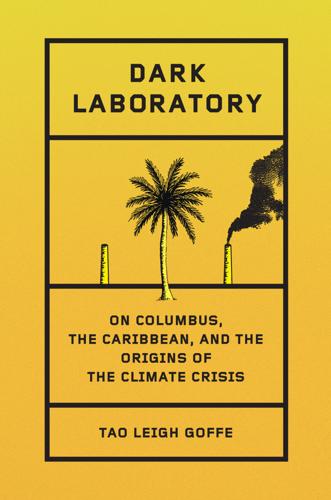
Dark Laboratory: On Columbus, the Caribbean, and the Origins of the Climate Crisis
by
Tao Leigh. Goffe
Published 14 Mar 2025
National Geographic was an engine of environmentalist, imperialist propaganda. In its pages was a battle plan that invited the average reader to participate in a colonial way of looking that paired botanical and military conquest. The magazine’s board of directors, headquartered in Washington, D.C., reflects the “military industrial complex,” U.S. president Dwight D. Eisenhower’s term for what was evolving as the shape of U.S. power in the postwar period. Plant life has long been a part of this complex. Genres of Gardens There are botanic gardens, pleasure gardens, physic gardens, the English country garden, provision grounds.

More Everything Forever: AI Overlords, Space Empires, and Silicon Valley's Crusade to Control the Fate of Humanity
by
Adam Becker
Published 14 Jun 2025
And the effective altruists have carried that culture with them as they have penetrated the halls of power outside of the Silicon Valley bubble. They have brought concerns about AI alignment to the halls of Oxford and Cambridge; they’re advising heads of state in the United States and United Kingdom; they’re taking over think tanks at the heart of the military-industrial complex. Part of their success is likely due to optics: the effective altruists seem less bizarre than the rationalists. But that’s just an illusion. “These people make you feel like a conspiracy theorist. It sounds ridiculous,” says Gebru. “Their whole deal is so ridiculous that people don’t want to believe it.”186 But under the surface, the effective altruists are, if anything, even more bizarre than Yudkowsky’s apocalyptic fever dreams.

The Rise and Fall of the Great Powers: Economic Change and Military Conflict From 1500 to 2000
by
Paul Kennedy
Published 15 Jan 1989
In terms of monies spent, the trend was by no means an even one, as shown in Table 37. The enormous surge in American defense expenditures for several years after 1950 clearly reflected the costs of the Korean War, and Washington’s belief that it needed to rearm in a threatening world; the post-1953 decline was Eisenhower’s attempt to control the “military-industrial complex” before it damaged both society and economy; the 1961–1962 increases reflected the Berlin Wall and Cuban missile crises; and the post-1965 jump in spending showed the increasing American commitment in Southeast Asia.119 Although the Soviet figures are mere estimates and Moscow’s policy was shrouded in mystery, it is probably fair to deduce that its own 1950–1955 buildup was caused by worries that war with the West would lead to devastating aerial attacks upon the Russian homeland unless its numbers of aircraft and missiles were greatly augmented; the 1955–1957 reductions reflect Khrushchev’s détente diplomacy and efforts to release funds for consumer goods; and the very strong buildup after 1959–1960 reveals the worsening relations with the West, the humiliation over the Cuba crisis, and the determination to be strong in all services.120 Communist China’s more modest buildup was as much a reflection of its own economic growth as of anything else, but the 1960s defense increases suggest that Peking was willing to pay the price for its break with Moscow.
…
In the area of military procurement itself, allegations of “waste, fraud and abuse”225 have been commonplace. The various scandals over horrendously expensive, underperforming weapons which have caught the public’s attention in recent years have plausible explanations: the lack of proper competitive bidding and of market forces in the “military-industrial complex,” and the tendency toward “gold-plated” weapon systems, not to mention the striving for large profits. It is difficult, however, to separate those deficiencies in the procurement process from what is clearly a more fundamental happening: the intensification of the impacts which new technological advances make upon the art of war.

Before the Storm: Barry Goldwater and the Unmaking of the American Consensus
by
Rick Perlstein
Published 17 Mar 2009
Downtown other Nixon deputies were coordinating telephone negotiations with Newport, begging Ike to throw Rockefeller just a bone on the foreign policy plank to keep Rockefeller from starting a floor fight—adding the word “intensified” here, a mention of Polaris missiles there, and—a painful concession for a man planning a farewell address in which he would decry the new “military-industrial complex”—allowing Rockefeller’s favorite phrase from the Compact to be slipped in: “There is no price ceiling on American security.” The opening session closed with the keynote address, a McCarthyite stem-winder delivered by vice-presidential long shot Walter Judd: “Was it the Republicans who, at Teheran, against the urgent advice of Mr.
…
He warned, “Good judgment seeks balance and progress; lack of it eventually finds imbalance and frustration.” Then he broached another subject: “a permanent armaments industry of vast proportions.” The admission was startling: “we annually spend on military security more than the net income of all United States corporations.” He called it a “military-industrial complex,” and said it had “grave implications” for “the very structure of our society.... We must never let the weight of this combination endanger our liberties or democratic processes.” The consequences of permanent war was a wartime mentality. America “must avoid becoming a community of dreadful fear and hate.”

The Coke Machine: The Dirty Truth Behind the World's Favorite Soft Drink
by
Michael Blanding
Published 14 Jun 2010
Marshall himself informed commanders they could order bottling equipment to the front lines as an essential military priority—all paid for by Uncle Sam. The big gest taker was General Dwight D. Eisenhower, who requested 6 million Cokes a month during the North Africa campaign of 1943. (So much for the “military-industrial complex.”) A war correspondent nearly met his end on a plane so overloaded with Coke bottles it could barely clear the sand dunes. “You don’t fuck with Coca-Cola!” the pilot told him when he complained. But the soda did seem to genuinely perk up morale. Thousands of let ters poured in from dirty foxholes and heat-baked islands from soldiers grateful for the familiar taste of home.

Capitalism 4.0: The Birth of a New Economy in the Aftermath of Crisis
by
Anatole Kaletsky
Published 22 Jun 2010
Business Interests Will Embrace the New Model As Capitalism 4.0 evolves, the reflex reaction of business leaders, especially in America and Britain, will be to oppose the increased interaction of government with the private sector. In time, however, this attitude is likely to change, to one of acquiescence and ultimately even enthusiasm, for cooperation between business and government of the kind seen in many Asian and European countries and also in America during the heyday of the Eisenhower administration’s military-industrial complex.12 Businesses will recognize that proactive macroeconomic management and financial regulation are essential for the survival of the capitalist system. Many will also decide that, from their narrow corporate standpoints, cooperation with government is usually more profitable than opposition.
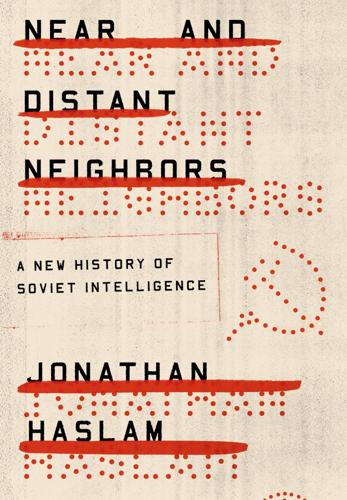
Near and Distant Neighbors: A New History of Soviet Intelligence
by
Jonathan Haslam
Published 21 Sep 2015
crowed the U.S. national security advisor, Zbigniew Brzezinski, clenching his fist in the air.8 Once committed, Ivashutin poured into Afghanistan all that the GRU could spare to win the war. The Extraordinary Achievements of Yuri Totrov Whereas it could rightly be said that the Americans held the lead in technology, the Russians managed to make up much of the distance in other ways. Stymied by backwardness in invention, Soviet engineers in the military-industrial complex proved their genius through mastering the art of improvisation. They applied the law of comparative advantage: making full use of what lay at hand rather than mimicking the other side, treating fundamental asymmetries not as reason for regret but as opportunities to exploit. The substitution of brain matter for high technology was, therefore, a matter of necessity.
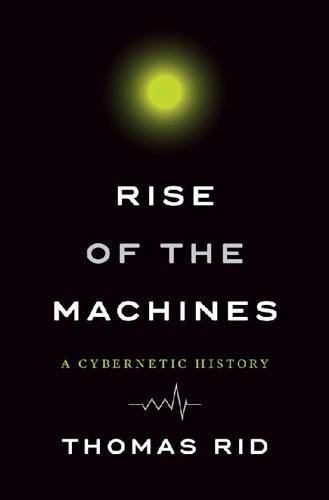
Rise of the Machines: A Cybernetic History
by
Thomas Rid
Published 27 Jun 2016
“Illegitimate offspring are often exceedingly unfaithful to their origins,” she pointed out. “Their fathers, after all, are inessential.”100 “Our machines are disturbingly lively, and we ourselves are frighteningly inert,” Haraway wrote, mystifyingly.101 Haraway was a self-described vegetarian, feminist mystic, deeply suspicious of what she saw as the Cold War’s military-industrial complex and its “patriarchal” technologies, especially that “heavy brew of cybernetics in the 1950s and 1960s.”102 Viewed from Haraway’s elevated academic perch, the jump from Manfred Clynes’s enhanced rat to Arnold Schwarzenegger’s Terminator was preordained: Cyborgs do not stay still. Already in the few decades that they existed, they have mutated, in fact and fiction, into second-order entities like genomic and electronic databases and other denizens of the zone called cyberspace.103 The feminist philosopher employed a scholarly trick: she clandestinely flipped the causality on its head.

Concretopia: A Journey Around the Rebuilding of Postwar Britain
by
John Grindrod
Published 2 Nov 2013
Manufactured by construction firm Taylor Woodrow, the corrugated asbestos walls and roof were attached to a steel frame. Nearly 40,000 of these were put into production. It was, however, the design that replaced the rejected steel Portal that would go on to become the most numerous of all the temporary houses. This aluminium prefab issued not from the construction industry, but from the military industrial complex. The Aircraft Industries Research Organisation on Housing, or AIRO H, manufactured a total of 55,000 of these metal bungalows, on production lines that, until very recently, had been churning out heavy bombers. They were built from aluminium from melted-down aircraft. The AIRO H prototype wouldn’t be exhibited until the following year, 1945, when one was erected behind Selfridges department store in London.

Life Inc.: How the World Became a Corporation and How to Take It Back
by
Douglas Rushkoff
Published 1 Jun 2009
As the nation’s best engineers and economists unanimously agreed after World War II, the tremendous strides made in wartime technology simply had to be retooled for a postwar era. Although everyone from computer scientists and the Frankfurt School to President Eisenhower warned of the dangers of a military-industrial complex promoted through mass spectacle, the engines of production could not be slowed for the specious priorities of civically engaged workers or an artwork’s “aura.” The disconnections inherent in industrialized culture would thus extend beyond the division between management and labor to include the distance between consumer and producer.
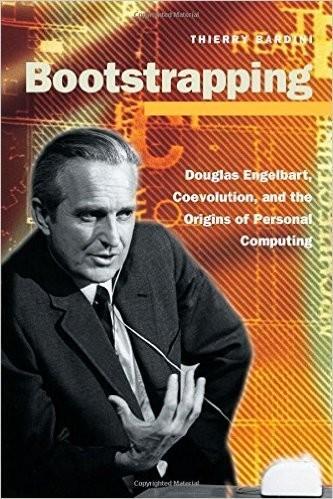
Bootstrapping: Douglas Engelbart, Coevolution, and the Origins of Personal Computing (Writing Science)
by
Thierry Bardini
Published 1 Dec 2000
Internally, the Committees on Un-American Activities of the House and Senate soon turned this climate into a general at- mosphere of suspicion. All these conditions did not help diffuse a general awareness of computing's state of the art. 8 Furthermore, Engelbart's awareness of computing research was also limited by the fact that on the West Coast, this research was mostly concentrated at RAND. A part of the military-industrial complex, RAND (an acronym for Re- search and Development) was founded in 1946 as a joint venture between the U.S. Air Force and Douglas Aircraft. In 1948, it separated from Douglas and became an independent, nonprofit think tank devoted to studying techniques of air warfare. During the 1950'S, the air force funded RAND for approxi- mately ten million dollars a year, and at its peak, in 1957, the institution had 2,605 employees (Edwards 1996, 165).
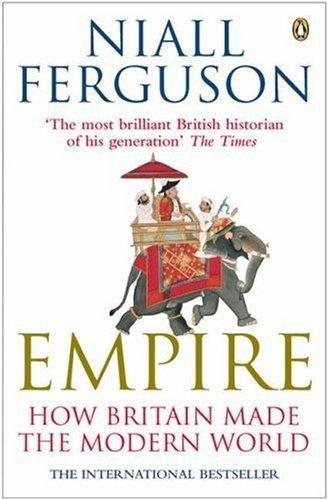
Empire: How Britain Made the Modern World
by
Niall Ferguson
Published 1 Jan 2002
Chapter Five deals primarily with the role of military force in the period of the ‘Scramble for Africa’, exploring the interaction between financial globalization and the armaments race between the European powers. Though they had been anticipated before, this was the era when three critical modern phenomena were born: the truly global bond market, the military-industrial complex and the mass media. Their influence was crucial in pushing the Empire towards its zenith. The press, above all, led the Empire into the temptation the Greeks called hubris: the pride that precedes a fall. Finally, Chapter Six considers the role of the Empire in the twentieth century, when it found itself challenged not so much by nationalist insurgency – it could deal with that – but by rival, and far more ruthless, empires.

Iron Sunrise
by
Stross, Charles
Published 28 Oct 2004
“After the last time…” “Department of Collective Defense.” Pritkin smiled grimly. “You may find its inventory tree a little alarming.” “Indeed.” Rachel eyed the trunk appraisingly. “Full military fabworks?” “Yup. This little cornucopia can, with a bit of guidance and your authority, generate an entire military-industrial complex. Try not to lose it.” “Once was an accident, twice would be careless. All right.” She spoke to the trunk. “Do you recognize me?” The trunk spoke back, in a flat monotone: “Authorized officer commanding. You have control.” “Hey, I like that. Trunk, follow me.” She nodded to Pritkin. “See you at Newpeace.”

The Making of an Atlantic Ruling Class
by
Kees Van der Pijl
Published 2 Jun 2014
The US defence budget for the first time since the Korean War broke the $50 billion ceiling in 1962 (measured in 1960 dollars); more than one-third of all US armed interventions abroad in the period 1946–75 fell in the 1961–65 offensive.98 While the nuclear role of Western Europe was to be trimmed, a major sales drive was launched to supply the European armies with advanced weapons. Strangely, the contours of an emerging Atlantic military-industrial complex were thrown into relief by the establishment of the World Wildlife Fund in 1961 under the sponsorship of Prince Bernhard of the Netherlands. Next to the Dutch Prince, who as Inspector-General of the Dutch armed forces was in a position to influence arms purchases, such renowned ‘friends of the animal world’ as the directors of Northrop and Lockheed, (and Lockheed agent for Europe, Fred Meuser) joined the new organization.

How Markets Fail: The Logic of Economic Calamities
by
John Cassidy
Published 10 Nov 2009
The Pentagon’s Republican defenders would never admit it, but one of its main contributions to the strength and well-being of the United States has been in providing it with a surrogate industrial policy. Freed from the threat of free riders and the imperatives of short-term profit maximization, scientists and companies working for the U.S. military have created many of the technologies on which the country’s prosperity is now based. Whether by design or accident, the military-industrial complex, which President Eisenhower warned his countrymen about half a century ago, has arguably done more to encourage scientific research than the entire private sector of the U.S. economy. Although it is more than a half century old, Bator’s taxonomy of market failures remains useful. Increasing returns to scale, monopoly power, and the issue of providing public goods aren’t just arcane economic concepts.

Sapiens: A Brief History of Humankind
by
Yuval Noah Harari
Published 1 Jan 2011
Whereas modern states call in their scientists to provide solutions in almost every area of national policy, from energy to health to waste disposal, ancient kingdoms seldom did so. The contrast between then and now is most pronounced in weaponry. When outgoing President Dwight Eisenhower warned in 1961 of the growing power of the military-industrial complex, he left out a part of the equation. He should have alerted his country to the military-industrial-scientific complex, because today’s wars are scientific productions. The world’s military forces initiate, fund and steer a large part of humanity’s scientific research and technological development.
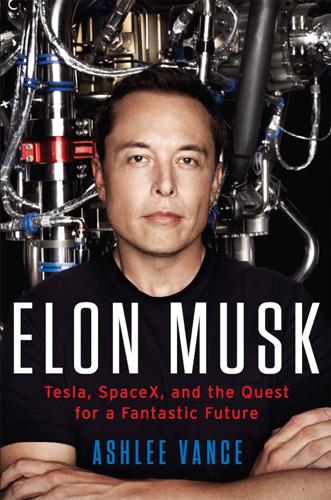
Elon Musk: Tesla, SpaceX, and the Quest for a Fantastic Future
by
Ashlee Vance
Published 18 May 2015
He became a one-man, ultra-risk-taking venture capital shop and doubled down on making super-complex physical goods in two of the most expensive places in the world, Los Angeles and Silicon Valley. Whenever possible, Musk’s companies would make things from scratch and try to rethink much that the aerospace, automotive, and solar industries had accepted as convention. With SpaceX, Musk is battling the giants of the U.S. military-industrial complex, including Lockheed Martin and Boeing. He’s also battling nations—most notably Russia and China. SpaceX has made a name for itself as the low-cost supplier in the industry. But that, in and of itself, is not really good enough to win. The space business requires dealing with a mess of politics, back-scratching, and protectionism that undermines the fundamentals of capitalism.

Between Human and Machine: Feedback, Control, and Computing Before Cybernetics
by
David A. Mindell
Published 10 Oct 2002
See also Radiation Laboratory; Servomechanisms Laboratory “A Mathematical Theory of Communication” (Shannon), 7 , 320 mathematics: at Bell Labs, 113 Bush on, 145 –46 and dynamic tester, 241 and feedback, 141 and fire control, 196 , 235 and NDRC, 202 , 328 , 334 of operational calculus, 110 , 145 –46, 227 , 279 Mauchly, John W., 10 , 193 , 296 Maxwell, James Clerk, 5 , 139 , 165 , 286 Mayr, Otto, 11 , 139 measurement, 83 and accuracy, 350 n115 in Ford Rangekeeper, 37 message, 4 –5, 302 , 312 , 320 –21 and transmission theory, 134 –35 Metal Mike (Sperry gyropilot), 72 –76 Metropolitan-Vickers, 158 Michelson, Albert A., 111 microwaves, 194 –95, 202 , 232 , 244 –45, 334 Midvale Steel Company, 217 military: and automatic pilots, 77 and electronics, 292 –93 and fire control systems, 221 , 252 and industry, 71 , 311 and NDRC, 195 –96, 198 , 202 secrecy in, 13 , 202 , 208 –9 and Sperry, 70 –71, 81 , 100 , 103 and universities, 257 , 311 and wartime research, 311 . See also Bureau of Ordnance, U.S. Navy; Navy, U.S. military-industrial complex, 9 Millikan, Robert, 111 , 132 , 180 –81, 189 , 355 n10 Minorsky, Nicholas, 96 , 140 –41, 166 , 177 , 274 , 286 missiles, 316 ballistic, 87 , 258 , 313 guided, 312 , 315 Nike antiaircraft, 315 Patriot, 31 3 Mitchell, Billy, 60 modeling, 149 –51, 178 , 321 and analog computing, 163 artificial, 174 hydraulic, 153 of networks, 146 , 149 –50 of power systems, 150 –51 modulation, 210 Moore School of Electrical Engineering (University of Pennsylvania), 158 , 288 , 331 , 335 , 388 n66 and ENIAC, 296 –99 Moore’s Law, 317 Morgan, Thomas, 25 , 30 , 81 , 221 , 350 n2 Morison, Samuel Eliot, 381 n9 Morristown trial, 125 –27, 132 , 151 , 358 n50 Mumford, Lewis, 1 –4, 11 , 16 , 106 , 163 , 318 on dissociation, 15 , 112 , 321 Murphy, M.
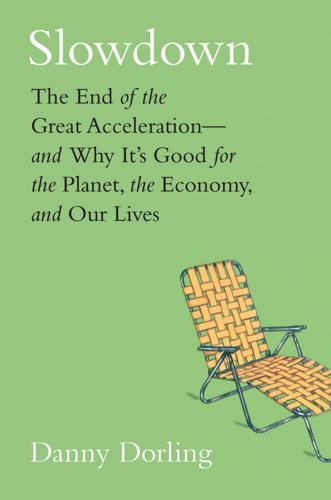
Slowdown: The End of the Great Acceleration―and Why It’s Good for the Planet, the Economy, and Our Lives
by
Danny Dorling
and
Kirsten McClure
Published 18 May 2020
In 1945 annual emissions were falling and stood at only just a fraction above 4 billion metric tonnes of CO2 a year, a level that today we would, as the unfortunate phrase has it, kill for. Then in 1946 and 1947, emissions grew by almost half a billion metric tonnes each year. The war economy of all the industrialized nations was being reprogrammed into a peacetime production machine. America’s military-industrial complex was just taking its current shape, and so the United States managed to sustain both its military manufacturing and its emissions, while at the same time creating a huge industrial base for its increasingly affluent and equitable home market of consumers, as well as for export to a world in which it was the greatest military power.

Competition Overdose: How Free Market Mythology Transformed Us From Citizen Kings to Market Servants
by
Maurice E. Stucke
and
Ariel Ezrachi
Published 14 May 2020
But one cannot seriously argue that these benefits should depend on our accepting the inevitability of a toxic competition in which the Gamemakers are always the winners and we have to agree to be the product. Just as US President Dwight D. Eisenhower warned against the creeping powers of the military industrial complex in his farewell address to the nation in 1961, Tim Cook, Apple’s CEO, in 2018, warned against the dangers of the “data industrial complex” where “[o]ur own information, from the everyday to the deeply personal, is being weaponized against us with military efficiency. . . . We shouldn’t sugarcoat the consequences.
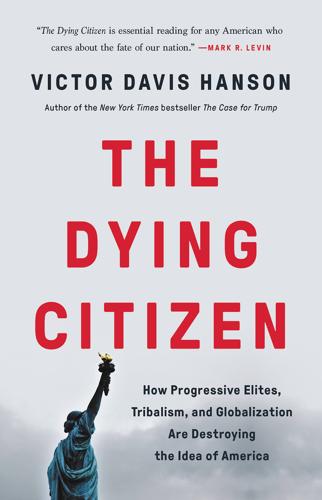
The Dying Citizen: How Progressive Elites, Tribalism, and Globalization Are Destroying the Idea of America
by
Victor Davis Hanson
Published 15 Nov 2021
In the case of the United States, it can also denote their multifarious and often incestuous—not to mention lucrative—bureaucratic relationships with the Washington–New York media, lobbyists, Wall Street, and elite universities.1 In the past, liberal critics especially warned of the deep state. They often cited the ominous power and overreach of the so-called military-industrial complex. In contrast, conservatives more often feared the power of regulatory agencies. They fought bureaucracies that tried to curtail the freedoms of private citizens and elected officials alike. They railed against the waste of public funds through inefficiencies and administrative bloat. Both sides, however, shared suspicions of these unelected and often exempt careerists.

The Perfectionists: How Precision Engineers Created the Modern World
by
Simon Winchester
Published 7 May 2018
Hart-Davis, Adam (ed). Engineers: From the Great Pyramids to the Pioneers of Space Travel. New York. Dorling Kindersley. 2012. Heffernan, Virginia. Magic and Loss: The Internet as Art. New York. Simon & Schuster. 2016. Hiltzik, Michael. Big Science: Ernest Lawrence and the Invention that Launched the Military-Industrial Complex. New York. Simon & Schuster. 2015. Hindle, Brooke. Technology in Early America. Chapel Hill. University of North Carolina Press. 1966. Hindle, Brooke and Steven Lubar. Engines of Change: The American Industrial Revolution, 1790–1860. Washington, DC. Smithsonian. 1986. Hirshfeld, Alan W.

Shoot for the Moon: The Space Race and the Extraordinary Voyage of Apollo 11
by
James Donovan
Published 12 Mar 2019
Further fueled by an almost constant barrage of opinion pieces and articles on the imminent dangers of Soviets in space, not to mention speeches and statements by Senator Lyndon Johnson and other Democratic congressmen eager to exploit the purported missile gap for their own political gain, Americans quickly began demanding a full-fledged space program. The president grudgingly conceded, though he dreaded adding another bureaucracy and the expenditures it would create. To Eisenhower, fed up with the endless territorial squabbling of the army, navy, and air force over space—he would later warn Americans of the “military-industrial complex”—it had become increasingly clear that the program needed to be nonmilitary. (In January 1958, he had even proposed to Russia that the two superpowers agree that “outer space should be used for peaceful purposes.” The Soviets rejected the offer.) Despite Ike’s insistence that there was no cause for alarm, the Democrat-controlled Congress chartered the National Aeronautics and Space Administration in July 1958, and on October 1, NASA became operational.
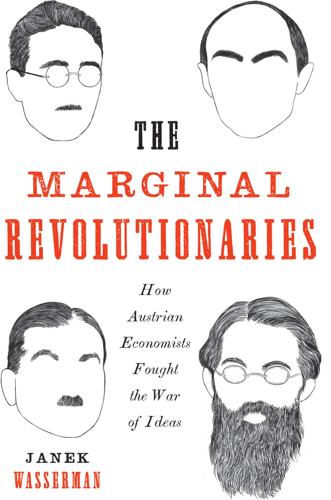
The Marginal Revolutionaries: How Austrian Economists Fought the War of Ideas
by
Janek Wasserman
Published 23 Sep 2019
He served on the board of the Market Research Corporation of America and founded Mathematica, Incorporated, which advised corporations and government agencies on investment strategies. His list of clients included General Motors, General Dynamics, DuPont, Raytheon, and Scudder Investments. Even as he grew disillusioned with US foreign policy decisions and US party politics, he made a substantial portion of his living by catering to the military-industrial complex and power elite. Despite these new opportunities, the opinions of Austrians still mattered to Morgenstern. “I was at Harvard 1–4 [June 1944], staying with the Haberlers. It was really great. Every night saw people. . . . The best was Schumpeter, especially when one could talk about the history of doctrines with him.
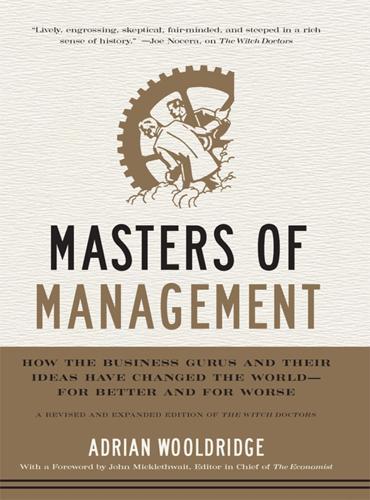
Masters of Management: How the Business Gurus and Their Ideas Have Changed the World—for Better and for Worse
by
Adrian Wooldridge
Published 29 Nov 2011
Porter soon found himself writing reports on competitiveness for national governments, including those of New Zealand, Canada, and Portugal, and for regional governments, including Massachusetts. Libya is in good company. Other even more unlikely gurus caught the public-sector bug. Tom Peters, who initially dismissed government as a bureaucratic swamp, having worked in the military-industrial complex in the 1970s, was so impressed by his fans in the public sector that he threw his weight behind government reform, even producing a film about “excellence in the public sector.” Kenichi Ohmae, the man who had once announced the end of the nation-state, gave up a lucrative job as head of McKinsey’s Tokyo office to devote himself to politics, even forming his own political party devoted to freeing Japan from the tentacles of the special interests.
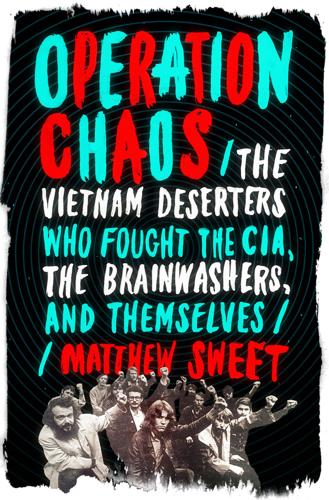
Operation Chaos: The Vietnam Deserters Who Fought the CIA, the Brainwashers, and Themselves
by
Matthew Sweet
Published 13 Feb 2018
Anyone considering migrating to Sweden was directed to the officers of the American Deserters Committee—the organization about which Bertil Svahnström had issued his gloomy warning. The first time I heard its name, I thought the ADC sounded rather innocuous. I imagined a room of sober young men passing resolutions against the military-industrial complex. Now I think of it as a phenomenon of a different order. Something through which we might read the times, like the psychedelic bus trip undertaken by Ken Kesey and the Merry Pranksters; or the Stanford Prison Experiment, inside which the psychologist Philip Zimbardo barricaded a group of impressionable boys and watched them sink into barbarism.

Fulfillment: Winning and Losing in One-Click America
by
Alec MacGillis
Published 16 Mar 2021
Bush’s 1988 presidential campaign over the discovery that he had, in 1972, produced a list of Jews in the Bureau of Labor Statistics for President Nixon. Malek took a gig at Carlyle and brought with him Frank Carlucci, Reagan’s final secretary of defense. With Carlucci’s help, Carlyle was able to buy BDM, Ford Aerospace’s defense consultancy, the first of many military-industrial complex investments. Seven years later, having expanded BDM’s operations into Saudi Arabia, Carlyle sold BDM, netting a 650 percent profit. Following in Carlucci’s footsteps, two other top members of the Bush administration joined Carlyle: budget director Richard Darman and Secretary of State James Baker III.

The Future Won't Be Long
by
Jarett Kobek
Published 15 Aug 2017
Crossroads had originated as an outlandish educational experiment of the 1970s. Reeking of incense, peppermints, and a whole helluvalotta hashish, a group of educators and likeminded parents banded together in the shadow of the Vietnam War, seeking methods of instruction which would not grease the gears of the military–industrial complex with their children’s blood. The goal being development of the individual as an individual. By the time of wee Adeline’s arrival, the doped ambitions of the hippie era had given way to an increasing ’80s institutionalization. Culture clash as waves of cocaine, celebrity, and money washed over the student body.

Doppelganger: A Trip Into the Mirror World
by
Naomi Klein
Published 11 Sep 2023
(“The War Room is a cash machine because it costs nothing to produce,” he told The Atlantic.) He adopts many of the arguments of what was once a robust anti-war left to oppose ballooning U.S. military spending in Ukraine, accusing the “cartel” ruling Washington of being in the pocket of “the military-industrial complex”—and then does everything he can to aim that same sprawling complex directly at China, a surefire recipe for World War III. Still, you can’t blame a strategist for being strategic. And it’s highly strategic to pick up the resonant issues that your opponents have carelessly left unattended.
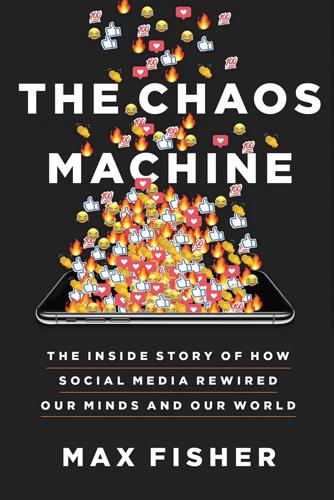
The Chaos Machine: The Inside Story of How Social Media Rewired Our Minds and Our World
by
Max Fisher
Published 5 Sep 2022
The story of that transformation, which bears little resemblance to the hacker legends or dorm-room tales that pass for Silicon Valley’s mostly self-invented lore, instilled the Valley with cultural and economic traits that were built into the products that increasingly rule our world. And it began with a wave of pioneers who played a role as crucial as any of the engineers or CEOs who came after them: the military-industrial complex. After Pearl Harbor, the Pentagon, preparing to push into the Pacific but fearing another surprise attack, dispersed military production and research across parts of the West Coast that still had a touch of the frontier to them. One such location was Moffett Field, a largely disused air-base on a protected bay, shielded by the Santa Cruz Mountains.

Make Your Own Job: How the Entrepreneurial Work Ethic Exhausted America
by
Erik Baker
Published 13 Jan 2025
See also entrepreneurial management Management and the Worker (1939), 60 Management: Tasks, Responsibilities, Practices (1973), 193 manufacturing, 27, 34–35, 73, 107, 124, 126, 146, 162, 187, 193–94, 197–98; capital-goods, 28; computer, 148; consumer-goods, 26, 36; corporations, 71; electrification, 27; and employment growth, 28, 161; high-technology, 5; and household economies, 22; mechanized, 29; plants, 195; workers, 4, 23, 71–72, 93, 145, 175, 214–15, 254 Marden, Orison Swett, 33–34, 82, 84 market, 83, 199, 201, 203, 207, 225; analysts, 188, 212; capitalist, 159; demands of, 106; economy, 156; freelance, 205; internal, 134, 193; and investors, 70; and services, 13; “share,” 150, 187, 198; and the state, 92 Market-Based Management (MBM), 182–84 Massachusetts Institute of Technology (MIT), 106–7, 110, 210; Center for International Studies, 119; Center for Urban Studies, 219; and engineering program, 104; Program on Neighborhood and Regional Change, 218; School of Industrial Management, 103–4 mass-market publications, 20–21, 155, 163, 219 Mayo, Elton, 55–57, 59–61, 63, 66, 91, 101 McDonald, Maurice, 165–66 McDonald, Richard, 165–66 McDonald’s, 165–69, 187, 203, 207, 219, 226 military industrial complex, 110 von Mises, Ludwig, 51, 181 modernization, 116, 118, 123, 163–64 modernization theory, 116, 119, 121, 125 Morris, Philip, 195 Morris, William, 49 National Association of Direct Selling Companies, 73 National Association of Manufacturers, 142 National Business League, 129–30 National Commission on Technology, Automation, and Economic Progress, 125–26, 149 National Federation of Business and Professional Women, 26, 79 National Labor Relations Act (1935), 73 National Right to Work Committee (NRTWC), 185–86 National Right to Work Foundation, 257 Negro World, 38 New Age, 153–58 New Age Journal, 153, 158 New Deal, 70, 77, 97–100, 110, 161–62; and anti-monopolists, 75; and democratic capitalism, 92; and liberalism, 69, 128; opposition to, 71, 86; and Norman Vincent Peale, 87–89; planners, 12, 116; and reforms, 69, 73; state, 59; welfare state, 91 New Economy, 204–7, 209, 212–14, 220–22, 224, 232–33, 235, 240 New Right, 15, 161–64, 188 New School, 45 New Thought, 14–15, 19–21, 30–31, 33, 36, 49, 77, 80, 82–87, 164, 222, 242, 248, 253, 258; and Divine Science, 38; and Mental Science, 32 Nisbet, Robert, 100 Noyce, Robert, 146 Occupy Wall Street movement, 250 Pareto, Vilfredo, 57–60, 62, 65 Peale, Norman Vincent, 85–88, 134–35, 164, 177, 210, 245 Pichai, Sundar, 6 Pinchot, Elizabeth, 190–93, 199, 201, 221 Pinchot, Gifford, 190–93, 199, 201, 221 popular psychology, 7–8, 10; literature, 9; and New Thought, 14, 19–20, 86; and self-help, 14 positive psychology, 15, 241–46 post–industrial society, 29, 248, 256 The Practice of Management (1954), 101 Principles of Scientific Management (1911), 41, 67 production, 29, 41, 48, 53, 61, 102, 110–11, 195, 205; and Arab entrepreneurs, 123; of books, 30; and capitalism, 131; employment, 71, 93; expanded, 106; household, 23; and McDonald’s, 165; “problem of,” 69; process, 27, 43–44, 55, 96, 124, 199, 214–15; and rationalism, 59; steel, 187; systems, 202; and Toyota, 207; workers, 109, 152, 204 productivity, 4, 104, 116, 156, 164, 187, 192; and entrepreneurship, 165; growth, 26; improvement of, 9, 27, 42, 63, 144; labor, 9, 27, 30; and Taylorism, 42 psychology, 157; and Andrew Kay, 111; and Arbeitsfreude, 51; and Brandeis University, 110; and David McClelland, 117; and democracy, 103; and Elton Mayo, 55; and entrepreneurship, 117–18, 121; and Hugo Münsterberg, 45; industrial, 44–45, 48–49; and Max Weber, 50; and Northwestern University, 45; personality, 15; scientific, 20, 86, 242; social, 97; and Werner Sombart, 50; worker’s, 47, 50 racism, 80; biological, 116; and neo-racism, 116, 124; white, 81 rationalism, 58–59, 67 Reconstruction Finance Corporation (RFC), 98–99, 110 republicanism, 22–23, 25 Republican Party, 76, 106, 142, 162, 168, 174; National Committee, 175 “right to work,” 185–86 Rockefeller, John, Jr., 44, 46 Rockefeller, Nelson, 123 Rockefeller Foundation, 44–45, 49, 65, 119 routinization, 234–35, 243 Ruskin, John, 49 Sanders, Bernie, 234, 250 San Francisco (CA), 1, 149, 154, 157 Schwartz, Peter, 155 Schwartz, Robert, 158, 191 Schumpeter, Joseph, 59, 101, 257; and Archiv für Sozialwissenschaft und Sozialpolitik, 51; and Capitalism, Socialism, and Democracy, 58; and entrepreneurial history, 65; and entrepreneurship, 52, 58, 61–62, 66, 70, 120, 234; and expertise, 61; and industrial creativity, 70; and L.

Vanishing New York
by
Jeremiah Moss
Published 19 May 2017
In the memo’s section on “Social Pathology,” he predicted that, due to “the types of personalities that slums produce,” American cities like New York would soon be facing a “genuinely serious fire problem.” He blamed the problem on arson, fires set by what he called antisocial blacks. This idea came from the RAND Corporation. (When Eisenhower warned America about the military-industrial complex, he might have been talking about RAND, the Cold War think tank that guided U.S. policy in Vietnam and created “rational choice theory,” the belief that humans are essentially individualistic and selfish, a key underpinning of the new ideology to come.) In partnership with RAND, the city created the Fire Project.

Post Wall: Rebuilding the World After 1989
by
Kristina Spohr
Published 23 Sep 2019
He wanted to restructure the traditional Soviet sociopolitical order ‘within the system’, which is why under glasnost he also advocated ‘socialist pluralism’ ahead of full ‘political pluralism’ – all this to reinvigorate the Soviet Union.[7] To achieve reform and rejuvenation, Gorbachev had to reduce the burden of the military-industrial complex on the Soviet economy, intensified during the 1980s by the war in Afghanistan and the spiralling arms race with America. To be sure, the Soviet command economy was performing poorly simply for structural reasons – a fact masked by the global oil price rise of the 1970s and the country’s vast Siberian reserves which fuelled a GDP growth rate of 2–3.5% between 1971 and 1980.
…
How would millions of ordinary Soviet citizens sustain the burden that ‘shock therapy’ would bring? Rampant inflation. Mass unemployment. Perhaps the complete breakdown of society. How could he possibly maintain order? And he could not ignore the fierce objections of Ryzhkov, who was voicing the feelings of many in the CPSU as well as the vested interests of the Soviet military-industrial complex – already inveterate critics of perestroika. Indeed, Ryzhkov threatened to resign if Gorbachev endorsed the 500 Days Plan, taking his whole government with him.[74] But going along fully with Ryzhkov’s line – and thereby leaving firmly in charge the very Moscow bureaucrats who had previously sabotaged every other Gorbachev reform – would only exacerbate the ongoing economic collapse.

Behind the Berlin Wall: East Germany and the Frontiers of Power
by
Patrick Major
Published 5 Nov 2009
As Frau M., a 46-year-old housewife in the Exclusion Zone, put it: ‘everything cramped up inside me’.²⁶ For those already susceptible, national division and Cold War paranoia could distort their whole perception of reality, such as the young man caught distributing leaflets on ‘secret television’, allegedly broadcast by the West German military–industrial complex, sending ‘small black threads floating through the air, especially when the Centre is watching you read or write’.²⁷ It also seems likely that in areas ²¹ SED-KL Buna to SED-BL Halle, 14 Aug. 1961, LAM, BPA SED Halle, IV2/55/1145, fos. 129–31. ²² FDGB-BV Dresden (Org), ‘2. Situationsbericht’, 16 Aug. 1961, SächsHStA, BPA SED Dresden, IV2/5/136, fos. 18–21. ²³ Uwe Johnson, Zwei Ansichten (1965; Frankfurt: Suhrkamp, 1992), 47.

Exploding the Phone: The Untold Story of the Teenagers and Outlaws Who Hacked Ma Bell
by
Phil Lapsley
Published 5 Feb 2013
THOSE FOUR WORDS, all in caps, formed the headline of a flyer handed out at the 1971 May Day demonstrations in Washington, D.C. More than thirty thousand hippies, Yippies, students, and radicals had camped out on the banks of the Potomac. They smoked dope, they listened to rock music, they marched, they protested—against the Vietnam War, against the military-industrial complex, against racism, sexism, the government, and Tricky Dick Nixon. It was, in some ways, the ultimate realization of Marlon Brando’s reply in The Wild One when asked what he was rebelling against: “Whadya got?” The flyer heralded the birth of a new newsletter: YIPL, the Youth International Party Line.
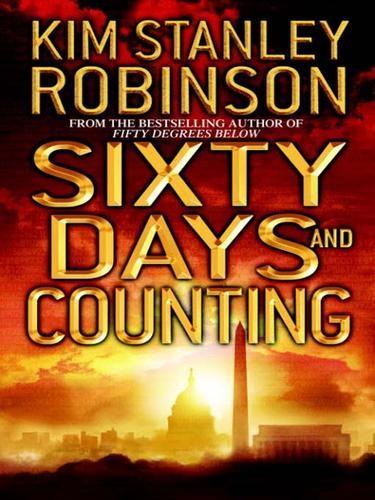
Sixty Days and Counting
by
Kim Stanley Robinson
Published 27 Feb 2007
“The military budgets of the world equal about a trillion dollars a year,” Frank noted, “half of that coming from the United States. Maybe we can’t afford to throw that work away anymore. Maybe the money could be reallocated. And we do need a really big manufacturing capacity here. What if the entire military-industrial complex, funded by these enormous budgets, were redirected to the projects we are outlining? How long would it take for the global effects to be measurable?” Dream on, someone muttered. Others thought it over, or punched numbers into their handhelds, testing out possibilities. Of course redirecting the military budgets of the world was “unrealistic.”

Convergence Culture: Where Old and New Media Collide
by
Henry Jenkins
Published 31 Jul 2006
The only recurring characters are those at the communications hub w h o contact the volunteers. Once Frequency participants are called into action, most of the key decisions get made on site as the volunteers are allowed to act o n their localized knowledge. Most of the challenges come, appropriately enough, from the debris left behind by the collapse of the military-industrial complex and the end of the cold w a r — " T h e bad m a d things i n the dark that the public never found out about." In other words, the citizen soldiers use distributed knowledge to overcome the dangers of government secrecy. 17 Ellis's G l o b a l Frequency N e t w o r k closely mirrors what journalist Skenovâno pro studijni ucely Conclusion and digital activist H o w a r d Rheingold has to say about smart mobs: "Smart mobs consist of people w h o are able to act i n concert even if they don't k n o w each other.

Life's Greatest Secret: The Race to Crack the Genetic Code
by
Matthew Cobb
Published 6 Jul 2015
. … I have seriously considered the possibility of giving up my scientific productive effort because I know no way to publish without letting my inventions go to the wrong hands.23 Wiener’s wartime experience had convinced him that science should be as open as possible, and should not be tied to the private sector or the military. Von Neumann, in contrast, was keen to put his snout as deep as possible into the trough of the military–industrial complex that was beginning to dominate the US economy. His twin aims were to obtain funding to build the computer he had dreamt up, and to counter what he saw as the threat from the USSR. Despite their profound differences, the two men continued to work together, most notably in the organisation of a conference that took place in March 1946 under the cumbersome title ‘The Feedback Mechanisms and Circular Causal Systems in Biology and the Social Sciences Meeting’ (more commonly known as the Macy conference, after the sponsors, the Josiah Macy Jr Foundation).

Global Spin: The Corporate Assault on Environmentalism
by
Sharon Beder
Published 1 Jan 1997
However no such objection was made in the case of GE, and the then US Attorney General later joined GE’s board of directors.90 Douglas Kellner, in his book on Television and the Crisis of Democracy , argues: The fact that this corporation—one of the major producers of nuclear weapons and energy, a top defense contractor, and a key player in the military-industrial complex. . . was allowed to take over a major television network and use it to advance its corporate goals makes a mockery of the antitrust laws, the public utility status of broadcasting, and the federal regulatory apparatus.91 General Electric as a Responsible Corporate Citizen GE is a leading member of the Business Roundtable, and supports a range of corporate front groups including the American Council on Science & Health, Citizens for a Sound Economy, and the Council for Energy Awareness (which promotes nuclear power).92 GE’s board is a conservative cross-section of the power élite—corporate executives, bankers, retired cabinet members and generals, an Ivy League president and several Ivy boardmembers.
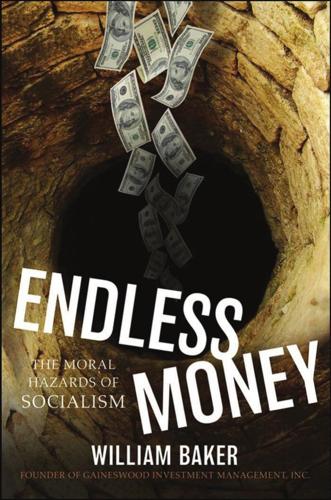
Endless Money: The Moral Hazards of Socialism
by
William Baker
and
Addison Wiggin
Published 2 Nov 2009
There was industry of sorts in ancient times, for example in the mining, cutting, and transport of marble for Rome, but generally nearly all economic activity up through the early 20th century was agricultural. We cannot know reliably what weight military expenditure carried in the Roman economy, but it must have been significant. Cullen Murphy tells us: “The Romans didn’t have Henry Ford-style mass production, but they did have factories and they did have a military-industrial complex. Three dozen fabricae were located strategically throughout the empire to provide the legions with armaments; some of them were general suppliers of swords and shields. Others were more specialized.”18 We know that living conditions for those who were not part of the 600 senators and 30,000 equestrians (so named because they were entitled to a public horse) were so subsistence-like that they generally could not afford to use gold coins for commerce, using silver or copper instead.

Ghost Fleet: A Novel of the Next World War
by
P. W. Singer
and
August Cole
Published 28 Jun 2015
A week back, a construction detour had forced him to walk across the Pentagon’s inner courtyard. It was daytime, and he knew the sun was somewhere up there, hidden behind the finely woven anti-exploitation netting that covered the whole building now, making it look like it was wrapped in a silk cocoon. Christo City was the nickname going around, a play on the name of the nearby military-industrial complex of office buildings known as Crystal City and the renowned artists who used to wrap monuments in fabric. But even if Darling’s work was unrelenting, he still had to eat. Maybe it was the pilot in him, but he was damned if he was going to let some drone get him his food. You have to draw the line somewhere, he thought as a train of iRobot Majordomos purred by carrying their honeycomb-like storage containers filled with wraps and sandwiches.
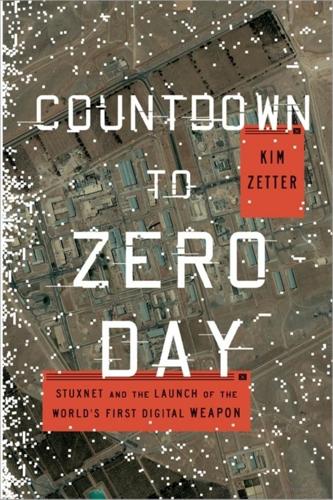
Countdown to Zero Day: Stuxnet and the Launch of the World's First Digital Weapon
by
Kim Zetter
Published 11 Nov 2014
“It needs to be polished and come with documentation.” But the really big trade in exploits these days is not done by middlemen and individual sellers like Miller and The Grugq, but by the security firms and defense contractors who have made the development and sale of exploits for government part of the new military industrial complex. Although governments still produce their own exploits—the NSA employs teams for this—they also outsource to other firms because the demand for exploits has grown, as has the cost of producing them: two or three years ago, a single vulnerability was sufficient to gain root-level access to a machine.

Accelerando
by
Stross, Charles
Published 22 Jan 2005
A camera winks at him from atop a streetlight; he waves, wondering idly if it's the KGB or the traffic police. He is waiting for directions to the party, which should arrive within the next half hour, and this Cold War retread Eliza-bot is bumming him out. "Look, I don't deal with the G-men. I hate the military-industrial complex. I hate traditional politics. They're all zero-sum cannibals." A thought occurs to him. "If survival is what you're after, you could post your state vector on one of the p2p nets: Then nobody could delete you –" "Nyet!" The artificial intelligence sounds as alarmed as it's possible to sound over a VoiP link.
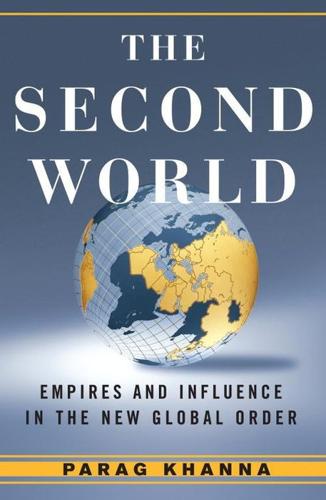
Second World: Empires and Influence in the New Global Order
by
Parag Khanna
Published 4 Mar 2008
The uncertain alignments of lesser but still substantial powers such as Russia, Japan, and India could also cause escalation. Furthermore, America’s foreign lenders could pull the plug to undermine its grand strategy, sparking economic turmoil, political acrimony, and military tension. War brings profit to the military-industrial complex and is always supported by the large patriotic camps on all sides. Yet the notion of a Sino-U.S. rivalry to lead the world is also premature and simplistic, for in the event of their conflict, Europe would be the winner, as capital would flee to its sanctuaries. These great tensions are being played out in the world today, as each superpower strives to attain the most advantageous position for itself, while none are powerful enough to dictate the system by itself.

Dealers of Lightning
by
Michael A. Hiltzik
Published 27 Apr 2000
These included the ARPANET, the embryonic Internet he conceived and financed as a Pentagon grantmeister before joining PARC, and the idea of the personal computer, linked into a local network and equipped with a high-quality interactive display. He settled back, slippers on the coffee table. “I was never interested in the computer as a mathematical device, but as a communications device,” he said, then paused meaningfully, as if to suggest that I would almost have had to live within the military-industrial complex of the 1960s to understand how revolutionary a worldview that was. The history of the digital computer up to then was that of a glorified calculator. A mainframe taking up half the floor of a large office building could run a payroll, balance the books of a billion-dollar corporation, calculate in split seconds the optimum trajectory of an artillery shell or a manned spacecraft aimed at the moon.

The Cigarette: A Political History
by
Sarah Milov
Published 1 Oct 2019
Defense contractors—firms like Boeing, General Electric, Lockheed—were the most visible beneficiaries of the mixed economy, nurtured by the explosive demand for the technologically advanced weapons of the Cold War. While President Dwight Eisenhower left office warning of the “total influence—economic, political, even spiritual” of the military-industrial complex, other private-public complexes were flourishing. Regulated industries—airlines, communications, transportation, utilities—achieved steady growth, which in turn helped to undergird the growth of the rest of the economy.97 The expansion in the American economy was twinned with the expansion of government.
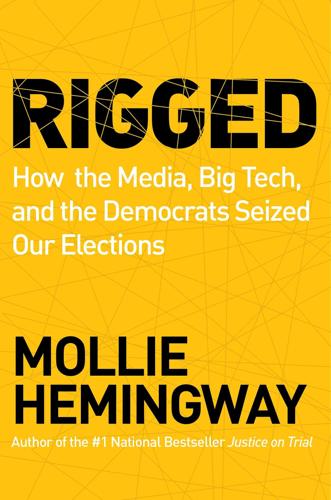
Rigged: How the Media, Big Tech, and the Democrats Seized Our Elections
by
Mollie Hemingway
Published 11 Oct 2021
Despite ludicrous claims during the 2016 campaign that Trump would lead the world into nuclear annihilation, he was instead creating peace. Because of the success of his foreign policy, there weren’t many ways to go after Trump and the military. The Trump administration had negotiated a series of historic peace deals in the Middle East and was fighting a powerful military industrial complex to end America’s longest war in Afghanistan.64 So the media ran another fake news story about dead soldiers. The Atlantic’s editor in chief, Jeffrey Goldberg, pushed out an “exclusive” story based entirely on anonymous sources alleging that “[w]hen President Donald Trump canceled a visit to the Aisne-Marne American Cemetery near Paris in 2018, he blamed rain for the last-minute decision, saying that ‘the helicopter couldn’t fly’ and that the Secret Service wouldn’t drive him there.

Active Measures: The Secret History of Disinformation and Political Warfare
by
Thomas Rid
The arguments in favor of NATO force modernization were phony, the authors argued. There was no looming Warsaw Pact military superiority in Europe. The United States had already planned the destruction of Europe: “There is no ‘Soviet threat,’ there is a very real American threat to Europe.” The pamphlet then outlined the familiar argument that the American military-industrial complex, especially “electronics interests,” stood to make a lot of money from researching and producing modernized weapon systems, such as the new cruise missile. What followed was a most extraordinary self-reflection. “That view probably looks very much like Soviet propaganda,” the KGB wrote in skillfully colloquial English, “and pretty cheap propaganda to boot.”10 It did indeed.

Tailspin: The People and Forces Behind America's Fifty-Year Fall--And Those Fighting to Reverse It
by
Steven Brill
Published 28 May 2018
Donors contributed millions of dollars to support Nader’s Raiders—teams of students coming out of college and law school organized to do research and issue reports (with headline-grabbing press releases) on all varieties of alleged business abuses, which the Raiders’ legal teams then brought suits to stop. The assault on corporate America was starting to sting. There were attacks from other groups seeking reforms aimed at protecting the environment, ending job discrimination against women and minorities, curbing the military industrial complex, and protecting employees against unsafe or unhealthy workplaces. Even President Richard Nixon, elected in 1968, seemed sympathetic. By 1972, he had signed or would soon sign laws establishing price controls, the Equal Employment Opportunity Commission, the Environmental Protection Agency, and the Occupational Health and Safety Administration.

How to Change Your Mind: What the New Science of Psychedelics Teaches Us About Consciousness, Dying, Addiction, Depression, and Transcendence
by
Michael Pollan
Published 30 Apr 2018
His first experience with LSD “was kind of a bum trip,” he recalls, but it led to a series of other journeys that reshaped his worldview and, indirectly, all of ours. The Whole Earth Network Brand would subsequently gather together (which included Peter Schwartz, Esther Dyson, Kevin Kelly, Howard Rheingold, and John Perry Barlow) and play a key role in redefining what computers meant and did, helping to transform them from a top-down tool of the military-industrial complex—with the computer punch card a handy symbol of Organization Man—into a tool of personal liberation and virtual community, with a distinctly countercultural vibe. How much does the idea of cyberspace, an immaterial realm where one can construct a new identity and merge with a community of virtual others, owe to an imagination shaped by the experience of psychedelics?
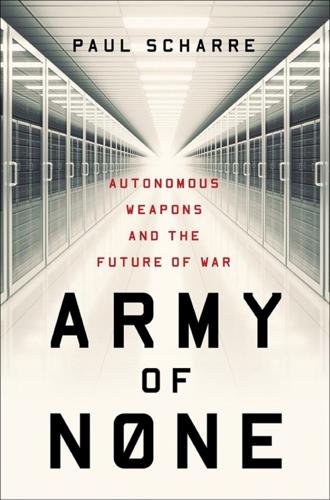
Army of None: Autonomous Weapons and the Future of War
by
Paul Scharre
Published 23 Apr 2018
While NASA had the mission of winning the space race, ARPA had a more fundamental mission of investing in high-risk, high-reward technologies so the United States would never again be surprised by a competitor. To achieve its mission, DARPA has a unique culture and organization distinct from the rest of the military-industrial complex. DARPA only invests in projects that are “DARPA hard,” challenging technology problems that others might deem impossible. Sometimes, these bets don’t pan out. DARPA has a mantra of “fail fast” so that if projects fail, they do so before investing massive resources. Sometimes, however, these investments in game-changing technologies pay huge dividends.
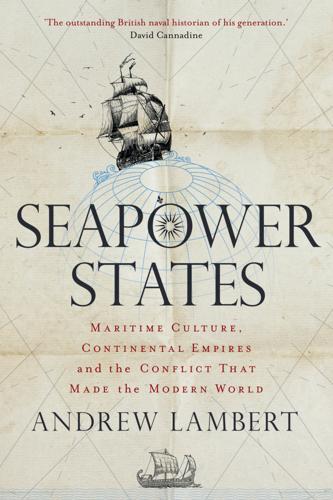
Seapower States: Maritime Culture, Continental Empires and the Conflict That Made the Modern World
by
Andrew Lambert
Published 1 Oct 2018
Roosevelt failed to grasp the strategic threat posed by Soviet Russia. The US was finally brought into the conflict by the Japanese attack on Pearl Harbor in December 1941. By that time the Royal Navy had waged global war for thirty months, securing critical sea lanes.101 Once at war the United States Navy created a ‘military-industrial complex’ and long-term procurement programmes that would be politically difficult to shut down.102 By 1945 the United States Navy had outgrown the Royal Navy, winning the Pacific Naval War single-handed. Yet naval victory was always a limited measure, too limited for a deeply continental American nation.

The Sullivanians: Sex, Psychotherapy, and the Wild Life of an American Commune
by
Alexander Stille
Published 19 Jun 2023
This took place in the early months of the Reagan administration, with a new, hawkish government determined to confront the Soviet Union, build sophisticated missile systems, and ignite fears of confrontation with the world’s other big nuclear power. Joan Harvey was starting work on a new film about the nuclear arms race. The Fourth Wall, at least by its own reckoning, was now taking on the U.S. military-industrial complex and trying to shut down its nuclear industry. Surely, the leadership thought, our imperialist government would not take that threat lying down and would retaliate sooner or later. * * * The experiences of Fourth Wall members varied widely, depending on a number of factors: how close they were to the leadership, how much power or money they had, how involved (or uninvolved) they were in the group’s main activities, how much contact they had with the world outside the group, whether or not they had a child or wanted to have a child.

Blood in the Machine: The Origins of the Rebellion Against Big Tech
by
Brian Merchant
Published 25 Sep 2023
“These riots owe not” Pitt the Younger was the lead figure of the so-called new Tories, influential in shaping the era’s conservative politics. Britain’s youngest-ever prime minister, Pitt was in favor of Catholic emancipation and the abolition of slavery. He was also a war hawk who drove Britain’s campaign against Napoleon, building up its military-industrial complex and levying unpopular taxes. He was a vigorous disciple of Adam Smith who oversaw the undoing of regulations that protected artisan workers, and took an authoritarian stance toward cracking down on reformers and dissent. 36. “This is only to put off” Saul David, Prince of Pleasure, 324. 37.

The War Came to Us: Life and Death in Ukraine
by
Christopher Miller
Published 17 Jul 2023
I called a mobilization [in March 2014]. Then I realized that to restore the army it was necessary not only to train our soldiers and officers, it was necessary to provide them with modern weapons. I made it a priority to restore the country’s military-industrial potential. I gathered all the leaders of the military-industrial complex and said that we have few resources, practically no time, but there are huge tasks that need to be implemented. We began to plan our missile defense, because in modern warfare, without missiles, in fact, a country cannot resist, it cannot be defended. We created the Stugna-P and Korsar anti-tank missile systems, and the Neptune anti-ship cruise missile system, all of which have now shown themselves to be very capable.

The Disappearing Act
by
Florence de Changy
Published 24 Dec 2020
In 2006, Freescale Semiconductor was bought out for nearly US$18 billion by a financial consortium led by the Blackstone Group and the Carlyle Group. The purchase was the largest private buyout of a technology company at the time.2 Blackstone and Carlyle were tentacular empires with interests across the globe. It would be difficult to imagine being any closer to the heart of the American military–industrial complex. The Carlyle Group was widely known to be chummy with the Bush clan and to have clients such as the Saudi Binladin Group, the business owned by the prominent Saudi Arabian family of the same name. The Blackstone Group was founded in 1985 by two former Lehman Brothers executives and emerged as one of today’s leading private equity firms, headquartered on Park Avenue in Manhattan.

The Quiet Coup: Neoliberalism and the Looting of America
by
Mehrsa Baradaran
Published 7 May 2024
The United States faced no such dilemma; it had become the world’s dominant economy due to its vast native resources, including oil, steel, and lumber, combined with its wartime ramp-up of manufacturing capacities. Yet while the United States did not need former colonies for imports, many American companies were transnational corporations with a signficant foreign presence, such as Kennecott copper in Chile, Chevron oil in Iran, and Chase Bank everywhere. American weapons companies feeding the military industrial complex relied on overseas mining and labor for their corporate revenues. These firms, too, could have transitioned their businesses, although not without some financial losses. For the former colonies to get their fair share of the world’s wealth, the powerful would have to lose their special rights and privileges.
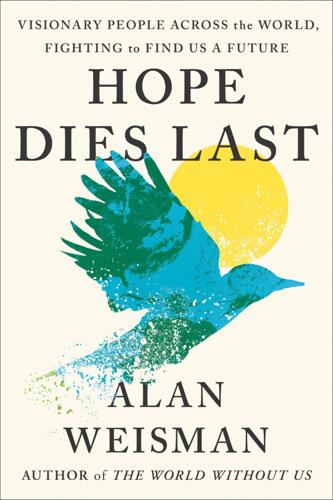
Hope Dies Last: Visionary People Across the World, Fighting to Find Us a Future
by
Alan Weisman
Published 21 Apr 2025
Fish from far across the lagoon or outside the atoll was still safe, but gasoline was nearly $10 a gallon, and there was no sailing culture anymore. On an island packed with descendants of history’s greatest mariners, who’d navigate thousands of miles by stars and stick charts, Gregg saw not a single outrigger canoe. “Kwajalein is a microcosm of our military-industrial complex’s brutal impact on Indigenous cultures and the developing world,” he told Eric. “There’s no better example. If we can do something here, it’ll prove that we probably can do it anywhere.” A Tufts program called ALLIES—Alliance Linking Leaders in Education and the Services—paired civilian undergrads with peers from military academies on trips abroad to get acquainted for when they later became policymakers and officers.

Rewired: The Post-Cyberpunk Anthology
by
James Patrick Kelly
and
John Kessel
Published 30 Sep 2007
A camera winks at him from atop a street light; he waves, wondering idly if it’s the KGB or the traffic police. He is waiting for directions to the party, which should arrive within the next half an hour, and this cold war retread is bumming him out. “Look, I don’t deal with the G-men. I hate the military industrial complex. They’re zero-sum cannibals.” A thought occurs to him. “If survival is what you’re after, I could post your state vector to Eternity: then nobody could delete you—” “Nyet!” The artificial intelligence sounds as alarmed as it’s possible to sound over a GSM link. “Am not open source!” “We have nothing to talk about, then.”

In the Shadow of the Moon: A Challenging Journey to Tranquility, 1965-1969
by
Francis French
,
Colin Burgess
and
Walter Cunningham
Published 1 Jun 2010
Prior to any Soviet space mission a highlevel government committee would travel from Moscow to Tyuratam to certify that the spacecraft was in good condition. In his coauthored book Two Sides of the Moon, Alexei Leonov reveals that the committee on this occasion “was led by Leonid Smirnov, then head of the military-industrial complex, and included, of course, Mishin, as chief designer, and Boris Chertok, chief engineer, together with many other engineers and designers. Yuri Gagarin and I were also on the committee.” Despite the report listing a total of 203 hardware problems, approval was given for the complex flight of Soyuz 1 and 2 to proceed.

Meat: A Benign Extravagance
by
Simon Fairlie
Published 14 Jun 2010
Reversing an earlier company decision, Krauch sanctioned the building of a synthetic rubber plant, ‘not only impelling the selection of a site near Auschwitz, but also instigating the use of concentration camp inmates as construction workers’. As Smil acknowledges, synthetic nitrogen was a child of the military industrial complex – as was the hydroelectric manufacture of aluminium in the 1940s (‘making Flying Fortresses for Uncle Sam’ in Woody Guthrie’s words), and a few years later the development of nuclear energy. In the 1930s and during the war, IG Farben also developed the use of organophosphate nerve gases such as Sarin, and the technology was adopted by US companies after the war to make pesticides.
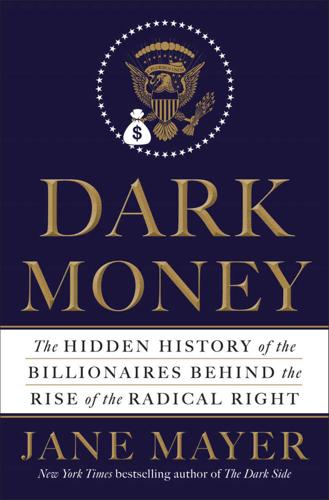
Dark Money: The Hidden History of the Billionaires Behind the Rise of the Radical Right
by
Jane Mayer
Published 19 Jan 2016
Its assets leaped from $14 million to some $290 million. When it bought the Allen-Bradley company, two-thirds of Rockwell’s revenues, and half of its profits, came from U.S. government contracts. Rockwell had become, in fact, a poster child for wasteful government spending. The Los Angeles Times called it a “symbol of a military industrial complex gone berserk.” Rockwell’s coffers were bulging with cash, but its reputation had taken a hit from its role as the main contractor producing the B-1 bomber, an aircraft so maligned it earned the nickname the Flying Edsel. President Carter had canceled the program as a waste of money, but after Rockwell waged a strenuous lobbying campaign, President Reagan had brought it back to life.
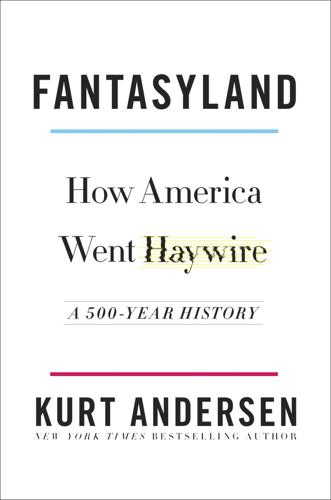
Fantasyland: How America Went Haywire: A 500-Year History
by
Kurt Andersen
Published 4 Sep 2017
“Bin Laden is the bogeyman they need in this Orwellian, phony system.” He called George W. Bush “the bipartisan imperialist elite’s front man.” He later executive-produced a documentary explaining that the 9/11 attacks were an inside job by the U.S. government. He’s still around, ragging on the military-industrial complex (“sending troops to die in illegal wars”), the horrors of the prison camp at Guantánamo Bay, the Bilderberg Group (“the apex of the…power structure”), Goldman Sachs, the World Bank, the International Monetary Fund, corporate America in general (“Madison Avenue makes us addicts of consumerism”).

The Power Elite
by
C. Wright Mills
and
Alan Wolfe
Published 1 Jan 1956
For all the blustery talk of Secretary of State John Foster Dulles about the Russian menace, the President himself seemed somewhat disengaged from foreign policy. And his domestic program amounted to little more than constructing the highways which you planned to use as you thought about moving to Los Angeles in search of the jobs being created by what Eisenhower himself would soon call “the military industrial complex.” Into this milieu exploded The Power Elite. C. Wright Mills was one of the first intellectuals in America to write that the complacency of the Eisenhower years was not enough. His indictment was uncompromising. On the one hand, he claimed, vast concentrations of power had coagulated in America, making a mockery of American democracy.

Going Clear: Scientology, Hollywood, and the Prison of Belief
by
Lawrence Wright
Published 17 Jan 2013
Davis explained, “Anyone who saw JFK remembers a scene on the Mall where Kevin Costner’s character goes and meets a man named Mr. X, who’s played by Donald Sutherland.” In the film, Mr. X is an embittered intelligence agent who explains that the Kennedy assassination was actually a coup staged by the military-industrial complex. In real life, Davis said, Mr. X was Colonel Leroy Fletcher Prouty, who had worked in the Office of Special Operations at the Pentagon. (Oliver Stone, who directed JFK, says that Mr. X was a composite character, based in part on Prouty.) In the 1980s, Prouty worked as a consultant for Scientology and was a frequent contributor to Freedom magazine.

The Unwinding: An Inner History of the New America
by
George Packer
Published 4 Mar 2014
Certain couples belonged to the subset of Washington’s permanent class having to do with the financial sector, the Wall Street–Washington axis—Treasury officials, Banking Committee staffers, regulators. Connaughton called it the Blob. (There were other blobs—for example, in defense, the military-industrial complex—that he never got to know.) Members of the financial blob were unusually tight with one another. In the case of one couple, the husband was an ex-lobbyist who worked on a key Senate committee, the wife an ex-Treasury official who went over to the SEC. They networked night and day, playing the long game, and when the two of them decided to cash in for good, they would be worth a lot of money

Light This Candle: The Life & Times of Alan Shepard--America's First Spaceman
by
Neal Thompson
Published 2 Jan 2004
Shepard enjoyed himself so much, one of those nights he had to “slow-roll” his car home at half the speed limit. At the time, the Navy was buying up hundreds of new jets, planes that Shepard had tested and critiqued back at Patuxent River. Even more than World War II, the Korean War invigorated the American economy, marking the origins of what Eisenhower would one day call America’s “military-industrial complex” and making corporations such as Douglas and North American increasingly powerful and wealthy. As part of its transition, the Navy was retiring most of its propeller squadrons and replacing them with new jet squadrons. Air groups typically consisted of four different squadrons, and Air Group 19 was among the first groups to switch from three squadrons of propeller planes and one squadron of jets to the reverse: three jet squadrons (including Shepard’s VF-193) and just one prop squadron.
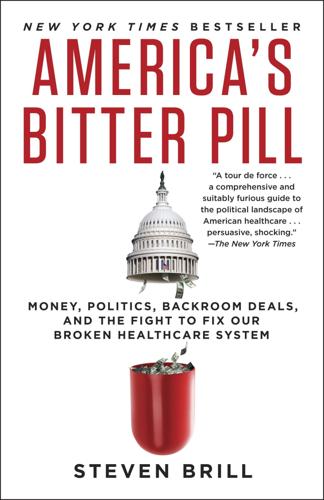
America's Bitter Pill: Money, Politics, Backroom Deals, and the Fight to Fix Our Broken Healthcare System
by
Steven Brill
Published 5 Jan 2015
It’s about politics and ideology: In a country that treasures the marketplace, how much of those market forces do we want to tame when trying to cure the sick? And in the cradle of democracy, or swampland, known as Washington, how much taming can we do when the healthcare industry spends four times as much on lobbying as the number two Beltway spender, the much-feared military-industrial complex? It’s about the people who determine what comes out of Washington—from drug industry lobbyists to union activists; from senators tweaking a few paragraphs to save billions for a home state industry to Tea Party organizers fighting to upend the Washington status quo; from turf-obsessed procurement bureaucrats who fumbled the government’s most ambitious Internet project ever to the selfless high-tech whiz kids who rescued it; and from White House staffers fighting over which faction among them would shape and then implement the law while their president floated above the fray to a governor’s staff in Kentucky determined to launch the signature program of a president reviled in their state.
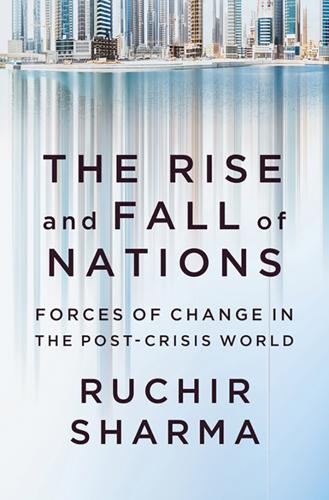
The Rise and Fall of Nations: Forces of Change in the Post-Crisis World
by
Ruchir Sharma
Published 5 Jun 2016
Maduro’s comments suggested that he recognized the scale of the subsidy problem but did not necessarily indicate that he was going to interfere less in the economy, because he was proposing to take money out of energy subsidies and put it into a welfare fund that pays for other giveaways. The debate over “guns versus butter” started before World War II and found its most famous proponent in President Dwight Eisenhower, the general and war hero who argued that heavy spending on America’s “military-industrial complex” would threaten its ability to produce civilian goods. Today, the debate has shifted to roads versus butter and the argument that every dollar a government spends subsidizing free food or energy is a dollar it cannot spend building roads or other infrastructure, which boost future growth in a way that freebies cannot.
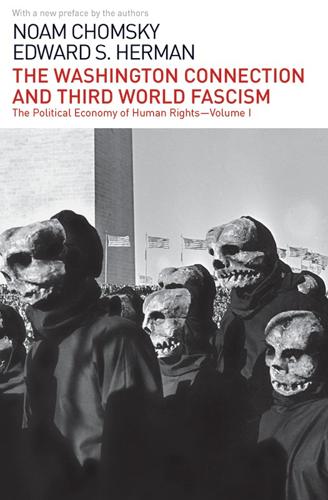
The Washington Connection and Third World Fascism
by
Noam Chomsky
Published 24 Oct 2014
Rarely was the United States portrayed in the mass media or mainstream academic scholarship as engaged in the positive pursuit of its own economic-imperial interests at the expense of any people standing in its way; nor are its exploits described as subversion or outright aggression. The hypocrisy and sheer silliness of much political commentary in this regard is truly remarkable. At the outer limits of absurdity, we find the Wall Street Journal deriding the “simple-minded myths” that “the problems in Indochina stem from things like American imperialism and its military-industrial complex” (editorial, 31 August 1978). Such phrases as “American imperialism,” ordinarily under a strict taboo, are occasionally permitted in such contexts as these. Readers are carefully protected from exposure to any serious discussion of the concept that arouses such horror. We were in Indochina not because of any U.S. material interests motivating a “forward” foreign policy, but as a matter of higher principle, exactly as when we aid and support Stroessner in Paraguay or the Shah in Iran.

A Generation of Sociopaths: How the Baby Boomers Betrayed America
by
Bruce Cannon Gibney
Published 7 Mar 2017
The Space Shuttle made a desultory appearance at the 1984 Fair, but enthusiasm for this sort of display can be inferred from the fact that there has not been an American Fair since.* In an age of endless sequels, Futurama II alone begat no grandchildren. Futurama 1964 was the end of the line, in part because of the growing skepticism of the Boomers about the merits of science and technology, whose roles in the military-industrial complex felt compromised. As usual, the Boomers’ view was devastatingly unsubtle, because if technology provided the bombs, it also made modern existence possible. Average life expectancy, thanks to medicine and public health, has more than doubled over the preceding five hundred years. The tyranny of distance, which formerly confined people to a short radius around their place of birth, has been abolished by airplanes, automobiles, and the Internet.
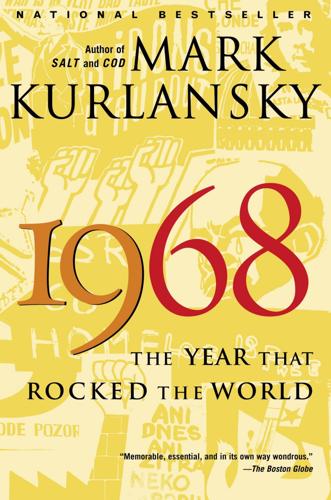
1968: The Year That Rocked the World
by
Mark Kurlansky
Published 30 Dec 2003
Most of the others, such as Eldridge Cleaver’s Soul on Ice, did not come until 1968. C. Wright Mills, a sociologist well respected in academic circles who died at the height of his popularity in the early 1960s, had been widely read since his 1950s book, The Power Elite, which told of the military-industrial complex before Eisenhower had coined the phrase in his 1960 farewell address. Mills had articulated a view of society’s power structure that was felt by many of the New Left youth. According to Mills, the ruling class was made up of a new clique of politicians, corporate executives, and military commanders who maintained their hold on power by perpetuating the cold war.
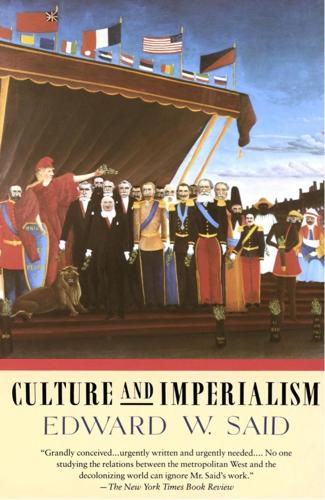
Culture and Imperialism
by
Edward W. Said
Published 29 May 1994
There was a certain shallowness, a failure to rise much above the level of journalism, in the literature of protest in the inter-war years.… It lacked the imaginative depth or resonance which can only be derived from a responsive environment.… From the World War onward, intellectuals were drawn increasingly into public activities whose ultimate dynamo was the military-industrial complex. They took part in strategic planning, and the development of scientific warfare and counter-insurgency, were flatteringly invited to the White House, and rewarded presidents with the incense due to royalty. All through the Cold War, scholars engaged in Latin American studies, underwrote the ideology of “good neighborship,” of the harmony of interests between the U.S. and the rest of the world.
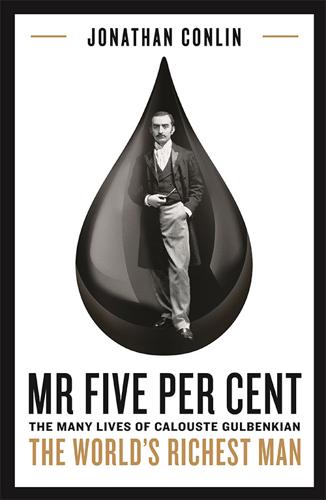
Mr Five Per Cent: The Many Lives of Calouste Gulbenkian, the World's Richest Man
by
Jonathan Conlin
Published 3 Jan 2019
At this point in the memo Curzon pipes up, writing in his distinctive green ink. ‘Do we [the Foreign Office] approve?’ he enquires. ‘And how comes it that the thing has been done in this hole and corner way[?]’6 Nothing better illustrates the way in which the First World War had forged an oily military-industrial complex than the diplomatic squabbles over whether oil surveyors were to be granted permission to travel to Syria and Iraq to prospect. Thanks to the principled stand taken by Wilson, representatives of the American firm Socony were kept out of Iraq.7 Gulbenkian’s war service had given him excellent contacts among Allied forces’ supply divisions, however, and he now made effective use of them as scouts able to pull rank (and strings).
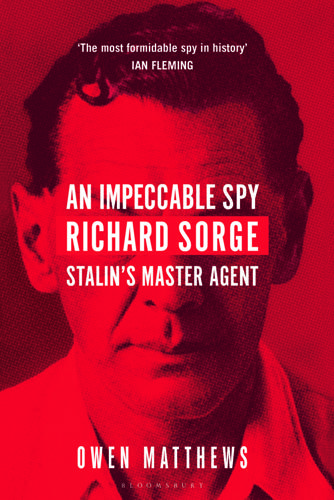
An Impeccable Spy: Richard Sorge, Stalin’s Master Agent
by
Owen Matthews
Published 21 Mar 2019
‘Japan must have commenced important movements (military and political) in preparation for war against Russia, but you have not provided us with any appreciable information … You should utilise all the capacities of Joe, Miki and Otto to the fullest extent.’16 There was no evidence, either from Ozaki’s regular meetings with top policymakers, nor from Miyagi’s network in Japan’s military industrial complex, nor from the German embassy, that Proskurov’s fears of Japan-ese aggression at that moment were in any way justified. Nonetheless the tone was set for the final, ultimately tragic, period of Sorge’s career with the Fourth Department. ‘From then on,’ recalled Clausen, Sorge ‘regularly got telegrams with scoldings and admonitions.’17 Stalin was convinced he knew the truth about Germany and Japan’s intentions.
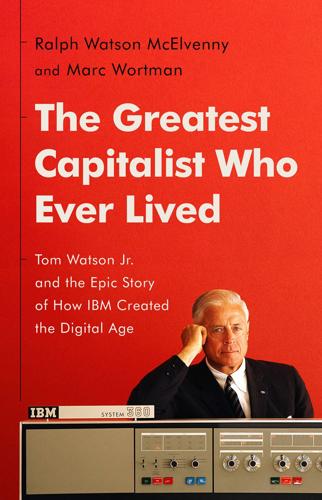
The Greatest Capitalist Who Ever Lived: Tom Watson Jr. And the Epic Story of How IBM Created the Digital Age
by
Ralph Watson McElvenny
and
Marc Wortman
Published 14 Oct 2023
For even moderately sized companies seeking a competitive edge, the technology enabling vastly increased computing speed and storage capacity would swiftly make computers an indispensable business tool.11 If Watson wanted the world to gaze in wonder and awe at the 701 and 702 working away within the “theater” of the IBM showroom, his most significant large-scale computer program by far remained almost entirely hidden behind closed doors. But that secrecy did not hold back internal learning at IBM. The US military-industrial complex proved key to development of the computer industry. “The Cold War,” agreed Watson, “helped IBM make itself the king of the computer business.”12 On September 23, 1949, President Truman revealed to the world that the Soviet Union had exploded its first atomic bomb. That development took place several years sooner than intelligence officials anticipated, abruptly ending the US monopoly on the weapon, rattling strategic planners, and ending Americans’ sense of invulnerability.13 Within six months, the US Air Force determined that the nation needed an early-warning system to defend against the possibility of Soviet air attack.
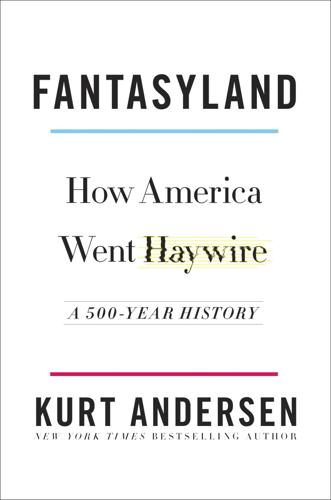
Fantasyland
by
Kurt Andersen
Published 5 Sep 2017
“Bin Laden is the bogeyman they need in this Orwellian, phony system.” He called George W. Bush “the bipartisan imperialist elite’s front man.” He later executive-produced a documentary explaining that the 9/11 attacks were an inside job by the U.S. government. He’s still around, ragging on the military-industrial complex (“sending troops to die in illegal wars”), the horrors of the prison camp at Guantánamo Bay, the Bilderberg Group (“the apex of the…power structure”), Goldman Sachs, the World Bank, the International Monetary Fund, corporate America in general (“Madison Avenue makes us addicts of consumerism”).

Deep Utopia: Life and Meaning in a Solved World
by
Nick Bostrom
Published 26 Mar 2024
For example, a state might initially establish a military and an arms industry as means to the end of protecting the country against foreign invasion. This simple instrumental rationale, however, may eventually intrinsify and become an institutional end in itself. The physical implementation of this may take the form of a military-industrial complex that drives policy and budget to itself, somewhat independently of the degree to which those measures are really needed to stave off foreign foes. This dynamic, in which some agent-like part is created in order to help a greater whole achieve some objective, and where the subagent then gradually develops its own agenda and begins to pursue its own goals even when they no longer serve the original larger objective, is very common.

Aerotropolis
by
John D. Kasarda
and
Greg Lindsay
Published 2 Jan 2009
Reduced to an industrial monoculture, the city was no different in the end from Jacobs’s hometown of Scranton (or Kasarda’s Wilkes-Barre) after the coal veins ran dry (or drowned). Detroit’s future was mortgaged to pay for America’s postwar autopia. Henry Ford and the system he created—mass production, mass markets, and mass consumption by a blue-collar middle class—transformed every city and factory it touched. By the end of the 1950s, however, it wasn’t the military-industrial complex we needed to worry about but the auto-industrial one. The Big Three and the industries they spawned or converged with—oil, steel, mining, finance, insurance, sales, repairs, highways, and the construction of a vast suburbia navigable only by car—were responsible for as much as a third of GDP.
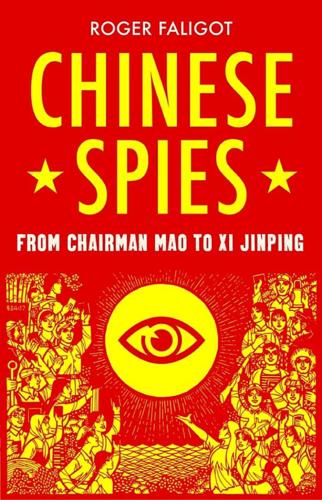
Chinese Spies: From Chairman Mao to Xi Jinping
by
Roger Faligot
Published 30 Jun 2019
In 1979, CITIC’s vice-president, Xiong Xianghui, was the number one in the Chinese intelligence services, while the director-general, Mi Guojun, was both a member of the 2nd Bureau and in charge of a cell of the Chinese general intelligence bureau within the Ministry of Foreign Affairs. “The CITIC was the cover of choice for intelligence activities. It made contact with people, established partnerships and furnished logistical assistance to the PLA and to the companies involved in the military-industrial complex. After Poly Technologies, it became the umbrella group for the arms-dealing China Poly Group, officially its subsidiary. The current CEO of the CITIC, Wang Jun, was recruited from within the Chinese secret services.”17 Poly Technologies was involved in arms sales in association with Saul Eisenberg, a businessman who worked on joint ventures between China and Israel.

Flight of the WASP
by
Michael Gross
“My kids also had a stake” in the family trusts, he said in his interview for this book. “My grandkids won’t have that kind of wealth.”h In 1987, at age forty, Pillsbury took a full-time job earning about $20,000 a year as the development director of the Jobs with Peace Campaign. It targeted the military-industrial complex and sought to redirect spending from war to needs like housing and transportation. It convinced him that solving social problems required political power, so in 1993, he switched gears and enrolled in a midcareer master’s degree program to study public administration for political reform at Harvard’s Kennedy School.

Empire of AI: Dreams and Nightmares in Sam Altman's OpenAI
by
Karen Hao
Published 19 May 2025
In 2018, thousands of Google employees would protest a secret company contract with the Pentagon for its program known as Project Maven to develop AI-powered surveillance drones. The capabilities, employees said, could lay the groundwork for autonomous weapons; the Pentagon, which said this had not been its intention, would move away from that position with the Ukraine war. It became a cynical refrain among AI researchers: sell out to Big Tech or to the military industrial complex, or leave AI research. Between these binary extremes, OpenAI seemed like a third way, corrupted by neither profit nor state power. “It was a beacon of hope,” said Chip Huyen, a machine learning engineer and popular tech blogger observing from the sidelines. Not everyone was impressed.
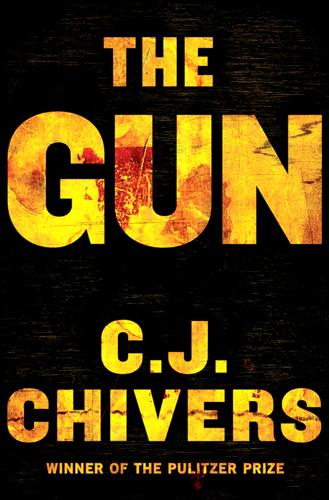
The Gun
by
C. J. Chivers
Published 12 Oct 2010
After the verdict on December 23 he was blindfolded, gagged, and shot.29 The events of 1953 allowed the Kremlin to reconsider its role at the international socialist vanguard. The changes—first in personnel, then policies—were integral to the assault rifle’s spread. Khrushchev became general secretary in the autumn, inheriting both the foreign-policy portfolio and the military-industrial complex. He grasped ways the two could be linked. One early challenge was in institutionalizing security arrangements in the European buffer zone. In World War II, the Soviet military had moved onto foreign territory previously under German occupation and become the region’s premier military power.
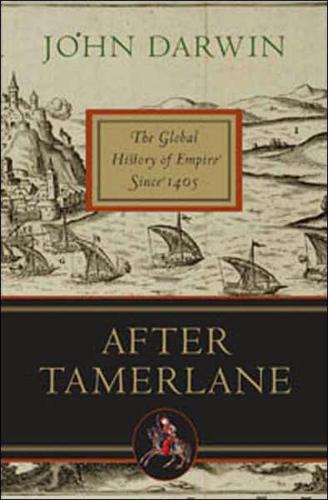
After Tamerlane: The Global History of Empire Since 1405
by
John Darwin
Published 5 Feb 2008
The détente diplomacy of the 1970s acknowledged the permanence of Europe’s divisions: the Helsinki ‘Final Act’ in 1975 was to all intents a European peace treaty by which the European states (including the Soviet Union) bound themselves to accept their existing frontiers. The second was the relative mismatch in the economic strength of the two contestants. Despite the triumphs of its military-industrial complex, the Soviet economy remained smaller and weaker than its American counterpart. Between 1960 and 1975 its share of world exports never rose above 4 per cent.84 America’s share of the world’s manufactured exports was 13 per cent in 1976.85 The free-market economy of which it formed the pivot took the lion’s share of international commerce.
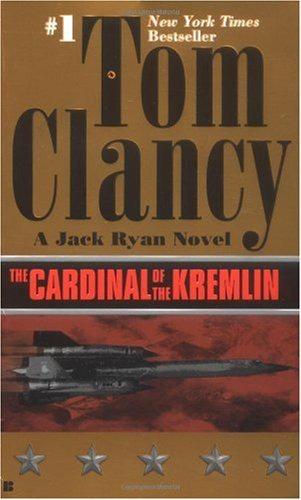
The Cardinal of the Kremlin
by
Tom Clancy
Published 2 Jan 1988
"What about yours?" "Our organs of State security do what they are told," Golovko assured him. Right, Ryan told himself. "In our country, if the President decides that he likes an arms treaty, and he thinks he can get it through the Senate, it doesn't matter what the CIA and Pentagon think-" "But your military-industrial complex-" Golovko cut Jack off. "God, you guys really love to beat on that horse, don't you? Sergey Nikolayevich, you should know better." But Golovko was a military intelligence officer, and might not, Ryan remembered too late. The degree to which America and the Soviet Union misunderstood each other was at one and the same time amusing and supremely dangerous.

Apollo
by
Charles Murray
and
Catherine Bly Cox
Published 1 Jan 1989
As important, von Braun was tied to the Army, and Ike was adamant that the American space program not be run by the military. This former General of the Army and Supreme Commander of the largest military expeditionary force in the history of the world was already harboring fears of the military-industrial complex that he would voice as he left office. Eisenhower found the perfect agency for his purpose in a venerable organization called the National Advisory Committee for Aeronautics, known to its friends as the N.A.C.A. The N.A.C.A. had been around for forty years, quietly going about its business of aeronautical research.

The Achilles Trap: Saddam Hussein, the C.I.A., and the Origins of America's Invasion of Iraq
by
Steve Coll
Published 27 Feb 2024
Jafar suggested the following year that the work commence outside Tuwaitha: “It’s time to start thinking about a weapon, because that takes time.” He said that Khaliq should plan to build a high-explosives package for an implosion bomb. The best experts within Iraq worked in the country’s military industrialization complex, Jafar advised. They would try to create a prototype of a basic Fat Man–inspired device. (In such an “implosion” bomb, symmetrically arrayed conventional explosives compress highly enriched uranium, leading to a detonation.) The project would also require advanced diagnostic testing equipment, which, if imported, might risk getting caught.
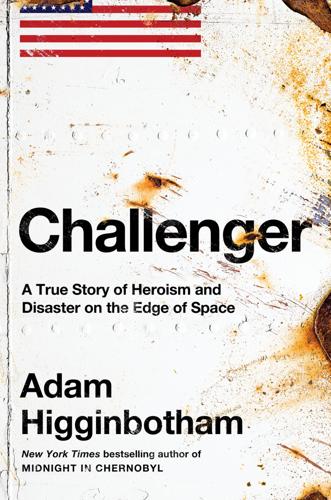
Challenger: A True Story of Heroism and Disaster on the Edge of Space
by
Adam Higginbotham
Published 14 May 2024
Although without water or electricity when the company arrived, the remote site was a perfect place to make and test volatile rocketry: separated from populated areas by miles of barren hinterland—to ensure the safety of the local population in the event of an accident—but close enough to a railhead to provide convenient transportation. Construction on the plant began within sight of Promontory Summit, where the two ends of the nation’s first transcontinental rail link had been joined with a golden spike in the second half of the nineteenth century. An aggressive player in the military-industrial complex that flourished during the hottest years of the Cold War, Thiokol expanded quickly—manufacturing motors for the United States’ first mass-produced intercontinental ballistic missile, the Minuteman. Beginning with a cluster of open-plan buildings so rudimentary that at first power cables dangled from the ceilings in the engineers’ offices, the Thiokol complex eventually sprawled through twenty thousand acres of the Wasatch Mountain foothills, employing more than three thousand people, encompassing its own test range, internal road network, and an airstrip for the company planes.

The Gene: An Intimate History
by
Siddhartha Mukherjee
Published 16 May 2016
McKusick, for one, was convinced that “overdeterminism” in genetics, and its indiscriminate application to human selection, would result in the creation of what he called the “genetic-commercial” complex. “Near the end of his terms of office, President Eisenhower warned against the dangers of the military-industrial complex,” McKusick said. “It is appropriate to warn of a potential hazard of the genetic-commercial complex. The increasing availability of tests for presumed genetic quality or poor quality could lead the commercial sector and the Madison Avenue publicist to bring subtle or not so subtle pressure on couples to make value judgments in the choice of their gametes for reproduction.”

Genius: The Life and Science of Richard Feynman
by
James Gleick
Published 1 Jan 1992
Other people, “people in higher echelons,” made the decisions, he said, prefacing a 1975 talk at Santa Barbara. “I worried about no big decisions. I was always flittering about underneath.” He was hardly an enemy of technology; nor, despite his distaste for the bureaucracy of science, was he an enemy of what was now called the military-industrial complex. He had always refused to attach his name to Caltech’s grant proposals to the federal funding agencies that kept all university physics departments solvent. Still, he would emerge from Lilly’s sensory-deprivation tank, rinse off the Epsom salts in the shower, dress, and drive over to Hughes Aircraft Company, a military contractor, to deliver lectures on physics.

Thinking Without a Banister: Essays in Understanding, 1953-1975
by
Hannah Arendt
Published 6 Mar 2018
For the issues, far from being outdated, let alone resolved, by the enormous changes in our everyday world, have only increased in urgency. This is true for the draft card burning, black power (then called “Negroism”), and mass culture; for the military and political futility of “massacre by bombing”; for the military-industrial complex (a “permanent War Economy” was proposed in January 1944 by Charles E. Wilson, then head of the War Production Board, and the atomic bomb was hailed by Harry Truman as “the greatest achievement of the combined efforts of science, industry, labor and the military in all history”); for the breakdown of democratic processes in the democracies (England and the United States); and it is, of course, true for the cold war, which, however, in its beginning “reflected a genuine horror at Russia’s record in Europe” (George Woodcock) and was not merely the result of big-power politics.
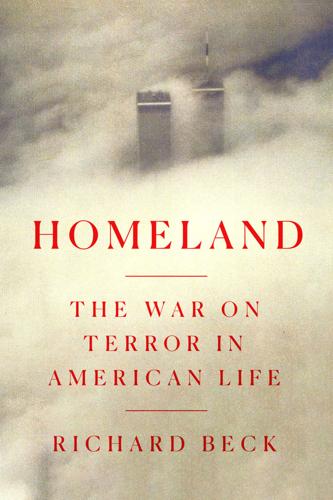
Homeland: The War on Terror in American Life
by
Richard Beck
Published 2 Sep 2024
Kellogg Brown and Root, DynCorp International, and Halliburton are just a few of the many American corporations that raked in huge piles of cash by providing food, transportation, housing, and other logistical services to the military in Iraq, often thanks to the extremely favorable terms stipulated in the no-bid contracts the government handed out like candy to its favored corporate partners. Criticism of these sweetheart deals usually included ominous references to President Eisenhower’s 1961 farewell speech, which warned against the predations of what he famously called the “military-industrial complex.” But without minimizing the scale of the profits defense contractors accumulated as a result of the invasion, and without excusing the corrupt manner in which those profits were achieved, one still finds it hard to make the case that the combined forces of oil lust and military-industrial rapaciousness can explain America’s push toward Iraq.
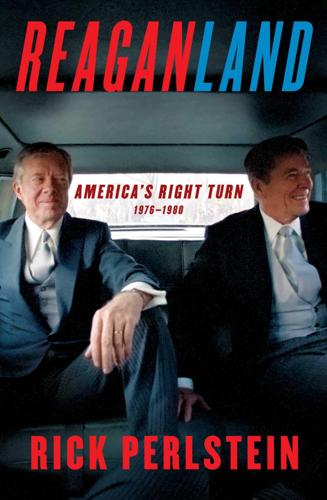
Reaganland: America's Right Turn 1976-1980
by
Rick Perlstein
Published 17 Aug 2020
Meanwhile Florida’s electoral votes doubled, Arizona’s went up by half, and California replaced New York as the nation’s most populous state. Reasons included the spread of air-conditioning, the Sun Belt’s salubrious “business climate”—a term coined by General Electric executives in the 1950s to describe municipalities with low wages and weak unions—and the ballooning military-industrial complex, which appreciated a salubrious business climate, too: between 1950 and 1956, New York lost more than a third of its share of prime Defense Department contracts to the Sun Belt. Sun Belters were prickly about the Northeasterners who behaved as if the world still revolved around them—Texans most of all.
…
He also said Billy Graham, Just As I Am: The Autobiography of Billy Graham (New York: HarperCollins, 2018), 528–29. “he’s acknowledged” BG, October 11, 1976. In 1960 “Texas Baptists Welcome Ford,” LAT, October 11, 1976; also for 1972, 1975, and 1976 quotes. “tremendous subjective impact” Transcript, President Ford Library. military-industrial complex Rick Perlstein, Before the Storm: Barry Goldwater and the Unmaking of the American Consensus (New York: Farrar, Straus & Giroux, 2001), 124. interior was festooned Pool Report, Gerald Ford Library, October 10, 1976. “I am for him” “Gerald Ford Exits First Baptist Church in Dallas, Texas, with Pastor W.

This Changes Everything: Capitalism vs. The Climate
by
Naomi Klein
Published 15 Sep 2014
However, those who received the story about fighting pollution “were even more skeptical about these facts than were hierarchs and individualists in a control group that received no newspaper story.”59 It’s not hard to figure out why. Nuclear is a heavy industrial technology, based on extraction, run in a corporatist manner, with long ties to the military-industrial complex. And as renowned psychiatrist and author Robert Jay Lifton has noted, no technology does more to confirm the notion that man has tamed nature than the ability to split the atom.60 Based on this research, Kahan and others argue, environmentalists should sell climate action by playing up concerns about national security and emphasizing responses such as nuclear power and “geoengineering”—global-scale technological interventions that would attempt to reverse rapid warming by, for instance, blocking a portion of the sun’s rays, or by “fertilizing” the oceans so that they trap more carbon, among other untested, extraordinarily high-risk schemes.
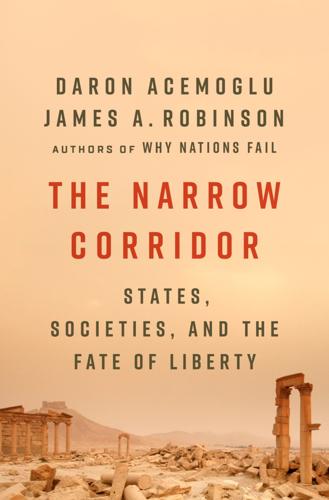
The Narrow Corridor: States, Societies, and the Fate of Liberty
by
Daron Acemoglu
and
James A. Robinson
Published 23 Sep 2019
Eisenhower himself ordered some of the CIA operations against foreign governments, in his farewell address in January 1961 he expressed concerns about the unchecked power of the U.S. military, especially when allied with companies supplying it with arms and equipment. Eisenhower prophesied that we must guard against the acquisition of unwarranted influence, whether sought or unsought, by the military-industrial complex. The potential for the disastrous rise of misplaced power exists and will persist. We must never let the weight of this combination endanger our liberties or democratic processes. We should take nothing for granted. Only an alert and knowledgeable citizenry can compel the proper meshing of the huge industrial and military machinery of defense with our peaceful methods and goals so that security and liberty may prosper together.

Voyage
by
Stephen Baxter
Published 23 May 2011
The similarities — administrative and technical — between that disaster and the Apollo-N incident chilled him. The general press coverage of NASA, once he looked on that with his new perspective, startled him, too. He saw skepticism, anger, contempt, resentment, on the part of the people outside looking in. He remembered how Eisenhower had cautioned against the unwarranted influence of the military-industrial complex — against an expanded space program, in fact — because technocracy was foreign to the individualistic American spirit, and grafting it onto the nation was going to do a lot of harm. Well, Kennedy had accepted that risk. And it seemed to Seger that the country was paying the price. The space program, he saw now, was a prime symptom of all this.

Coastal California
by
Lonely Planet
Military contracts attracted an international elite of engineers, who would later launch California’s high-tech industry. After WWII, many service people settled on the West Coast. Within a decade after the war, California’s population had grown by 40%, almost reaching 13 million. The state’s military-industrial complex continued to prosper during the Cold War, providing jobs in everything from avionics and missile manufacturing to nuclear submarine maintenance. Military spending peaked in the 1980s under ex-California governor and then US president Ronald Reagan, lasting until the end of the Cold War.

Why the West Rules--For Now: The Patterns of History, and What They Reveal About the Future
by
Ian Morris
Published 11 Oct 2010
“Evolutionary theories,” the archaeologists Michael Shanks and Christopher Tilley wrote in the 1980s, “easily slip into ideologies of self-justification or assert the priorities of the West in relation to other cultures whose primary importance is to act as offsets for our contemporary ‘civilization.’” Nor, many critics felt, was this confidence in numbers merely a harmless game Westerners played to make themselves feel good; it was part and parcel of the hubris that had given us carpetbombing, the Vietnam War, and the military-industrial complex. Hey hey, ho ho, LBJ had got to go; and so, too, the professors of ethnocentrism with their arrogance and their mathematics. The sit-ins and name-calling turned an academic debate into a Manichean showdown. To some evolutionists, their critics were morally bankrupt relativists; to some critics, evolutionists were stooges of American imperialism.
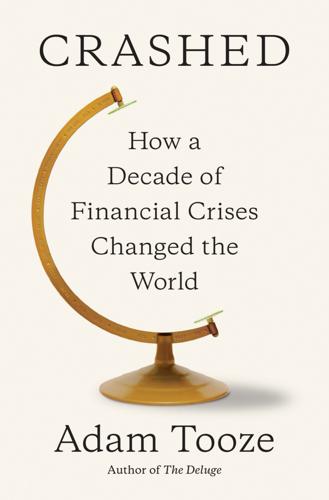
Crashed: How a Decade of Financial Crises Changed the World
by
Adam Tooze
Published 31 Jul 2018
Unlike subordinate parts of America’s global network, like Japan or Germany, for instance, China had a conventional view of national power. It took for granted that national autonomy implied autonomy in security policy. Given China’s booming economy, spending on defense increased with spending on everything else. Already in 1999 the military-industrial complex had been restructured to increase competition. In 2005–2006 the Chinese military formulated a major technological modernization program.41 But this was merely a recognition of how far China lagged behind. The army was oversized and underpowered in technological terms. A society entering into mass affluence as rapidly as China was doing does not offer a congenial habitat for the underpaid profession of soldiering.

The Great Shark Hunt: Strange Tales From a Strange Time
by
Hunter S. Thompson
Published 6 Nov 2003
The idea, then, is to minimize the chance of a second unknown factor -- such as an unpredictable pilot -- that might turn a simple flight-test equation into a scorched crater on the desert and another wave of donations to the "window fund." Civilian test pilots, working on contract for companies like Boeing or Lockheed, are just as carefully screened as their soul brothers in the Air Force. The men who run the "military-industrial complex" are not about to entrust the fruits of their billion-dollar projects to the kind of pilot who might be tempted to zoom a new plane under the Golden Gate Bridge at rush hour. The whole philosophy of research testing is to minimize the risk. Test pilots are sent up with specific instructions.

Coastal California Travel Guide
by
Lonely Planet
Military contracts attracted top-notch engineers and scientists, who later launched California’s high-tech industry. After WWII many servicepeople decided to settle permanently on the West Coast. Within a decade after the war, California’s population had grown by 40%, reaching 13 million. The state’s military-industrial complex continued to prosper during the Cold War era, providing jobs in everything from avionics and missile manufacturing to nuclear-submarine maintenance. Military spending peaked in the 1980s under ex-California governor and then US president Ronald Reagan. The classic film Chinatown (1974) is the fictionalized yet surprisingly realistic account of the brutal early 20th-century water wars that were waged to build Los Angeles.

The 9/11 Wars
by
Jason Burke
Published 1 Sep 2011
Diatribes of extraordinary vitriol, many soaked in a primary anti-Americanism or sophomoric analyses of American imperialism, were directed at President Bush and Blair. Conspiracy theories were rife. In France a book by a Marxist polemicist called Thierry Meyssan which argued that 9/11 was set up by the American ‘military-industrial complex’ was a bestseller. Similarly, in the UK such views were not simply restricted to the 45 per cent of the British Muslims who thought that 9/11 was a conspiracy between the USA and Israel but bled inexorably into the mainstream.21 Even usually relatively sensible newspapers like the centre-left Guardian printed a 2,000-word comment piece by Michael Meacher, a former government environment minister, which suggested that the Bush administration had, at the very least, allowed 9/11 to happen so as to be able to execute a new strategy of global domination formulated by American conservatives in the late 1990s.

The Wars of Afghanistan
by
Peter Tomsen
Published 30 May 2011
Others operated undercover as military and civilian advisers, businessmen, and journalists. Andropov’s closest ally on the Politburo commission was Dmitry Ustinov, who was seventy-one when the commission was created. Ustinov presided over the second most important Soviet power ministry, the Ministry of Defense. He rose to the Politburo through the vast military-industrial complex, not the uniformed services. Soviet military officers viewed their minister as more political than military. Ustinov followed Andropov’s lead in Politburo discussions, even when his generals advocated other courses. Andrey Gromyko, seventy at the time, was third in the Afghan commission’s pecking order.
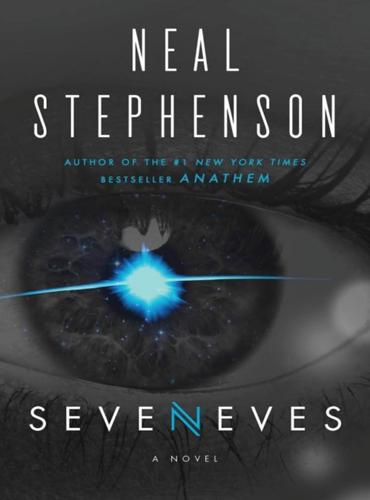
Seveneves
by
Neal Stephenson
Published 19 May 2015
Modern semiconductor technology had found a way to make them very small. So small that they could be destroyed by a single hit from a cosmic ray. This didn’t much matter down on the ground, because the stakes were lower and cosmic rays were mostly blocked by the atmosphere. But electronics that had to work in space were a different matter. The world’s military-industrial complexes had put a lot of money and brainpower into making “rad-hard” electronics, more resistant to cosmic ray strikes. The resulting chips and circuit boards were, by and large, clunkier than the sleek consumer electronics that earthbound customers had come to expect. A lot more expensive too.

Africa: A Biography of the Continent
by
John Reader
Published 5 Nov 1998
Of course, the Anglo-Boer War was confined to South Africa, but its consequences in terms of modern warfare were profound enough to reverberate throughout the continent and, indeed, the world. The Anglo-Boer war was a rehearsal for the First World War and beyond, imposing the primacy of the military-industrial complex upon national economies, demonstrating how a nation's industry and manpower could be mobilized on a huge scale to fight abroad, and refining the tactical horrors of twentieth-century warfare: the machine-gun, barbed wire, trenches, concentration camps… The war was provoked by British attempts to break the Boer stranglehold on development of the gold-mining industry in the Transvaal.

Bourgeois Dignity: Why Economics Can't Explain the Modern World
by
Deirdre N. McCloskey
Published 15 Nov 2011
As the free-trader John Bright declared in 1858, “This excessive love for the ‘balance of power’ [and ‘America’s role as the indispensable nation’] is neither more nor less than a gigantic system of out-door relief for the aristocracy of Great Britain” (and for the Southern military class and the military-industrial complex).17 In other words, ideas for new machines and institutions, inspired by an ethic of liberty and dignity for commoners, not the exploiting of empire or the building of military power, made Europeans rich. Power did not breed plenty.18 The incessant wars of Europe, eventuating in the grand festival of power 1939–1945 with sixty-eight million dead, had modest civilian spinoffs yet occasioned massive diversion of resources from fruitful use.
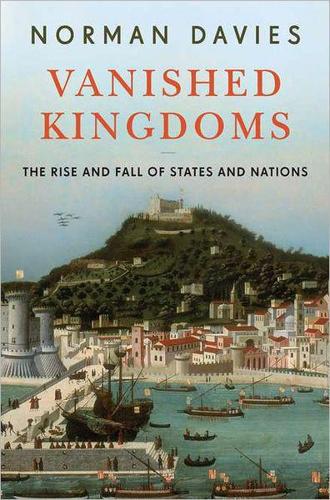
Vanished Kingdoms: The Rise and Fall of States and Nations
by
Norman Davies
Published 30 Sep 2009
Its possessions stretched from Aachen to Tilsit, from the Danish frontier to Switzerland. It had many heartlands: the twin industrial heartlands of the Ruhr and of Silesia, the state heartland in Brandenburg and the historical heartland in a province that had now become ‘East Prussia’. It was Europe’s leading industrial power, and its huge military-industrial complex explains the basis of its leading role in the German Empire. Russia, meanwhile, having acquired the largest slice of Poland-Lithuania and most of the Ottoman Empire’s Black Sea lands, had become Prussia’s immediate neighbour. It was by far the largest state in the world, possessing a larger population than all the German states together, untold natural riches and gargantuan ambitions.
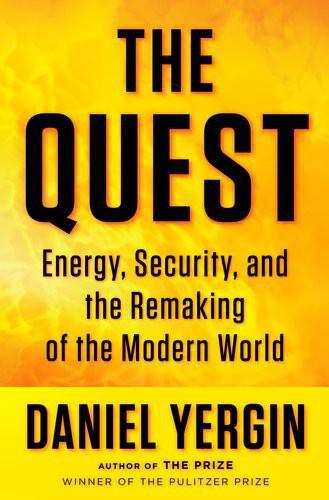
The Quest: Energy, Security, and the Remaking of the Modern World
by
Daniel Yergin
Published 14 May 2011
The Reagan administration became alarmed at the prospect of a much larger East-West gas trade. It had launched a major arms buildup to counter Soviet military expansion; the last thing the administration wanted was additional hard currency earnings from natural gas financing the Soviet military-industrial complex. It also feared that greater reliance on Soviet gas would create vulnerable dependence that the Soviets could exploit to pry apart the Western alliance and that—in a time of crisis—would give the Soviets crucial leverage. The American administration warned that the Soviet Union could use dependence on its natural gas to “blackmail” the Europeans by threatening to turn off the heat and stoves in Munich.11 The Reagan administration struck back at the proposed new pipeline.

Vanished Kingdoms: The History of Half-Forgotten Europe
by
Norman Davies
Published 27 Sep 2011
Its possessions stretched from Aachen to Tilsit, from the Danish frontier to Switzerland. It had many heartlands: the twin industrial heartlands of the Ruhr and of Silesia, the state heartland in Brandenburg and the historical heartland in a province that had now become ‘East Prussia’. It was Europe’s leading industrial power, and its huge military-industrial complex explains the basis of its leading role in the German Empire. Russia, meanwhile, having acquired the largest slice of Poland-Lithuania and most of the Ottoman Empire’s Black Sea lands, had become Prussia’s immediate neighbour. It was by far the largest state in the world, possessing a larger population than all the German states together, untold natural riches and gargantuan ambitions.

American Prometheus: The Triumph and Tragedy of J. Robert Oppenheimer
by
Kai Bird
and
Martin J. Sherwin
Published 18 Dec 2007
And World War II had only accelerated this trend. At Los Alamos, of course, Oppenheimer had been central to the process. But afterwards, he had taken an alternative course. In Princeton, he was not part of any weapons laboratory. Increasingly alarmed by the development of what President Eisenhower would someday call the “military-industrial complex,” Oppenheimer had tried to use his celebrity status to question the scientific community’s increasing dependency on the military. In 1954, he lost. As the science historian Patrick McGrath later observed, “Scientists and administrators such as Edward Teller, Lewis Strauss, and Ernest Lawrence, with their fullthroated militarism and anti-communism, pushed American scientists and their institutions toward a nearly complete and subservient devotion to American military interests.”

In Europe
by
Geert Mak
Published 15 Sep 2004
In the eyes of many Europeans, the East was giving flower to an attractive and tempting alternative: it was energetic, modern, socially aware and united. Even the Nazis were fascinated by what was going on in Russia: the four-year plan launched by Göring in 1936, with which he hoped to create the most powerful military-industrial complex in Europe, was clearly inspired by the Soviet example. In winter 1932, the German political scene was caught in a deadlock. The new chancellor, General Kurt von Schleicher, tried to forge a national coalition from all the parties represented in the Reichstag. On the right he hoped to draw the most reasonable among the Nazis into his cabinet, and on the left the most modern social democrats.
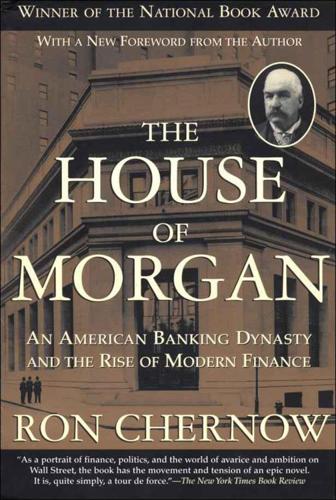
The House of Morgan: An American Banking Dynasty and the Rise of Modern Finance
by
Ron Chernow
Published 1 Jan 1990
The House of Morgan and Great Britain made loans to Winchester Repeating Arms for new gun capacity and advanced money to many other firms to fulfill their contracts. By war’s end, the United States had an arms-making capacity that eclipsed that of England and France combined. For his efforts, Stettinius would bear the unlovely tag of father of the military industrial complex. Even General Erich von Ludendorff was heard to say that Stettinius was worth an army corps to the Allies.18 He became a czar of American industry. Boris Bakhmeteff, head of a Russian Industrial Mission to the United States, recalled a meeting at which Stettinius assembled the heads of some of America’s largest companies and “gave them hell in words that I was ashamed of.”19 Because Stettinius was the linchpin of the Allied supply operation, his safety became a high priority, especially after Erich von Falkenhayn, chief of Germany’s general staff, decided to achieve victory by cutting off the Allied supply line.
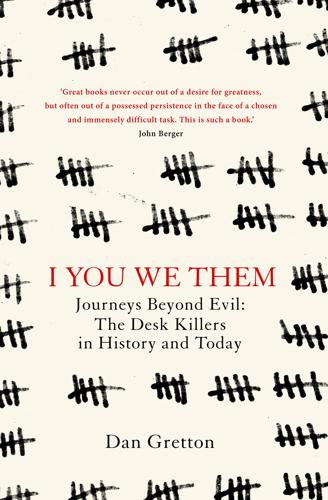
I You We Them
by
Dan Gretton
However, Lanzmann told me, when we met some years ago, that they’d come across the Saurer lorry which appears in Shoah quite by chance. He’d been returning with his crew from filming in Switzerland one day, when they noticed the Saurer lorry driving behind them, and so they began to film it. Subsequently that footage was intercut with the Ruhr footage sequence to link it conceptually to Germany’s military-industrial complex. There was little information available on the company when I started my research in the mid-1990s. I telephoned the German Chamber of Commerce but drew a blank, I pursued business libraries and transport magazines, but found nothing. Finally, via a journalist at the Financial Times, I discovered that Saurer was in fact a Swiss textiles manufacturing business based at Arbon.
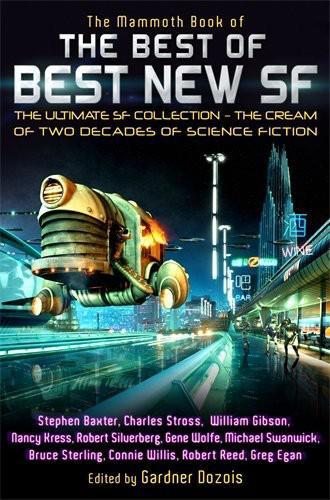
The Best of Best New SF
by
Gardner R. Dozois
Published 1 Jan 2005
A camera winks at him from atop a street light; he waves, wondering idly if it’s the KGB or the traffic police. He is waiting for directions to the party, which should arrive within the next half an hour, and this cold war retread is bumming him out. “Look, I don’t deal with the G-men. I hate the military industrial complex. They’re zero-sum cannibals.” A thought occurs to him. “If survival is what you’re after, I could post your state vector to Eternity: then nobody could delete you – ” “Nyet!” The artificial intelligence sounds as alarmed as it’s possible to sound over a GSM link. “Am not open source!” “We have nothing to talk about, then.”

Nixonland: The Rise of a President and the Fracturing of America
by
Rick Perlstein
Published 1 Jan 2008
Chuck Percy wondered why we had to spend “$66 million a day trying to ‘save’ the 16 million people of South Vietnam while leaving the plight of the 20 million urban poor in our own country unresolved.” And Kentucky’s Republican senator Thruston Morton, the former RNC chair, said the president had been “brainwashed by the military-industrial complex” into believing in the possibility of a military victory. He told a group of businessmen, “I am convinced that unless we gradually and, if necessary, unilaterally reduce the scope of our military involvement, we may well destroy the very society we sought to save.” Businessmen were open to the argument.
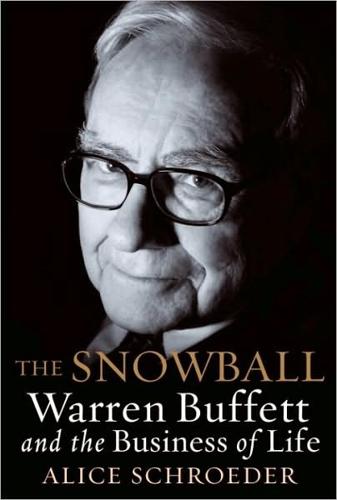
The Snowball: Warren Buffett and the Business of Life
by
Alice Schroeder
Published 1 Sep 2008
He never labored in the trenches stuffing envelopes; volunteering directly for causes, no matter how urgent and important, would consume time he felt was more efficiently spent thinking of ideas and making more money to write bigger checks. Many people in the 1960s felt a burning desire to tear down the Establishment that had created the war and operated the “military-industrial complex”—a desire to avoid “selling out” to “the Man.” For some, therefore, social consciousness clashed with the need to make a living. Warren, however, saw himself as working for his partners, not for “The Man,” and as someone whose business acumen and money helped the civil rights and antiwar causes.
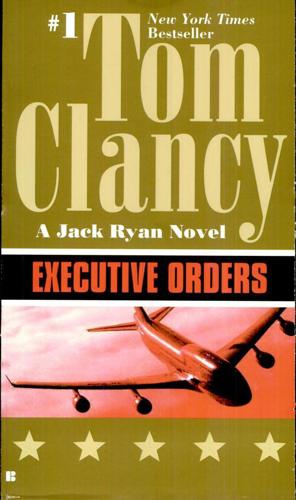
Executive Orders
by
Tom Clancy
Published 2 Jan 1996
The FBI subjected the whole top floor of the State Department to lie-detector tests, he told them. It was something they'd heard about but not yet confirmed. This would count as confirmation. But more disturbingly, look at the policies we're seeing now. Build up defense under this Bretano guy-a guy who's grown up within the military-industrial complex. He says he wants to eliminate all the safeguards within the procurement system, wants to slash congressional oversight. And George Winston, what does he want to do? Wreck the tax system, make it more regressive, do away with capital-gains entirely-and why? To lay the country's whole tax burden on the middle and working classes and give the big shots a free ride, that's why.

Europe: A History
by
Norman Davies
Published 1 Jan 1996
Absolute priority was given to heavy industry—steel, coal, power, and chemicals. Quantity reigned supreme over quality. Falsified statistics became the object of an official cult whose central temple stood in the Permanent Exhibition of Economic Achievement in Moscow. Rearmament was not announced, though the military-industrial complex was evidently the chief beneficiary of the changes. A separate and secret military-industrial sector was supplied with its own favoured factories, personnel, and budget. (The very existence of that separate budget was denied until 1989.) From 1932 onwards the Red Army was able to invite its German partners to participate in training and manoeuvres using the most modern equipment, including tanks, war-planes, and parachute troops.

USA Travel Guide
by
Lonely, Planet
Fittingly set against a backdrop of grain elevators, the rather regal Eisenhower Center (www.eisenhower.archives.gov; 200 SE 4th St; museum adult/child $8/1, house $2; 8am-5:45pm summer, 9am-4:45pm rest of year) includes Ike’s boyhood home, a museum and library, and his and Mamie’s graves. Displays cover the Eisenhower presidential era (1953–61) and his role as allied commander in WWII. However, his ability to forge agreement between the squabbling allies is not fully covered. A highlight is the original text of his speech warning about the military-industrial complex. The Brookville Hotel (www.brookvillehotel.com; 105 E Lafayette; meals $15; 11am-2pm & 4-7:30pm Wed-Sun) has been serving fried chicken since Ike graduated from West Point (1915). Cream-style corn, fresh biscuits and much more come with every meal. LUCAS ‘Outsider art,’ meaning works created outside the bounds of traditional culture, has blossomed in tiny Lucas.